ORACLE RED BULL

























Showcase your values, products and services to your partners and customers at PROCUREMENT & SUPPLYCHAIN LIVE LONDON 2022.
Brought to you by BizClik Media Group PROCUREMENT & SUPPLYCHAIN LIVE LONDON, the hybrid event held between 12th-13th October is broadcast live to the world and incorporates two zone areas of SupplyChain LIVE plus Procurement LIVE in to one event.

With a comprehensive content programme featuring senior industry leaders and expert analysts, this is an opportunity to put yourself and your brand in front of key industry decision makers.

From keynote addresses to lively roundtables, fireside discussions to topical presentations, Q&A sessions to 1-2-1 networking, the 2-day hybrid show is an essential deep dive into issues impacting the future of each industry today.

Global giants and innovative startups will all find the perfect platform with direct access to an engaged and active audience. You can’t afford to miss this opportunity.
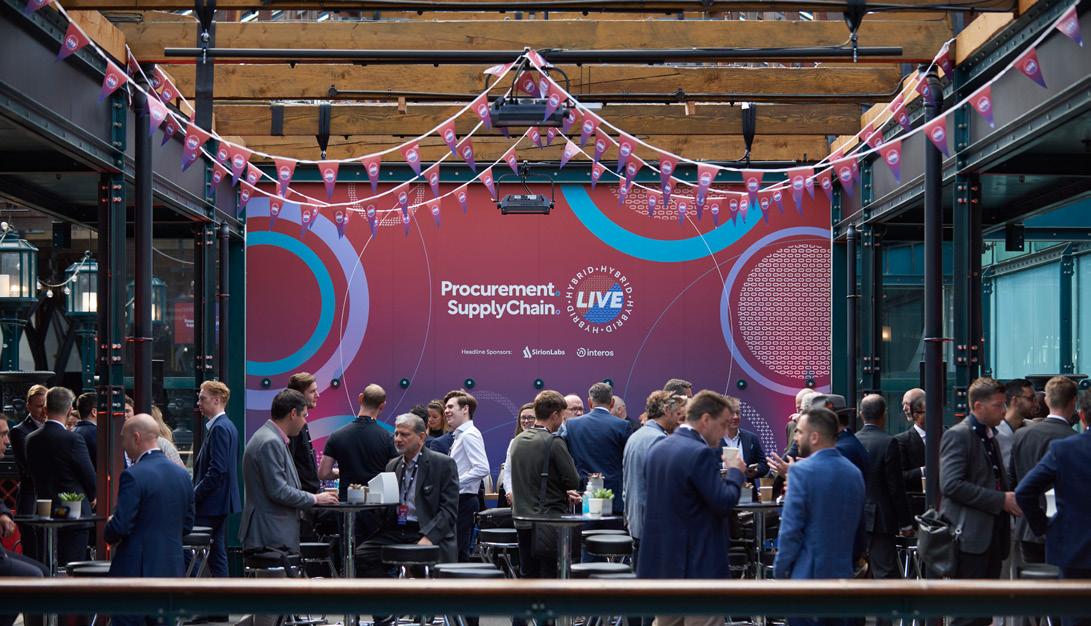

CREATIVE TEAM
HATHAWAY
DIGITAL
EASTERFORD HARDMANPROJECT
SADR MALTBY VENTURO WESTGATE JAMES
WESTGATE JAMES

Digital sustainability is finally high on the business agenda, after years of tech
used to drive profit and efficiency
is how
maintain industry
companies all over the world have committed to various sustainability initiatives in recent years. Sadly, though, as reported by Oracle, 94% of people lack the belief that society has made enough progress when it comes to sustainability and social issues.
43% of businesses share faith in their power to enact more meaningful changes when it comes to both sustainability and social factors and, as such, think that now is the time for them to take decisive action – especially if they want to not only support the fight against climate change while also remaining competitive.
Consumer priorities are undoubtedly changing, and, if the tech industry wants to reflect this shift, it needs to utilise technology for good and put its executives at the forefront of this strategy.
In this issue, we look into this very topic, showcasing the importance of digital sustainability while learning how key players in the industry are leading the way with climate conscious and tech-driven policies.

priorities are undoubtedly
and, if the tech industry wants to reflect this shift, it needs to utilise technology for good and put its executives at the forefront of
strategy.



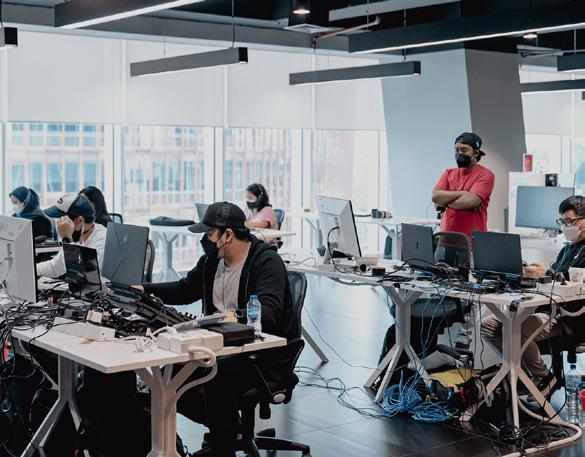





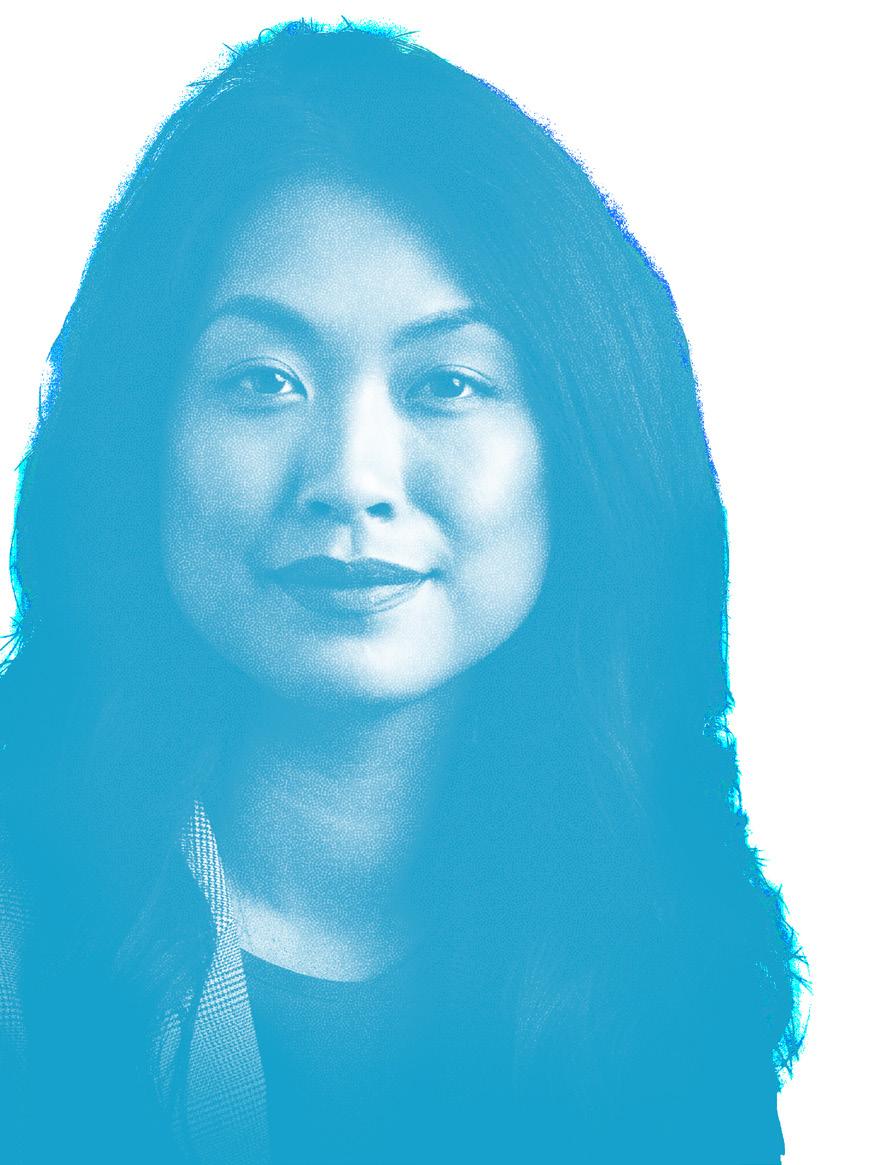
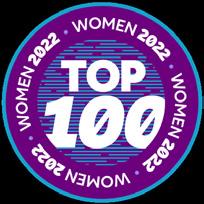
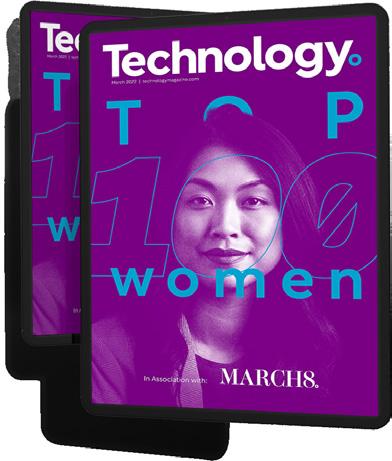
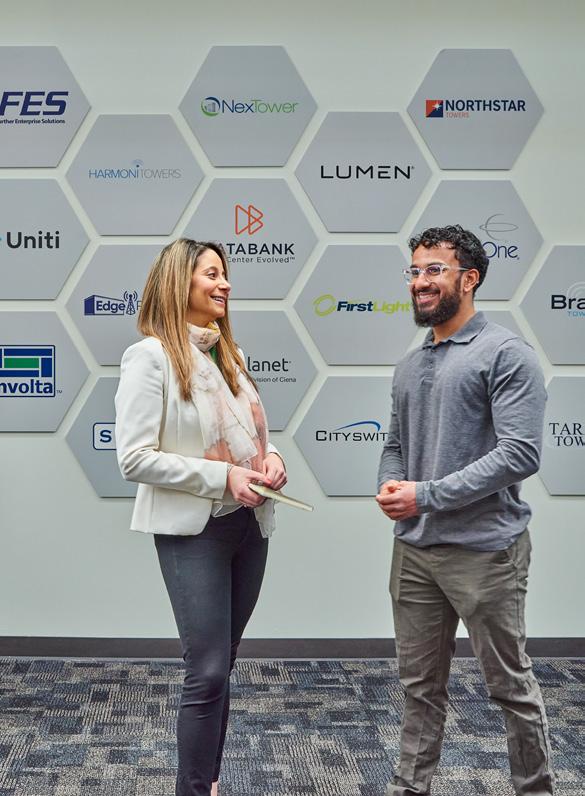


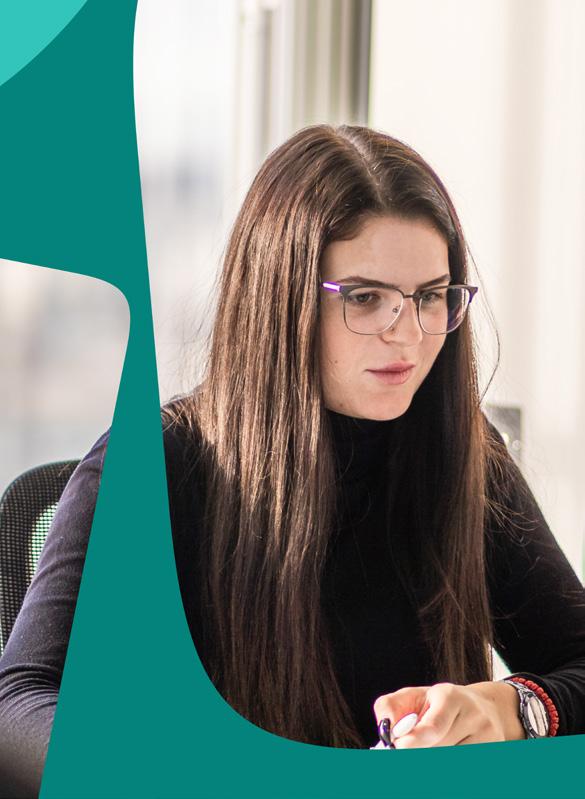

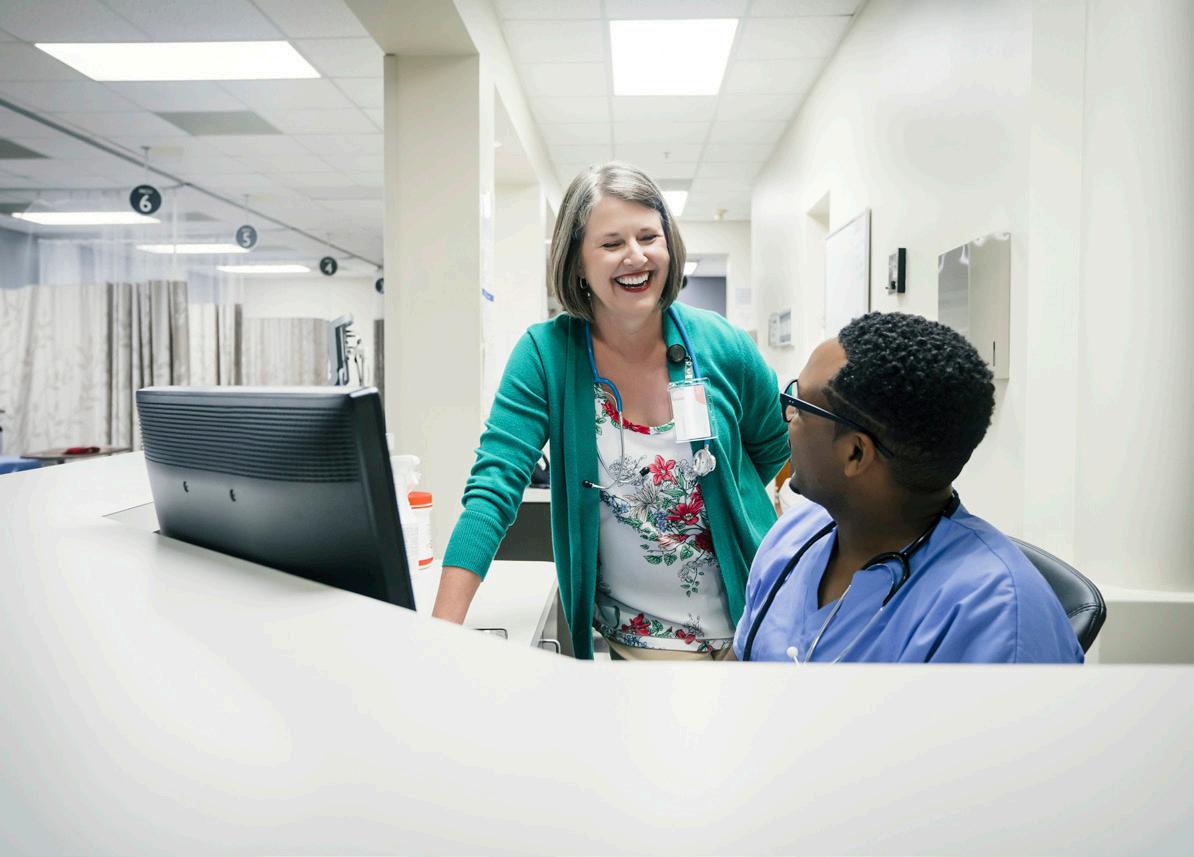














Showcase your values, products and services to your partners and customers at SUSTAINABILITY


LIVE LONDON 2022.
Brought to you by BizClik, SUSTAINABILITY
LIVE LONDON, the hybrid event held between 7th-8th September is broadcast live to the world and incorporates three zone areas of Sustainability LIVE, B-Corp LIVE plus March8 LIVE in to one event.



With a comprehensive content programme featuring senior industry leaders and expert analysts, this is an opportunity to put yourself and your brand in front of key industry decision makers.
From keynote addresses
to lively roundtables, fireside discussions to topical presentations, Q&A sessions to 1-21 networking, the 2-day hybrid show is an essential deep dive into issues impacting the future of each industry today.

Global giants and innovative startups will all find the perfect platform with direct access to an engaged and active audience. You can’t afford to miss this opportunity.
you on:
Get tickets
Sponsor opportunities


With major developments in new augmented reality (AR) technology, we will soon be able to interact with the 3D digital world via head-mounted devices (HMD). Ericsson’s EPHAS team have merged AR, 5G and geo-tracking technologies to create a new, democratised platform for immersive AR storytelling experiences.


“To be awarded this year with the best fixed network award was a great recognition for the team”
Fixed Network,
and machine learning technologies are going to be critical for cybersecurity in the future. The noise is just tremendous”

Foust
Chief Information Security Officer,

going to be something that slowly remoulds the entire educational environment through technology and AI in the EdTech space”
Andreu
Information Security Officer,
of organisations have improved their efficiency by introducing IoT technology.
of retailers agree that the benefits of implementing IoT outweigh the risk.
The Football Association partnered with Google Cloud to help England’s Lionesses use technology to prepare for the EURO final

Leo-Geert van den Berg
One year after making its Protein Structure Database (AlphaFold DB) freely available to the world, AlphaFold has released its predictions for the shape of all proteins known to science.
In partnership with EMBL’s European Bioinformatics Institute (EMBL-EBI), AlphaFold expects its database to grow from 1mn to over 200mn structures as research continues.
This advancement in artificial intelligence (AI) will transform scientific knowledge on a global level. As researchers continue using the AlphaFold DB to gain fresh insights into proteins, our knowledge of bacteria, plant and animal structures will increase – as will our understanding of how to overcome important global issues, such as sustainability and disease.
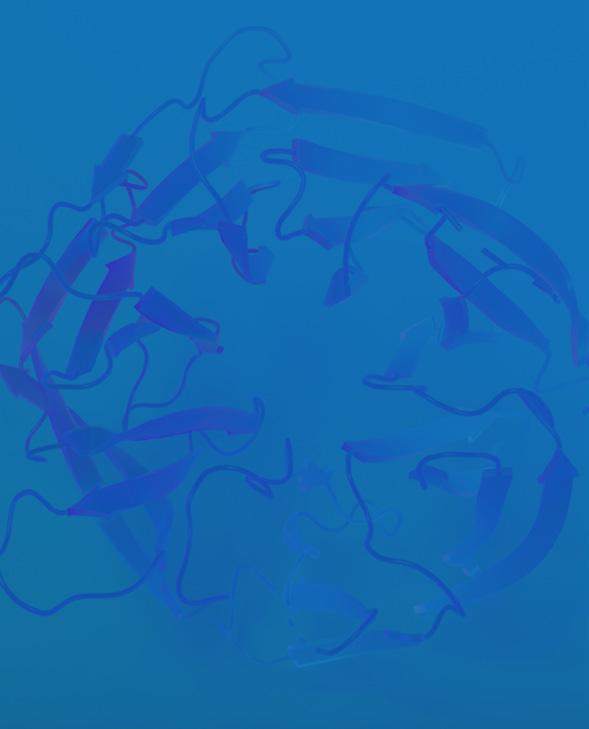
Already, more than 500,000 researchers have made use of the AlphaFold DB to begin tackling global issues. From plastic pollution to antibiotic resistance, protecting honey bees to looking deeper into the origins of life itself, the possibilities of AlphaFold DB’s uses are endless.
BYD
After being written off by EV giant Tesla, BYD dethroned them as the world’s top seller of electric cars earlier this year. BYD has little brand recognition outside China, despite selling some 641,000 vehicles in the first half of 2022.
APPLE
Apple reported higherthan-expected profit and sales, with demand for iPhones holding steady. Sales and profit for the quarter were US$83bn and US$1.20 a share, according to Apple, surpassing Wall Street expectations.
META
Meta, Facebook’s parent company, has reported a loss of US$2.8bn on Reality Labs, its metaverse project. The metaverse arm has now missed on profits for the second quarter in a row.
ALPHABET
Alphabet reported weakerthan-expected earnings and revenue for the second quarter. Revenue growth in the quarter slowed to 13%, a drop from 62% a year earlier, when the company was benefitting from a rise in consumer spending amid the post-pandemic reopening of society.
W I N N E R S L O S E R S
Today, we take realistic images and cinematic settings in gaming for granted, but not long ago, the dramatic progression of video game graphics seemed a world away. Since the 1970s, video games have developed considerably in response to increasing demands for more lifelike gaming experiences. Ongoing developments rely on gaming companies continuing to invest in disruptive technologies.


According to the National Museum of Play, Atari should be credited as the first company to make home-gameplay popular. However, Atari 2600’s graphics were simplistic and without texture, making home consoles less attractive than arcade games for the emerging gaming generation. Game-makers recognised that graphics needed major improvement.


First video game manufactured William Higinbotham’s Tennis for Two is considered the first video game made for entertainment. On display at an annual laboratory exhibition in Long Island, the 2D game was immediately popular with visitors. It wasn’t until the 1970s, however, that the concept was adopted to inspire iconic arcade games like Pong.
By connecting sprites to form a Mario character with 8-bit graphics, Nintendo transformed homegameplay. Over the next decade, Nintendo used 16-bit, 32-bit and 64-bit developments – and a new technique called Mode 7 – to craft more realistic 3D objects for the rising interest in more graphically accurate platform games.

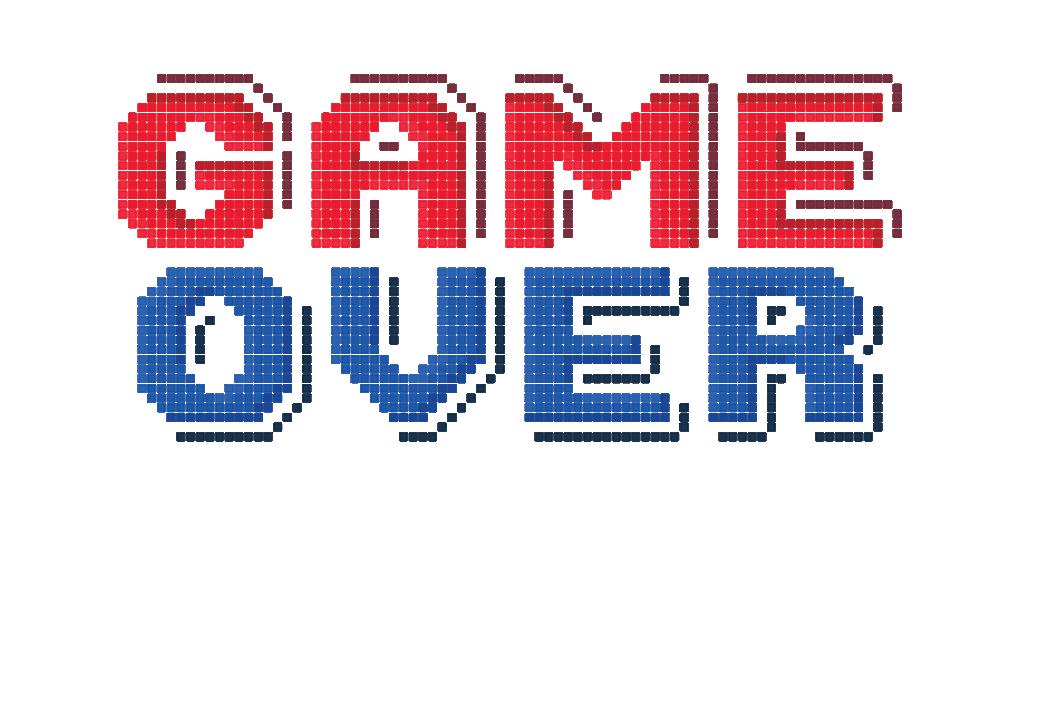


2022
Following the release of NVIDIA’s longawaited ETX 30 series graphics cards in 2020, a recent Jon Peddie Research report stated the market has increased massively in the past year. With higher consumer demand than ever before, huge tech companies like Intel have entered the competition to produce next-gen graphics cards.
First GPU released worldwide NVIDIA (still a leading graphics card manufacturer) released the GeForce 256 GPU (graphics processing unit) shortly before the turn of the century. Since, NVIDIA has rivalled titans ATI and AMD in its mission to produce the most impressive graphics card for consumers, from tech companies to car manufacturers to gamers themselves.
CEO of Esper Bionics, Dima Gazda, explains how his company is set to transform people’s lives with his pioneering prosthetic technology
With a focus on mechatronics, artificial intelligence (AI) and IoT, Esper Bionics is a pioneering company in the engineering space. Leading this team of pioneers is Founder and CEO Dima Gazda, who explains how involved he is in many aspects of the company while it’s in its early stages.
“However, thanks to our great team, I can dedicate a lot of my time to strategy and planning, only engaging in the hardest tasks when it comes to execution,” he says.
Esper Bionics is an augmentation start-up, currently developing robotic limb prostheses and controllers for people who have lost their hands. The prosthetic has moveable fingers, is 3x faster in control, is light and safe, and also
Weight of prosthetic hand
has five different sizes, while being natural in shape and moving in a similar fashion to an arm.
“We believe that the prosthetics industry will become a birthplace of technologies that will give people extra abilities, eliminate diseases, and help billions of humans live longer and more fulfilling lives in a diverse world. That’s why, currently, we are focusing our efforts on this industry. We have started with developing robotic limb prostheses and controllers for people who have lost their hands,” comments Gazda.
“At Esper, we are giving people back their self-confidence, functionality, hope, and opportunities,” he adds.
Esper believes that human capacity and abilities are underestimated. The company aims to unleash these abilities by building technologies that can eliminate diseases, give humans extra abilities, and, ultimately, fulfil and prolong the lives of billions of people around the globe.
This mission is founded on the knowledge that the prosthetics industry is well and truly in need of a major upgrade, as Gazda explains: “The majority of prostheses that amputees use today are purely cosmetic with no functionality whatsoever. Even those more
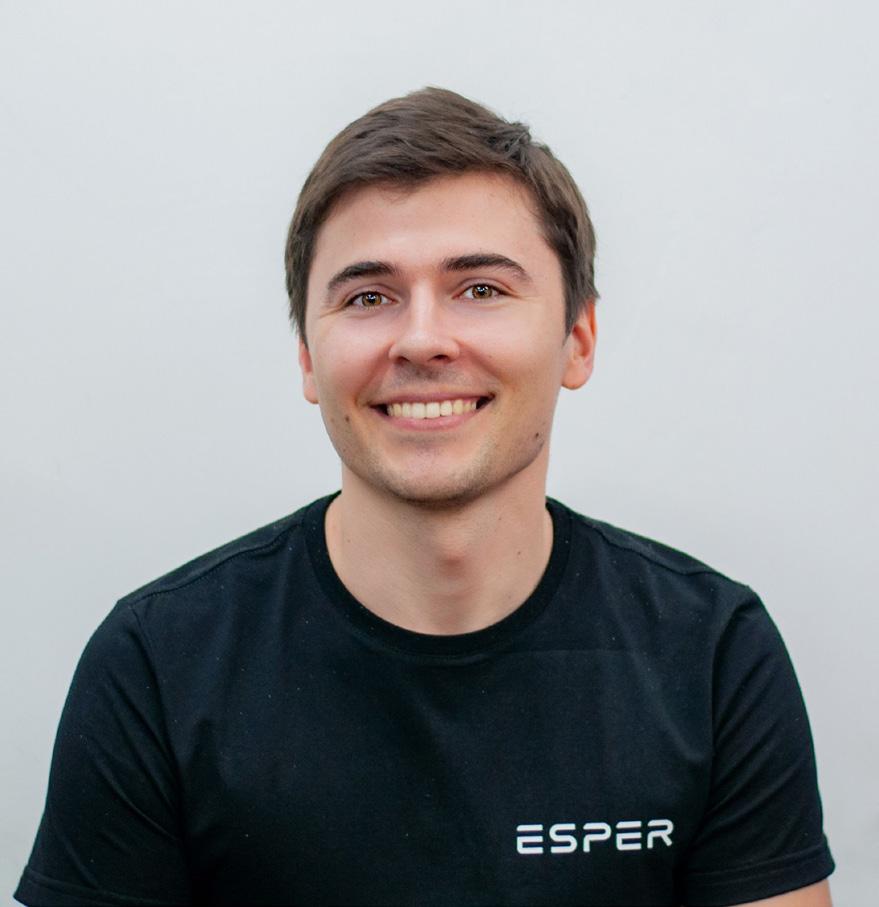
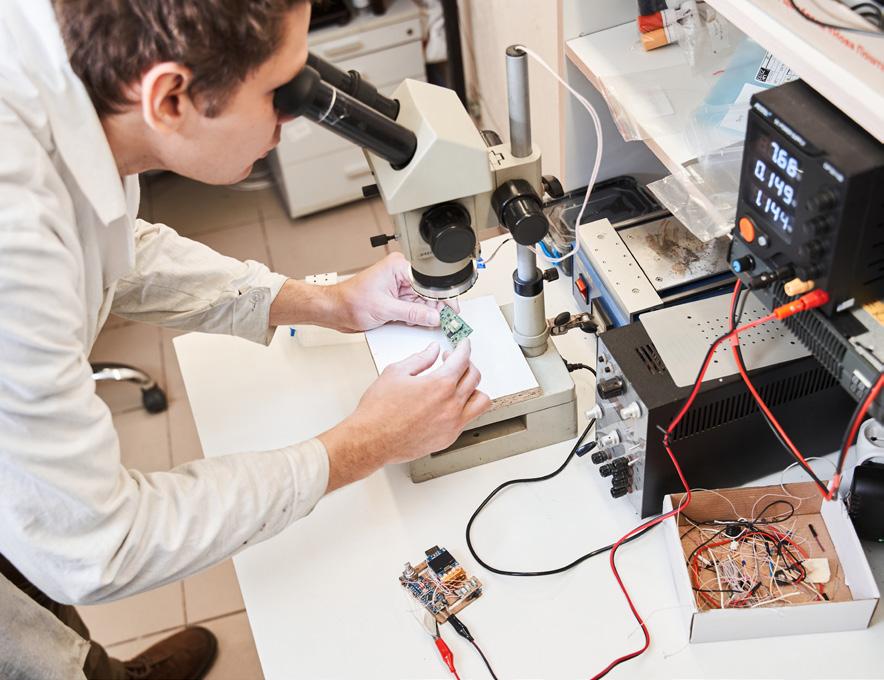
“At Esper, we are giving people back their selfconfidence, functionality, hope, and opportunities”
advanced versions that allow the performance of the simplest tasks are very limited in their abilities.”
“We at Esper have created the hand prosthesis Esper Hand that not only allows amputees to perform most everyday tasks — from cutting an apple to applying makeup — but can be customised to the individual needs of the user, predict the user’s behaviour and move intuitively. The more you use it, the better at understanding your intentions it gets. That’s a big step forward,” he enthuses.
Gazda believes that his company is truly unique as it is the “only company focused on the ‘brain’ of the prosthesis, its improvement over time, and its development alongside users. Imagine if your hand could upgrade over time to match your personality, tastes, wardrobe, skillset, and career.”
The Esper Hand is much more functional, with up to 3x faster control than other hand prostheses available on the market.
“It is also beautifully designed after a human hand. In June 2022, the hand won the Best of the Best Award 2022 in Product Design from Red Dot, one of the biggest design competitions in the world,” notes Gazda.
Currently, Esper Bionics is focused primarily on the US hand prostheses market, and its goal is to make Esper Hand the most popular hand prosthesis in the US. Once it has achieved this goal, the company plans to expand into the EU and several other markets, develop prostheses for other parts of the arm, partner with other prostheses
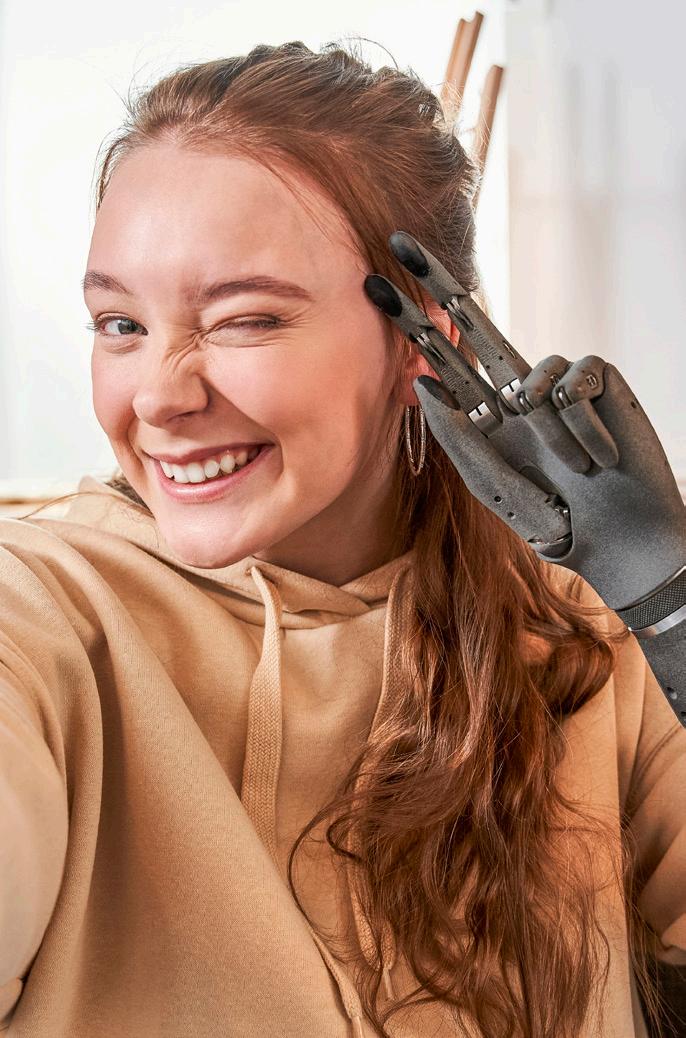
vendors to enhance their devices and cooperate with the developers of electronic implants.
The company has three debut
products: The Esper Hand, a bionic self-learning hand prosthesis; Esper Control, a non-invasive wearable brain-computer interface; and Esper Platform, a cloud-based software solution to individualise the control of wearables.
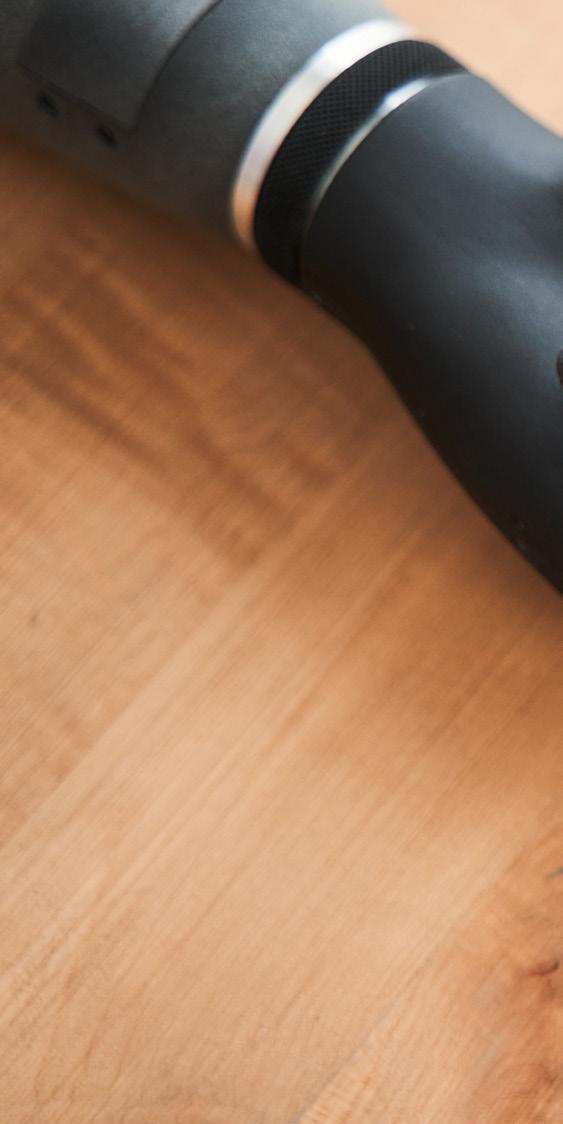


Vivek Daga leads NTT Ltd.’s UK & Ireland business. In this role, he is accountable for business strategy design and implementation, client relationships, the partner ecosystem, talent management, sales, marketing, delivery and operations. His focus is on driving outcomes that matter to NTT’s clients, colleagues, and partners.

» It is a rare occurrence when the combined expertise of 50,000 people and over 30 companies are brought together to form a US$10bn global enterprise and business of the future.
85% of the Fortune Global 500 and 79% of the Fortune Global 100 companies are our clients. We are rated as the leader in Gartner’s Magic Quadrant for Network Services.
NTT Ltd. helps clients accelerate and deliver digital transformation – as well as modern customer and employee experiences – through its secureby-design assets, IP, platforms and services that enable modernisation,
digitalisation and innovation. Our purpose is to enable and accelerate the connected future for businesses, communities, and the planet. Sustainable development is central to NTT’s purpose of enabling the connected future. NTT Ltd. therefore supports the UN’s Sustainable Development Goals and is proud to be the Business Avenger for Goal #11, which is ‘Sustainable Cities and Communities’.
Additionally, NTT Ltd. is part of the global NTT family, which is a US$112bn corporation, with 320,000 people around the world.

»
I am intrigued by the application of AR/VR/mixed reality technologies and their potential across both consumer and enterprise domains. I have tried different headsets over time, from cardboard to Oculus variants. I plan to track the evolution of this technology, the experiences it creates and the problems it solves.
»
Rather than call out a single highlight, I’d like to think that I’ve managed to reinvent myself over the course of my career by embracing change, taking on new challenges and being a lifelong student.
“I’D LIKE TO THINK THAT I’VE MANAGED TO REINVENT MYSELF OVER THE COURSE OF MY CAREER BY EMBRACING CHANGE, TAKING ON NEW CHALLENGES AND BEING A LIFELONG STUDENT.”

» Firstly, I must say it’s been brilliant coming into an environment where people are super committed and hard-working, as well as caring and full of humour. A highlight in my current role has been the opportunity to shape and drive the transformation of the NTT Ltd. UK & Ireland business in the past year, building a more agile and ‘match-fit’ business.
» My personal and leadership approach is to have a razorsharp focus on building strategic relevance and advocacy with clients, colleagues, and partners. Trust and relevance are key parts of any equation of success, and advocacy is gained by delivering outcomes. That, of course, is easier said than done and needs strong and sustained internal alignment and collaboration across all parts of the organisation. That shapes how I think of my role, how I strive to lead and how I encourage others to lead. In my view, leadership at its core is not about the leader. It’s about how effective the leader is in creating
conditions that enable success for others. My focus is on creating an environment in which individuals and teams can collaborate and thrive, create tangible impact and find fulfilment in what they do.
»
It is a super exciting time to lead a platform, IP and asset rich business and drive the acceleration of our clients’ digital transformation and modernisation imperatives. We recently announced that NTT DATA and NTT Ltd. will combine their IT Services organisations
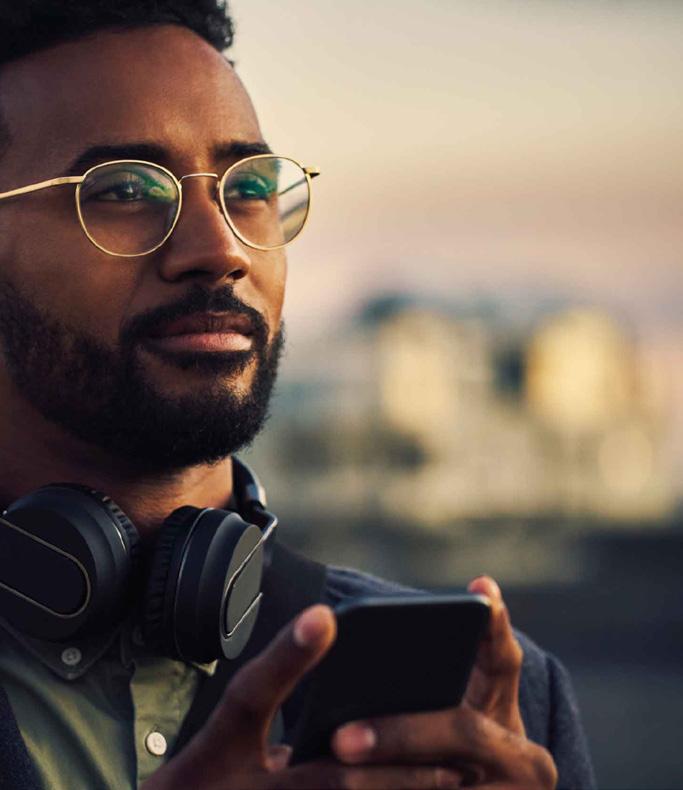
outside Japan into a new operating company. NTT DATA is combining its system integration capabilities in vertical industry expertise, digital consulting, application development, and managed services capabilities with NTT Ltd.'s 'Edge to Cloud' sservice operation capabilities. This will start mainly in the field of data centres, networks and managed services – combining the power to connect. By developing this central service portfolio, one that supports digital transformation, NTT is able to respond to our clients’ increasingly complex and diverse needs on a global level.
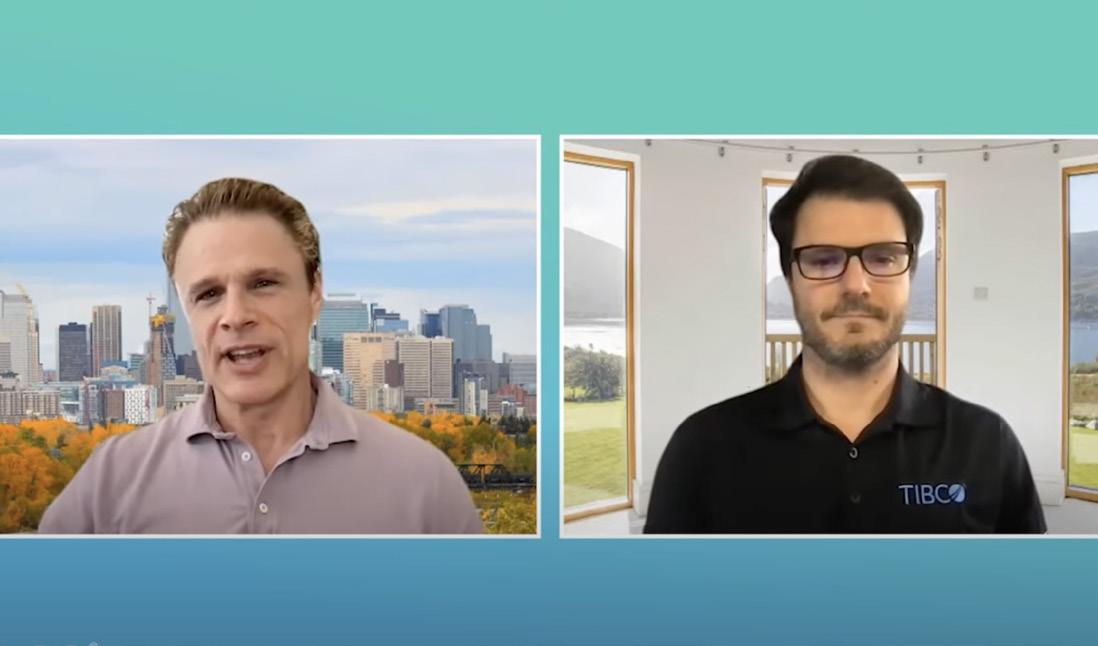
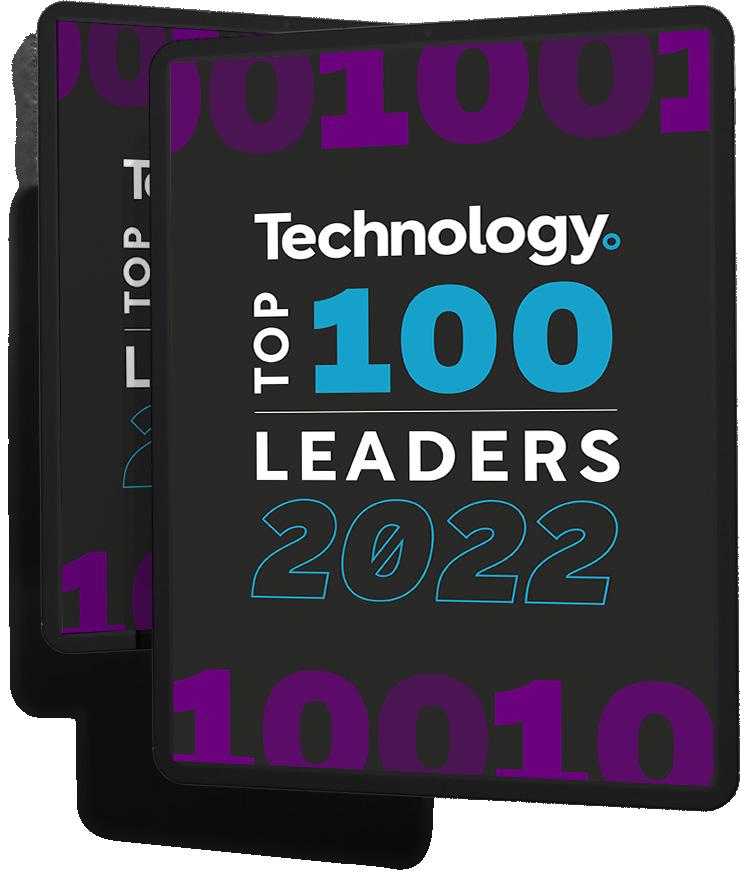



 PRODUCED BY: STUART IRVING
PRODUCED BY: STUART IRVING
For such a technologically advanced telco, the mission of VodafoneZiggo reads rather poignantly and humanely in its message:
‘In the end, life is all about feeling connected. With each other, with loved ones, friends and family. With the things that matter to them. So they can fully enjoy everything the world has to offer. And people, companies and society can progress. Enjoyment and progress with every connection.’

The Dutch telco’s master connector is their Director of Fixed Network, Leo-Geert van den Berg. A harmonising team builder, with a long history of realising strategy and leading change and transformation, van den Berg has 20 years' experience in various technical managerial roles, but predominantly in telecom organisations. A team builder, committed people manager and communicatively strong according to the opinions of employers and colleagues, van den Berg has spent his career in various technical managerial roles, but predominantly in telecom organisations. For the last 21 years, he has been working at Liberty Global (LGI), of which the last seven years at VodafoneZiggo.
Previously CTO at Ziggo in 2016, after the merger between Vodafone and Ziggo in 2017, he has since been responsible for the Fixed networks in VodafoneZiggo, including HFC, Access, IP/Core Networks, Backbone,
Leo-Geert van den Berg reveals how innovation, partnership and customer service has made the Dutch telco the most reliable fixed network in the country
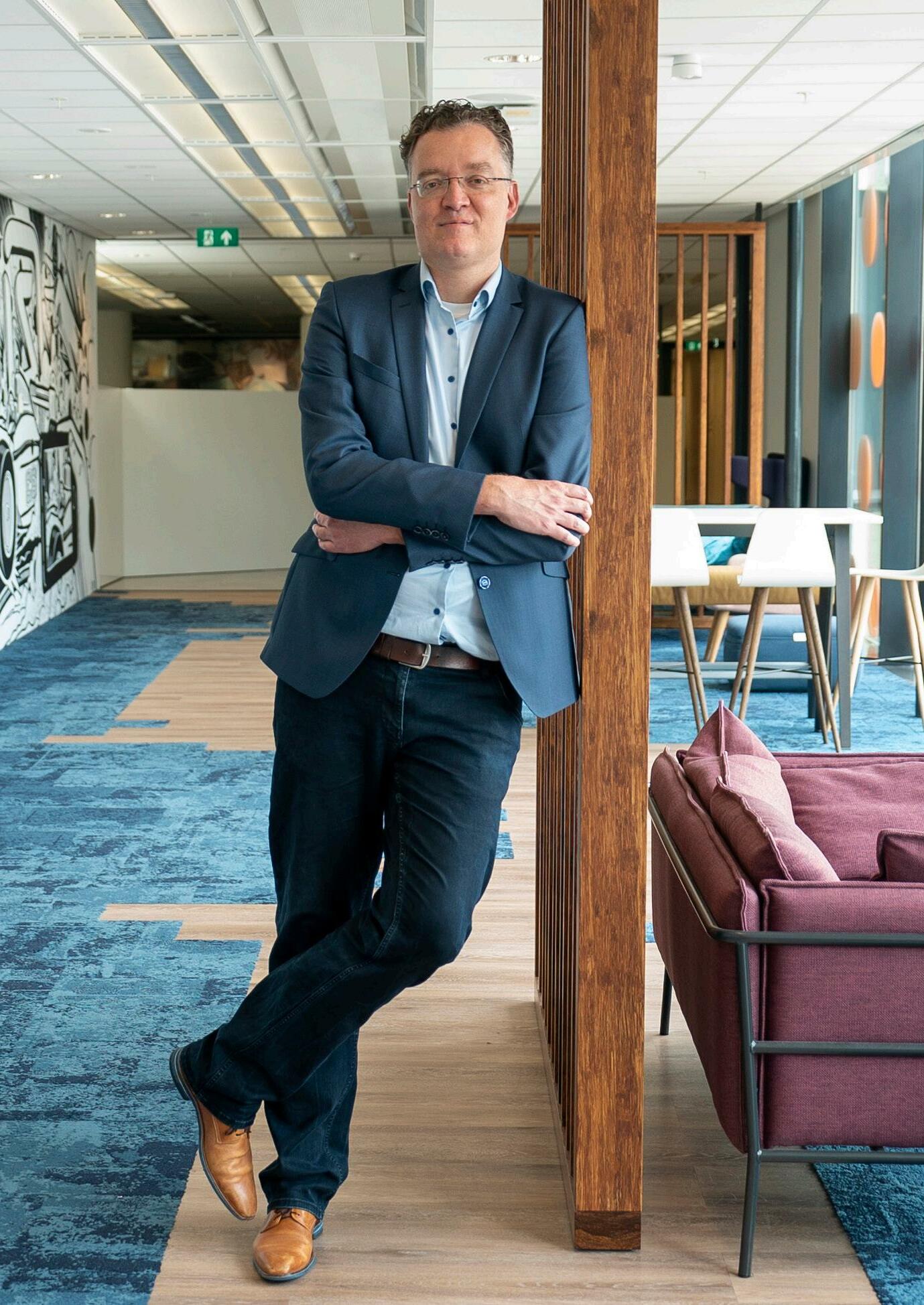


Jürgen Hatheier, CTO for EMEA and APAC at Ciena, talks about its work with VodafoneZiggo and the reliability and scalability of network connectivity
Connectivity has become a basic human need, particularly when, in the current employment landscape, businesses are offering more work-from-home opportunities. Connectivity will also soon be embedded into more facts of life, such as electric vehicles (EVs) and infrastructure.
As the coronavirus pandemic became the main influence in the work-from-home mentality and demand for higher network speeds for all of our digital services, it exacerbated the need for a strong and reliable network to manage multiple compute-intensive tasks throughout homes.
Maturing networks to meet demand
As expectations run higher, networks are having to keep up – which means they must adapt to address surging demands. As highlighted by Jürgen Hatheier, CTO for EMEA and APAC at Ciena, COVID-19 was a catalyst for the need for scalable and programmable networks. But, this was only a catalyst for change. Way before the pandemic, telecommunications was growing in applications.
“As a key enabler of innovations that drive network connectivity, Ciena was relentlessly focused on ensuring that VodafoneZiggo could continue to deliver


critical next-generation connectivity to its expansive customer base which include hospitals, government agencies and enterprises,” says Hatheier.
Ciena addressed the need for security
The coronavirus pandemic was an opportunity for VodafoneZiggo and Ciena to develop solutions to meet the security requirements of remote workers. Ciena brought its optical technologies to the table to ensure VodafoneZiggo operates with high-speed connectivity to provide its customers with a reliable, scalable, and secure network.
“When VodafoneZiggo talks about reliability, quality and speed of the network, it’s underpinned by our design principles of reliability, scalability, and security,” Hatheier says. “Ciena’s WaveLogic technology allows operators to increase their fibre capacity while also decreasing their energy use. Each successive WaveLogic generation uses approximately 50% less energy on a power per bit basis, while doubling data throughput over a single wavelength.” Find out more
Video Services, Voice Services, Internet Services and Data Centres.
Earlier this year, the organisation won the umlaut ‘Best fixed network score’ from the Accenture-backed benchmarking awards. Umlaut is an independent German group that carries out mobile benchmarks, and this year was the debut for the category of ‘fixed networks’.

During COVID’s peak, the organisation saw capacity grow approximately 33% per year. The telco needed to make sure that they are one step ahead of what the customers need, proactively building out the capacity so that customers could access services, at the fastest speeds, at all times.
“It was a constant evaluation and expansion of our network capacity, making sure we're ready for the next level. We continued to monitor the network’s quality and because we had the processes in place, we could continue during COVID as well,” said van den Berg.
“WE HAVE A LOT OF ENTERTAINMENT ON OFFER AND MANY HAPPY CUSTOMERS ON BOARD. BUT THE ENGINE ROOM IS NEEDED FOR EVERYTHING TO RUN PERFECTLY”
A driving force of the Dutch digitisation
LEO-GEERT VAN DEN BERG DIRECTOR FIXED NETWORK, VodafoneZiggo
INDUSTRY: TELCO
Leo-Geert has over twenty years experience in various technical managerial roles, predominantly within telecom. He joined Liberty Global in 2001 where he held several technical management positions, the last few years as Vice-President in the Technology team. Leo-Geert moved to Ziggo in 2014 and became CTO in 2016. After the merger of Vodafone and Ziggo LeoGeert has been responsible for the Fixed networks in VodafoneZiggo.
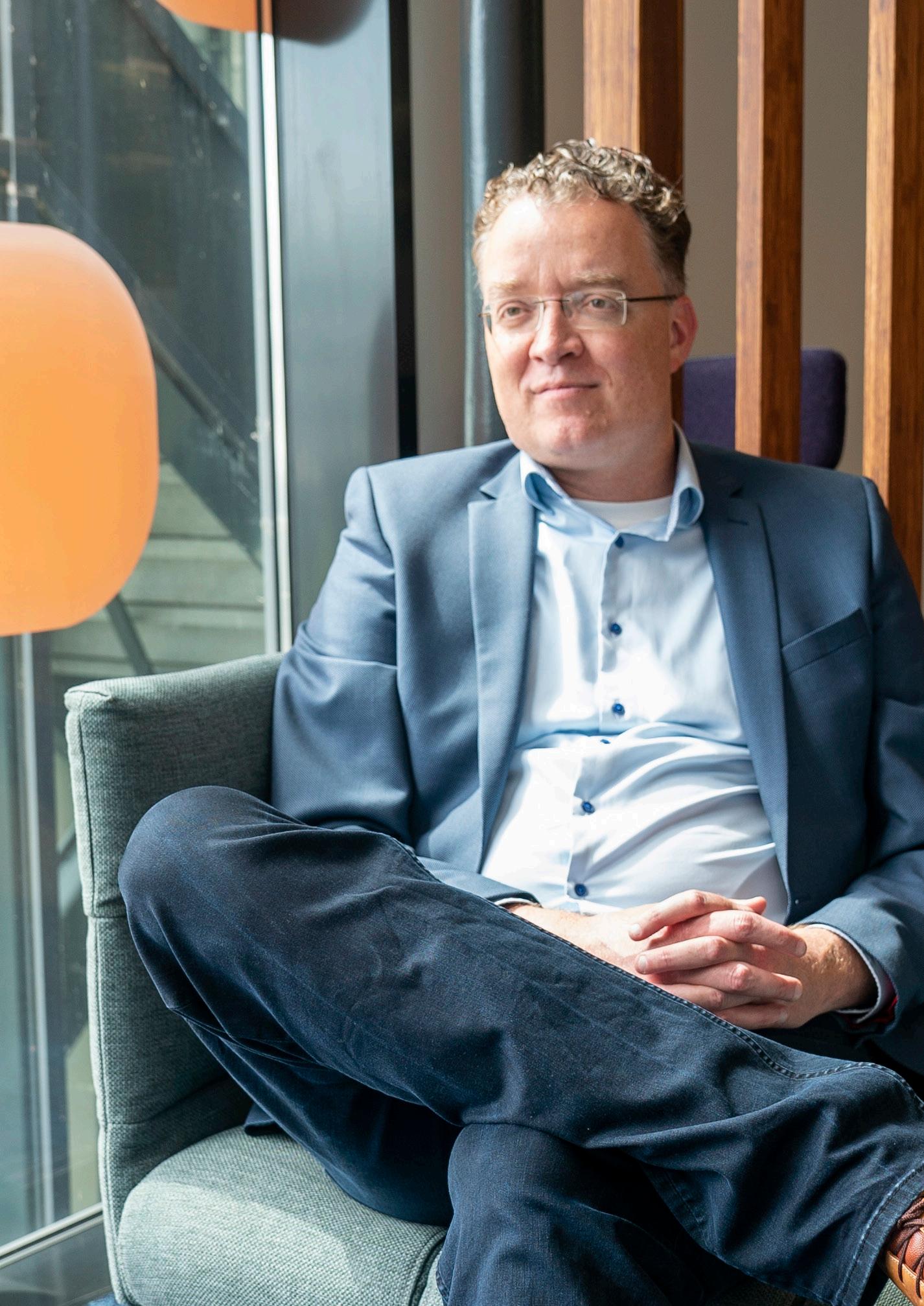
Prior to telecom, Leo-Geert worked for Philips, TNO and IBM and during the six years at IBM took several management positions at Ahold and PriceWaterhouseCoopers.
Leo-Geert has a degree in Language & Speech Technology from the University of Utrecht and a Master’s degree from Sheffield University.

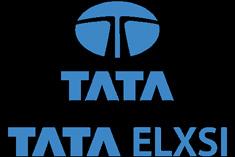
RajaGopalan Rajappa, CTO, TATA ELXSI on the company’s partnership with VodafoneZiggo to drive digitalisation in the telco industry to meet evolving demands
In recent years, consumer behaviours have evolved. “We are used to an enhanced ecommercebased experience in the way we consume services,” says RajaGopalan Rajappa, CTO – Communication Technologies & Platform at TATA ELXSI. This evolution has driven the telecommunications industry to keep up with these expectations.
“TELCOs have to become agile, open and cloudcentric to design offerings and fulfil their services digitally. If you look at the nature of services, consumption patterns and proliferation of media, there is a compelling need to build scalable networks that are cost efficient as well. In my view, these are the key drivers and forces towards transformation and digitalisation,” adds Rajappa.
Helping VodafoneZiggo digitally transform its operations
“I consider VodafoneZiggo to be pioneers in understanding and adapting to the needs of their customers,” explains Rajappa. The company is focused on understanding B2B, B2C and wholesale market segments to offer custom-built design services and service delivery platforms.
As VodafoneZiggo’s primary (end-to-end) technology partners, TATA ELXSI helped with
multiple programmes as part of its transformation journey. “We were privileged to be part of the initial design, development and deployment plans. Today, we are glad to see the end result in terms of a successful rollout of a truly digital network and ecosystem,” says Rajappa.
As part of the transformation, TATA ELXSI has played a key role as a System Integration (SI) partner in the implementation of:
1. SD-WAN automation and orchestration for B2B/enterprise services


2. Fixed network core automation and orchestration
3. SD-security perimeter for products and services
“These programmes involved infrastructure, network, CPE, services and security orchestration,” explains Rajappa.
“The orchestrator and automation function collects vast data and KPI towards automatic network scaling and proactive service remediation. We continue to work closely with VodafoneZiggo’s team to launch these products in the market and manage them. We will also continue to work with VodafoneZiggo to complete their transformation and digitalisation roadmap.”

Transforming the organisation to a more digital business, such as customers being able to do services online, has been a critical part of the telco’s journey.Choosing new products or services with a click of a button “instead of having to fill in 20 forms and waiting for a week.”
The likes of Tata Elxsi has been one of the partners that VodafoneZiggo works with to transform into a digital business by creating and integrating software defined networks: “SDN and network automation is one of the big priorities for us,” he explained.
Another key partner in this field is TCS, which has provided key solutions to enable this transition.
“TCS is one of our strategic partners in the area of fibre build digitisation and automation,” van den Berg added.
Van den Berg has a major role within the Fixed Networks team in keeping the systems up and running at all times, no matter what.
Away from the high street VodafoneZiggo shop fronts, the lights of the Ziggo Dome music venue in Amsterdam and the Smart WiFi-powered devices in the homes and hands of customers, above all else is the reliability of the networks themselves.
Van den Berg uses the analogy of a cruise ship: “We have a lot of entertainment on offer and many happy customers on board. But the engine room is needed for

“WE'VE BEEN INVESTING A LOT OF EFFORT AND RESOURCES ON MAKING OUR NETWORKS, PRODUCTS AND SERVICES BETTER FOR OUR CUSTOMERS”
2022 Plume Design, Inc. All rights reserved.

With the explosion of devices, data demands, and security risks, today’s smart homes need Adapt™. Part of our HomePass™ suite of Smart Home Services, Adapt is a cloud-coordinated system that offers the first and only self-optimizing, whole-home WiFi technology.
Learn more

Plume’s SaaS Experience Platform that powers VodafoneZiggo’s SmartWifi service has been instrumental in meeting (and exceeding) customer expectations, says Director of Fixed Technology Leo-Geert Van Den Berg
As the rise of 5G makes waves across the industry, home technologies are more advanced than ever before. So, it’s hardly surprising that in-home connectivity is one of VodafoneZiggo’s key focus areas. In fact, around half of its call centre enquiries concern some aspect of in-home connectivity.

“It shows that, for our customers, inhome connectivity is key: always-on with the right speeds, everywhere in your house – that’s what the customers value the most,” comments Leo-Geert Van Den Berg, the Director of Fixed Technology at VodafoneZiggo.
This priority has fuelled the recent partnership between VodafoneZiggo and Plume, a specialist smart home experience management company.
Working with Plume enables VodafoneZiggo to offer an adaptive solution—powered by a highly scalable SaaS Experience Platform that leverages cloud, AI and open-
source technologies—that enhances and personalises users’ home WiFi experiences.

Together with Plume, VodafoneZiggo launched its SmartWiFi service last year. “We saw the importance for our customers. We saw what adaptive WiFi does for the customers and how it helps to get in-home connectivity to the level it needs to be and at the quality that they expect from us… And that’s what the customers value the most.” Using sophisticated AI technology, Plume’s award-winning platform develops a comprehensive understanding of the unique needs of each and every home network, adapting and optimising daily to ensure that WiFi services are delivered to their full potential.
“For us to make it work in the background for the customer, and to have it seamlessly working and running with the right network automation, with the right artificial intelligence, with the right data – that’s what adaptive WiFi does for us. And that’s what Plume brings for us. It gets services to work and makes the infrastructure invisible for the customer.”
Learn more
everything to run perfectly. The passengers never visit the engine room and don’t even notice there is one until their services are not working. So from a fixed-technology department point of view, the more invisible we are, the better our services are working and the happier our customers are. That's what keeps us motivated and keeps us going.”
And for millions of customers around the country, it’s hard to understate the importance of connectivity. During the height of the COVID crisis, people were working and studying from home and using a lot more internet, which meant a dependence on internet connectivity.
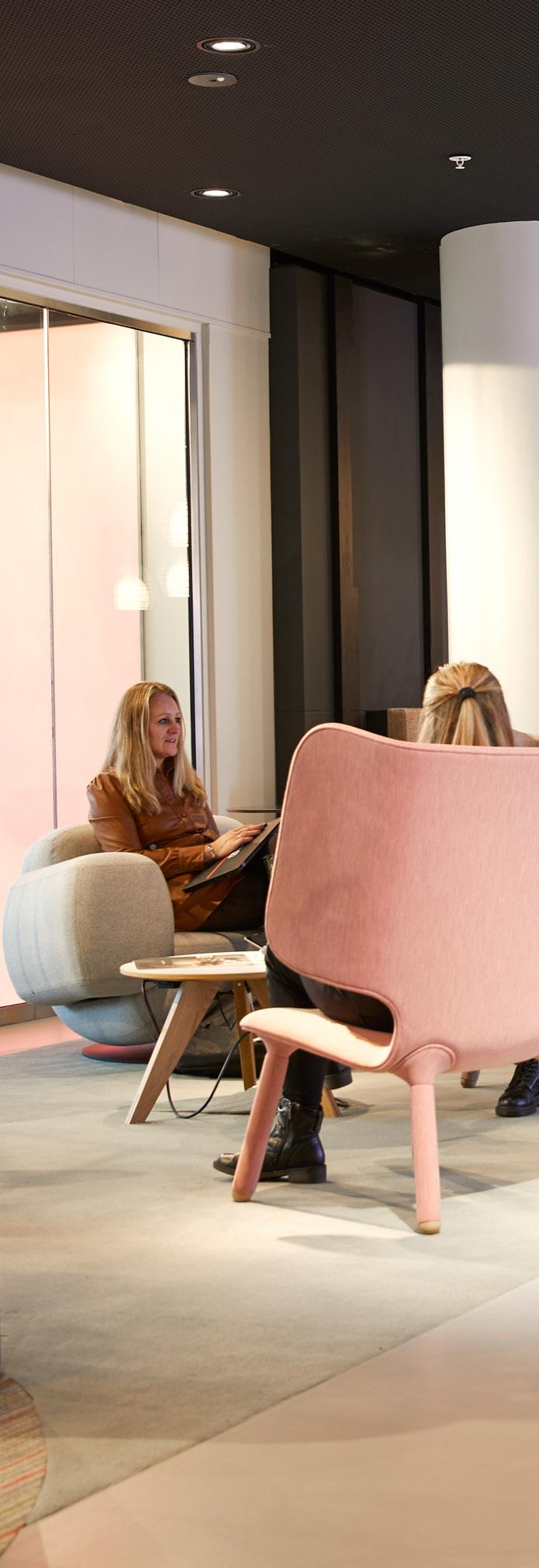
“COVID was an important test for the networks. The majority of people were suddenly not in the office, but working or studying from home. When Monday morning came around at 10 o'clock, we would see a massive peak in the network traffic when usually, that is a very quiet time of the day. I am proud that we were able to provide consistently good performance with zero congestion, even in those peak moments.”
have both Ziggo and Vodafone products)
Households (Q2 2022)
million
SIM's (Q2 2022)
million
“WE ARE ON A JOURNEY FROM REACTIVE TO PROACTIVE, AND FROM PREVENTIVE TO AUTONOMOUS”
LEO-GEERT VAN DEN BERG DIRECTOR FIXED NETWORK, VodafoneZiggo
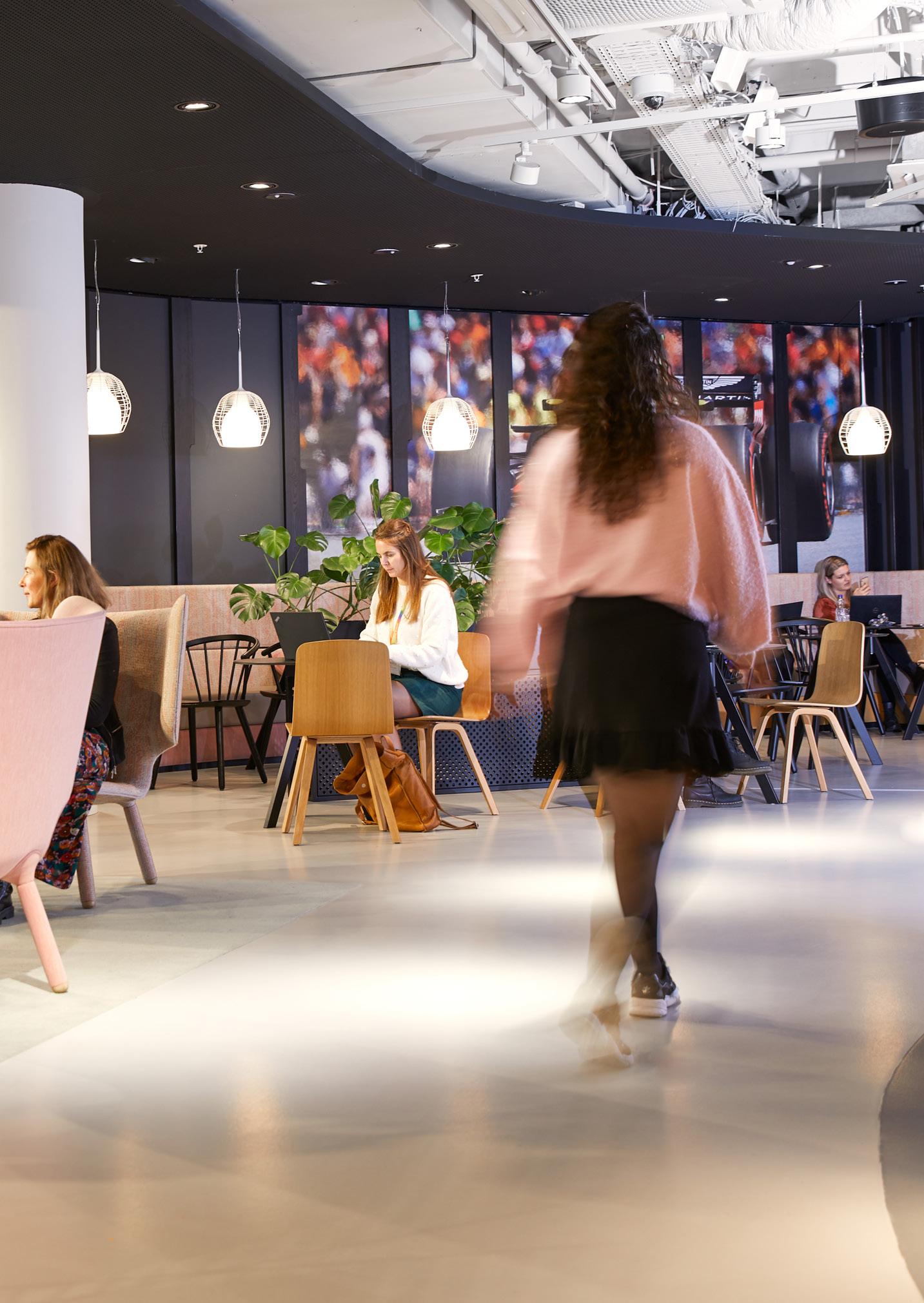

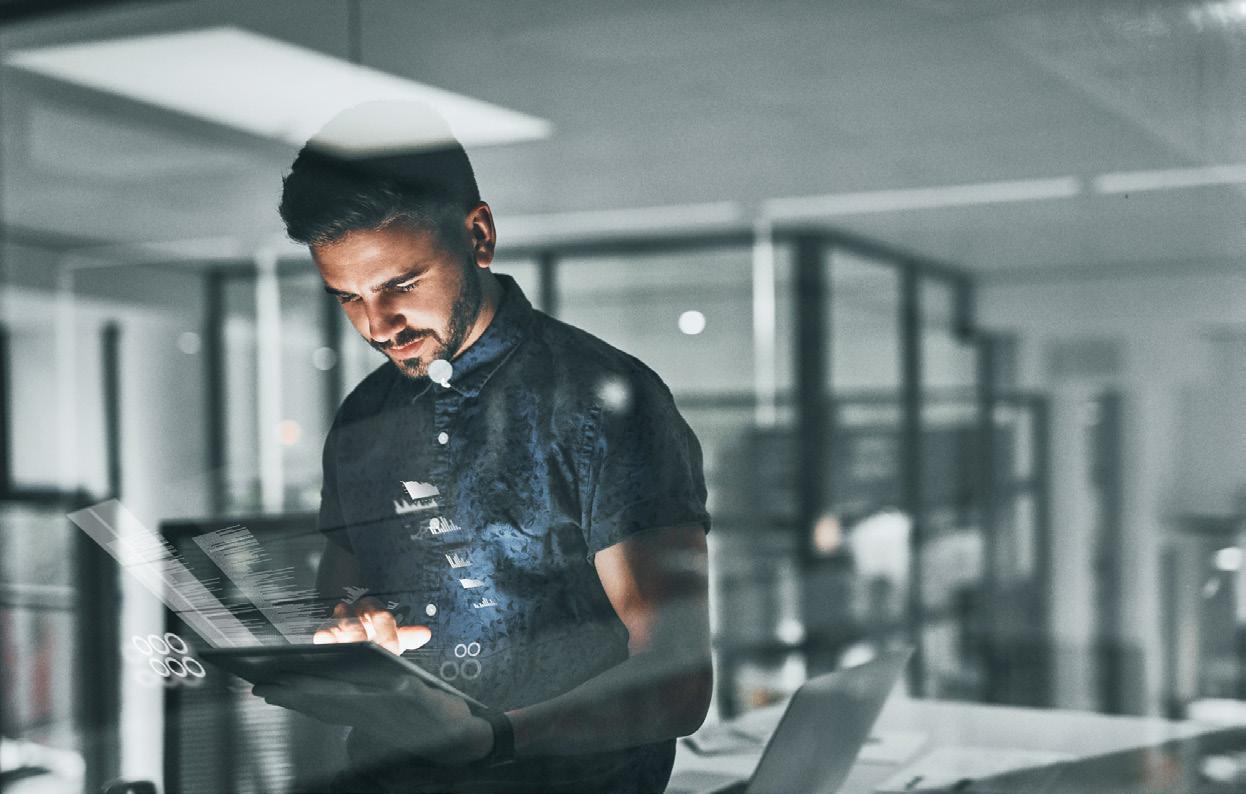

has partnered with TCS to accelerate their ‘Go Digital’ strategy
TCS: Providing technologies to solve customer problems
Sairam Mannar, Client Director for the telecom business unit at TCS, explains the success of its partnership with VodafoneZiggo
A renowned global company, Tata Consultancy Services (TCS) is – as its name suggests – a consulting and business solutions organisation, which also provides information technology.
On a mission to help customers achieve their business objectives, the company’s initial relationship with Vodafone began in 2007 and was then extended in 2018 with VodafoneZiggo.


Working together, TCS takes success stories from the different markets of Vodafone to see if that solves a particular business problem with VodafoneZiggo. It brings together the experiences it has built up with tier one telcos globally into any specific problem areas of VodafoneZiggo.
“The first engagement we have done with them is in the area of digital marketing. It has been an immensely successful programme – so much so, that it is now also being deployed in other markets of Vodafone,” said Sairam Mannar, Client Director for the telecom business unit at TCS and also a Client Partner for VodafoneZiggo from TCS.
Mannar explained how the companies worked together in the area of fixed fibre build, launching the programme in 2020. Digitising the whole process, including key functions such as budget management and KPIs, it is completely based on a scaled agile concept.
“KPI management is very important for you to know the overall health of the programme. One area where it made a big difference to Ziggo is in the area of construction partner management, where we have reduced the overall construction partner spend by 1%. In fibre programmes, the spend for construction partners is immense; it runs into millions of euros. We have deployed a TCS framework called TwinX which is a tool that does proactive journey management using the digital twin concept to reduce order fallouts, reduce bottlenecks and thereby improve cycle time, first time right and cost.
Looking to the future, TCS would like to continue to bring the right amount of innovation and the right technologies into solving customer problems to help Vodafone Ziggo grow their business.
“But the focus will be on growing in the network services area where TCS has built a lot of capabilities and experience with many Tier-1 Telcos in Europe. This means services in the area of 1. Cognitive network operations, 2. Network Testing 3. NFV cloudification, 4. SDWAN industrial deployment, 5. 4G/5G services and 6. open RAN.” concluded Mannar.”


With a score of 947 out of 1000 points and an overall rating of "very good", Ziggo was the overall winner in the umlaut benchmark for 2022.
Hakan Ekmen, CEO Telecommunication at umlaut: "Congratulations to VodafoneZiggo for winning the 2022 umlaut connect Fixed-Line Broadband Benchmark in the Netherlands! Our assessment shows great efforts in enhancing the fixed-line network expansion to offer customers reliability, high data rates and low latencies. Dutch customers can be quite pleased with the user experience of their fixed-line connections."
VodafoneZiggo’s networks were tested from a capacity, stability and quality point of view. These are three major elements that are key to the network: “We made the right choices in the years’ previous to focus on these areas, and we need to continue on this route for the years to come.”
Especially during that first COVID period, the responsibility of all the Dutch telcos to keep our society connected became very visible. It was then that VodafoneZiggo had to prove that the networks were up and running constantly, at the right quality

level, with minimal outages and sufficient capacity for internet, both on the upstream and the downstream.
“Those are the key KPIs that we closely monitor daily and that we report on internally to all the teams. In doing that, we can make sure that we build at the right spots in the Netherlands, with the right amount of capacity to provide the services that customers need,” said van den Berg.
Reflecting on the umlaut award, he said: “We've been investing a lot of effort and money and we worked hard on making our networks,
products and services better for our customers. To be awarded this year with the best fixed network award was a great recognition for the team. We were proud of it and we are very happy to see that all the hard work is paying off.”
Smart WiFi and in-home connectivity
In-home connectivity is one of the business's key focus areas. Almost half of the calls received by the call centres have to do with some aspect of in-home connectivity, following similar patterns with other telcos in the Netherlands and in the rest of Europe.
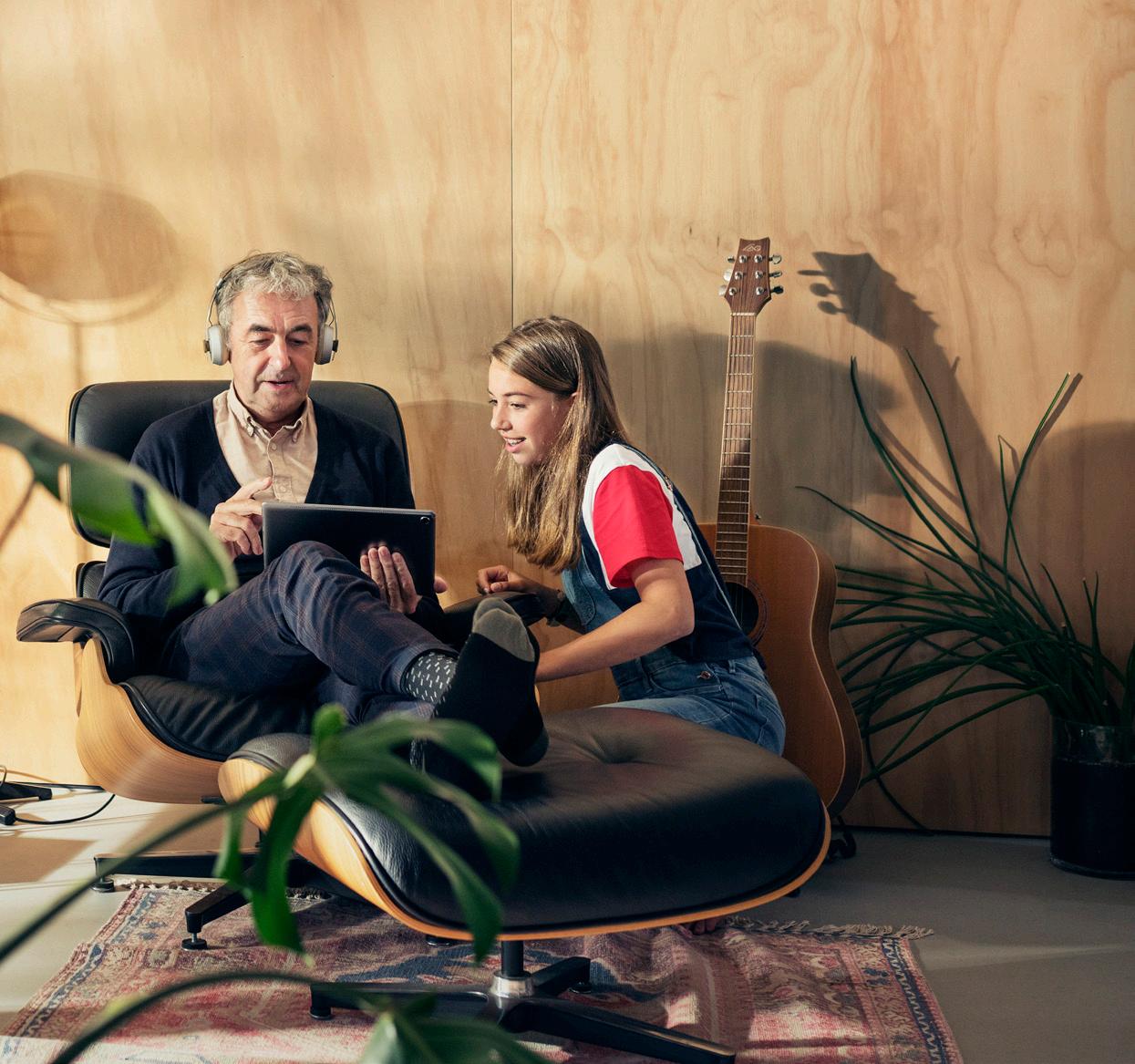

The world is entering a new wave of digitization—one driven by ubiquitous connectivity to further enrich people’s lives everywhere. In the Netherlands, VodafoneZiggo has been at the core of this connectivity transformation from its inception and is forging the next technology revolution for communication service providers.
VodafoneZiggo is recognized as the number one Dutch fixed network provider—and one of the best mobile networks in Europe. The company offers a network of the future, providing speeds of up to one gigabit per second. By investing in breakthrough technology, VodafoneZiggo is preparing for future applications—like holographics, virtual reality and AI—that create greater demands in terms of speed and customer experience.
Transformative
Cognizant believes in making connectivity ubiquitous to accelerate societal and economic value. As one of VodafoneZiggo’s trusted partners, we help the company meet current and future customer needs with innovative technology and digital transformation. Our Cloud+ capabilities will also enable VodafoneZiggo’s digital-forward vision and accelerate monetiz ation of preexisting investments.
With Cognizant’s industry expertise, you can enable intelligence, stability and speed that empowers people to be online—always and everywhere. To learn how we can help, contact manju@cognizant.com, jeroen.bolte@cognizant.com, or visit https://www.cognizant. com/nl/en/communications

“It shows that for our customers, in-home connectivity is key. Always-on with the right speeds, everywhere in your house. That’s what the customer values the most.”
COVID re-emphasised the importance of getting Smart WiFi launched, leading to an accelerated ambition of VodafoneZiggo to get it live in as many customer homes as possible.
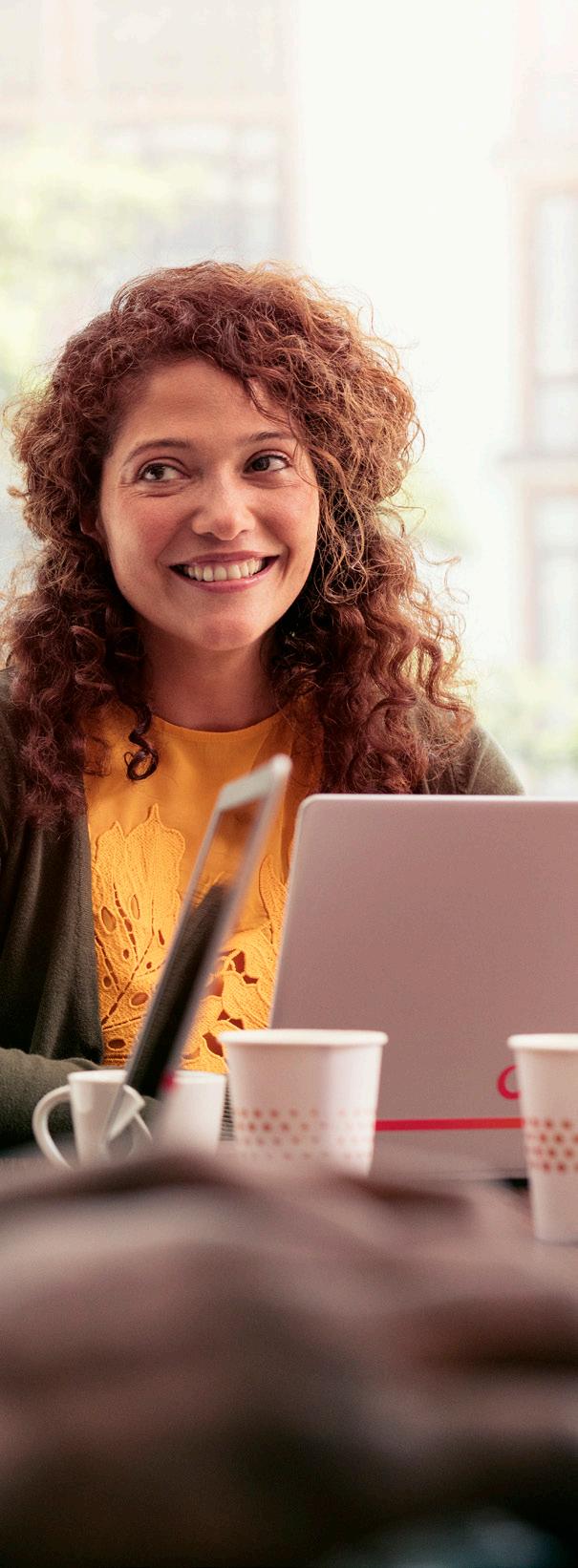
“That's a challenge because we have millions of homes and we have to get these devices out there, in a speedy fashion. We've been busy with that for the last two years now”.
Partnerships such as the one recently secured with Plume allow VodafoneZiggo to offer a Smart WiFi solution.
“The Smart WiFi solution of Plume gives us access to a lot of monitoring meta data on usage and performance. In case of troubleshooting, this allows us to resolve the issues with customers a lot faster.”
A common trend within telcos around the world is ‘security by design’. Security is merely a hygiene factor for customers as the minimum they would expect, much like having sufficient capacity. To VodafoneZiggo, it’s about making sure that for any new application, product, or network architecture they develop the right security pieces.


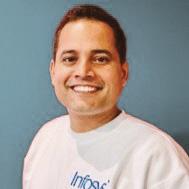
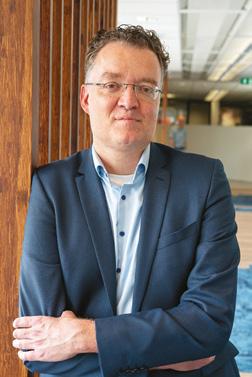
den Berg:
need
security
privacy
networks rank as some of the best in the world. One of the most important

for VodafoneZiggo
all of the Netherlands by year end 2022 to gigabit
competition between Dutch telcos
paid off for the customer:
of which the company is on
VodafoneZiggo headquarters is based in Utrecht, a charming and vibrantly
modern city with picturesque canals and extraordinary wharf cellars. It was also one of the first places in the country to receive a gigabit network and products.
“The good thing about us being able to give gigabit speeds is that we don’t have to do any digging to upgrade the network. By doing software updates, changes in
our data centres and upgrades of the equipment in our street cabinets, we can enable gigabit speeds on our existing network without having to dig open the streets.
One of the ‘backbones’ VodafoneZiggo relies on is the transport IP- and optical network. This optical technology was provided

With a shared commitment to building a green future, Infinera and VodafoneZiggo are working together to facilitate network convergence, accelerate sustainability, and drive unprecedented economic benefits with game-changing technology innovation.
As a recognized leader in optics innovation, Infinera is paving the way for new breakthroughs in network economics and e ciencies with XR optics, the industry’s first point-to-point and point-to-multipoint pluggable coherent optics. Up to 70% cost savings. Up to 75% reduction in power. A world of di erence for a green future.
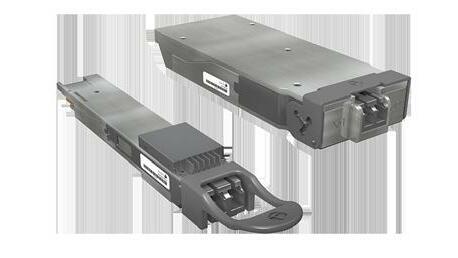
by Ciena, a major partner alongside many others helping to digitalise the entire network. Countless municipalities and cities across the country now have an upgraded network. Almost 90% of the Netherlands is gigabit ready. By the end of the year, it will be at 100%. That means that the more than seven million homes that are connected to the Ziggo cable will be able to subscribe to a gigabit product.
“For customers, it matters to be part of this innovation. It shows that they have the extra capacity available to them to use all the services that they want,” said van den Berg.
VodafoneZiggo’s size and offering of crucial infrastructure makes them an important actor in the digitalisation of the Netherlands. Digital skills and knowledge are evolving rapidly. However, the company recognizes that not everyone in society is able to keep up with these new trends, and as a consequence, is able to benefit from a digital society. Therefore it is VodafoneZiggo’s ambition to help Dutch citizens become more digitally savvy. VodafoneZiggo started multiple initiatives to live up to that ambition. As management, they are able to contribute to that directly. An example
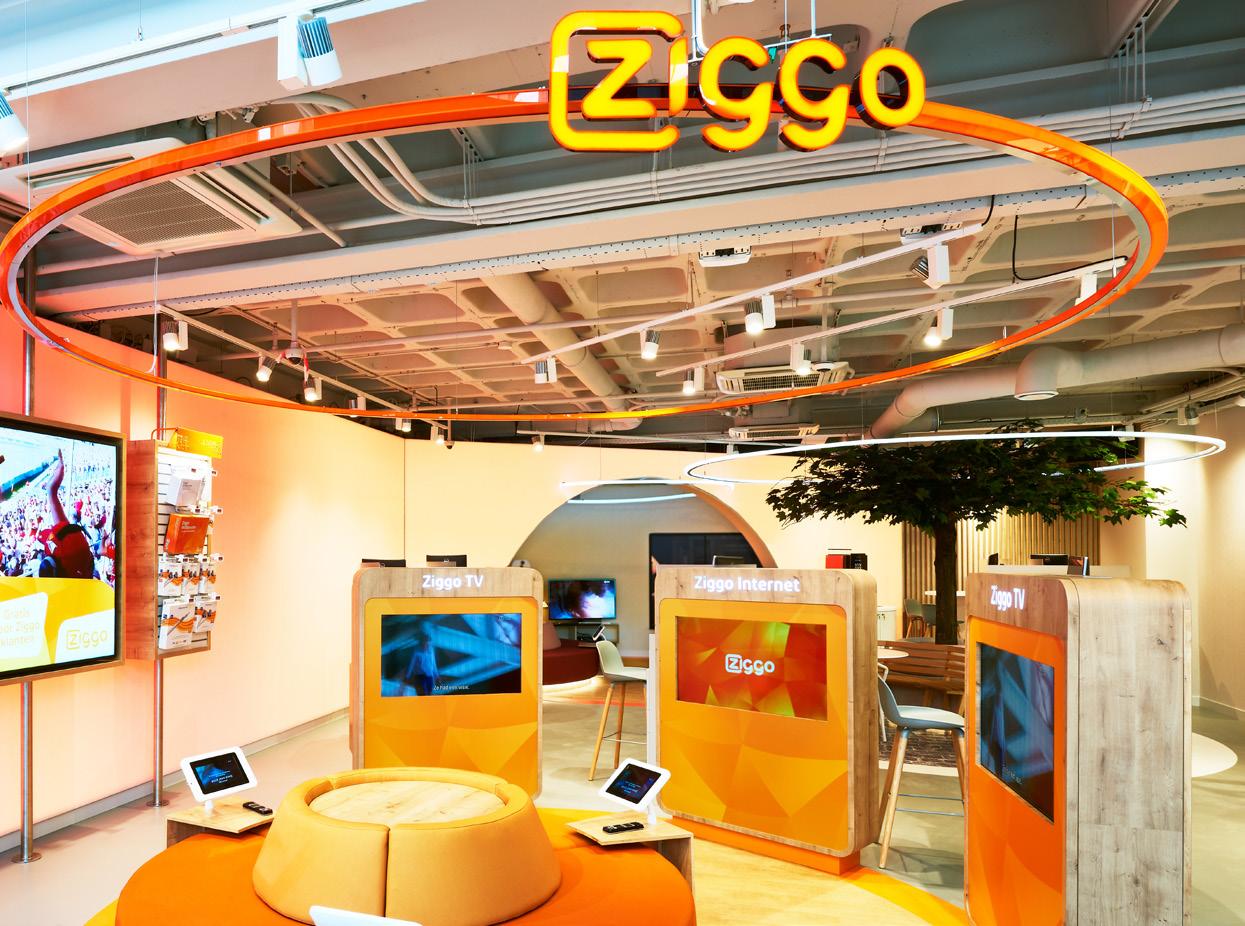
“TO BE AWARDED THIS YEAR WITH THE BEST FIXED NETWORK AWARD WAS A GREAT RECOGNITION FOR THE TEAM”
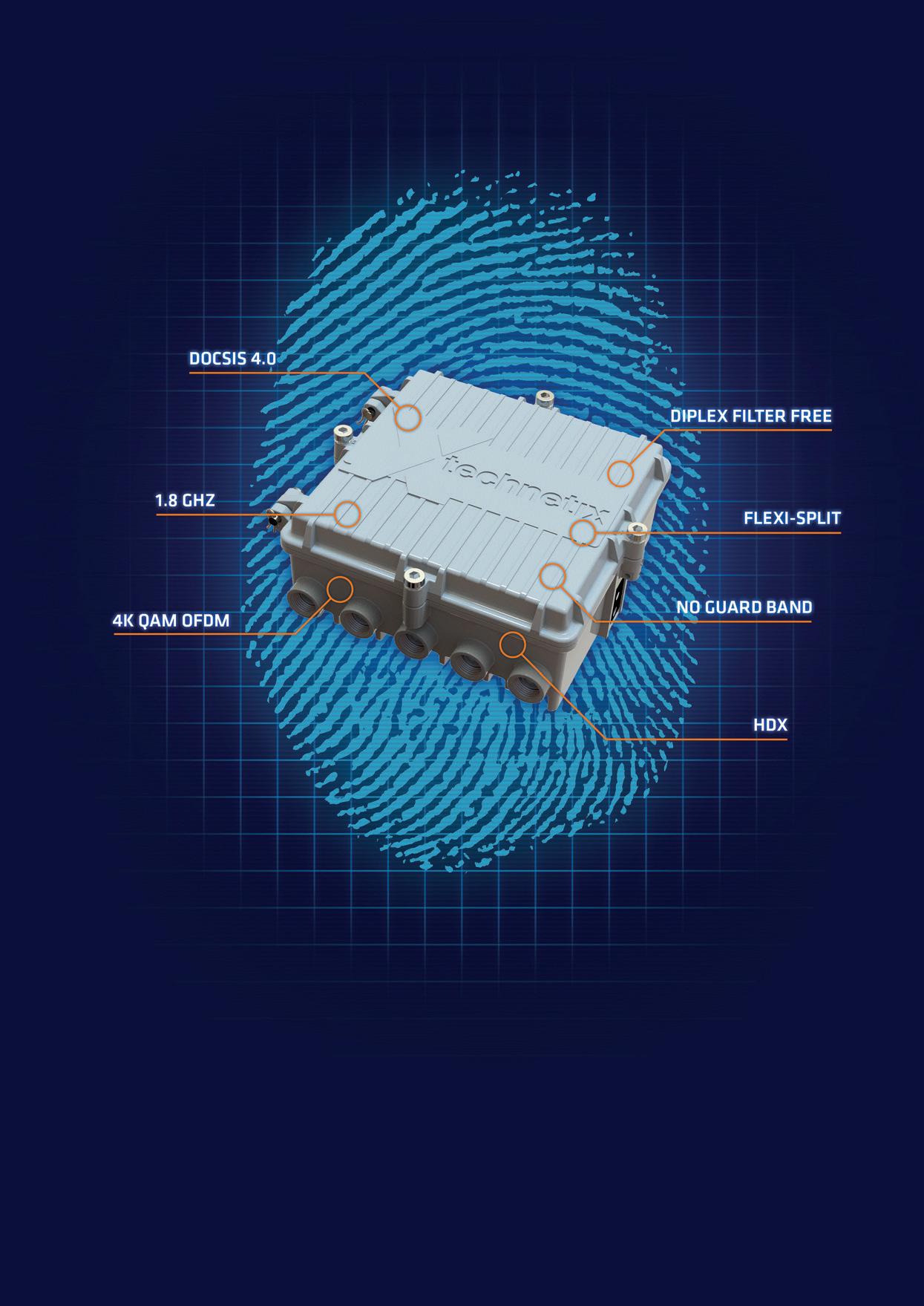
van den Berg cites is the Online Masters, a project where VodafoneZiggo employees can contribute: “We visit primary school classes for 6-12 year olds and we give them two hours of training on cyber security, internet development or innovation. It’s great to stand in front of the class and talk to the children about these topics and have a bit of interaction with them.”
Another example of digital upskilling in the community is the CoderDojo, held at the Ziggo Dome music venue, where thousands of children were trained on developing
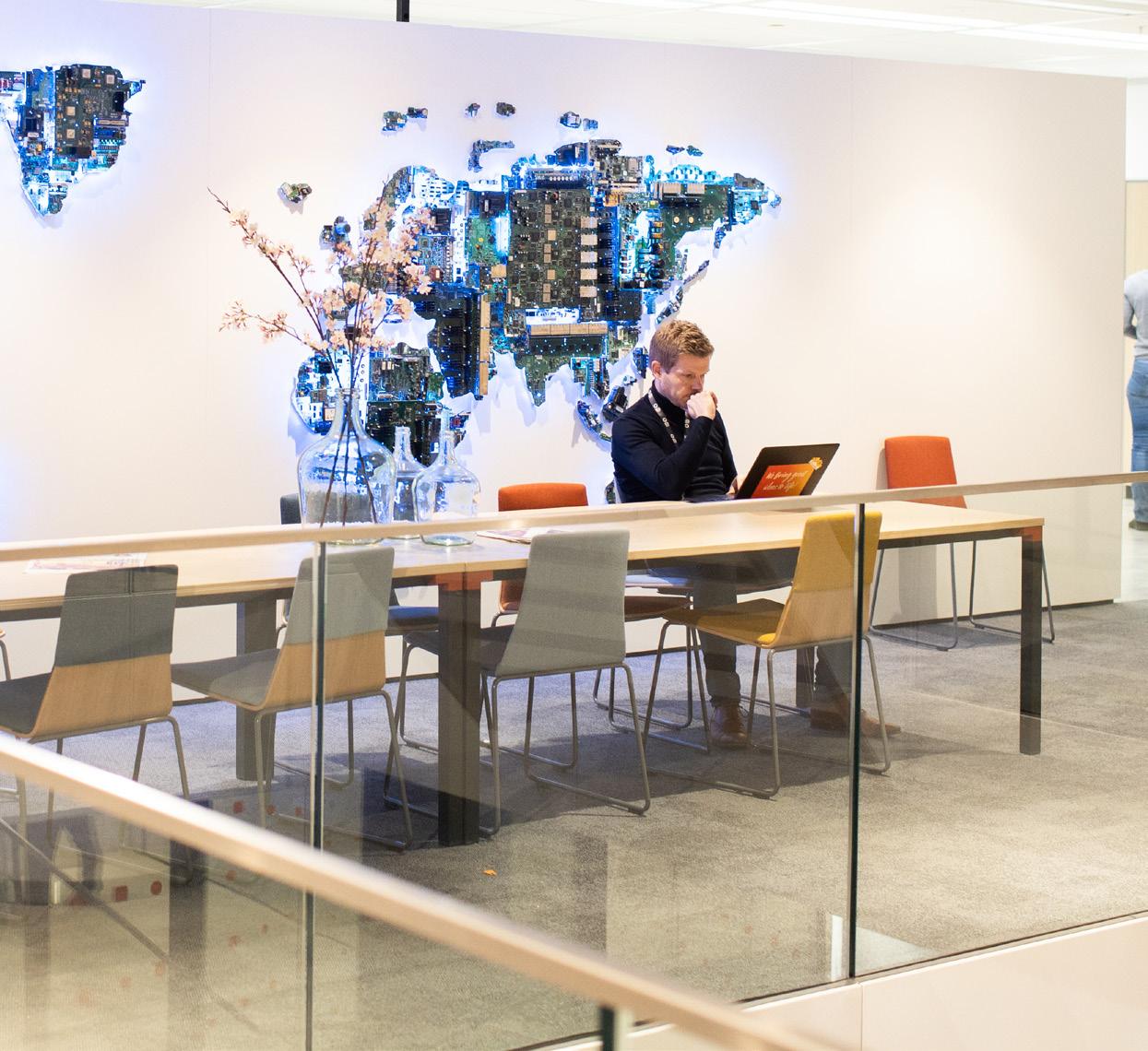
“THE MORE INVISIBLE WE ARE, THE BETTER OUR SERVICES ARE WORKING AND THE HAPPIER OUR CUSTOMERS ARE. THAT'S WHAT KEEPS US MOTIVATED AND KEEPS US GOING.”
LEO-GEERT VAN DEN BERG DIRECTOR FIXED NETWORK, VodafoneZiggo

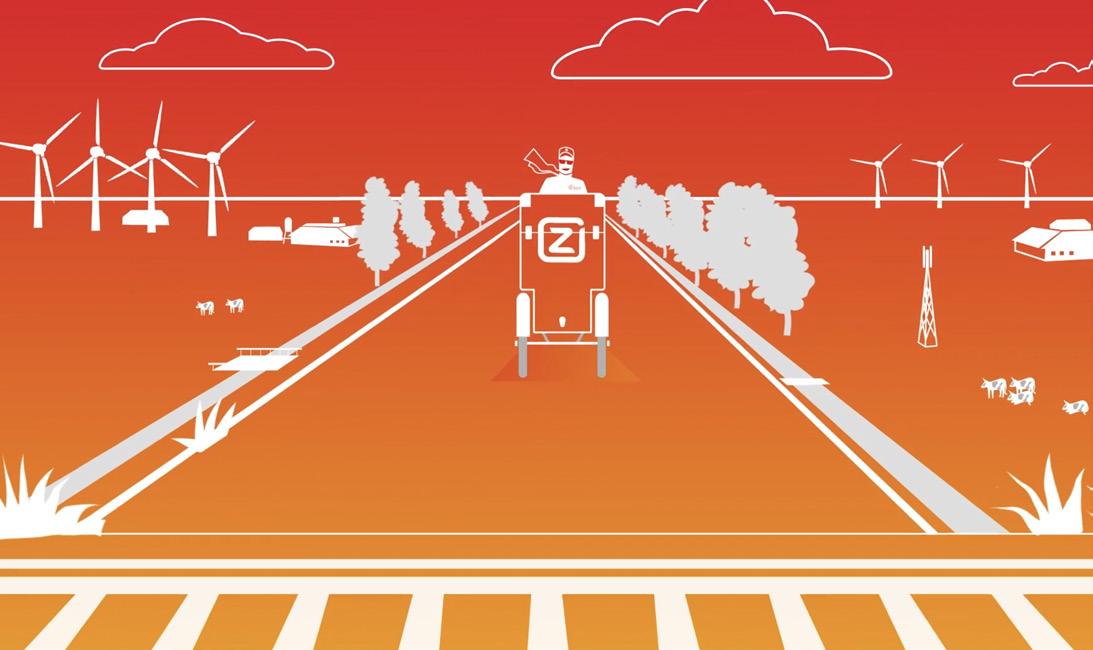



venue and the business, these opportunities are to be expanded further in the future.
“There is a gap currently in society where people aren’t digitally skilled enough. We see what’s happening with talent shortages and we want to play a role in alleviating these skill gaps.
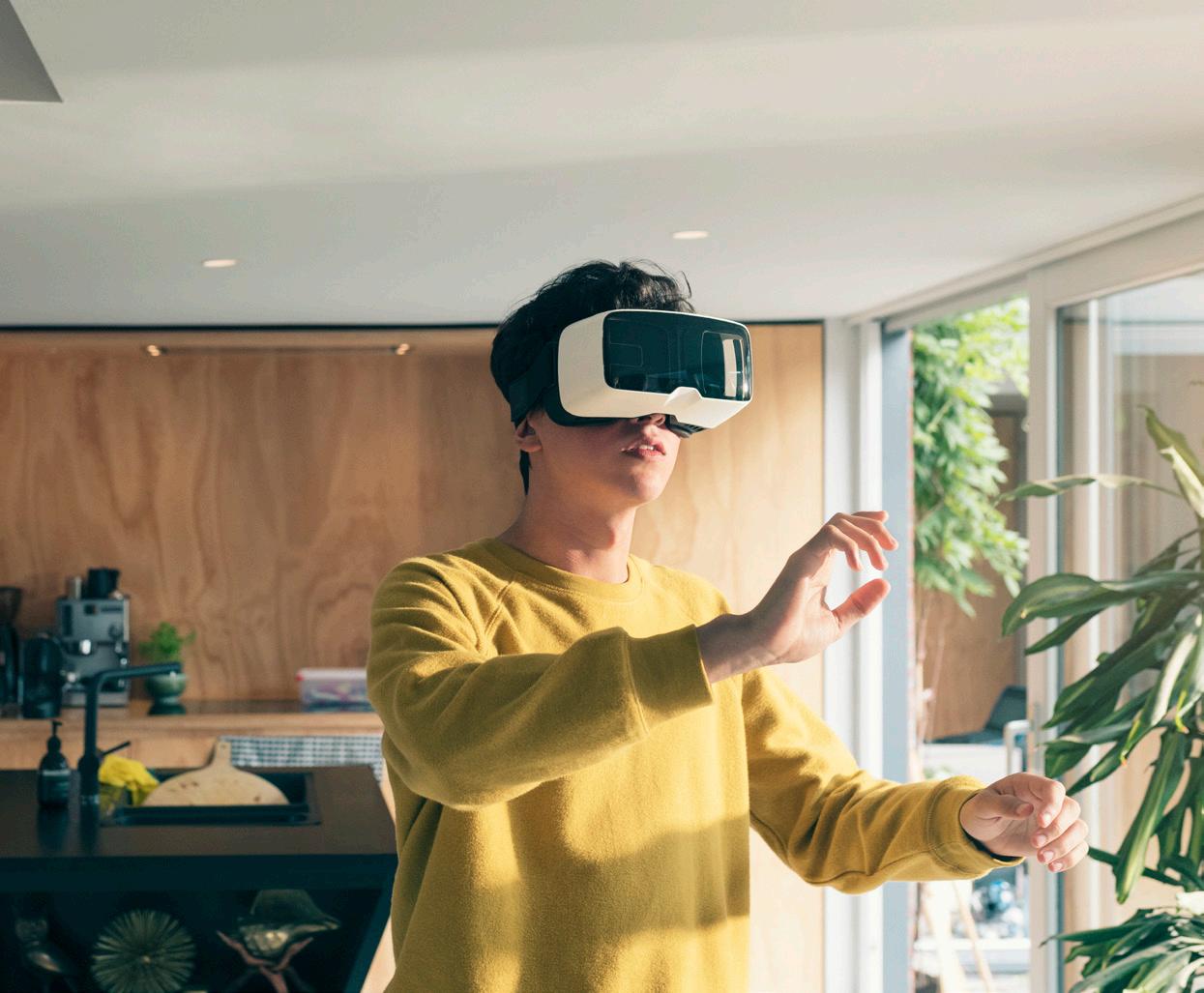
Similar to programs for the younger generation, we also have programmes running for elderly people where we train them and teach them how new technology works.”
An autonomous future “We are on a journey to bring our networks from reactive to proactive, and from preventive to autonomous,” said van den Berg.
Network automation is one of the key areas that the technology team spends a lot of time and effort on.
“WE WILL MAKE SURE THAT WE HAVE THE RIGHT LEVEL AND SKILLS IN PLACE TO DO WHAT WE NEED TO DO. DATA SECURITY AND PRIVACY IS AN INTEGRAL ASPECT OF OUR TECHNICAL STORY”

“Telco networks used to be reactive. This means that if there was an outage, a technician was sent out to fix it. Then our networks evolved to become more proactive, meaning we could see what was happening in the network before events even occurred. Currently, we are in the transition to create preventive networks, where the network itself sees and detects if there is an issue ongoing and, without any manual intervention, issues get resolved,” he added.
VodafoneZiggo is now in the stage where from a preventive point of view, they can detect cable damages. Underground monitoring tools can tell if the signal level on the cable is getting slowly weaker. Even before customers are noticing anything from

“WE WANT TO MAKE SURE THAT THOSE TYPES OF PROCESSES BECOME MORE AND MORE AUTOMATED AND MORE SELFHEALING”
LEO-GEERT VAN DEN BERG DIRECTOR FIXED NETWORK, VodafoneZiggo

the weaker growing signal, technicians can already see something going on and fix it so the issue doesn't occur in the future.
“We want to make sure that those types of processes become more and more automated and more self-healing. This way, our preventive network should also become self-healing. To give an example of that: As we have a redundant network, we will have future possibilities where in case of damaged cables, we can switch over automatically from one cable to another so that the other cable will pick up the traffic. When we have maintenance planned in the area of the damaged cable, we can carry out the reparations. This means we do not have to send out a technical team every time a cable is damaged, but we can plan that during moments our team would already be in place for the scheduled maintenance works. This way, we see possibilities to work more efficiently after we have automated this part of our network,” said van den Berg.
To end up with a network that is completely autonomous, van den Berg suggests they will “need to take it two or three or four steps further. For this network transition, we need different technologies in the architecture, different vendors, different companies that help us to create that.”
With the Netherlands being a small country and not able to invent new technologies “on a daily basis,” van den Berg says the key is to be a “smart integrator,” with “data as an essential building block for us in that whole ecosystem to integrate smart technologies together with us, and making sure we build our autonomous networks for the future”.

With fans and customers key to racing organisations, Oracle Red Bull Racing are taking the next step to create a unique engaging fan experience
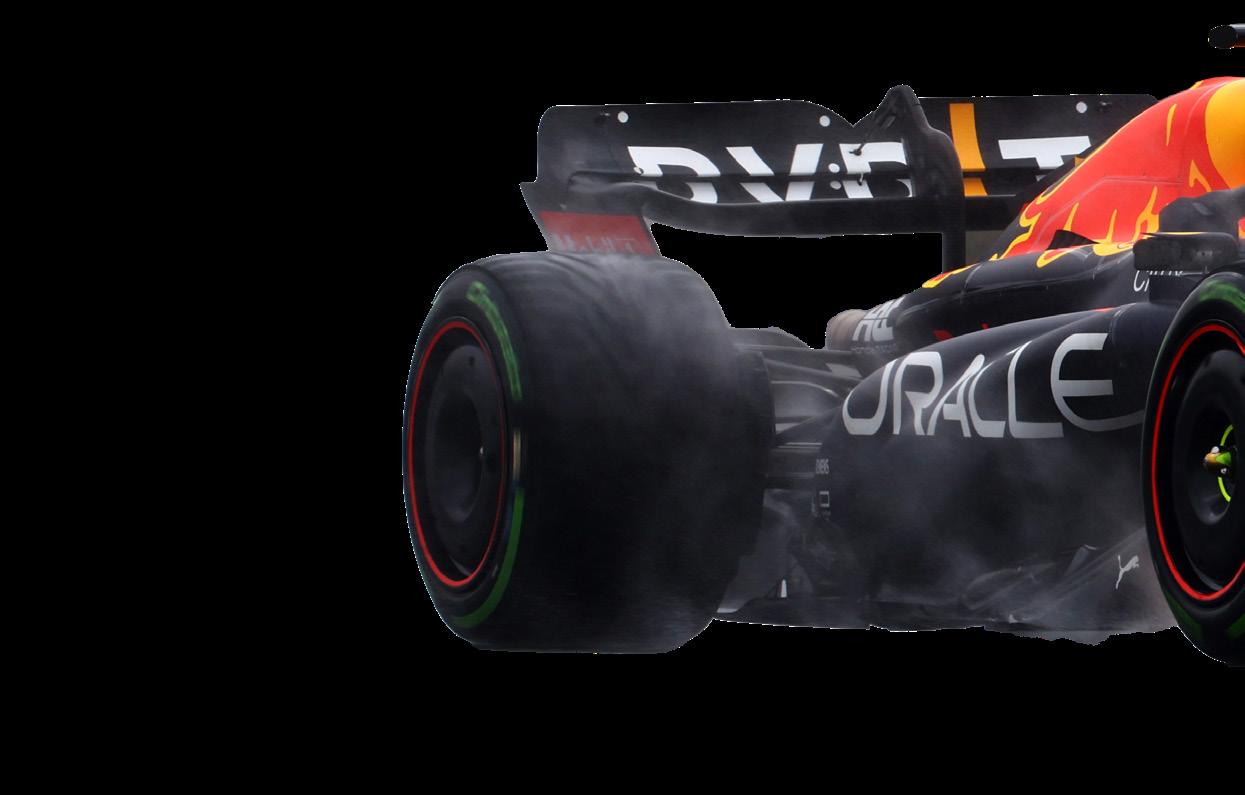



 WRITTEN BY: TILLY KENYON
WRITTEN BY: TILLY KENYON



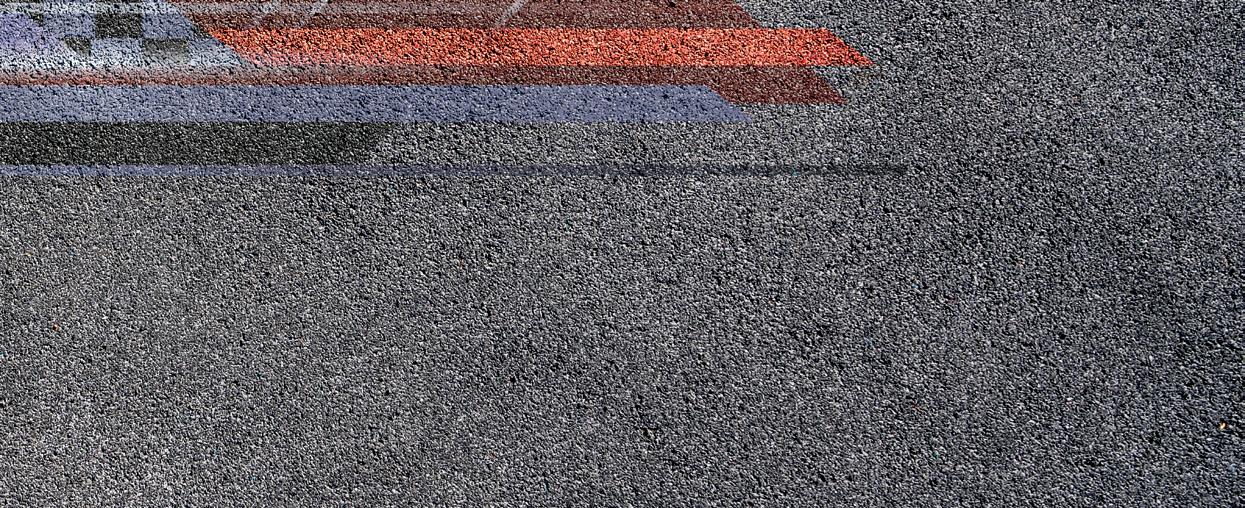






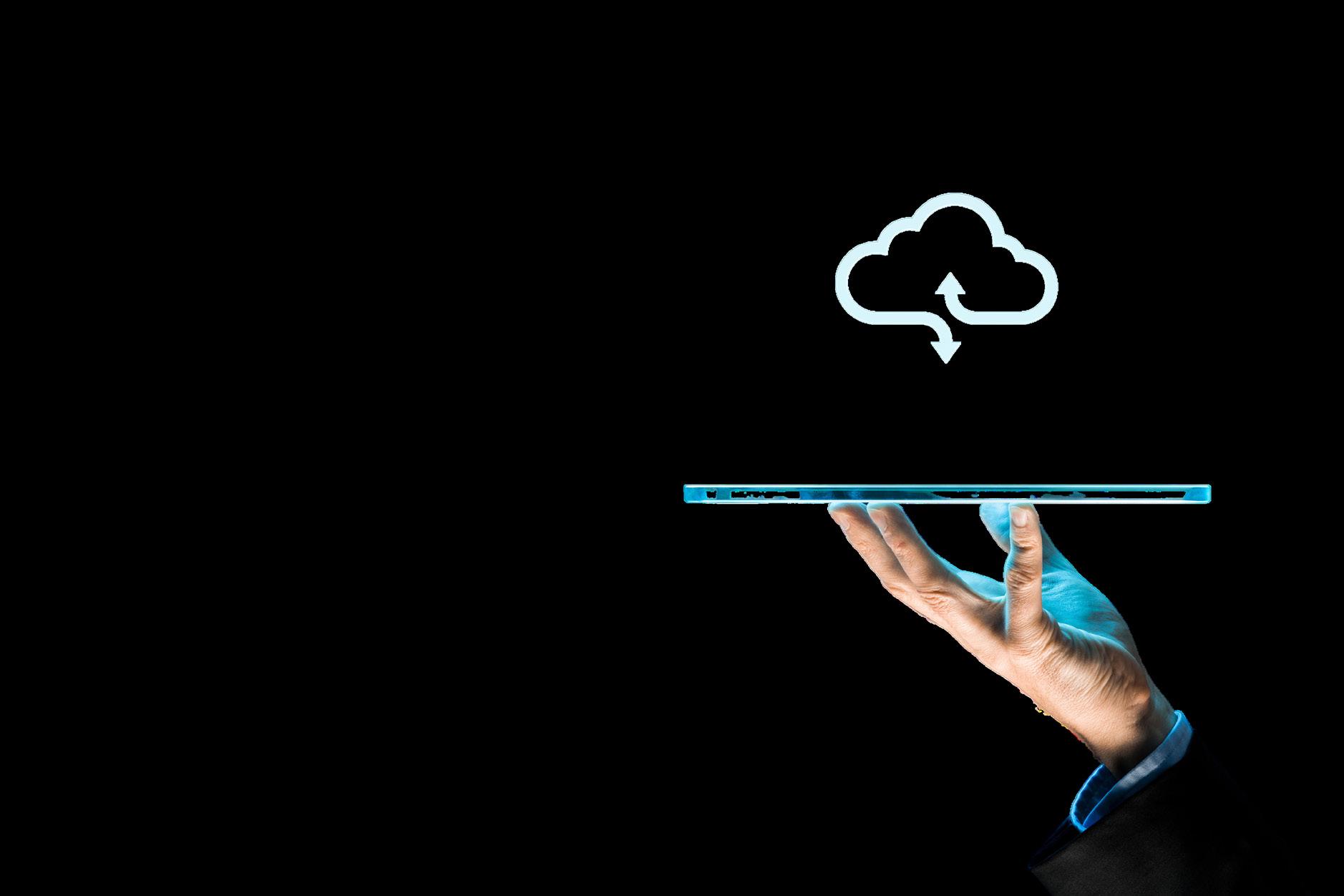

Adata-rich industry, Formula 1 pushes the latest technological boundaries as well as speed. Oracle Red Bull Racing recently had one of its most successful seasons in recent years, achieving 23 podium finishes and Max Verstappen winning the driver’s championship in 2021.

During last season, the team took advantage of Oracle Cloud Infrastructure (OCI), which helped them to increase the number of simulations they ran by 25x to improve the accuracy of their predictions and sharpen their decision-making.
An important part of the sport is decision making, allowing race strategists more time to make the right call, the team also accelerated simulation speed by 10x. OCI helped to reduce the cost of running billions of simulations, allowing the team to improve performance on the track, which is critical for success under F1’s stringent spending regulations.
This season, OCI will enable the Oracle Red Bull Racing Team to expand the volume and variety of data they analyse and increase the speed at which simulations run in order to better predict tactics that will hopefully lead to the podium.
“The presence of Oracle, one of the world’s largest cloud technology companies, as title partner not only signals huge confidence in Red Bull Racing’s ability to lead the technology race on track, it will also enable us to drive forward our ambitions for fan engagement, a core tenet of our marketing strategy,” said Oliver Hughes, chief marketing officer, Oracle Red Bull Racing.
“We want to take fans with us on our competitive journey in F1, putting them right at the heart of the racing action and Oracle’s world class innovation and technology will help us achieve that goal."
Engaging fans on and off the track
Oracle Red Bull Racing has a vision to deliver the best fan engagement experience across the entertainment industry in a way only Oracle Red Bull Racing can, explained Amr Elrawi, Director, Sports Marketing and Business Development, Oracle.
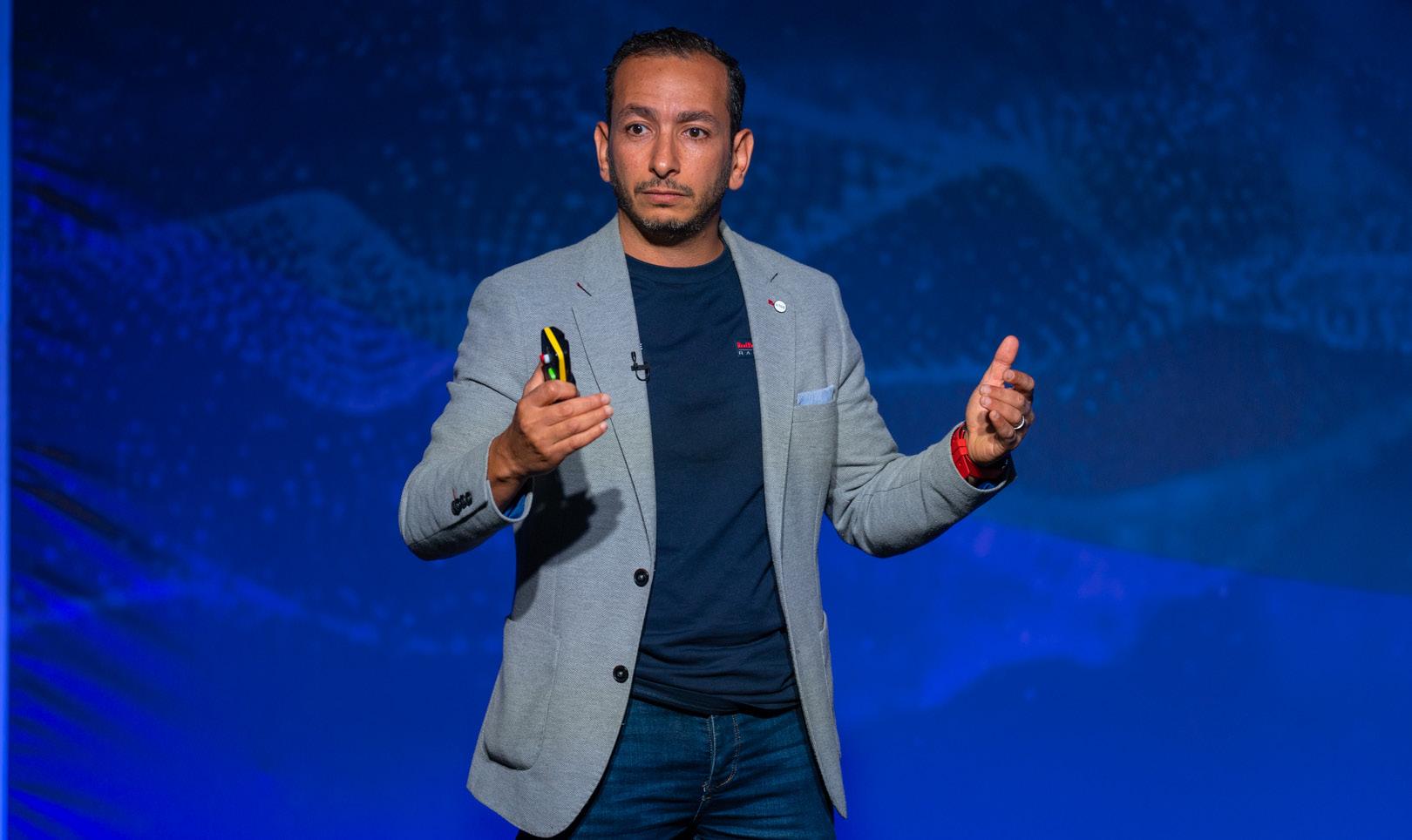
With over 20 years of experience Marketing & Sales within the Telecom, Technology, Financial Services, and Sports industries, Elrawi is an award-winning commercially focused and data-driven business leader. In his current role, he helps sports organisations and partners to use data and technology to win and drive performance.
“At Oracle Red Bull Racing we’re looking to shake things up in Formula 1 and set an example in sports and entertainment. They wanted to find ways, never before explored, to innovatively engage and reward fans, the lifeblood of their team,” explained Elrawi.
In order to deliver value, they are developing a ‘Win:Win:Win’ strategy, for the fans, partners and the team. “A strategy that centred on a clear and compelling value exchange for fans to connect and engage with us. One that really emphasised the “partner” aspect of partnership. That boosted the team’s energy and propelled us to win, on and off the track,” he added.
“At Oracle Red Bull Racing we’re looking to shake things up in Formula 1 and set an example in sports and entertainment”
AMR ELRAWI DIRECTOR, SPORTS MARKETING AND BUSINESS DEVELOPMENT, ORACLE
Focused on understanding their fans at a micro level, Oracle Red Bull Racing is working to give them a personalised experience.
“We are not just looking to help Red Bull Racing deliver the best fan experience in F1 or in Sports, we are looking to deliver the best experience across all alternatives to that of fan’s time and attention,” said Elrawi.
Red Bull combines a number of Oracle products with the existing Red Bull Racing ecosystem, all interconnecting, to deliver what they have labelled the Fan Experience Platform. The aim is to increase the number of touch points Red Bull has with their fan base, to gain a 360 degree view of the fan, and build tailored experiences based on what the fan wants, when they want it and how they want it.
Along with its innovative on-track initiatives, Oracle Red Bull Racing is continuing to deliver off-track experiences to its global fan base. Last season, Oracle and Red Bull Racing launched a first-of-itskind fan loyalty platform powered by OCI — The Red Bull Racing Paddock.
“The Paddock is for the fans, built from the ground up to thank the fans for their support. The Paddock is a completely free loyalty programme designed to engage and reward fans obsessed with Red Bull Racing and F1. No one in F1 has ever succeeded alone and The Paddock is the place for fans to feel a part of the community, part of the team and to feel acknowledged,” commented Elrawi.
According to Red Bull, this new direct line of communication between fans and the team has created increased engagement, with registered fans
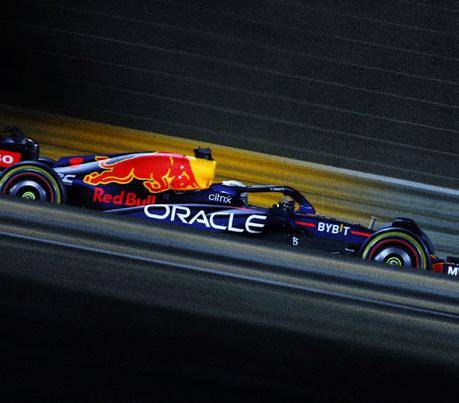
Technology is key to developing F1 cars, and Oracle Red Bull Racing requires a cloud infrastructure platform with high levels of performance, scalability, and security. OCI brings these capabilities enabling Red Bull to expand its use of data science and analytics, so it can accommodate the growing and diversifying engineering work undertaken on the Red Bull Technology Campus.
“Oracle has been a great partner not only because they have the cloud technologies to attack our various business challenges, but because they collaborate with us to find innovative approaches and solutions to keep us competitive,” Christian Horner, OBE, Team Principal and CEO, Oracle Red Bull Racing.
With The Paddock, Oracle Red Bull is creating a new kind of fan engagement, offering money-can’t-buy rewards, VIP curated experiences and fandom memorabilia, all redeemable through points earned just for being a fan.

“Data is the team’s lifeblood. Every element of performance—how we run a race, how we develop a car, how we select and analyse drivers—it’s all driven by data”
CHRISTIAN HORNER CEO AND TEAM PRINCIPAL, ORACLE RED BULL RACING
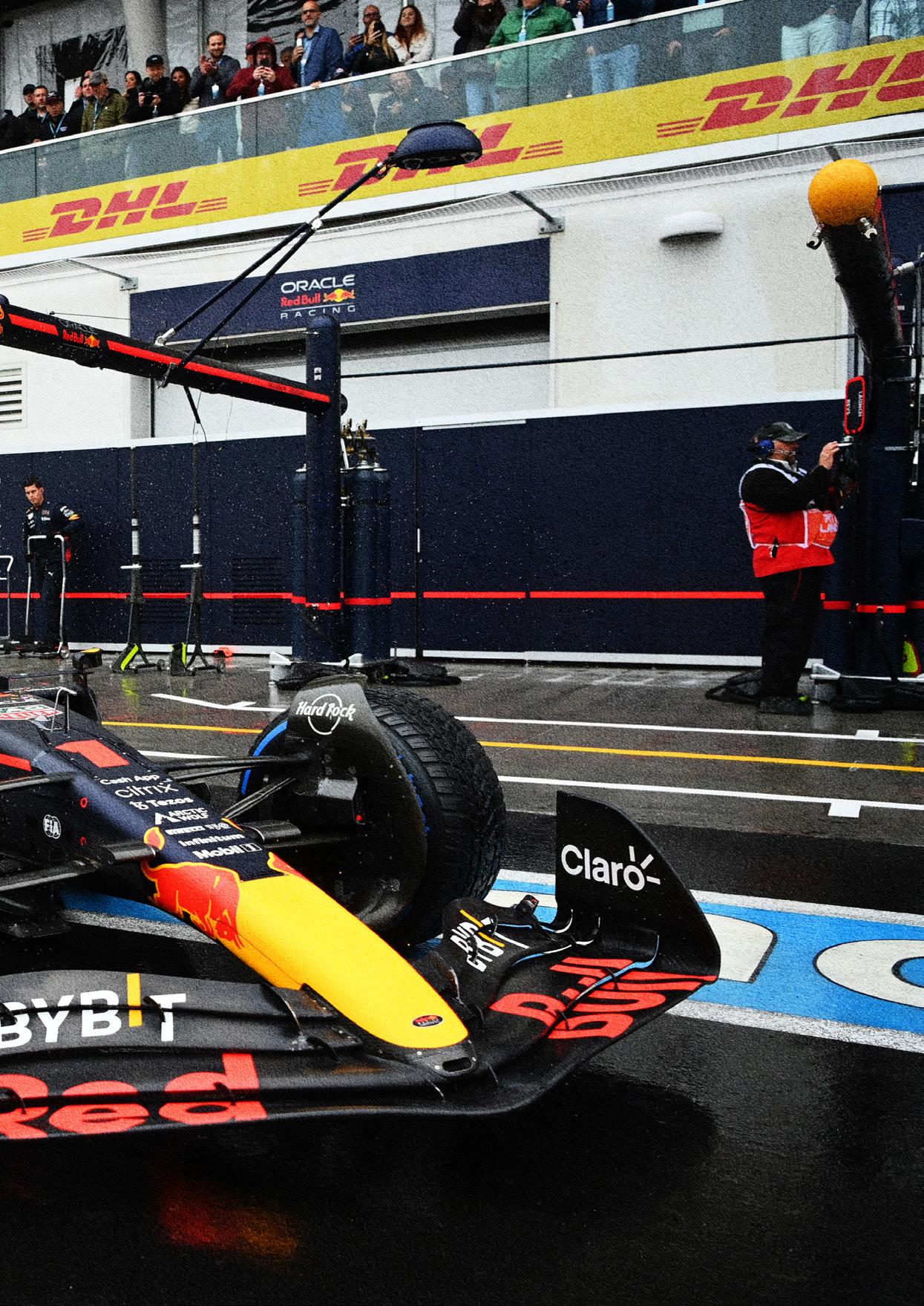
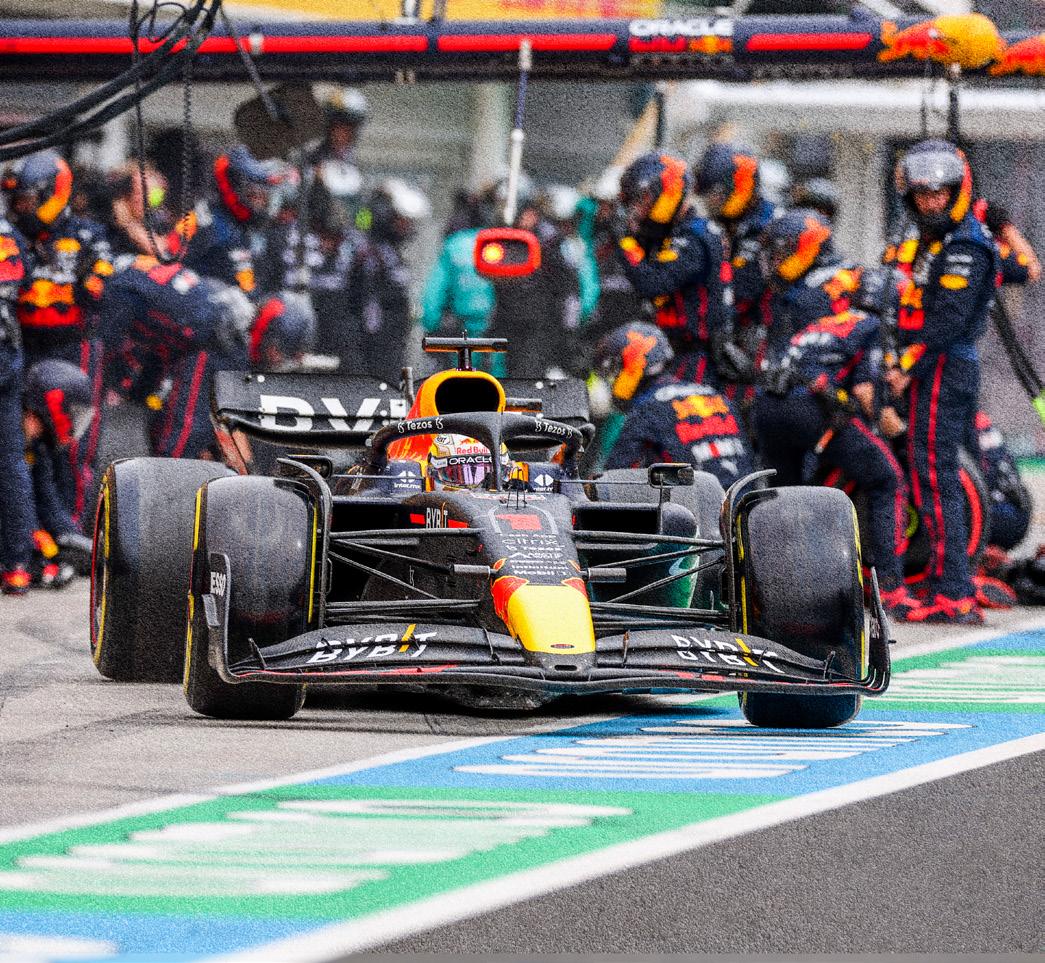
Taking to the Tech & AI stage at this year’s TECH LIVE LONDON, Amr
Elrawi, Oracle’s Director, Sports Marketing and Business Development, gave a presentation on the partnership, entitled ‘Winning with Data in Sports’.
Elrawi discussed how Oracle Cloud Infrastructure (OCI) is helping Oracle Red Bull Racing prepare race strategies and
make real-time decisions during races to help them win.
He also spoke about the launch of The Oracle Red Bull Racing Paddock, a platform that lets fans earn points to get exclusive swag and digital downloads. Fans use The Paddock to redeem digital rewards and submit thousands of questions to the team through Oracle CrowdTwist Loyalty and Engagement.
submitting thousands of questions to the team and redeeming 35,000 digital rewards.
Elrawi explained how in sports it is important to reward fans for their engagement with your brand and how gamification is one of the key success factors of The Paddock.
“Last season Oracle Red Bull Racing ran a social treasure hunt by hiding codes on
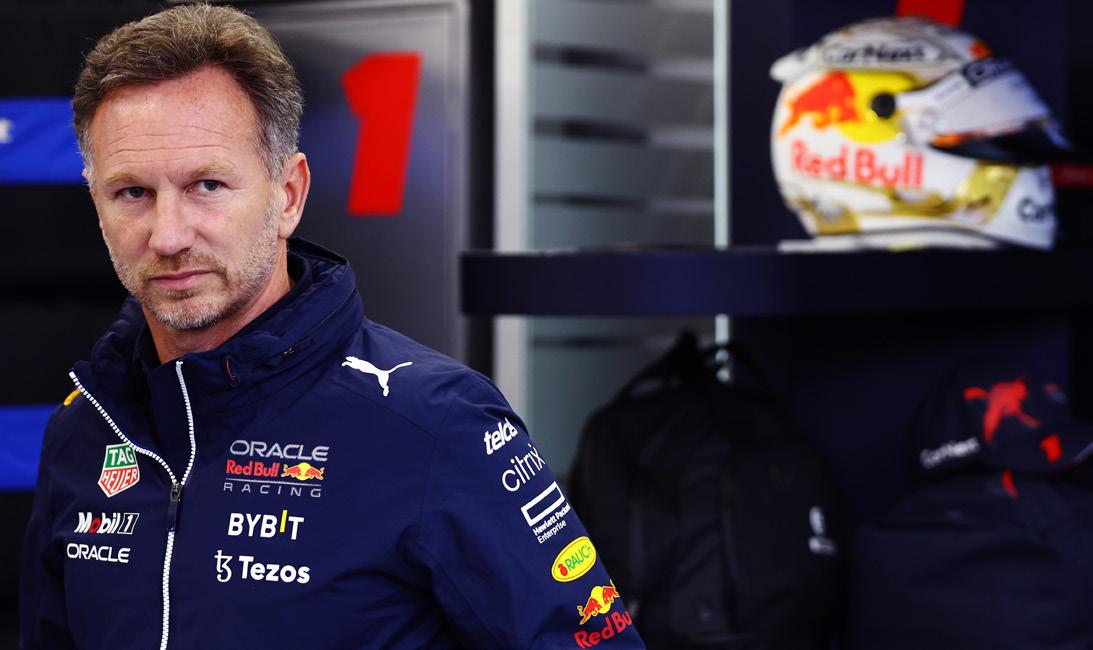
social media posts, and using those codes, you could redeem loyalty points. 18,703 codes were found hidden in our social treasure hunts by fans.”
The Paddock has fans from all over the world from 189 countries. In the first week after launch, Oracle Red Bull Racing saw strong engagement with the platform with an increase in website accounts.
In 2022, the team is planning to incorporate new features and capabilities, including the ability to create usergenerated content, to bring an even deeper layer of personalisation to fans.
Amr Elrawi, director, sports marketing and business development, Oracle, explained: “Our commitment to this partnership reflects our belief that OCI is
“The Paddock is a completely free loyalty program designed to engage and reward fans obsessed with Red Bull Racing and F1”
Oracle Red Bull Racing and the future of Formula One
 OLIVER HUGHES CHIEF MARKETING OFFICER, ORACLE RED BULL RACING
OLIVER HUGHES CHIEF MARKETING OFFICER, ORACLE RED BULL RACING
a strategic weapon on race day. It helps create the most exciting fan experience in sports, and can define the future of F1. Oracle Red Bull Racing is, and will continue to be, the most forward-thinking and innovative F1 team in the world.”

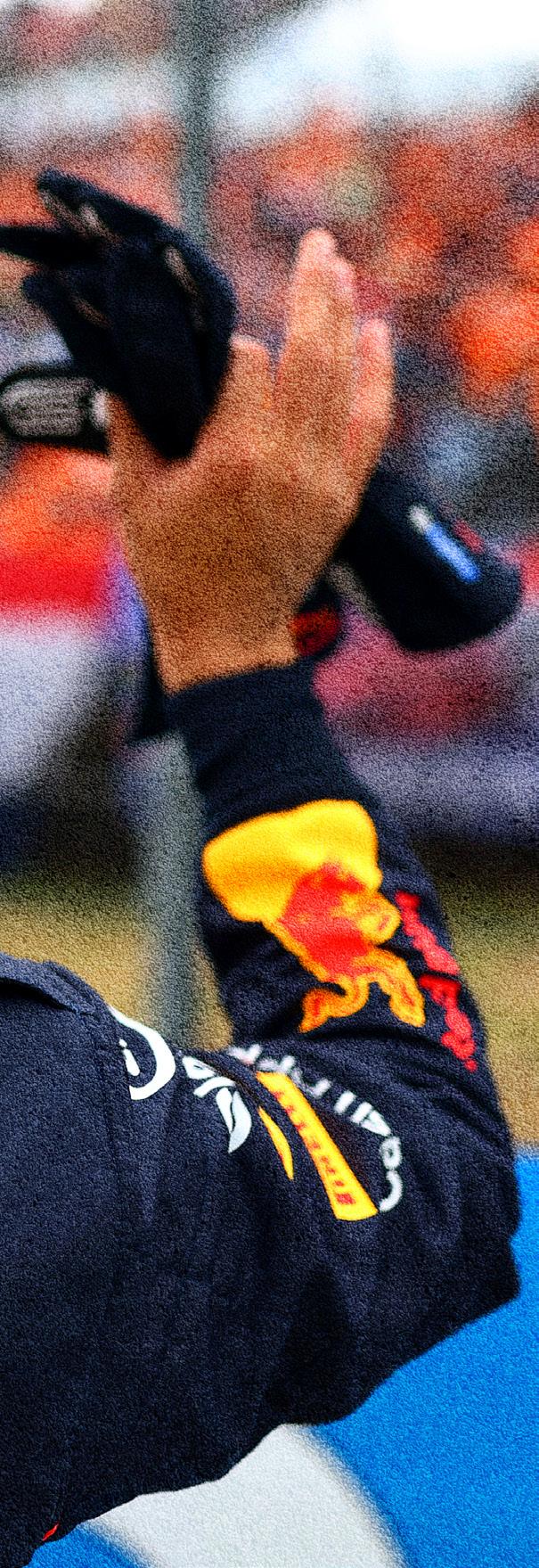
“We want to bring every fan closer to the action, Oracle is allowing us to do that”
Oracle Red Bull Racing Simulator Runs on Oracle Cloud

 PRODUCED BY: KRISTOFER PALMER WRITTEN BY: GEORGIA WILSON
PRODUCED BY: KRISTOFER PALMER WRITTEN BY: GEORGIA WILSON

Flourishing in the wake of rising disruption, it is estimated that global spend on services and technologies that enable digital transformation will amount to US$1.8tn by the end of 2022 – an increase of 17.6% in investment compared to 2021.
Despite the need for innovative solutions to tackle growing demands, supply shortages and talent shortages, as well as increase transparency, resilience and agility, it is important to remember that, with more systems, comes new vulnerabilities that need to be protected.
While the benefits are clear, it will be vital to be prepared for accelerated digitalisation and understand the potential cybersecurity implications in the future, as global predictions expect 45% of organisations to experience attacks on their software supply chains by 2025.
Headquartered in Indonesia, Bukalapak’s key challenge is navigating the complex security landscape. According to a report, nearly 20,000 phishing attacks targeting Indonesia have been detected since the start of 2021, with more than one billion exposed credentials identified.
As Head of Information and Cybersecurity at Bukalapak, Yogesh Madaan is tasked with leading the company through its navigation of not only the regional but also the global threat landscape.
“There are a lot of disruptive technologies emerging that are thinking outside of the box when it comes to cybersecurity protection”
YOGESH MADAAN HEAD INFORMATION AND CYBERSECURITY, BUKALAPAK

In the last few months, Indonesia has seen a rise in cybersecurity attacks in the form of stolen data and data breaches. “Indonesia is one of the prime target for financiallymotivated ransomware gangs. In 2021, ~10% of attacks in Indonesia were ransomware attacks, ~15% were unauthorised network access sales, and more than ~50% were database sharing requests,” explains Yogesh.
“Understanding the threats is the first phase; now we need to be one step ahead of these attackers, and this is what we are trying to do at Bukalapak,” he adds.
Developing a proactive security strategy and availability management system where the company can innovate and implement solutions allows Bukalapak to assess the market vulnerabilities and be proactive in its response to securing its critical assets.

“We are ultimately trying to build an infrastructure that is resilient to any attacks. We are building a safer cyberspace for our customers and employees as well as addressing the key security risks ,” says Yogesh.
During the height of the pandemic, one of the biggest threats to organisations was the potential for attackers to use home networks to hack the wider system. “At Bukalapak, we trained our employees on how to secure their home network to educate our employees and raise awareness.
“Awareness is key in cybersecurity for anybody and everybody. These days, human beings are the weak link, so we spend a lot of effort training our employees in cybersecurity for the new technologies, as well as developing a proactive and scalable cybersecurity ecosystem, and finding the right talent,” explains Yogesh.

Joining Bukalapak almost 18 months ago, Yogesh’s role was to conduct an assessment of the current cybersecurity threat landscape at Bukalapak, building on ongoing efforts and establish a long-term strategy to address the future security threats –something many businesses have embarked on post-pandemic.
“I was brought in to harness my experience in the industry to provide a fresh set of eyes to identify the potential gaps and strengthen the Information and Cybersecurity domain. Today, we operate with a strong combination of teams working across vulnerability management, identity and access management, core infrastructure , governance risk and control, data security, and cloud security,” explains Yogesh.
“Our goal is to transform our team from being reactive to proactive, as well as transparent,” he adds. “This is the start of our three-year strategy. On our journey, we are also strengthening end-user security, email protection tools, and building a security operation centre. But this would not have been possible without the support, collaboration, and buy-in from internal teams, C-suite, and our partners.
TITLE: HEAD OF INFORMATION AND CYBERSECURITY
INDUSTRY: INFORMATION TECHNOLOGY
LOCATION: SINGAPORE
Yogesh is the Head Information and Cybersecurity/CISO at Bukalapak. He is a seasoned technology leader with 18+ years of experience in information and Cybersecurity, technology risk management, regulatory compliance and controls, operational risk, data protection, cloud risk management, compliance- and conduct-related topics, outsourcing, IT account management and production support.
Yogesh holds an MBA in IT Systems, prior to joining Bukalapak, Yogesh spent his career as Head of Information and Cybersecurity, Singapore at Standard Chartered Bank in 2020 and two years as Director – APAC Technology Risk Manager at UBS AG.
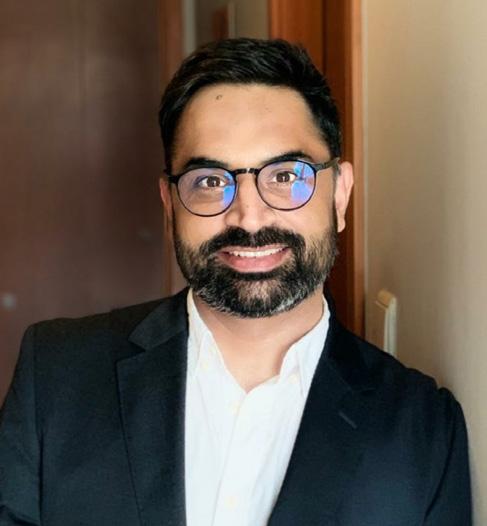
They have helped us to transform our cybersecurity posture and, where required, have guided guide us in the right direction.”
Furthering its commitments to enabling a proactive cybersecurity approach, Bukalapak has been in partnership with Ensign – who helps companies to maximise both value and advantages by providing the most robust cyber-defence capabilities and services.
Security Operation Centre with Ensign Keen to partner with an organisation that could help drive the development of its Security Operation Centre (SOC), Yogesh explains why Ensign was the perfect partner for the task: “We spent conscious efforts to find the right partner who fits with our security strategy. Ever since onboarding Ensign, the organisation has been proactive
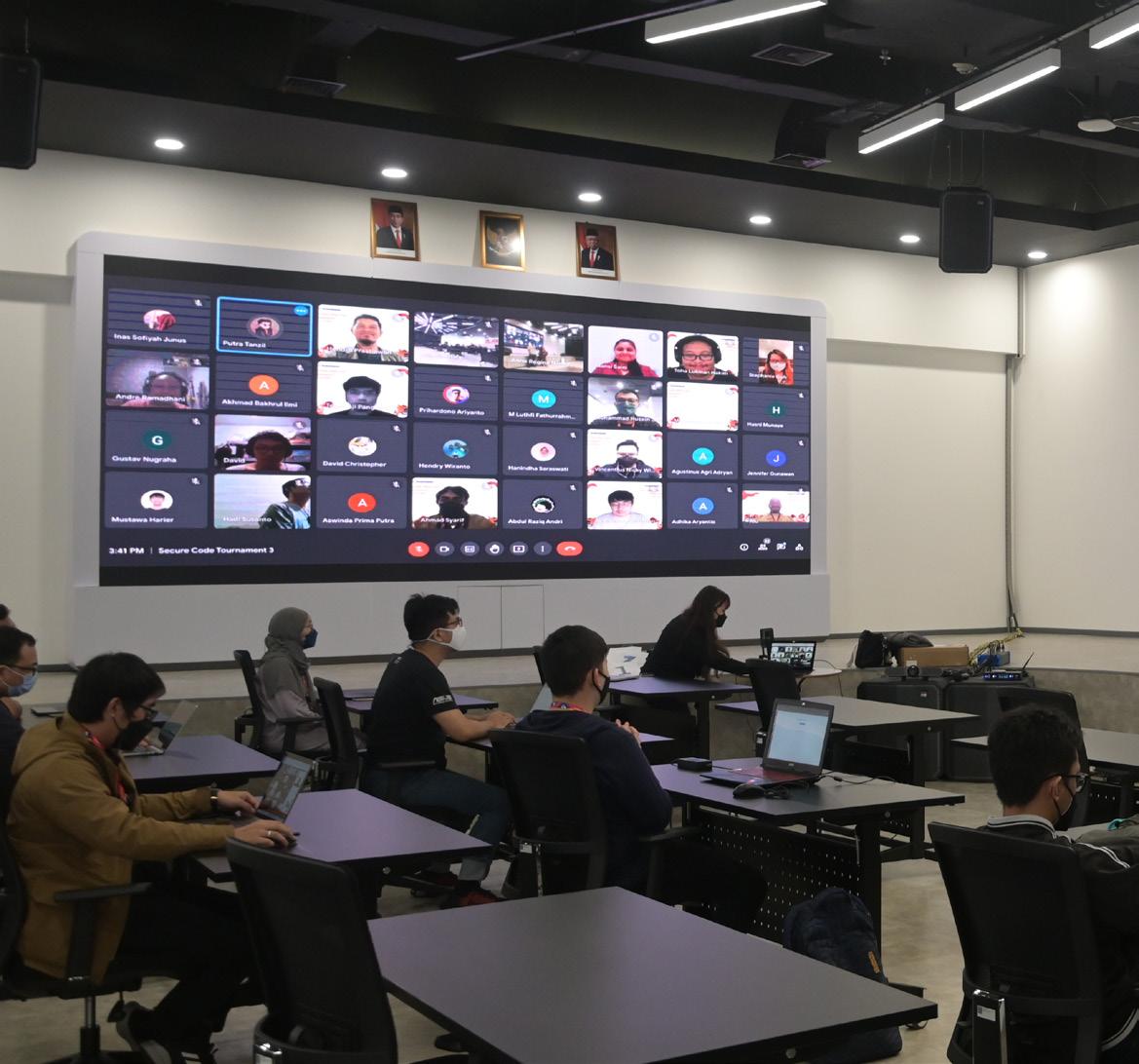 BUKALAPAK'S 3RD SECURECODE WARRIOR 3RD TOURNAMENT, AN INTERNAL CODING SECURITY COMPETITION FOR THE COMPANY'S SOFTWARE ENGINEERS
BUKALAPAK'S 3RD SECURECODE WARRIOR 3RD TOURNAMENT, AN INTERNAL CODING SECURITY COMPETITION FOR THE COMPANY'S SOFTWARE ENGINEERS

“Understanding the threats is the first phase; now we need to be one step ahead of these attackers”
CYBERSECURITY,
We provide advice and recommendations that can enhance an organisation's cyber posture, strategy, and risk management.
Our in-house R&D unit is the core of all our capabilities, originating AI-powered, patented cybersecurity solutions.
We design and build cybersecurity infrastructure, implementing best-of-breed solutions as well as secure-by-design and zero-trust principles.
We provide end-to-end cybersecurity management services through advanced solutions in threat detection, response and monitoring.
In the event of a cyber breach, our team of experts has the means and experience to help mitigate threats, and get organisations up and running in no time.
We believe that cybersecurity is a journey where organisations must constantly and progressively improve to remain cyber secure. To achieve this, Ensign adopts a strategic approach in cybersecurity through our end-to-end capabilities in Consult, Design & Build, Operate, and Respond, in all domains of IT, OT, IoT, Cloud and 5G. These four capabilities are underpinned by Innovate, which is powered by Ensign Labs, our R&D unit that performs deep research into cybersecurity threats and solutions. This approach provides us with the ability, and agility to help our clients enhance their cybersecurity posture and constantly stay up-to-date to “meet the threat”.
We caught up with Charles Ng, Executive Vice President for International Business & Key Accounts for Ensign InfoSecurity, to talk about cybersecurity, R&D and Bukalapak.
“As Asia’s largest pure-play cybersecurity services provider, Ensign’s robust capabilities and end-to-end portfolio of cybersecurity solutions and services put us in good stead to help our clients enhance their security posture as they invest in digital technologies, and accelerate digital transformation,” Charles Ng says.
“We invest a significant amount of our revenue in R&D, and this translates into tangible cybersecurity outcomes and benefits for our clients. It allows us to design and deploy highly customised cyber solutions not found in
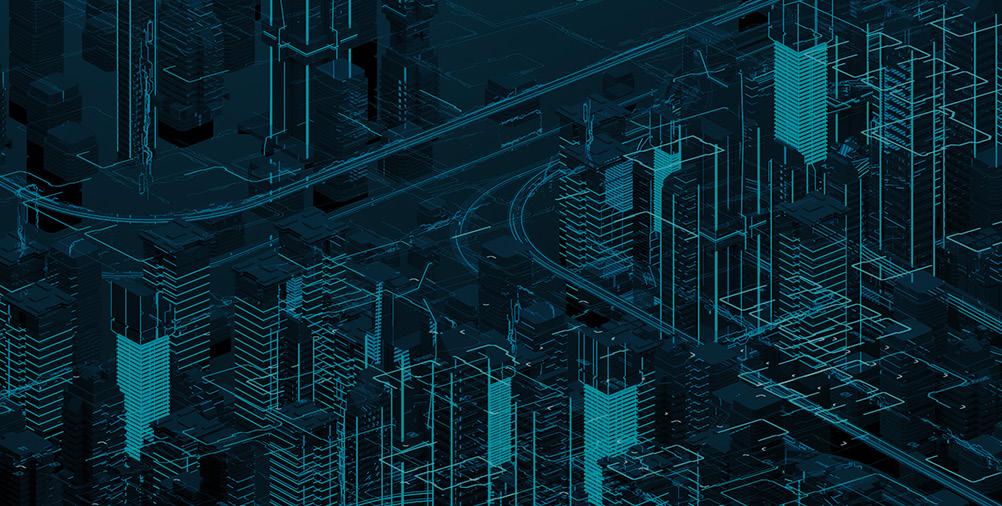
existing off-the-shelf products. Having released three patents which have been recognised as some of the best AIpowered Cyber Analytics innovations and technologies in the industry, we can address our clients’ unique security challenges. By incorporating our innovations into their systems for more accurate and efficient threat detection, we enable them to adopt a more proactive, predictive security posture to stay ahead of threat actors.”
“Ensign’s footprint across Asia, covering Singapore, Malaysia, Indonesia, Australia, Hong Kong, and South Korea is an important differentiator, especially for Indonesia-based Bukalapak. The breadth and depth of our expertise and solutions is the key reason that organisations across different geographies and industries choose to partner with us.”
Ensign’s partnership with Bukalapak
Founded in 2010, Bukalapak is Indonesia’s leading and first publicly-listed tech company dedicated to providing a fair economy for all through its creation of an online marketplace, online-to-offline platform, as well as specialised platforms. An advocate of cybersecurity, the company searched for a trusted partner who could understand their threat environment and provide end-to-end solutions. Ensign stood out with its strong capabilities - i.e., consult, design & build, operate, and respond - along with its R&D and significant coverage in Asia.
Ng adds, “Having to always be ahead of the game, we are committed to give our best to Bukalapak.”
Learn more
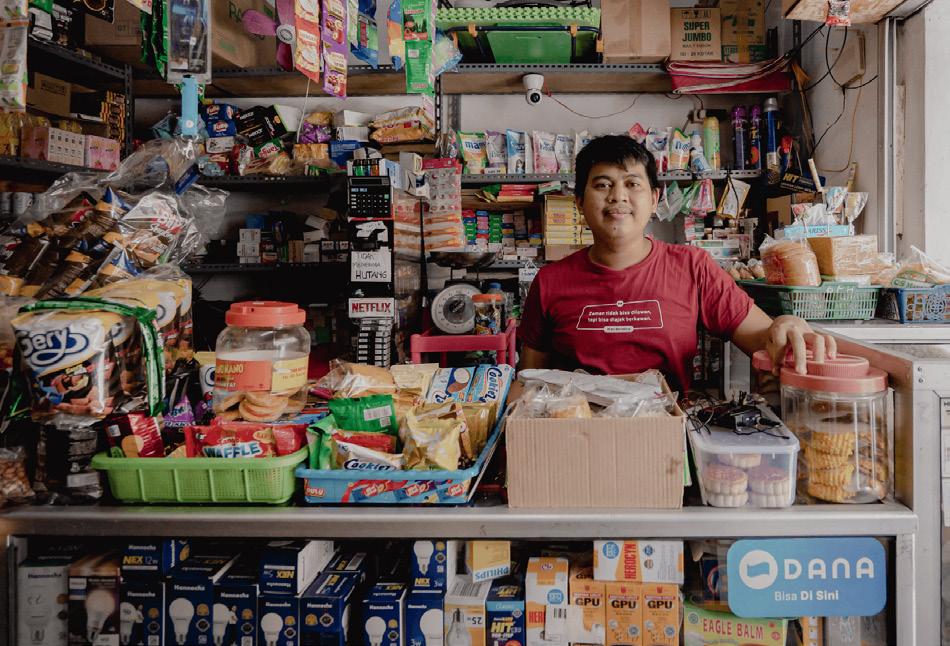

“We are adopting a coordinated approach to safeguard our important entities and systems”
and supportive in addressing our security concerns. The staff are very knowledgeable in their respective domains to help us build a SOC –which we have been working on for the last three months – and guide us on various cybersecurity-related issues. Ensign has huge experience in building SOCs, working with many organisations in Indonesia and Singapore; they have a huge ecosystem of partnerships.”
Number of Employees
around resilience, which is important in the current cyber landscape.
“We are building a resilient infrastructure by adopting a coordinated approach to safeguard our important entities and systems,” Yogesh says. “We are also dedicated to building a safer cyberspace with secure authentications and authorisations for both our employees and customers to ensure that they continue to feel cyber safe.
Looking to the future, Yogesh explains that future strategies will continue to be centred
With every development, Yogesh explains the importance of scalability and the need for developing talent: “When it comes to

“We chose the holistic Qualys VMDR solution for an accurate and complete picture of all our IT assets’ vulnerability and compliance status with insights into the most severe threats so we can respond quickly.” Yogesh Madaan, Chief Information & Security Officer, Bukalapak
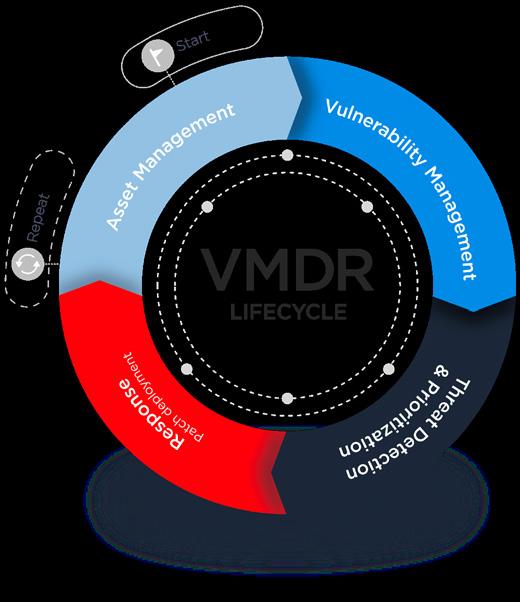
As a leading online marketplace in Indonesia, Bukalapak chose Qualys’ award winning Vulnerability Management, Detection and Response (VMDR) to strengthen its overall security posture.
Qualys VMDR provides Bukalapak with a single, end-to-end solution to automatically discover, assess and remediate all of its IT assets for vulnerabilities. Today Bukalapak enjoys a much-reduced attack surface, thanks to Qualys.
Learn more
developing a vibrant cybersecurity ecosystem, it is important that our solutions are scalable. We are also committed to growing our talent when it comes to cybersecurity and training our people in the right way. The industry is a very evolving field right now, so we must adopt a holistic view in order to ensure that we can deal with future challenges.”
Dedicated to being one of the cyber safe companies, the next 12 to 18 months will be centred around people, processes and technology for Bukalapak, a trend that is mirrored across industry as the world becomes more connected than ever.
“Automation is becoming increasingly important for the cybersecurity industry, along with data-driven analysis, and artificial intelligence (AI). There is a lot of work to be done, and I want to make sure we have the
Application Security with Imperva
To ensure resilient security from the application security perspective, Bukalapak partnered with Imperva to simplify its application security posture. Web application attacks prevent important transactions and steal sensitive data. “Imperva Web Application Firewall (WAF) stops these attacks with near-zero false positives and a global SOC to ensure your organisation is protected from the latest attacks minutes after they are discovered in the wild. “We were looking for a tool, one that can help us meet our requirements and Imperva fits in well,” explains Yogesh.
Vulnerability Management is a key security domain and after we moved to Qualys our reporting has gotten much better. Qualys solutions make our job easier because of the accuracy. Our teams can trust that the vulnerabilities identified are correct and accurate, and it leads to better health and better trust. Qualys provides us with real- time transparent data on the vulnerable systems which enables us to act in time and secure our systems.
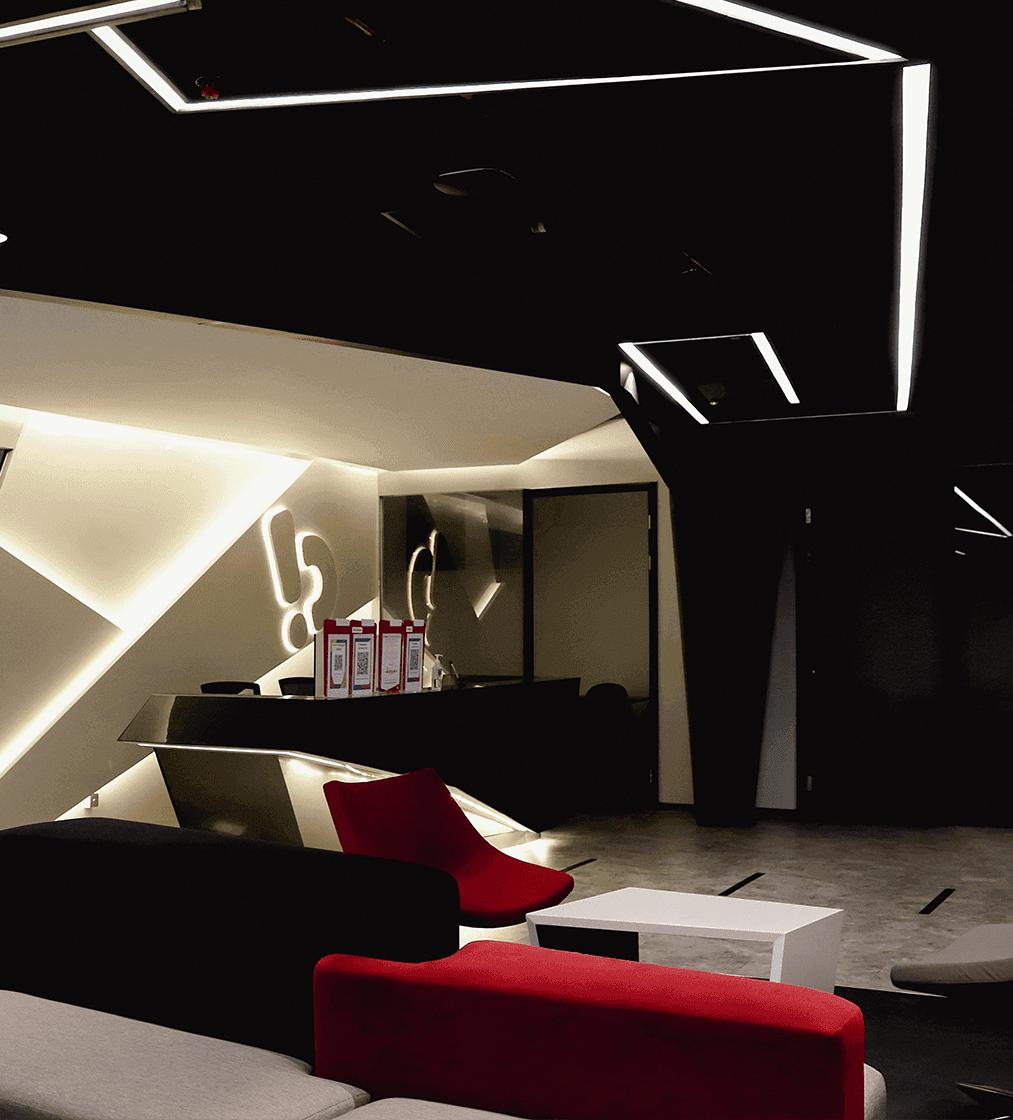
talent to back up these trends and be able to identify and address any vulnerabilities,” says Yogesh.
“There are a lot of disruptive technologies emerging that are thinking outside of the box when it comes to cybersecurity protection. Ransomware for example has become a menace in the world right now. While it's hard to stop, there are companies developing disruptive technologies to do just that.”
Yogesh concludes by commenting on the rise in geopolitical tensions and their impact on the cybersecurity landscape: “Physical threats such as the war in Russia and Ukraine also enter into the cyber world, and attacks have become more prominent. It will be important as we become increasingly more connected to understand the attack surface and how we can protect it. Important elements in the future will be:
the threat
access management
awareness

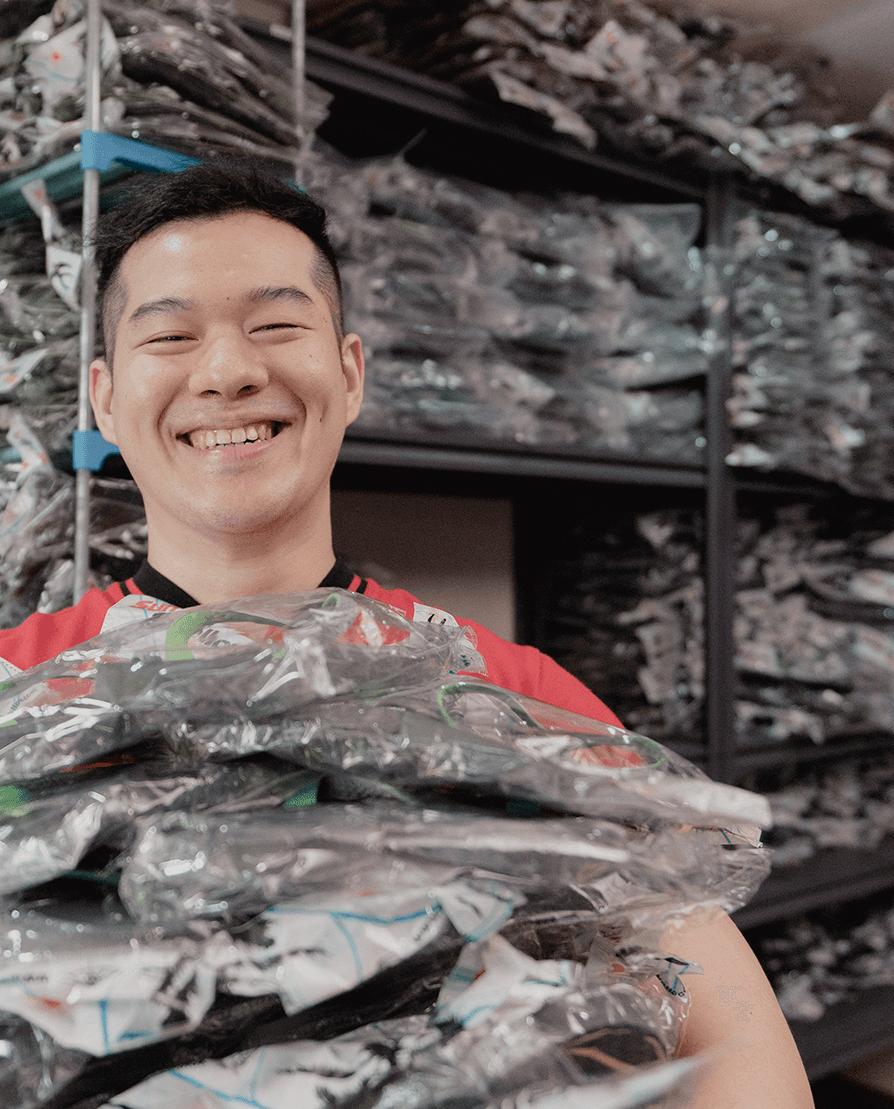
We spoke to Palo Alto’s Simon Croker about this growing trend and why the enterprise is turning towards this approach in the wake of security concerns
 BY: ALEX TUCK
BY: ALEX TUCK
Over the last two years, organisations have expanded their use of cloud environments by more than 25%.
Now, though, many are struggling to manage the technical complexity of cloud migration. Gartner has been one of the prominent voices for the enterprise in recent times, particularly when it comes to weighing up the benefits of vendor consolidation in this cloud-dominated market. In fact, vendor consolidation was one of their Top 7 Trends in Cybersecurity for 2022, with Susan Moore, Communications Director of Asia Pacific for Gartner, stating in April this year: “Security products are converging. Vendors are consolidating security functions into single platforms and introducing pricing
and licensing options to make packaged solutions more attractive.
“While it may introduce new challenges – such as reduced negotiating power and potential single points of failure – Gartner sees consolidation as a welcome trend that should reduce complexity, cut costs and improve efficiency, leading to better overall security.”
As more cybersecurity point solutions come to market, the leading technology consultants believe that security and risk management leaders have reached the tipping point for vendor integration and management, claiming they must ‘rationalise their information security portfolio to determine if a consolidation strategy or best-of-breed is the right approach’.




So, does a multi-vendor approach really result in inconsistent and subpar security? And are there ever benefits to multi-vendor or this ‘best of breed’ approach?
At Palo Alto Networks, a world leader in cybersecurity, its expanding product portfolio across network security, cloud security and security operations is paying
dividends as customers look to reduce their vendor footprint. Enabling the ‘Zero Trust Enterprise’, responding to a security incident, and partnering to deliver better security outcomes are its bread-and-butter through a world-class partner ecosystem.

Simon Croker is the Senior Director for Systems Engineering at Palo Alto Networks, UK&I, having previously been with Juniper Networks for 14 years. In his role, he is responsible for all of the technical presales engagements on the territory. Croker’s eight years with the company has seen him witness its growth from a single-point product company to a portfolio company around cybersecurity.
When Croker is asked about the recent buzzwords around a ‘single pane of glass’, where there’s supposedly an avalanche of
“Vendors are consolidating security functions into single platforms and introducing pricing and licensing options to make packaged solutions more attractive”
cost efficiencies, better visibility, and potentially better security around having one platform, Croker thinks there’s a misunderstanding in the industry for those outside cyber circles.
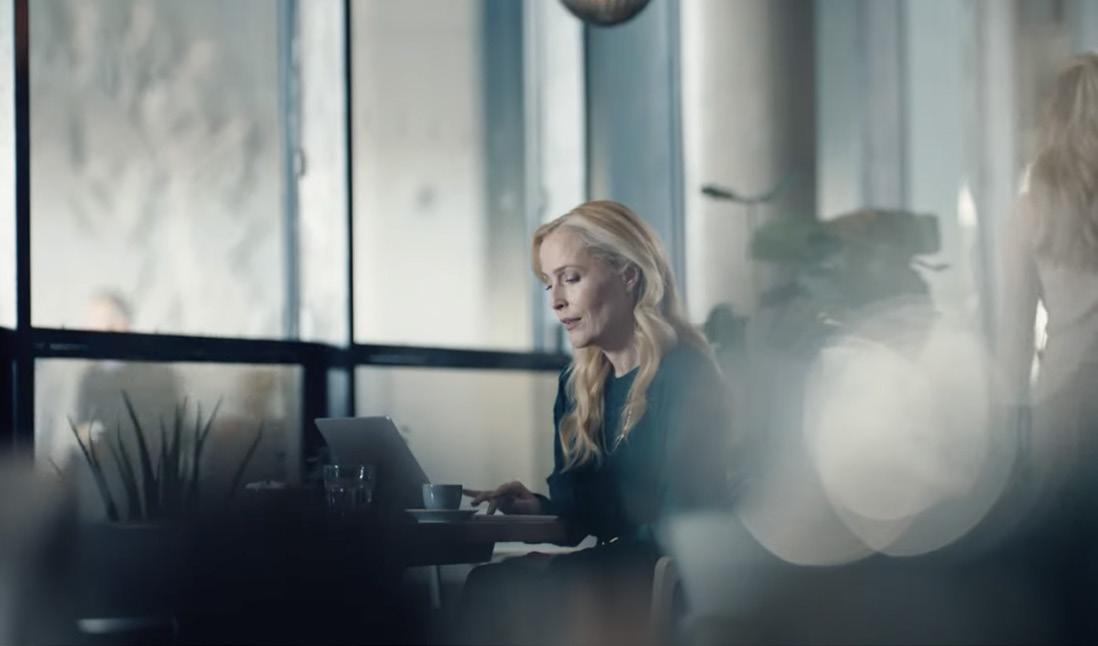
“I think there's this naive image in a lot of people's minds, the layman's mind, that a business, for cybersecurity, has a handful of vendors, big household names, to handle their web gateway, email system, and so on, but the actual reality is that they've got hundreds.”
With this way of thinking, consolidation means bringing a dozen or so vendors down to a couple, but in truth, Croker adds that “many of the larger enterprise businesses have hundreds of solutions”.
“Everywhere from the manufacturing floor through to the office, the door entry
systems…it can number 150 and counting. A point product solution to fix these individual elements adds to the complexity, the management and the overheads.”
Are multiple point products contributing to the cyber talent crisis?

Croker explains that technology specialists can sometimes want to experience the ‘greener grass’ of working for a vendor like a cloud service provider, but it creates a problem for business as end-users as they struggle to recruit cybersecurity-aware professionals who can handle the sheer number of point solutions.
“So that's where this consolidation comes in. Palo Alto may go in there
Wherever work happens, cyber threats are watching.
“There is no mythical nirvana of a single pane of glass”
SIMON CROCKER SENIOR DIRECTOR FOR SYSTEMS ENGINEERING, PALO ALTO NETWORKS, UK&I
and say, ‘Right, we're going to do a considerable consolidation for you, let's say, 20 different point products down to two or three’. Using our portfolio, that would have a massive impact in a positive way to that customer’s security, posture, simplification, ease of management.”
Croker adds: “There is no mythical nirvana of a single pane of glass, but we can provide a single management for our solutions –just not for the other 110 that you've got in your network!”
According to Croker, “the governance risk and compliance teams need a bigger voice around what's going on in some of these organisations”.
“While a CIO may have views on security posture, the GRC need to look at the risk of having way too many solutions in a business around security, because the more complexity that you bring into that business, and into that architecture and your security posture, the bigger the likelihood is that there's going to be a mistake made. Especially when you have overworked human intervention. These are the little chinks in the armour that the adversaries will exploit for sure. Tightening up that security posture is what is needed.”
Palo Alto Networks don't profess to be able to do everything within cybersecurity, but the
SIMON CROCKER SENIOR DIRECTOR FOR SYSTEMS ENGINEERING, PALO ALTO NETWORKS, UK&Icompany does know where to play and how to strengthen consolidation around everything from the endpoint and the cloud to the network.
“We have good collaboration through APIs and automation with other vendors. We are not one of those vendors that want world domination. We work with a whole host of

“The governance risk and compliance teams need a bigger voice around what's going on in some of these organisations”

“In a point product approach, endpoint protection technologies are divided so that one tool can effectively carry out a particular role such as backing up and storing relevant information for backup software options. Because the software is more specific, businesses expect that the solution will smoothly execute their tasks to near perfection, especially when they subscribe to industry-leading solutions. For businesses looking for an added layer of security to their IT network, combining the services of multiple vendors is the perfect approach.”
“The more scalable integrated cybersecurity suite is a robust blend of endpoint protection technologies and an ecosystem of tools and partners. It serves as a protection against malware and other cyber threats. Other capabilities include encryption facilitation, antivirus, unwarranted access prevention, and DLP, which fortifies overall security and cuts down organisational expenses. It is an integrated and centralised method of safeguarding different endpoints like laptops, servers, smartphones and other IoT devices linked to the establishment’s IT network.” Dora Tudor, Cyber Expert, Heimdal Security

vendors, integrating with solutions like email systems or web applications firewalls (WAF), the other sort of components that you would need in your cybersecurity posture. We can definitely add value to intelligence feeds into that,” says Croker.
An example of this is Palo Alto’s new Web Application and API Security (Outof-Band WAAS) functionality. Through comprehensive detection and prevention of web application vulnerabilities and

unsecured APIs, businesses could prevent multimillion dollar security incidents.
President, Prisma Cloud, Palo Alto Networks.
“By adding Out-of-Band WAAS to Prisma Cloud, we are empowering customers with flexible security options that fit their evolving application needs”.
Palo Alto’s friendly manner of approach to integration with third parties demonstrates willingness to collaborate but also to share intel. Without this, Croker suggests: “You're just going to get a patchy response and inconsistent reporting to the same system. You are not going to get false positives. You're going to just end up in a mess to be honest. So that's why we collaborate.”

“Companies no longer have to decide between application security and performance,” says Ankur Shah, Senior Vice
 BY: TOM VENTURO
BY: TOM VENTURO

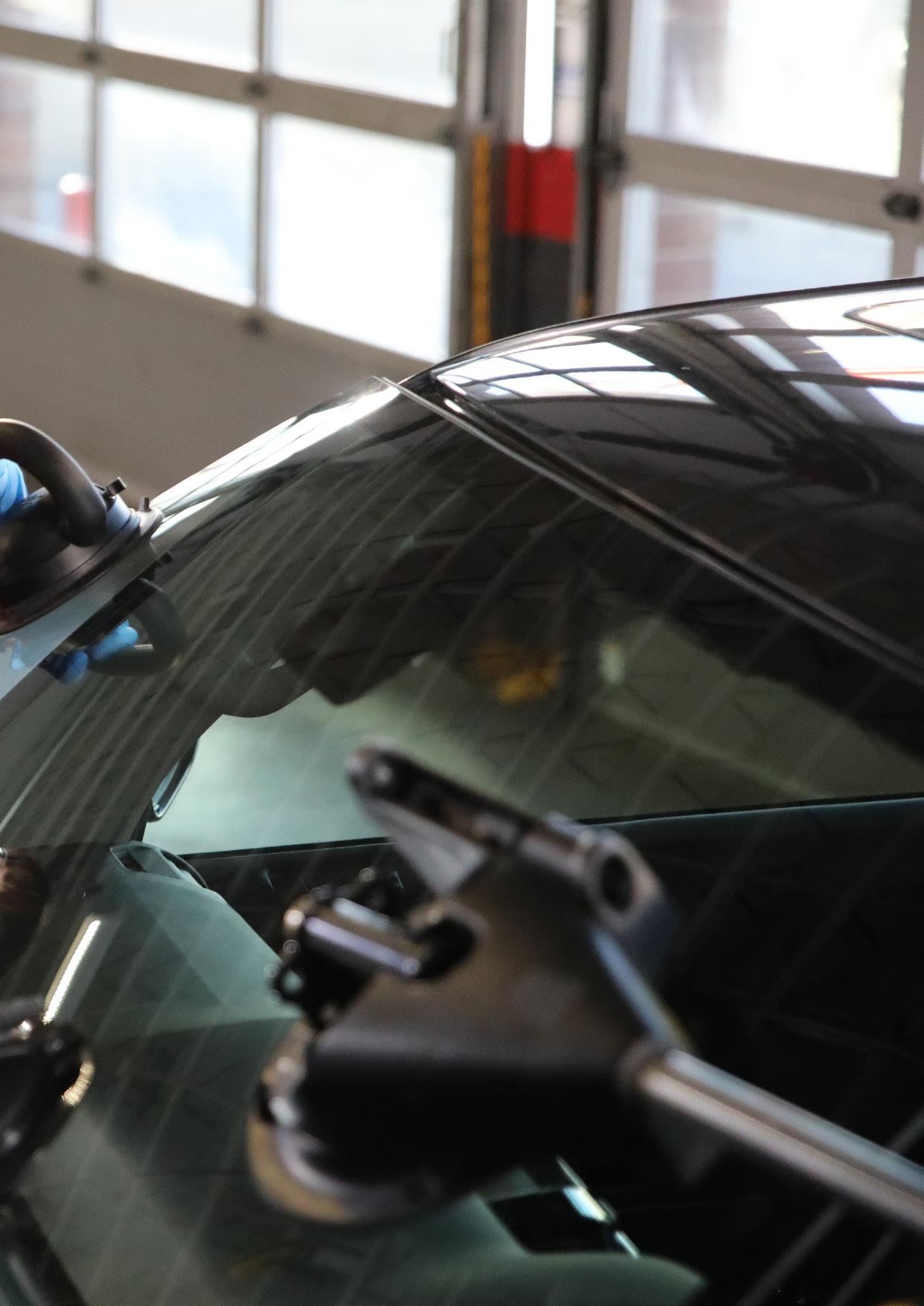
Making its mark in the automotive industry, Belron offers vehicle glass repair, replacement and recalibration services.
Belron is heavily dependent on the technicians and other members of staff that work to keep the company running – and included within that team is the company’s Global Chief Information Security Officer, Anthony Foust.
“This has to be one of my favourite companies to work for because of the culture that we have,” says Foust.
“It is very caring, very diverse and very inclusive. It’s a team where it doesn't matter what country you're in, where you're from, or what role you're in because everybody cares about the success of everyone else,” he continues.
Committed to excellent customer service and satisfaction, Belron is in a period of transition to continue meeting and exceeding customers’ needs – as Foust notes: “We have started to make some fundamental changes within the company. The organisation today is starting to undergo a transformation of technology and business process and maturity overall.
“Our technologies weren't really well cared for and, as a result, the technologies themselves – in terms of their capacity – didn't really keep up with the business demand.” explains Foust.

As it continues on its digital transformation journey, Belron’s Anthony Foust explains how the company’s cyber capabilities are leading the way

“Through this transformation journey, we have recognised that we not only need to uplift these core technologies for the business, but we also need to mature and modernise our cybersecurity and privacy capabilities.”
It is essential that the company modernises its technology while it continues to drive forward its goal of flipping a negative experience on its head, such as a windshield or windscreen breakage, instead providing customers with the best service experience possible.

“This is a company that truly does care about its customers, about its employees and the data that's associated with them.
“Now, we need to make sure that we are maturing ourselves and building up this capability within our organisation, which is world-class across the board, no matter what country we're in or what brand we're part of. We want to really make sure that we are protecting our employees’, customers’ and clients' data to the best of our ability, utilising industry tools and processes that meet or exceed those standards,” continues the Global Chief Information Security Officer.
The shareholders and the executive team have really made a strong commitment to cybersecurity,” explains Foust
“AI and machine learning technologies are going to be critical for cybersecurity in the future. The noise is just tremendous”
ANTHONY FOUST GLOBAL CHIEF INFORMATION SECURITY OFFICER, BELRON
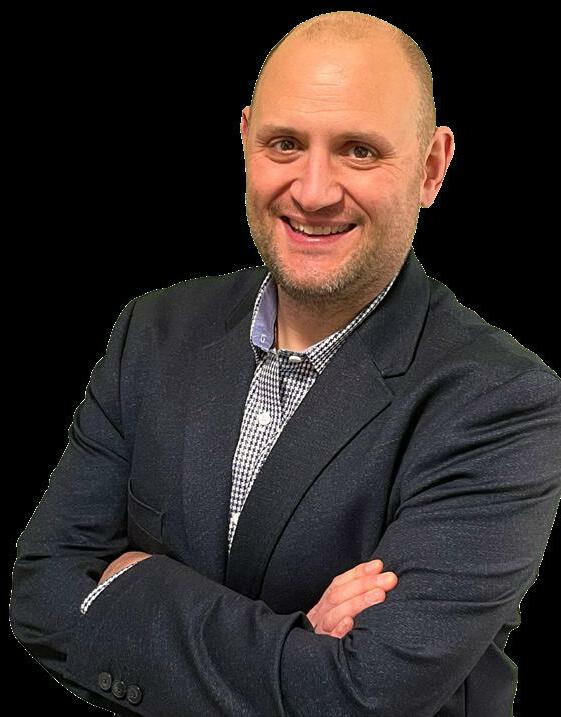
Still in the early stages of its transformation journey, Foust explains that Belron is keen not to extend itself too much in fear of things slipping through the cracks or technologies being implemented incorrectly.
“We're not trying to push to the bleeding edge because it is a journey for this organisation. I would say probably what has been unique for us is the pace. In two years, we’ve accomplished the centralisation of our global cyber function, which is the first function to actually be centralised in that space for technology. That was unlike anything that's been done in our technology group before,” Foust says.
“The company traditionally has been decentralised so it's a new way of operating for both the organisation and the team. It has given us the ability to accelerate capability growth, be it via the deployment of new tools and technologies or new processes. That alone has probably taken a unique approach, in terms of how quickly we've been able to scale, build out a team and create a capability that is really mitigating some of our biggest threats and day-to-day risks.”
One key thing that Foust and his team have been able to implement at Belron to support employees is its Integrated Cloud Email Security capability.
“Phishing was very prevalent within the organisation, and it created a lot of noise. Integrated email security has been a really
LOCATION: NORTH CAROLINA, US
Anthony Foust is a 27-year veteran in Information Technology working across several roles and industries and currently serves as the global CISO for Belron. Anthony obtained his MBA from Elon University with a focus on strategy and leadership as well a Master’s degree in Information Security and Privacy from the University of North Carolina Charlotte. He is an active member of the technology community and regularly serves as a guest speaker, panel contributor or moderator. Anthony’s current interests have lately focused on governance, risk and compliance in the areas of international Information Security and
Customers were served in 2021, in more than 30 countries, across six continents.
Mazars consulting services help accelerate the alignment of people, processes, and technology so businesses can move forward in the right direction. We provide end-to-end technology and cybersecurity consulting, implementation, and managed services.

Move forward with Mazars.
Want to learn more about Mazars technology and digital consulting services? Click this link or scan the QR code.


Mazars is a leading international audit, tax and consulting firm, with strong risk, compliance and digital transformational expertise. They have recently embarked on helping Belron, a vehicle glass repair and replacement company, undergo a holistic digital transformation. Although a company like Belron is not the first to come to mind when we think of such transformations, its foresight in doing so, with Mazars’ help, is exceptional.
Asam Malik, Partner, Technology & Digital Consulting practice in the UK, leads technology and digital practice for their clients in the region. His role entails helping clients leverage technology more effectively and helping them manage their risks around technology. “We really look at digital
transformation in a holistic manner,” says Mike Fried, Partner, Technology & Digital Consulting practice in the US, “starting first with business transformation as the overarching foundation, and then digital technologies serving to enable and accelerate a company’s business transformation efforts across people, process and technology solutions.”
In their approach, Mazars uses a comprehensive business and digital transformation framework. “There are really six core layers to help clients achieve their transformation goals,” says Fried. “This includes strategising and developing their

transformation roadmap. Transforming core business functions such as finance, sales and marketing, operations and supply chain, IT and HR. Enabling the business through technology solutions. Enhancing decision making by leveraging data as a competitive advantage. Leading people through the change. And, finally, protecting the business through risk and cyber security solutions.”
“Belron is a valued client, and we really like their culture and core values,” says Fried.
big help for us in reducing that noise in our system and allowing our team to really focus in on signal events – things that really do require a little bit more in-depth analysis, research and investigation to determine if we have a bigger problem,” Foust explains.
As Belron is still in the early stages of this journey, there are a number of technologies Foust and his team are keen to implement. It’s crucial that the implementation of these occurs in a timely fashion to guarantee a robust grace period, where various functions are tested and analysed to ensure they work to the best of their ability.

“AI and machine learning (ML) technologies are going to be critical for cybersecurity in the future. Today, we use AI a lot for helping us detect vulnerabilities and in determining those vulnerabilities that have a real potential for the exposure to a real risk event. Email is another component in helping us through AI technologies, identifying and sorting out the truly malicious emails from those that are legitimate. That's a really critical element for us today,” comments Foust.
“In our future technologies, as we're continuing to grow beyond some of the core elements that we've implemented in the last two years, much will be automated or enabled by AI – especially in the areas of anomaly detection.”
The introduction of these new technologies and capabilities really boils down to the company’s dedication to its customers and employees alike, which is an integral aspect of the business and its driving ethos.
“We want to make sure that when customers give us data, they know we are going to treat that data as one of our most valuable assets and protect it; that we're only going to keep it as long
“It is very caring, very diverse and very inclusive. It’s a team where it doesn't matter what country you're in, where you're from, or what role you're in, because everybody cares about the success of everyone else”
as we need to keep it to complete business with them. That's the important thing that we want to think about on the customer journey side.
“We are very customer-centric. Our data shows that as an organisation, but I would also say too, we are very employee-centric,” Foust highlights.
“We also want that same experience in terms of data protection and privacy for our employees. We know the people of our organisation are the most important part of how we are able to exist and function for our customers. We want that experience to be the same as if they are also our customers in cybersecurity and privacy, so they also know that when they share their personal data
with us – the data we collect through HR processes for example – that it's going to be protected and secured.
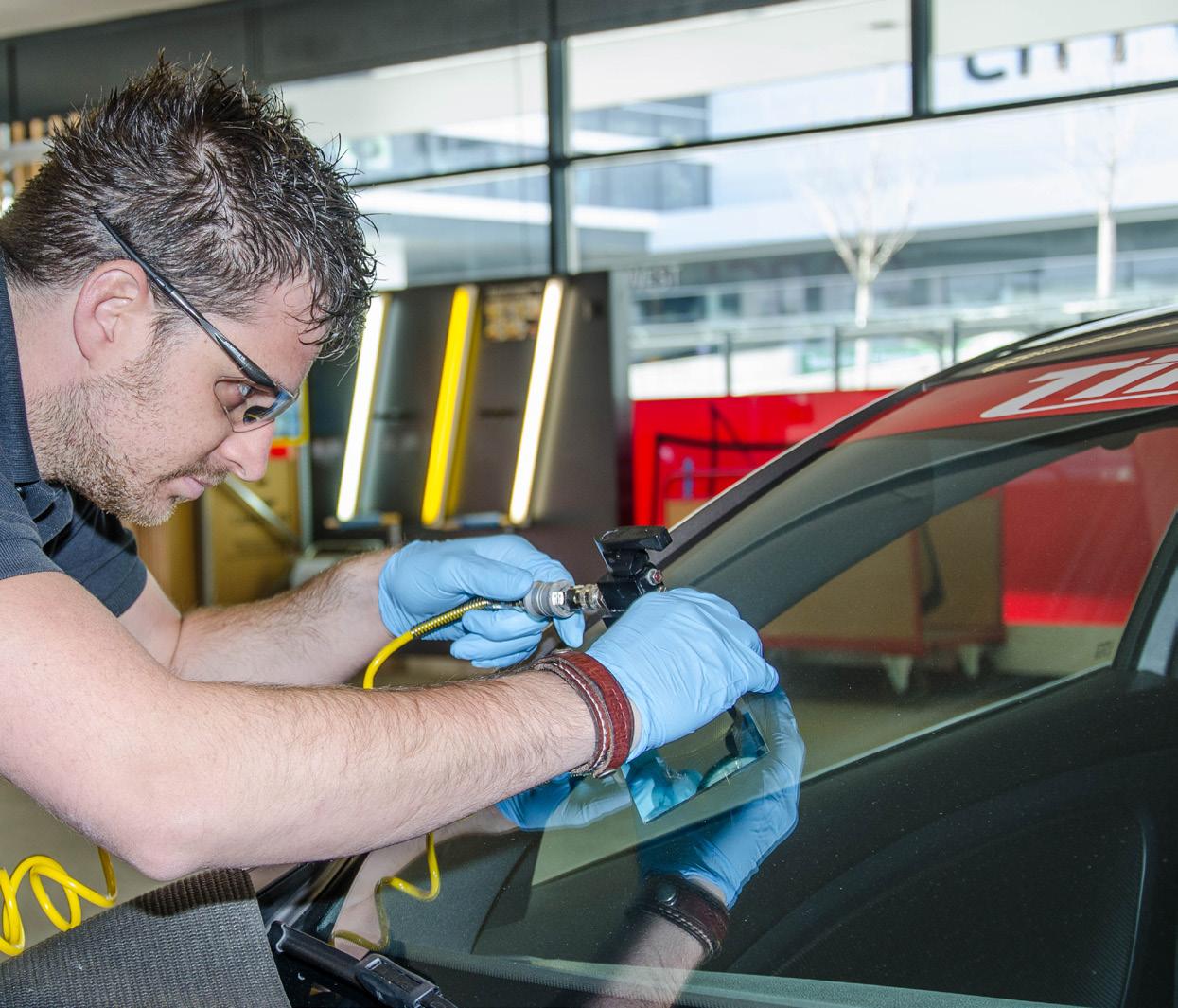
Foust here draws attention to the cyclical nature of employee and customer relationships, demonstrating that they directly feed into one another and set important precedents for the company to hang its success on.
“That level of assurance and confidence with us as an employer will translate down to our customers. When we speak to our customers, be it that call centre agent or that field technician out in the field or in the branch, that sense of confidence in Belron can be exuded to our customers.”
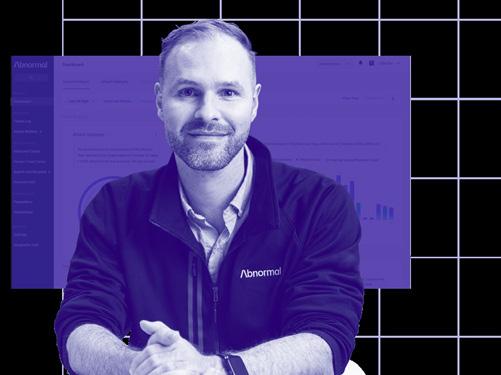
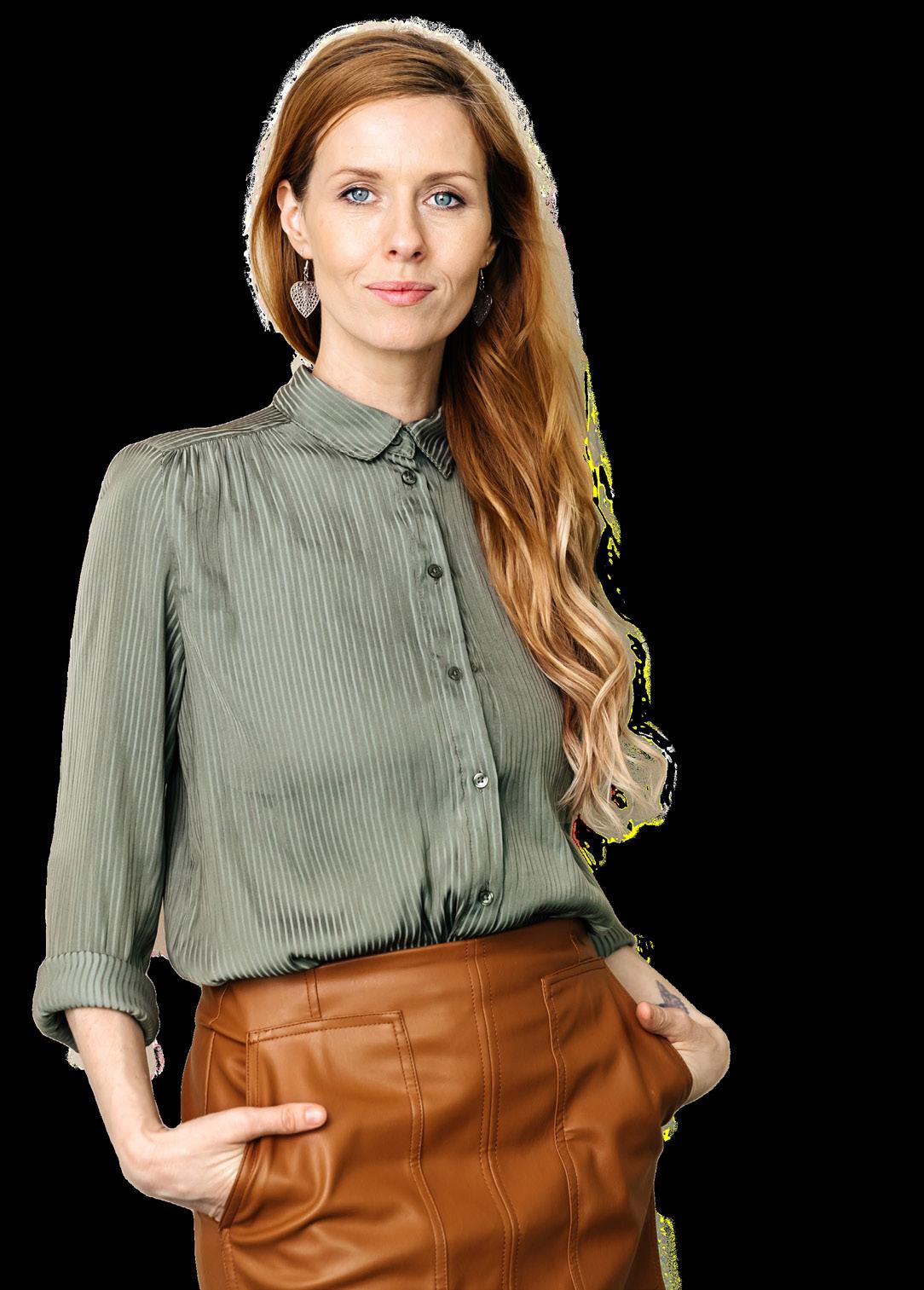

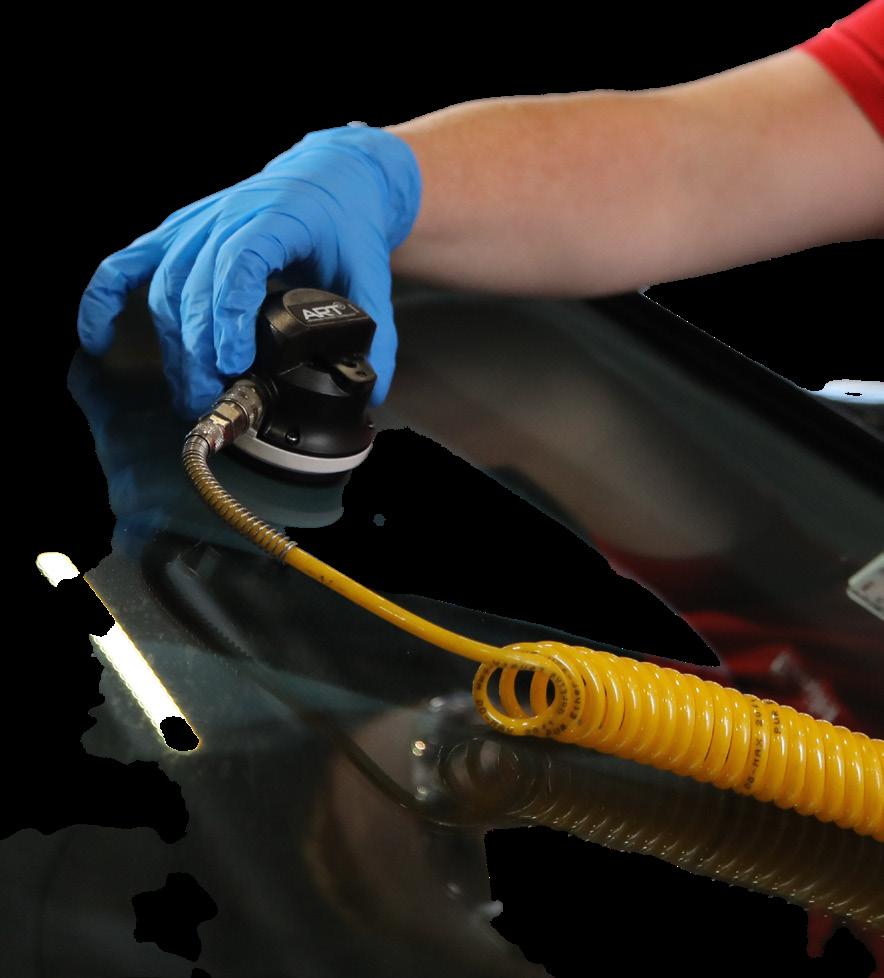
“Through this transformation journey, we have recognised that we not only need to uplift these core technologies for the business, but we also need to mature and modernise our cybersecurity and privacy capabilities”
ANTHONY FOUST GLOBAL CHIEF INFORMATION SECURITY OFFICER, BELRON
Included in Belron’s brands are Carglass®, Safelite®, Autoglass®, Lebeau®, O'Brien®, Smith&Smith® and Speedy Glass®
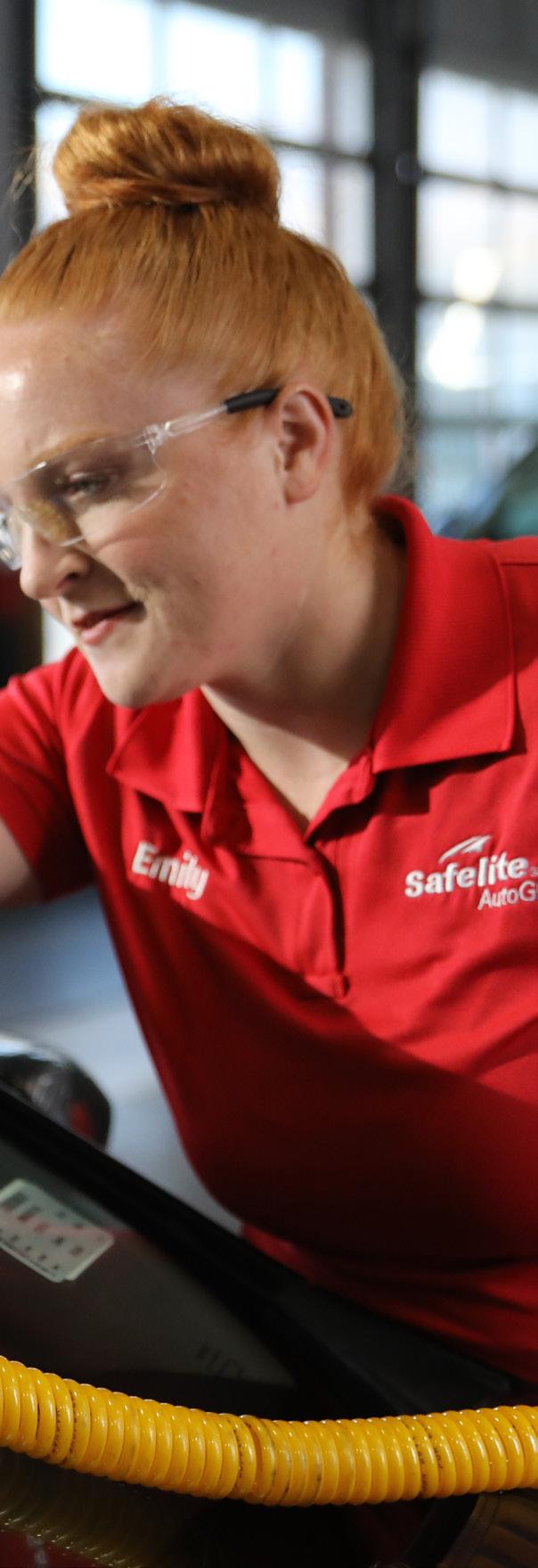
To ensure this level of trust and assurance is maintained throughout the business, Belron looks to create sound strategic partnerships that offer the company both flexibility and adaptability as it continues on its transformation journey.
“Those that really are true partners – as opposed to vendors or suppliers – are the ones that really take the time to understand your needs, your vision, your strategy, your stakeholders, the business and the operating model by which it runs. Those are the ones that are always going to stay with the company for a long time. Some of those partners have worked with me for several companies because of that,” notes Foust.
Supporting Belron with its user-friendly technologies is Abnormal Security, utilising its AI-based cloud email security platform to help protect Belron against the full spectrum of attacks.
“What makes them stand out as a partner with us and our longevity with them is, as they've continued to grow as an organisation, they have still remained focused on what we need from them,” Foust outlines, before going on to list the numerous benefits of the relationship. “They always want to make sure we're successful. They truly sit down and listen to our feedback and try to incorporate that into the product’s development. They are proactive and attentive to us as a client of theirs.”
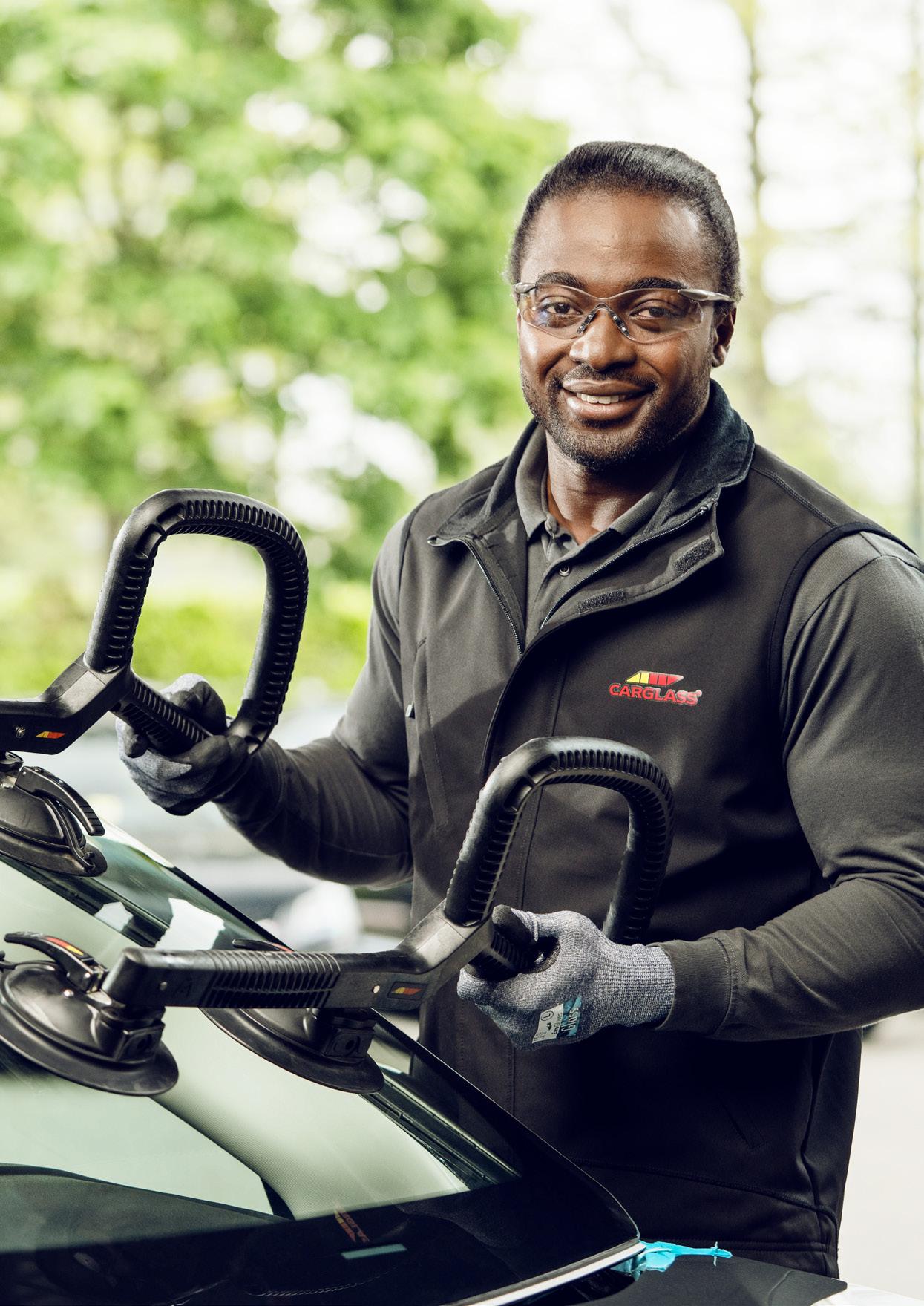

“This has really been the big difference between just a typical transaction with an endpoint solution. At the end of the day, the technology speaks for itself. It has made a real significant impact and the noise that our team are having to deal with on a dayto-day basis has reduced. They have been a great partner from a technology side point.”
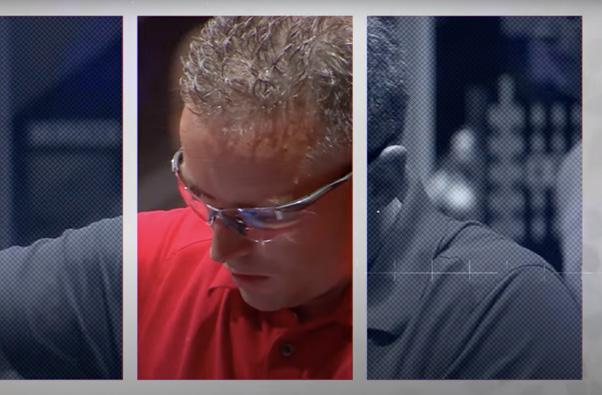
Additionally, Belron works closely with the renowned international audit, tax and advisory firm, Mazars. Mazars, according to Foust, is very much aligned with both himself and the company, in terms of what it wants from its partners.
Through a flexible approach to working with Belron, Mazars is able to support the company throughout its various projects, as Foust explains: “They really want to get in with you and strategise; they want understand how you're thinking, what the company is thinking and how we develop a solution or a proposal that really meets that need. Their operating model is really driven by understanding their customer, meeting their needs, and tailoring their proposals to the customer's needs.
“Things always change here when we’re executing a project. The best part of Mazars is that they're right there with us and helping us facilitate this change. That flexibility, that adaptability and that ability for them to bring subject matter experts to us to be thought partners on that front is just tremendously valuable.”
He concludes: “Due to how they've consistently shown up for us as a partner, any time we have a problem now, they're on the very, very short list of who we go to, to think about problems and the solutions around those problems.”
“Those that really are true partners – as opposed to vendors or suppliers – are the ones that really take the time to understand your needs, your vision, your strategy, your stakeholders, the business and the operating model by which it runs”
ANTHONY FOUST GLOBAL CHIEF INFORMATION SECURITY OFFICER, BELRON
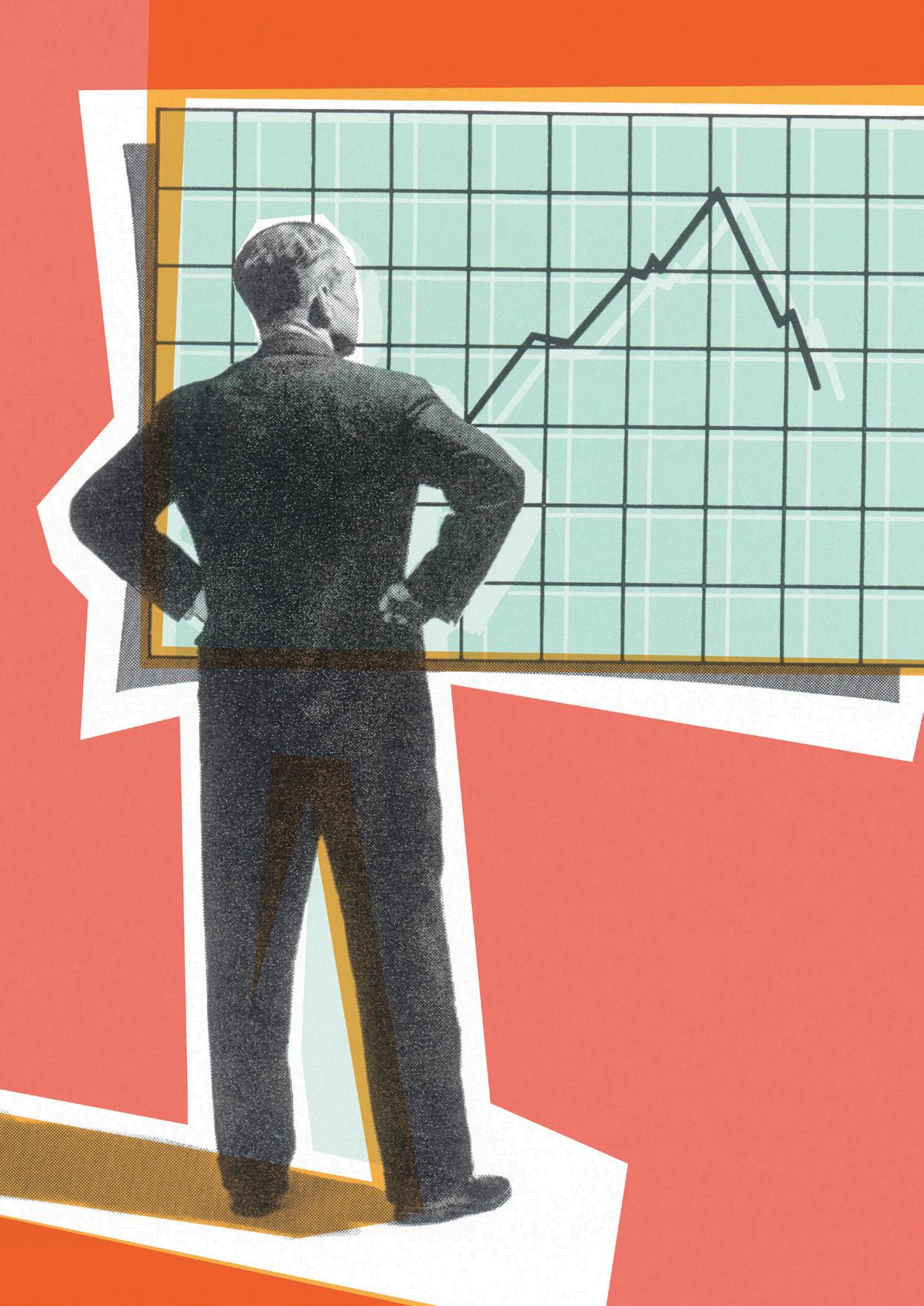
Identified as one of Gartner’s Top Tech Provider Trends for 2022, Techno-nationalism is gathering pace. We look at data sovereignty and why it matters

 WRITTEN BY: ALEX TUCK
WRITTEN BY: ALEX TUCK

Globalisation increased GDP by US$25tn over the past decade through integrated global supply chains, free trade and free flow of capital, according to Gartner. It suggests that we are now entering a new phase of opportunities accruing to companies that can operate more efficiently in a nationalised environment.
With a 30+ year career, Sébastien Marotte has held executive roles at some of the world's highest-profile software companies including Google, Hyperion, and Oracle. He most recently led Google Cloud's EMEA Channels as Vice President,
having previously served as Vice President of Google Cloud EMEA for eight years. As an early leader at Google Cloud, Marotte was responsible for much of the foundational growth and development across EMEA, including the launch of G Suite (now Google Workspace).
He is well-known in the industry as a dynamic leader with exceptionally high standards and incredible integrity. Now President of EMEA at Box, who were formed in 2005 to make it easy to access information from anywhere and collaborate with anyone, they now work with 97,000 companies and 68% of the Fortune 500 our customers.






A modern network must be able to respond easily, quickly and flexibly to the growing needs of today’s digital business. Must provide visibility & control of applications, users and devices on and off the network and Intelligently direct traffic across the WAN. Be scalable and automate the process to provide new innovative services. Support IoT devices and utilize state-of-the-art technologies such as real-time analytics, ML and AI. And all these must be provided with maximum security and minimum cost.
This is the power that brings the integration of two cloud managed platforms, Cisco Meraki and Cisco Umbrella. This integration is binding together the best of breed in cloud-managed networking and Security. cisco.com




“With Gartner predicting that nearly twothirds of the world’s population will have their personal data protected under new privacy regulations by next year, it is clearer than ever that data sovereignty is a toppriority for regulators,” said Marotte.

Marotte believes that the hybrid workforce and dynamic compliance landscape have reshaped the way organisations are approaching data privacy laws, and suggests as an initial step to safeguarding against future data sovereignty obligations, “business leaders should first understand where their data resides, before looking at the issue of data sovereignty more broadly.”
“We’re seeing data residency requirements ramp up across Europe already; in France, President Macron is pushing for a more ‘sovereign, united, democratic Europe’ and openness in the technology industry is paramount to achieving that.”
“…it is clearer than ever that data sovereignty is a top priority for regulators”
In Intercity’s UK-based, geo-redundant Tier 3 data centres, the data is stored in geographically diverse locations across the country, to safeguard against catastrophic events and natural disasters, as well as balance traffic for optimal performance.
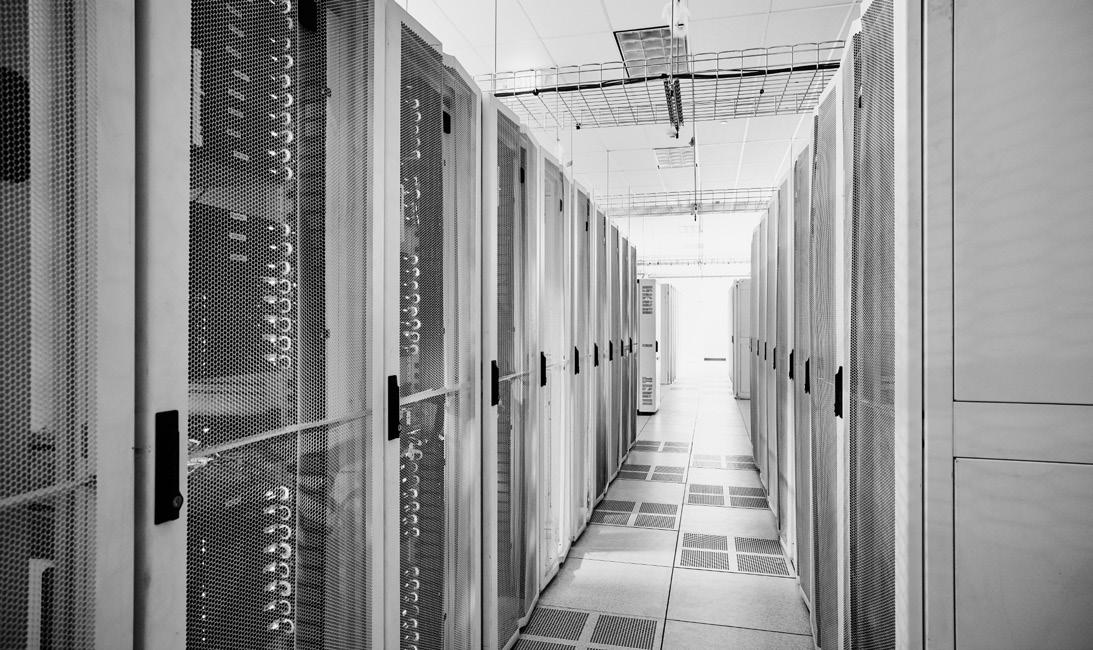
preferring a ‘People first, business first and outcome focused’ approach. Foster set out to establish a new precedence on data strategy in a traditionally tech-led data industry.
Data as a huge strategic asset for governments
“In the right hands, data can be a huge strategic asset for both central and local governments. It can be used to inform decisions on a whole host of issues, including resource allocation, distribution of benefits, and policy changes, as well as to track performance and evaluate progress towards goals set out by governments,” said Jason Foster, CEO and Founder, Cynozure.
A tech consultancy, Cynozure was founded in 2016 with the ambition to reshape how people think about data and analytics,
“For many governments around the world, data is now a critical component of the decision-making process. We saw it in the UK during the COVID pandemic, when data shaped policy in almost real-time. Data-led insights were - and continue to be - an invaluable asset for local and national decision makers.
“But data has a trust issue and the use of it is still perceived with scepticism by many. Do - and indeed, should - citizens trust the government to do the right thing with their data? How can we ensure data does not become weaponised against people, as we have seen happen in the past with murky election targeting? How do we prevent the giant global corporations like Amazon and Facebook from having greater power, control, and access to data than governments do?” said Foster.
For the full potential of data to be realised, Foster argues that these challenges “need to be faced head on” and that “we need clear rules and regulations for how AI can be deployed, and the governments must set out what is and isn’t allowed”.
Foster cited the example of even artificial intelligence (AI) deciding targets in warfare: “When it comes to the widespread deployment of new technologies, ethics is of equal importance as law and only then will the public trust how their data is being used.”
The difference between data residency and data sovereignty “These terms are similar as they both relate to where data is stored, but they are very different,” said Phil Bindley, Managing Director of Cloud and Security at Intercity; an innovative and people-centric IT services company.
“Data residency refers to the geographical location of data, whereas data sovereignty relates to the laws and governance structures that data is subject to, due to the geographical location of where it’s processed.
He added: “The location of data has become increasingly important due to an increased demand for cloud storage as many businesses shift to hybrid and remote working. In real terms, ParkMyCloud reported that three quarters of enterprises
“Techno-nationalism is a new strain of mercantilist thinking that links technological innovation and capabilities directly to a nation’s national security, economic prosperity and social stability. The state, therefore, must intervene and guard against opportunistic or hostile state and non-state actors. Technonationalism seeks to attain competitive advantage for its stakeholders, both locally and globally, and leverage these advantages for geopolitical gain.”

Techno-nationalism: What is it and how will it change global commerce?
Alex Capri, Forbes Contributor.
“Data residency refers to the geographical location of data, whereas data sovereignty relates to the laws and governance structures that data is subject to”
PHIL BINDLEY MANAGING DIRECTOR - CLOUD AND SECURITY, INTERCITY TECHNOLOGY LTD
now define their strategy as hybrid or multi-cloud.”


While cloud-based services can offer organisations significant value in terms of collaboration, Bindley suggested that using these applications “leads to an increase in international data transfers”.
This can result in compliance issues for users and providers, he outlined, “due to the ever-changing and differing data protection and privacy laws across the world.
Following the UK’s exit from the European Union, data transfers from the UK to the EU are safeguarded by the Adequacy Decision announced on the 28 June 2021, meaning personal data can continue to flow between the two without the need for organisations to ensure appropriate safeguards apply.
While the UK’s data protection regime is deemed adequate until 27 June 2025, this will only be renewed if the UK continues to protect the personal data of EU residents, in line with the EU GDPR rules. If UK data protection law significantly diverges from the EU GDPR, the Commission could withdraw this decision,” said Bindley.

Taking a multi-cloud approach means businesses will be storing data across the different sites that they use for different activities, such as HR or payroll.
Bindley doesn’t suggest turning back the clock on cloud migration, but “it’s important to closely examine where your data resides, what’s in the small print, and whether your cloud services provider is being transparent.”
Once data is in the cloud, “a lot of businesses will assume its security is the responsibility of whoever runs that cloud, such as Microsoft for Microsoft 365”. However, the security for that data is still down to the business itself, and “it’s the
“For many governments the world, data is now component of the decisionmaking process”
JASON FOSTER CEO, CYNOZURE AND CDO HUB
business that will be at risk if the data is breached or lost”, according to Bindley.
“Having clarity over what data is held and where it sits in terms of its sovereignty and residency is vital, so staff and customers can be assured their data is in safe hands.

Despite its importance, keeping track of data within these different sites often falls to the wayside for SMEs, as they don’t employ a Data Control Officer who can take responsibility for it, meaning no staff member or division feels accountable for keeping data secure,” he said.
If there was a breach, Bindley said it’s wise to know who is responsible for the security of the compromised data: “The Information Commissioner’s Office (ICO) will come down much harder if the correct measures are not in place, so businesses must be able to demonstrate they have done all they can”.
In 2020, British Airways was fined after users of its website were directed to a fraudulent site, where hackers were able to harvest the personal data of around 400,000 people, including login and travel booking details, names, addresses and credit card information.
“The ICO issued a fine of £20mn - the largest fine under GDPR to date, as it found that the hack was the result of BA’s negligence. Not only did this have a huge financial consequence for the company, which was already suffering financially under lockdown rules, it caused a catastrophic blow to its reputation.
If you avoid thinking about your business’s data protection, either because you don’t understand how to take the first step or feel it’s not your responsibility, and then something goes wrong, there could be business-ending consequences,” said Bindley.



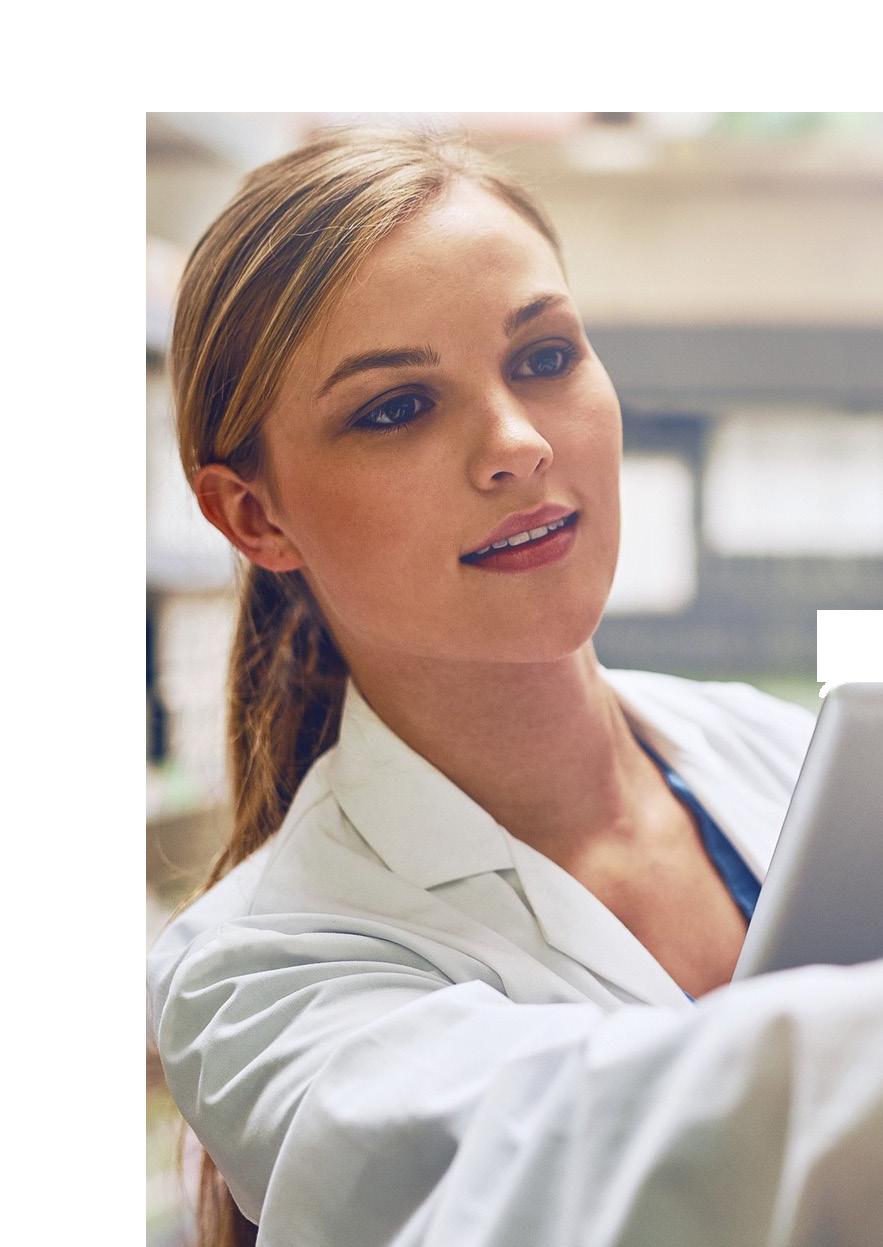


 WRITTEN BY: HELEN ADAMS
PRODUCED BY: BEN MALTBY
WRITTEN BY: HELEN ADAMS
PRODUCED BY: BEN MALTBY


Digital Health and Care Wales (DHCW) is the national delivery body for data and digital services in NHS Wales. It has a pivotal role in helping to drive transformation in health and care. It manages national data centres, the IT and digital services in every GP practice in Wales, core national hospital systems for administration, test requests and results, the Welsh Clinical Portal and various other services. A key part of its service catalogue is data and informatics, through which it provides a consolidated record across all the NHS organisations in Wales, and integration between primary and secondary care. Wales has also been a leader in collecting outcomes data through its Value in Health programme.
Ifan Evans is the recently appointed Executive Director for Strategy and joined the organisation in April. He leads on organisational planning and performance, strategic transformation and change, developing partner relationships, and heads up four of the largest digital transformation programmes (Digital Medicines Transformation Portfolio, Digital Services for Patients and the Public, the National Data Resource, and the Welsh Community Care Information System).
“Previously, I was the Director for Technology, Digital and Transformation in the Health and Social Care Group in the Welsh Government, where I led on national policy and strategic investment funding for digital and technology. One of the things I have been most struck by in my first six weeks at DHCW is the energy and ambition here. I think the
confidence and momentum that comes from being a new organisation, and delivering such an impressive digital response to the COVID 19 pandemic, will make a real difference to the delivery of digital services.”

The core missions at Digital Health and Care Wales and the digital transformation journey
It was after working with senior management in DHCW while responding to the unprecedented COVID-19 pandemic that Evans was inspired to join the organisation. “It’s a small organisation in growth mode, doing impressive things quickly,” said Evans. “I thought the way things were developed and delivered in response to the pandemic, especially the close working between DHCW, other NHS Wales organisations and local government in Wales, was absolutely brilliant. Compared to some other systems, we delivered better outcomes at a fraction of the cost, which is what you have to do as
a relatively small system with limited resources. That was part of why I wanted to come and join.”
Digital Health and Care Wales was recently presented with a Digital Leaders Impact Award for the development of its COVID-19 digital immunisation system. In 2020, it won best UK IT workplace from the BCS, British Computer Society. In 2021, its Chief Executive Helen Thomas was awarded UK Digital CEO of the Year and recently Finance Director Claire Osmundsen-Little was awarded Digital
IFAN EVANS
“Our third core mission is delivering excellent digital services on top of the data and the infrastructure platform we have”
Ifan Evans joined Digital Health and Care Wales in April 2022 as Executive Director of Strategy. His responsibilities include strategic planning, digital transformation programmes, commercial, and partnering.

Before joining DHCW, Ifan was the Welsh Government lead for health digital, technology and transformation. He was the national lead for Brexit readiness across health and care, and for the digital response to the Covid-19 pandemic.
Ifan has been a champion across government and NHS Wales for innovation, technology adoption, and digital transformation.
He is passionate about applying digital technologies and data as tools to clarify and simplify, reducing unwarranted variation and making services better for professionals and the public. He believes that working openly with a wide range of partners is the best way to address current and future challenges in health and care, particularly by applying new solutions to existing problems and measuring outcomes in real time.

TPXimpact provides comprehensive services to the health sector across all technology functions, from major digital transformation programmes, to full support and service contracts.
Our digital teams support the NHS and Care sectors to digitalise treatment and care pathways, improving the ability of clinicians and caregivers to do their job and ultimately, improving patient outcomes. As a firm supporter of the InterOpen community for transparent data use and management in Health and Social care, we’re supporting the NHS to share datasets widely.
We’ve supported Digital Health and Care Wales (DHCW) to roll out the Microsoft 365 platform and tools which provided significant support to NHS Wales staff throughout the pandemic. We’re now helping the organisation make full use of all functions within the M365 suite of services.
We’re also assisting DHCW to digitise its paper-based processes and clinical pathways using the Microsoft Power Platform, improving staff productivity and accuracy.

We’re integrating commercial products with open standards, such as FHIR and OpenEHR. Working with DHCW and other local health boards in Wales, we have established a truly collaborative programme of digital change.
DHCW has now published an innovative, digitally focused technology vision and roadmap. Realising the vision will develop the organisation into one using electronic, patient-centric processes that present quality data. The systems will be joined up and support a fully mobile workforce to do their job. As a strategic partner to DHCW, we’re delighted to support the organisation in its onward journey.
Learn more about us
Finance Leader of the Year - clearly there’s something exciting going on.
“That's only been reinforced since I've arrived here,” said Evans. “Just to see the skills and the ambition of teams across the organisation is fantastic.”
There are five key strategic missions at Digital Health and Care Wales. “The first is to provide a platform for digital transformation,” said Evans “We manage data centres on behalf of NHS Wales; we lead on cybersecurity and resilience; we deliver the national network architecture – that's the digital platform that we need for all the different services that are delivered across Wales.”
The second mission is on data, framed as maximising the value of the shared single health and care record across Wales. “Data and information mean everything to health and care professionals, so we have worked really hard over a long time to ensure we have a comprehensive digital record for every patient in Wales, which can be viewed across every setting and every organisation.”
These two missions are the foundation for delivering digital services. “Our third core mission is delivering excellent digital and technology services on top of the data and the infrastructure platform that we have.”
The fourth mission is driving value and innovation, which Evans sees as a way for the organisation to test itself. Are the data being collected and the digital services that professionals use actually improving health and wellbeing outcomes for patients and the public, and driving innovation in the way that health and care services are delivered?
The final mission for Digital Health and Care Wales is to be a trusted partner. “This underpins everything we do. We want people to work with us, and alongside us, to deliver world-class digital and data products that drive transformation in health and care.”

“We can’t achieve our ambitions on our own. It’s more than the NHS Wales family, and wider than health and care Wales; all health systems are facing the same challenges and there is so much we can learn from others across the UK and internationally, and from universities and industry.”
The digital strategy at Digital Health and Care Wales

Evans sees advantages in the way Wales is structured and its relatively small scale.
“It’s interesting that when you go to digital health conferences, it tends to be larger countries who lead on describing challenges and smaller countries who present examples of good practice and innovative solutions.
I think it helps that in NHS Wales we are relatively consolidated. We have seven health boards responsible for all health services in their region; they are integrated, from public health through primary and secondary care to specialist services,” said Evans.
Resource allocation and prioritisation in NHS Wales is directed through a planned approach, guided by ‘A Healthier Wales’, a combined health and social care strategy published in 2018. In his Welsh Government role, Evans was the lead author:
“A Healthier Wales has been reinforced in many ways by the COVID-19 pandemic response. There was stronger national direction, digital and data were the main enablers, and all the emphasis was on prevention and on delivering services outside hospital, into communities and homes.” Wales is now using the strategy to frame its approach to recovery and transformation, reinforcing the emphasis on a ‘whole system approach’, and on ‘new models of seamless health and social care’ which are coordinated around the needs of the individual.
Evans is clear that digital data and technology will play a major part in driving these changes, helping health boards deliver earlier detection and diagnostics and more personalised interventions, which focus on improving wellbeing and patient reported outcomes.
Building partnerships for stronger healthcare Digital Health and Care Wales is building strong partnerships with industry. Red Cortex is a Welsh business that has grown rapidly and was recently acquired by AIM listed TPXimpact.
“We worked closely with Red Cortex on our Office 365 rollout in response to COVID-19,” said Evans. “The team there helped us deploy


Microsoft Teams to the whole of NHS Wales in around six weeks and to transition completely to Office 365 in a year. We are working closely together now on our Microsoft 365 Centre of Excellence. We wanted to draw on Red Cortex’s expertise and their understanding of the Microsoft platform, and blend that with our own in-house capability, which has helped us to scale up and to build knowledge and skills more quickly.”
At the multi-national vendor level, DHCW has worked closely with key suppliers like Cegedim for many years and is now developing those relationships into strategic partnerships. Cegedim provided Vision 3, a desktop product for primary care, to just over half of GP practices in Wales. “We work with Cegedim as a key supplier to understand its strategic roadmap, and for its team to understand ours, so that we can look for ways
to align our goals. In the end, we all want the same thing, which is better quality digital services for GPs, leading to better outcomes for patients.”

Digital Health and Care Wales is delivering an all-Wales digital medicines transformation programme, which includes electronic prescriptions in primary care. It is also looking to shift key services from on-premises data centres to cloud. “We shared our ambitions for prescribing and shift to cloud, and Cegedim shared its ambitions for the UK market, such as introducing the cloud-based Vision Anywhere product and increasing its market share in England. It is still a supplier, and DHCW is still a customer, but it isn’t hard to find areas of mutual benefit if both parties are committed to working together.”
Evans has a clear vision of what he is aiming for in the ideal strategic partnership. At the top of the list is what the system can offer as an innovation partner, and the reciprocal benefits for Wales in terms of skills, insight and economic development.
What the future holds for Digital Health and Care Wales
Evans knows how quickly digital health is changing, having led the digital response to the pandemic in Wales from the Welsh Government. As well as new and emerging technologies, the strategic context is evolving all the time – cyber threats are increasing, IT supply chains are slowing, and it is getting harder to recruit and retain talent.
“Our ambition is to deliver world-leading digital health and care services for Wales. We are driving towards a standards-based
data platform, an open architecture of modular services and APIs, and resilient and secure infrastructure that is shifting to the cloud. I think that globally there has been a big step forward in defining open health care standards, and we want to be at the front of that change. ”
Digital Health and Care Wales hopes that by implementing standards, and opening up its architecture through controlled APIs with well-defined rules and frameworks for access to data and digital services, it will be able to make it easier for others

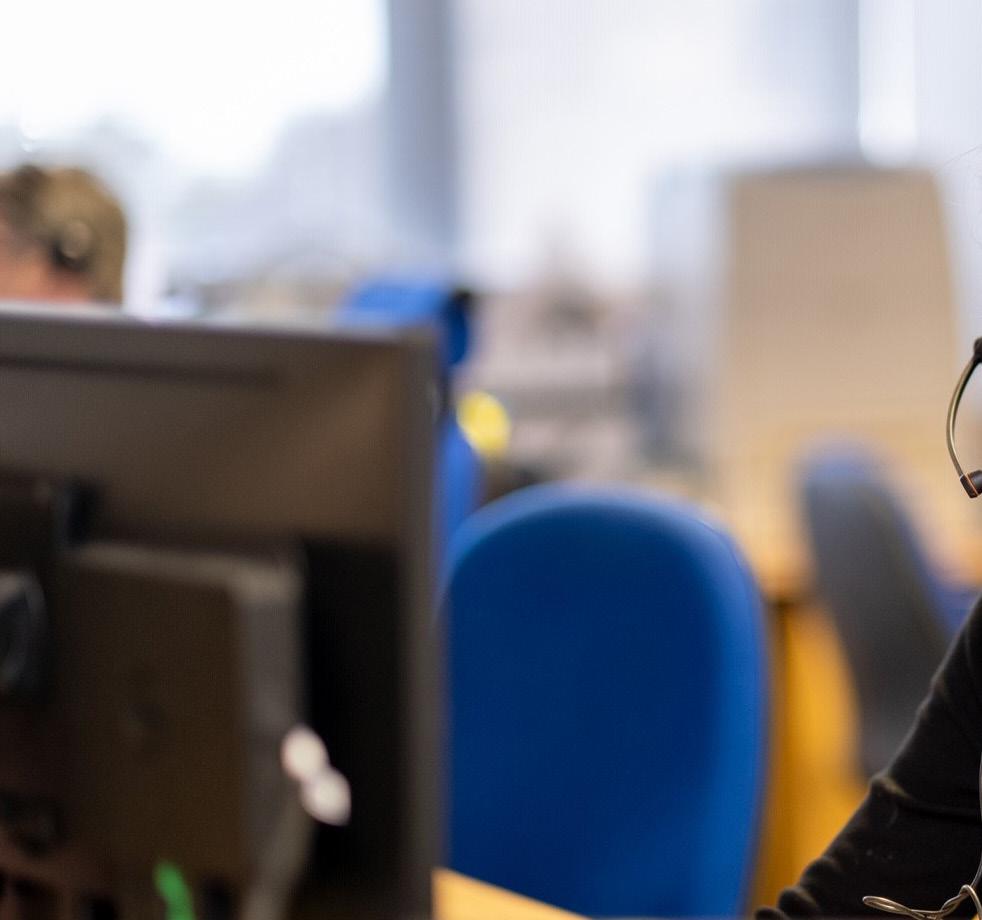
“Being a trusted partner underpins everything we do. We want people to work with us, and alongside us, to deliver world-class digital and data products which drive transformation in health and care”
IFAN EVANS EXECUTIVE DIRECTOR OF STRATEGY, DIGITAL HEALTH AND CARE WALES
to innovate on the single national platform in Wales. “We need to use standards and open architecture to enable that innovation – which will come from our local health and care delivery organisations, from universities, from industry, as well as from our own teams in Digital Health Care Wales.
“It goes back to the headline mission that we have: to create an enabling platform for digital transformation by giving it a good, solid infrastructure and foundation.”
Later this year there will be a new NHS Wales App, similar to the existing NHS App in
England. DHCW has worked closely with NHS Digital to build on its existing product and tailor it to Wales. Evans was the Welsh lead for the jointly developed NHS COVID-19 App across England and Wales, which had localisation and multilingual functionality built in from the beginning. He knew there would need to be a different approach for the NHS Wales App.
“The NHS App was built for England and in English only, but we worked with NHS Digital to take the existing code and adapt it to our needs in Wales. This will include a language layer so we can present in Welsh or English, and other changes to connect directly to our digital systems in Wales, many of which already give us national coverage.”
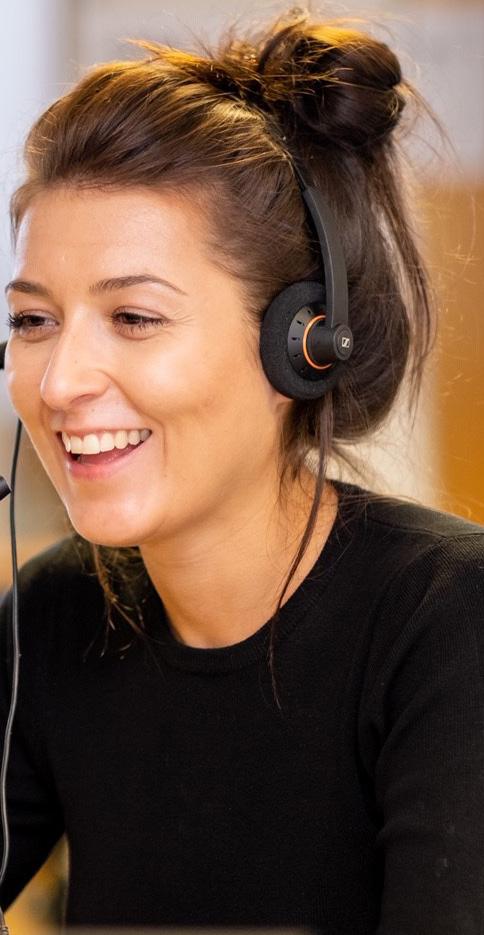

“The new app is exciting. People's engagement with digital in health and care has completely changed over the last two years, because of things like online test booking, at-home LFT diagnostics, and the NHS COVID-19 App. Over a million people in Wales have registered for a digital Covid Pass and that is a huge boost to digital adoption, which we need to build on.”
Evans knows they need to keep up with that and that there's still a huge recovery task in front of NHS Wales. He is determined that DHCW will help to drive transformation in health and care, but very much aware of the challenges in terms of competing priorities for investment, and the difficulty in recruiting and retaining talent.
Digital Health and Care Wales may be a young organisation, but it has a clear strategic vision and it’s growing fast.
KEEPING EYES ON THE ROAD: THE ROLE OF COMPUTER VISION
As companies continue with their autonomous vehicles initiatives, we take a look at the role of computer vision in making these vehicles a reality
 WRITTEN BY: CATHERINE GRAY
WRITTEN BY: CATHERINE GRAY
Enabling computers and systems to derive meaningful information from digital images, videos and other visual inputs, computer vision is pretty much exactly what you think: a field of artificial intelligence (AI) that gives computers the ability to see, observe and understand.
“Computer vision tries to understand from a physiological sense how our brains are able to perceive our visual world. One of the most popular and effective glues allowing us to connect these two fields are machine learning techniques, which encode the act of learning – and eventually understanding –
computer algorithms,” explains Appu Shaji, Mobius Labs CEO and Chief Scientist.
“Computer vision technology has a role to play in nearly every imaginable walk of life. In the media sector, the technology can not only detect the content of an image but grade the style and quality of the visuals. The aesthetic score can be determined in a couple of seconds, assisting marketing, advertising or editorial departments to select the most pleasing photographs. It can also scrutinise thousands of video clips to provide relevant recommendations, plus flag and/or block inappropriate content. It can also be trained to match influencers with brands to grow new client bases.”

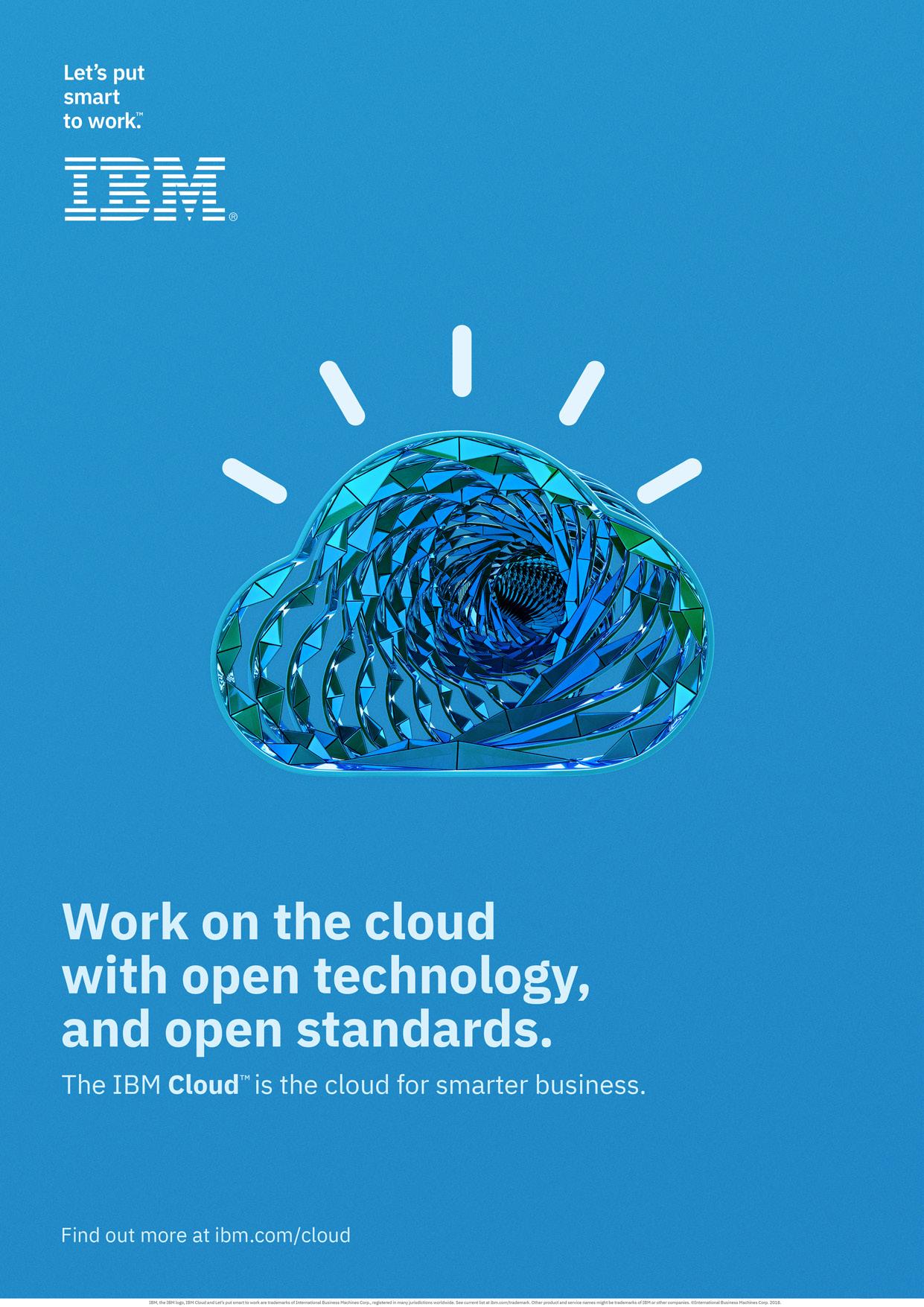 GILBERTO RODRIGUEZ DIRECTOR OF PRODUCT MANAGEMENT, IMAGINATION TECHNOLOGIES
GILBERTO RODRIGUEZ DIRECTOR OF PRODUCT MANAGEMENT, IMAGINATION TECHNOLOGIES
In the automotive industry, computer vision is really showing its worth as manufacturers grapple with autonomous technology to bring in the next generation of self-driving cars. Many different companies,

including Tesla, Uber, Baidu and Waymo, have launched ambitious initiatives and even started testing autonomous vehicles on select public roads.
The push for autonomous vehicles is only accelerating and according to CB Insights, funding in autonomous vehicle (AV) companies surpassed US$12bn in 2021, marking a more than 50% increase from 2020.
From self-driving cars to autonomous vehicles: the benefits of computer vision Introduced by General Motors in 1939, the first concept of a self-driving vehicle was a radio-controlled electric vehicle. Since then, self-driving vehicles have undergone a complete transformation and have now become autonomous, too.
“OVER MANY YEARS, COMPUTER VISION HAS DEVELOPED TECHNIQUES THAT ENABLE THE CAPTURE AND PROCESSING OF VIDEO TO AUTOMATE TASKS. THIS TECHNOLOGY HAS CREATED THE FOUNDATIONS FOR AI BASED DECISION MAKING IN SELF DRIVING CARS”
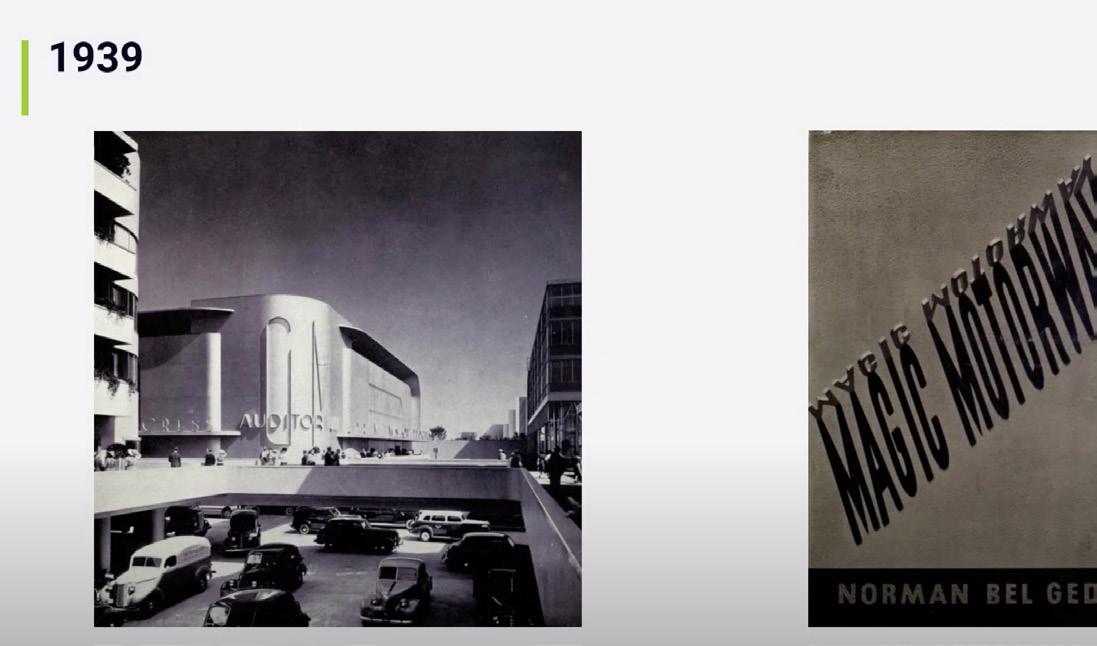
Using a combination of sensors, artificial intelligence, radars, and cameras to operate, autonomous vehicles don’t need any human intervention. Powered by AI, these vehicles are, in some cases, still in the development stage, with many developers looking to computer vision as a means of rendering their vehicles more reliable.
“When driving a car, it’s essential that we accurately see and interpret the information around us. Over many years, computer vision has developed techniques that enable the capture and processing of video to automate tasks. This technology has created the foundations for AI-based decision making in self-driving cars,” says
Gilberto Rodriguez, Director of Product Management at Imagination Technologies.
As a core technology for autonomous vehicles, computer vision enables cars to leverage object detection algorithms in combination with advanced cameras and sensors to analyse their surroundings in real-time, enabling recognition of things like pedestrians, road signs, barriers, and other vehicles to safely navigate the road.
With these capabilities, Rodriguez believes that the technology will be critical to the development of such vehicles in the future, noting that “computer vision will continue to be a key technology in enabling autonomous vehicles, with the camera remaining the preferred sensor for data collection.”
He adds: “As software evolves, some of the algorithms used to process the data will become machine learning-based rather than classical computer vision analysis, meaning more efficient processing of large amounts of information and more advanced ADAS deployments.”
It is important that both AI and computer vision technologies work together when applied to autonomous vehicles to ensure safety and reliability. Commenting on this, Rodriguez says: “AI has proven that certain tasks are easier to train than a programme, hence why the technology is replacing some of the more complex tasks needed in autonomous driving. Understanding how computer vision works will, however, enable more efficient solutions, making it a muchneeded complement to AI. Using computer vision to interpret the visual world while implementing AI to predict and improve driving outcomes will offer the best solution in terms of efficiency and safety.”
He continues: “The technology allows us to get the basics right, which is vital. Computer vision has amassed many years of analysis and deployment, which are now being enhanced with AI capabilities. As systems are becoming more complex to program, we need that layer of AI which offers more efficient algorithms through machine learning.”
As it is a challenging area for technologists, autonomous vehicles combined with computer vision need to go through rigorous training and development to ensure they are safe for people to use.
Even though computer vision can tell the difference between a car and a human or a tree and a building, it doesn’t mean that
• 1939: General Motors showcases theoretical self-driving cars as part of its famous Futurama exhibition at the World’s Fair in New York City.

• 1995: A team at Carnegie Mellon University completes a successful crosscountry journey with Navlab. While the vehicle steers on its own, the brakes and accelerator are handled by a human operator.
• 2010s: A range of major automobile manufacturers announce their intentions to begin developing autonomous vehicles, including GM, Ford, Toyota, BMW, and Volvo, among many others.
2020: The first regulations related to automated features in cars begin to appear.
• 2022: China's Baidu unveils 'robotaxi' with detachable steering wheel. The fully autonomous vehicle could hit the roads in China from next year, with the company's chief executive saying using a robotaxi will one day be ‘half the cost of taking a taxi’.

the technology has the perceptive skills of a human driver. On top of this, machine vision has limitations in terms of camera sensor capture and the software which enables safe self-driving features.
“When it comes to autonomy, there is a need for better camera sensors, with more depth, faster framerate, better resolution etc., in addition to radar and lidar sensors. Manufacturers would need to leverage advanced software to manage and process the data from these sensors, while also ensuring the self-driving features in their vehicles are safe. This is underpinned by hardware, for example, the GPU or AI accelerator, meeting the safety requirements for autonomous vehicle deployment,” explains Rodriguez.
Concluding – and despite acknowledging the benefits of this technology – Rodriguez shares a word of warning: it is important technologists recognise the challenges to ensure high safety levels are maintained.

“There are multiple challenges for the successful implementation of machine vision. First, manufacturers need to have the right sensor technology (different cameras with different dynamic ranges, frame rates and light sensitivity). This is followed by the challenge of managing and using the sensor data. And, finally, we have the most complex part, which is how the car behaves and drives.”
“In the automotive industry, it takes up to five years to get silicon into production, so a flexible hardware architecture is needed to enable support for continuous software development. At Imagination, we enable this software-defined evolution through our innovative GPU, NNA and EPP IP, which offers the compute and connectivity flexibility required for these implementations.”


 AD FEATURE WRITTEN BY: ALEX CLERE
PRODUCED BY: JOE PALLISER
AD FEATURE WRITTEN BY: ALEX CLERE
PRODUCED BY: JOE PALLISER

As the industry presses ahead with digitisation, there are dark corners of the finance world that risk being left behind. Without doubt, B2B finance processes have been overlooked in favour of digitisation in the B2C space. Now, a raft of innovators are beginning to recognise the potential for greater disruption in B2B payments and related processes, and one of the most neglected areas is that of accounts receivable (AR) and accounts payable (AP). Global PayEX offers a SaaS platform that helps businesses to automate and digitise AR and AP processes. The company wants to make B2B payments as seamless as paying a utility bill (C2B payment), and has designed digital customer journeys, including on mobile, that remove frictions in B2B payments. Based in Connecticut, US, the company is five years old – meaning no legacy tech hangover – and the firm already has a marquee customer base such as 3M, Bridgestone, Stanley Black and Decker, Reiter, Hafele and several other mid-to-large corporates. It has enabled its customers to realise significant operational efficiencies within their AR and AP departments and processes.

Global PayEX provides a SaaS platform underpinned by AI and ML to bring about rapid transformation in accounts receivable (AR) and accounts payable (AP)
Implementing Global PayEX’s platform can reduce the number of days sales are outstanding (DSO) – the single biggest metric in AR. It can also speed up the time taken to reconcile a payment, and to automate the accounting into the ERP/accounting systems, which in turn can shorten the overall payment and reconciliation cycle and allow customers to place their next order sooner.
“That becomes a very powerful revenue acceleration for our clients, and also enhances customer satisfaction for our clients’ customers,” Chief Revenue Officer Naru Ramamoorthy explains. When Global PayEX’s platforms are fully implemented and integrated into a business, it can save them between 1% and 4% of their annual revenue.
Naru joined MphasiS at an early stage in 1999 and worked closely with MphasiS’ founders – Mohan Krishnan (Global PayEX’s CEO and Founder) and Jerry Rao and Jeroen Tas (Initial Global PayEX investors). MphasiS went on to become a multibillion-dollar firm and was acquired by EDS and later by HP. He has more than 20 years’ experience in working with a full spectrum of B2B transformation and payments companies. In Global PayEX, Naru is responsible for global growth, both in existing and new markets.

“ Our primary targets are typically mid-to-large sized corporates such as Bridgestone, Stanley Black & Decker and Huhtamaki”
NARAYAN RAMAMOORTHY CHIEF REVENUE OFFICER, GLOBAL PAYEX INC
“That's what I specialise in,” Naru says. “Essentially taking concepts that are semiproven with an initial customer base and just multiplying it by 100, by 1,000. That's what I love doing, so that's why I came to Global PayEX.”
Solving unique challenges across both AR and AP
The company’s platform can be thought of as two separate ‘halves’, one for AR and one for AP. It plugs into a company’s ERP (that integration is the only part where custom code is required) meaning the interface can be customised to the client’s accounting rules in their ERP – across all major ERPs like SAP, Oracle, Microsoft, and others.
On AR, Global PayEX provides two core digital platforms – electronic invoice presentment and payment (EIPP) and reconciliation (cash application automation). On the EIPP platform, Freepay™, end customers can view invoices and credit/ debit notes, make payments and deductions, view statements, and EIPP automates the accounting entries posting into the seller’s ERP. The reconciliation platform, AlgoriQ™, automates document reading such as remittance/payment advice and bank statements, and automates reconciliation and posting to the ERP (automated accounting). A key area of focus
LOCATION: UNITED ARAB EMIRATES
Naru specialises in business process transformation
leveraging technology, process, operations, and market needs. He brings over two decades of experience in scaling businesses and P&Ls across most continents (the US; UK and Europe; India, Asia and GCC; Africa and Australia).
He has held leadership roles in industries ranging from payments, banking and financial services and retail in organisations like Wipro, Tesco, Thomson Reuters, and MphasiS.
He holds an MBA degree from the Indian Institute of Management, Calcutta and a Computer Science engineering degree from VJTI, Mumbai.
2018 Year founded 140+ Number of employees
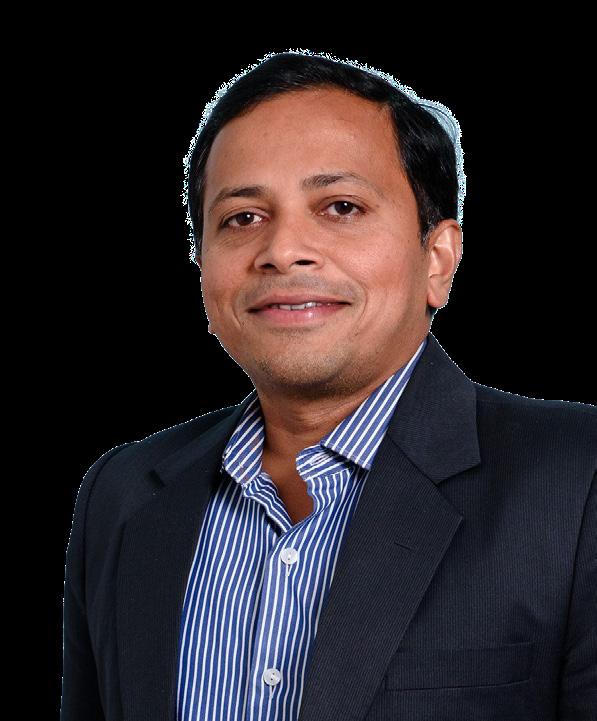
is on deductions – AlgoriQ helps to identify, tag and resolve deductions made by end customers. AlgoriQ is gaining rapid traction for ecommerce marketplace reconciliations among buyers like Amazon and Walmart.
On AP, Global PayEX provides a vendor portal for suppliers and
vendors to view documents like POs, goods receipt notes and payment advice. Suppliers can upload invoices via this portal. The Global PayEX platform also enables invoice process using auto-reading of invoices across formats, providing validation workflows and automating the invoice entry into the ERP.
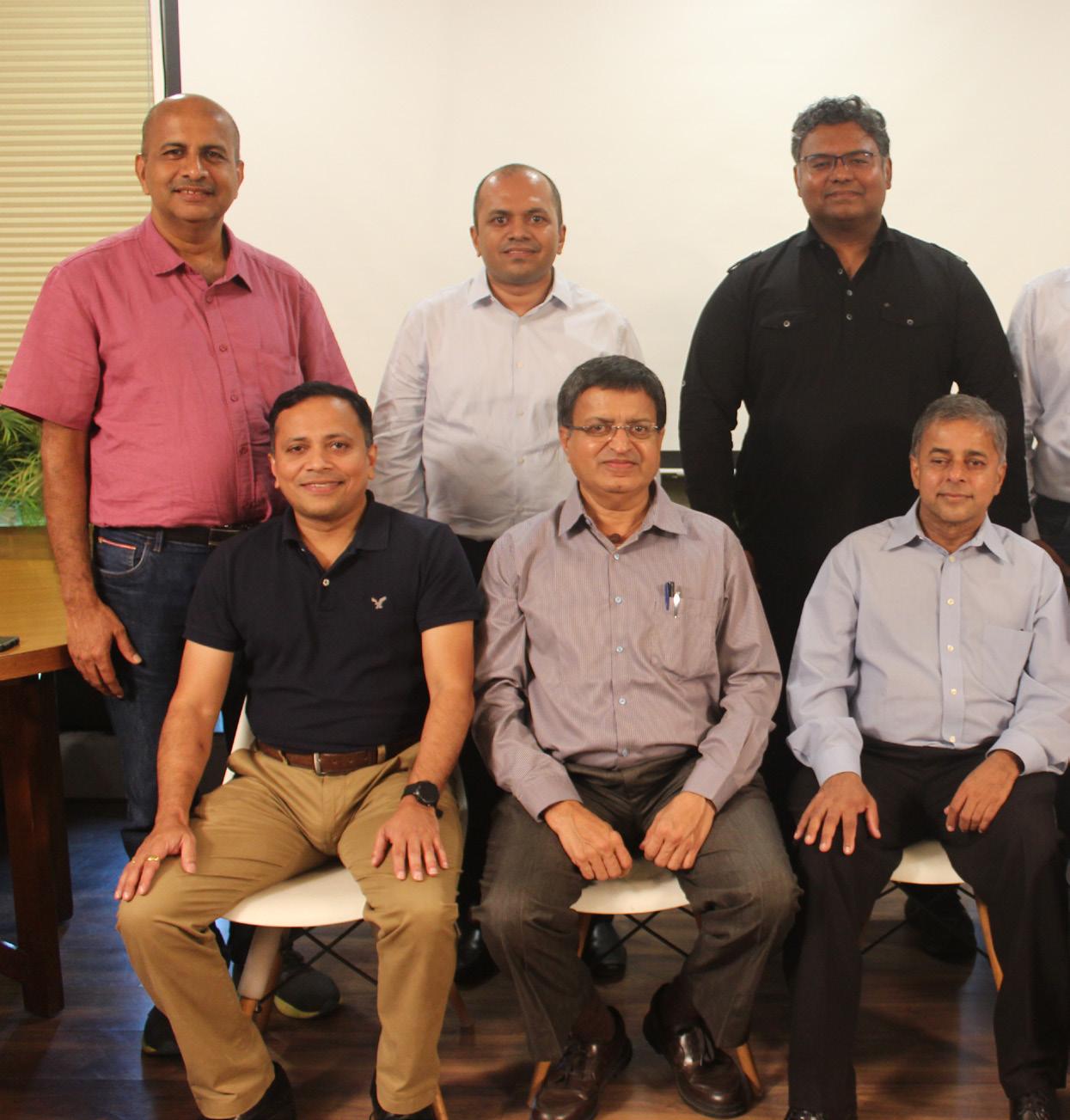
The AR/AP platforms also enable financing workflows and automation across the anchor corporates, banks and the corporate’s buyers and suppliers. Lastly, the PayEX platforms can enable straightthrough automation with all key ERP platforms.

The challenges in AR are very different to the challenges in AP, but there is still an interplay between them; after all, a vendor’s AR is a buyer’s AP.
In accounts receivable (AR), challenges faced by sellers include lost or misplaced invoices, the cost of accepting payments (specifically physical modes like cheques), resolving for part-payments or deductions, and delayed payments. A lot of time is spent by AR teams, sales teams and the end customer’s AP teams on emails and phone calls to resolve these.
EIPP solves for all of these by digitising and automating the interaction between sellers and buyers.
Another key challenge in AR with institutional customers is related to deductions. Each customer could have different deduction codes to refer to the same events – whether that’s a goods return, a goods short supply or a withholding tax. Even customers in the same industry can have different terminology for the same deductions. Global PayEX’s customer (seller) may also have different terminologies in their ERP to refer to those events, for example ‘return to vendor
NARAYAN RAMAMOORTHY CHIEF REVENUE OFFICER, GLOBAL PAYEX INC
“ Banks are interested in Global PayEX because they want to offer a differentiated service to their corporate banking customers across receivables and payables banking”
Global PayEX claims its platform can save and enhance clients' annual revenues by 1-4%

After achieving a dominant position in India and launching in the US, Global PayEX is setting its sights on Europe.
The company already has 3-4 big-brand customers in the US, having gone live in the country earlier this year
(RTV)’ compared to ‘goods return’. Global PayEX’s reconciliation platform, AlgoriQ™, automatically reads those incoming documents and reconciles the different document formats, deduction codes and terminologies. That gives time back to the finance teams in their clients’ companies, who are no longer faced with the arduous task of having to sift through all this complex data.
In AP, the system works like a mirrorimage. Vendors can upload their invoices into a vendor portal, and the Global PayEX platform is able to auto-read these invoices and to convert into a standard format. This further helps to validate and automate the processing of that invoice into the customer’s ERP.
The end-to-end payments journey means that Global PayEX sits in the middle of a lot of data, which it can use to bring greater value for its clients. The platform can identify patterns of behaviour and learn about how customers pay their invoices, and, more importantly, when. If a customer is late with their payment, the system can obviously send reminders automatically and chase customers for money – but it is so intelligent that it is able to draw distinctions between different customers and understand when

“We intend to further enhance our AI capabilities via building a neural network that has 99%+ accuracy in terms of reading any random document around the concept of account receivable and account payable”
NARAYAN RAMAMOORTHY CHIEF REVENUE OFFICER, GLOBAL PAYEX INC
a pattern of behaviour is out of the ordinary for that company. That intelligence allows for extensive dashboarding, which can present data in a way that a company’s CFO, credit, or finance manager can interpret and action.
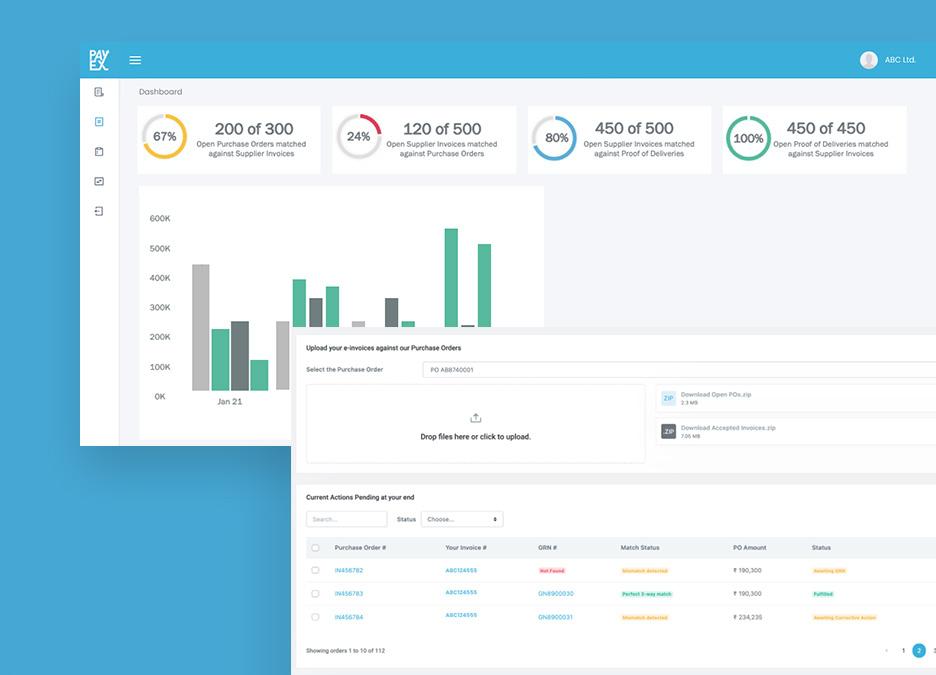
Global PayEX is also seeking to incorporate embedded finance into its platform. “We are trying to embed financing into these B2B workflows where we invite banks and non-banks to lend through our digital ecosystem,” Naru says. The system already knows which of a vendor’s distributors have access to financing, because it does the reconciliation for it, so Global PayEX can anonymise that data
and send it to partner banks or lenders. That data allows them to make underwriting decisions and provide funding for a certain range and/or customer segment.
When a new credit line becomes available, buyers (distributors) will log into Global PayEX’s FreePay™ EIPP platform and see that they now have a credit limit of up to £50,000 or £100,000 provided by a partner institution. It’s the distributor’s decision whether to accept that credit line. If they do, they are onboarded by the institution in the usual way and, afterwards, they will see a new payment method in the app when they come to settle an invoice that allows them to pay using that credit.
“The reason banks are interested is because they want to offer a differentiated service to their corporate banking customers on the receivables/payables banking or on the corporate transaction banking side, and banks don't necessarily have these sophisticated technologies,” Naru explains. “So, they use our technology; we are the back end while the bank is the front end offering these technologies to the customer. Our latest partnership is with FIS, the payments behemoth, where they're white labelling a part of our stack globally to their customers. Several other global and regional banks leverage our platform such as JP Morgan, Standard Chartered, BNP Paribas and Deutsche Bank.”
When Global PayEX was launched, it initially focused on the Indian market, where it has now established a dominant position for itself. The company is now live in the US, where it has a few big-name brand customers and a pipeline of prospects. When Naru speaks to us, he is in London conducting due diligence and laying the groundwork for a future presence there. Global PayEX wants
to be live in the UK, with boots on the ground by Q4 of this calendar year.
It marks a continued expansion for the firm, which hopes that the US and EMEA can become significant contributors to group revenues. In the next 12 months, Global PayEX will focus on growing its penetration in the US market and establishing itself both in the UK and in continental Europe. From a regulatory perspective, this provides a unique challenge: Europe has various compliance requirements to grapple with, not least GDPR.
From a product perspective, the company is working on globalisation, supporting more currencies and languages to allow for further market expansions in future. It is also looking at new requirements like e-invoicing standards and new payment mechanisms such as realtime payments, building that out from a product stack or enhancing the product stack to include them. Global PayEX will continue to invest in AI/ML technologies to improve the efficacy of its automation, giving its platform enhanced abilities to read and contextualise document formats.
Naru elaborates: “We want to get that to at least a 9/10 document auto-read capability across formats over the next 12 months, with an eventual goal being a neural network which has 99+% accuracy from day one, in terms of reading any random document related to AR and AP.”

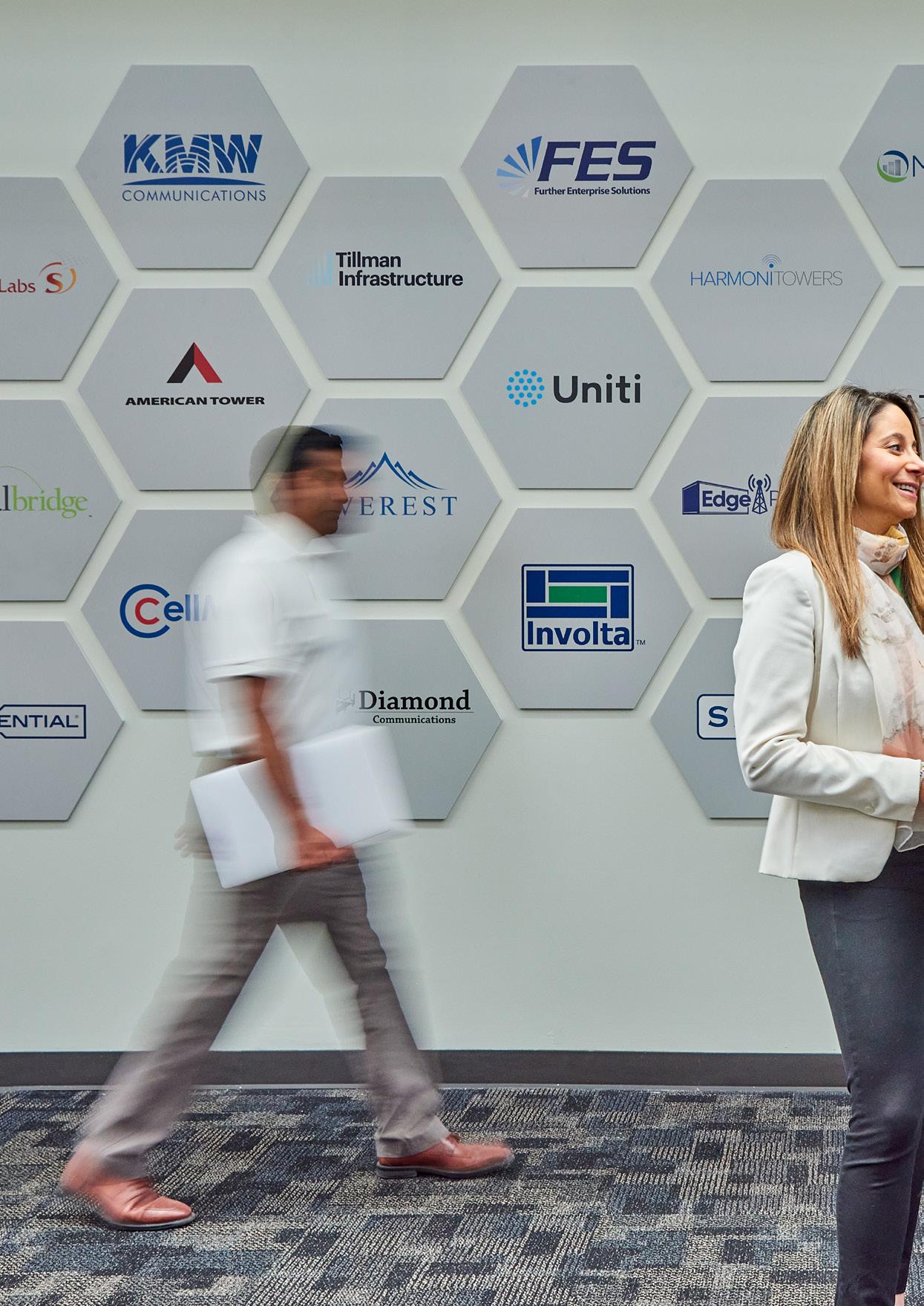 WRITTEN BY: İLKHAN ÖZSEVIM
PRODUCED BY: JAMES BERRY
WRITTEN BY: İLKHAN ÖZSEVIM
PRODUCED BY: JAMES BERRY
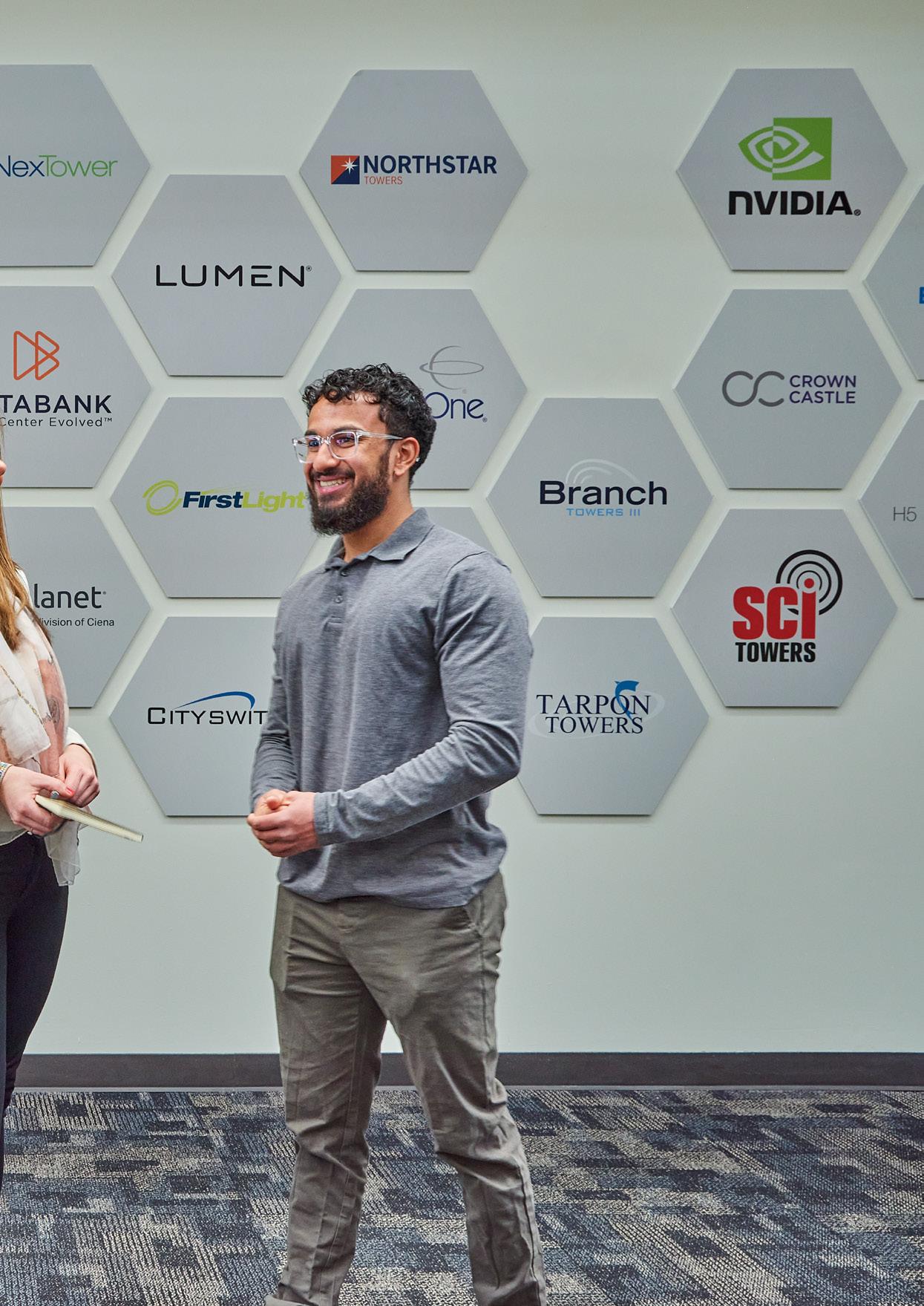
According to Statista, in 2021, the number of mobile devices operating worldwide stood close to 15 billion. With the global population at almost 8 billion, that’s nearly two mobile phones for every person on the planet. It’s therefore no hyperbole to say that, in telecommunications terms, we are truly interconnected – and that’s just through mobile phones alone.
Throughout day-to-day life, we make use of a myriad of devices to communicate without even considering the nature of their connectivity and functionality; as such, the vast majority of people are similarly unaware of the seismic technological shifts occurring beneath the surface of every industry.
Industry 4.0 and the 5G revolution have begun to coalesce, set to transform the very socio-technological fabric of our world –and the magnitude of change is creating an interesting playing field for those businesses at the forefront.
The aptly-named DISH Network (Digital Sky Highway Network) is one of the major players in this competitive field. Foreseeing the value and opportunities in dominating the wireless network – or the Digital Sky Highway – DISH firmly ensconced itself within the possibility-laden world of 5G before it was fashionable, envisioning solutions that sat outside of the box.

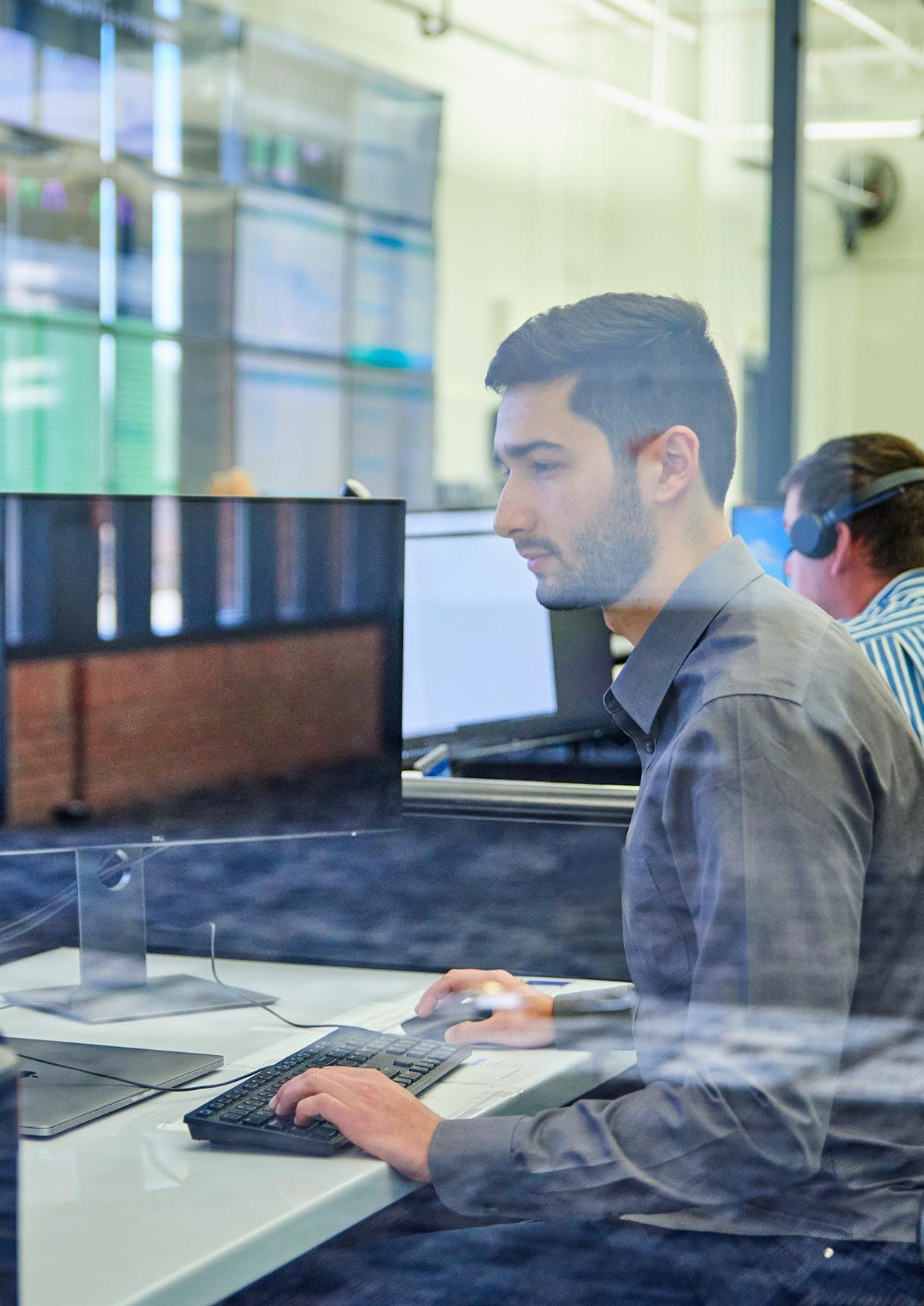
Over a decade ago, Charlie Ergen, the Chairman and Co-Founder of DISH Network, had the foresight to realise that the satellite TV business was (at some point) going to be a business in decline. So, he started acquiring spectrum.
“If I go back eight years ago, nobody – admittedly, including myself – ever believed that Charlie would actually build a wireless network,” added Dave Mayo, EVP of Network Development at DISH Wireless. “That was until he really inserted himself in the middle of the T-Mobile-Sprint transaction and, frankly, created a pretty magnificent opportunity for the business to create a 5G network.”
In order to successfully change the wireless business model and create something new, Ergen put together a team of highly-skilled, multi-talented professionals, who could adapt to the technology’s expansive, everchanging needs: Stephen Bye, Dave Mayo and Marc Rouanne.
As Stephen Bye’s, EVP and Chief Commercial Officer, role encompasses the sales, marketing and commercial strategy aspects of DISH Wireless.
Mayo also leads a number of teams, including the US network development team that covers four regions and 36 markets, a systems integration team, a radio engineering
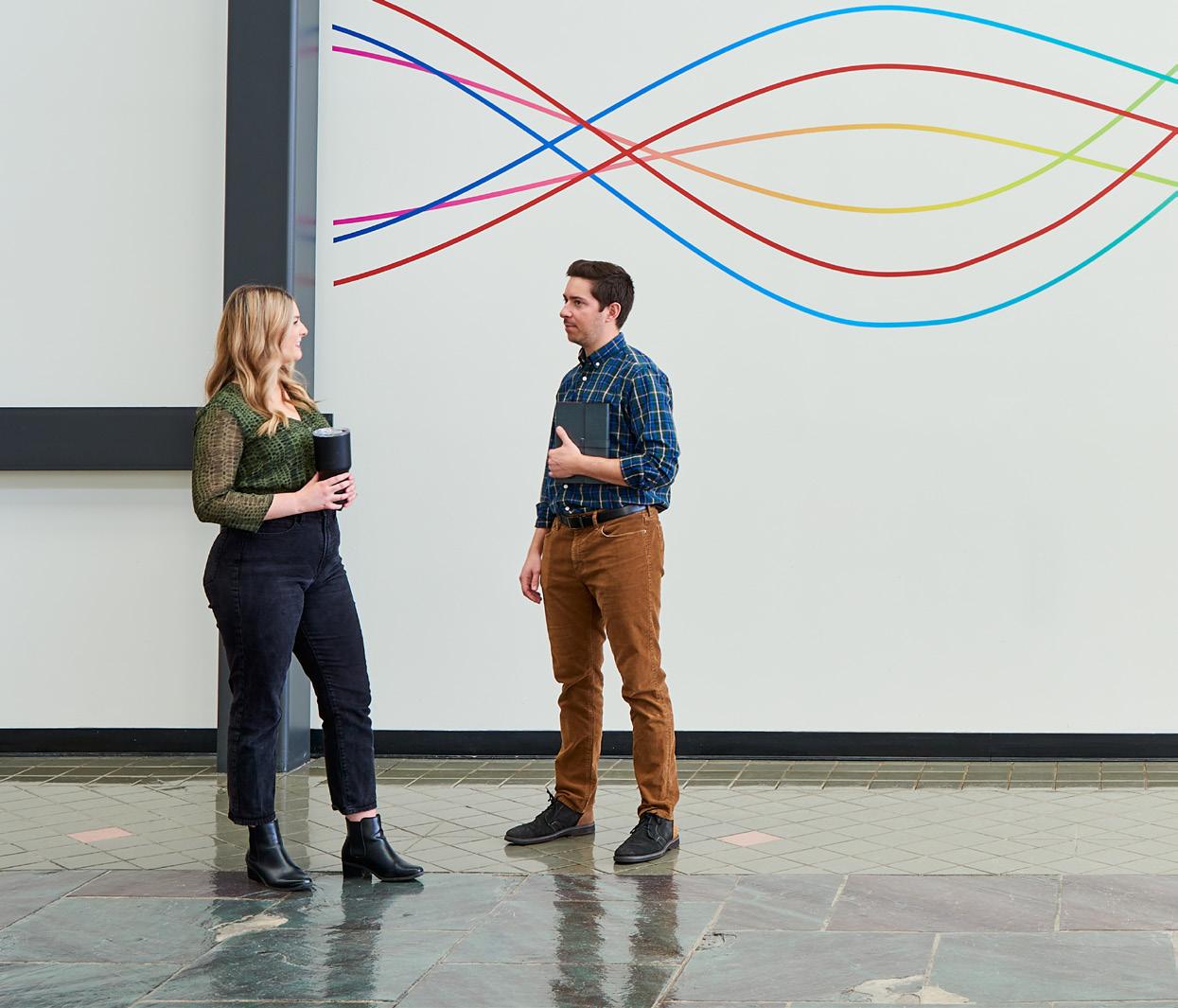
and design team, and a network engineering and operations team. And in his role, Mayo integrates and develops the network according to provided specifications.
“Marc comes up with ideas concerning the tech, and my job is to implement them,” adds Mayo, summing up the crux of his job description.
“I'm a technology guy,” agrees Marc Rouanne, EVP and Chief Network Officer. “My job concerns thinking about what technology we should consume and how we should put it together.”
One such pivotal piece of technology is the DISH 5G network, which is cloudnative and operates on an Open-RAN-based
INDUSTRY: TELECOMMUNICATIONS
LOCATION: COLORADO, US
As Executive Vice President, Network Development, Dave Mayo is responsible for DISH’s wireless buildout strategy and execution of the company’s aggressive deployment of the nation’s first standalone 5G network.

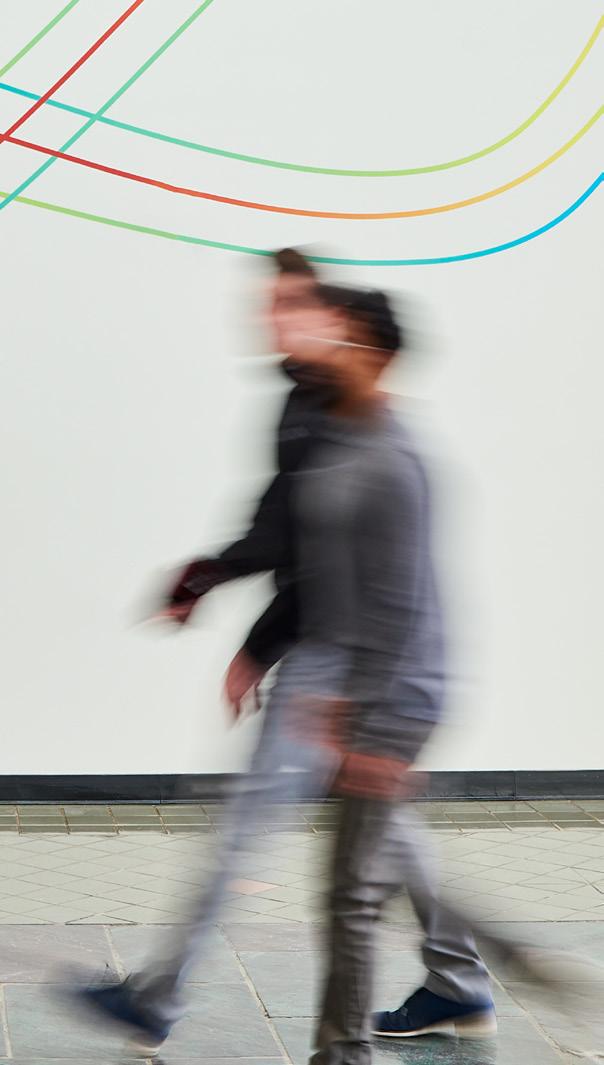
Prior to joining DISH, Dave served as Senior Vice President at T-Mobile USA, Inc., where he most recently led T-Mobile’s IoT business and founded the company’s fixed wireless business. He also led the strategic, development and financial areas for T-Mobile’s network organisation during more than two decades of explosive growth.
Dave innovated and led the aggressive transformation of T-Mobile’s transport network to fibre which was foundational to T-Mobile’s multi-year “Fastest Network” claim, T-Mobile’s first-ever nationwide, network-based marketing claim.

Communication service providers (CSPs) have big plans for tomorrow’s 5G networks. They envision versatile, programmable infrastructures that can be customized to meet the needs of diverse enterprise applications. DISH Networks isn’t waiting for tomorrow. They’re building “Network of Networks” today.
DISH’s 5G network will deliver a multitude of services tailored to different customer requirements over a unified infrastructure. It will run as an open, cloud-based system that can continuously onboard new technology from multiple vendors. And VMware innovations are playing a key role in making it happen.
DISH’s 5G network is built to meet diverse application requirements for latency, performance, resiliency, and other characteristics. It’s designed from the ground up to be: Open, to integrate multiple vendors and clouds Agile, to quickly assemble network resources based on service requirements Programmable, to automatically instantiate slices end to end—from core to edge, cloud to customer
Leveraging VMware Cloud™ on AWS, DISH has started a multi-cloud journey to maintain flexibility into the future. It doesn’t stop there, however. Their network characteristics further extend from the core to the RAN. In the end, DISH’s horizontal architecture will span from their core to the RAN and edge without network siloes.
A thing dreams are made of for most CSPs, DISH has created this network by leveraging cloud-native approaches. The increased flexibility and agility that comes from cloud-native environments do bring complexities. Fortunately, the VMware telco cloud portfolio has helped to simplify those complexities through dynamic automation and unified service assurance. DISH can use this automated, open, agile and programmable network to:
Monetize: With vendor-neutral foundations, DISH can create new partnerships and services far faster than traditional CSPs.
Deliver Services Quickly: With a network that dynamically composes services based on customer needs, DISH can create customizable services which meet SLAs, in a fraction of the time from current standards.
Continually Improve Efficiencies: With the ability to access unified data and components, the ecosystem and DISH itself can build applications that will help enable progressively smarter network operations.
These are groundbreaking capabilities—and it’s only the beginning. The real story starts now, as DISH uses them to help customers transform their businesses.


infrastructure. This is almost diametrically opposed to those of traditional operators –helping to establish DISH and its network as a one-of-a-kind solution.
As the technological landscape evolves, a number of little-known developments are permeating the technosphere, one of these being Open Radio Access Network (O-RAN).
Stephen Bye – who, in his role of CCO, is used to translating techno-speak – explains the concept further: “To understand O-RAN, you need to understand that the most critical word in that acronym is ‘open’. This ‘openness’ allows us to virtually ‘open up’ the ecosystem and separate the software from the hardware.”
The DISH team has taken the open approach to its network architecture. With O-RAN, the DISH 5G network runs on fully-virtualised - and typically containerised - software, deployed via the cloud across its network platform.
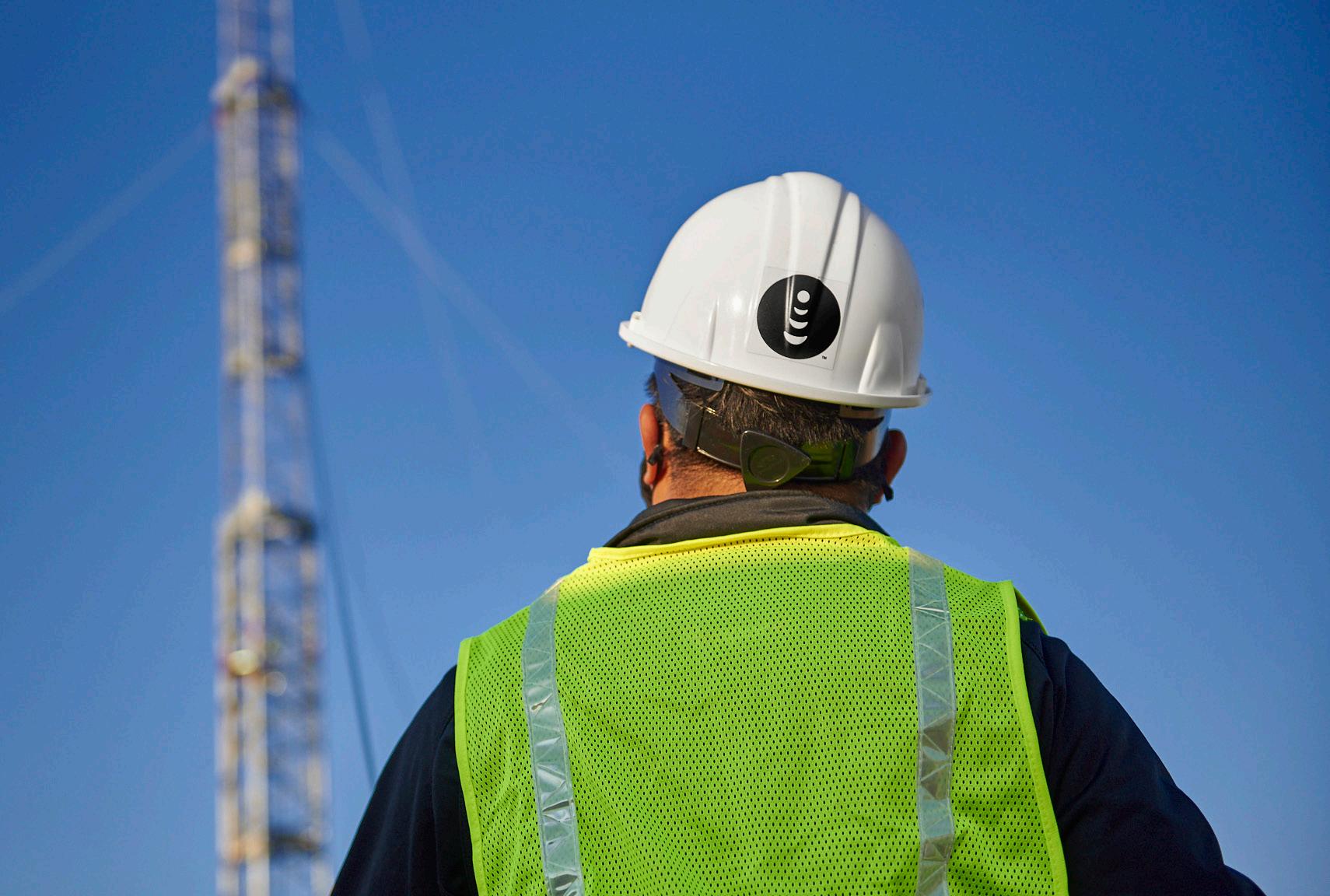
“This means that we're not encumbered or constrained by a traditional, verticallyintegrated system where the software is anchored to the hardware; we no longer have those limitations,” Bye adds.
Pointing out what's exciting about O-RAN network architecture, Bye explains that it allows DISH to utilise the innovation of other parties on the platform. This essentially gives DISH the opportunity to bring in innovative software and solutions at a faster pace than legacy networks.
“We can control how that innovation works, as well as how the software is
deployed in a traditional model. It’s like turning a vertical network on its side and making it horizontal,” says Bye.
In a recent conversation, Marc Rouanne outlined how DISH is currently focusing on consuming the access in a software-driven manner, which includes the mixing of traffic, having private networks and new forms of mobility services, and establishing new forms of device consumption capabilities.
“From a technology perspective, we are going to be what we call 'a network of networks'. A large part of that is going to be giving consumers - with very different, very competitive capabilities - a competitive offer, with the agility to have new and extremely fast services,” said Rouanne.
Alongside this, technological developments are driving a much faster
lifecycle of software development and deployment.
“We are starting to see a much faster lifecycle wherever we are purely cloud-native”, says Rouanne.
“And this is just the beginning. It's a journey, but the beauty is that it's hard for our competitors to even get there, which gives us a playground for quite a few years that we are really going to enjoy.”
MARC ROUANNE EVP AND CHIEF NETWORK OFFICER, DISH WIRELESSSuch an ambitious project could not, of course, be achieved without the right partners. Just as everything is becoming more connected in the macro technological world, the way that businesses are operating is also reflecting this trend on the micro-scale.
DISH has a number of huge names in its partner ecosystem. These include AWS,
VMware, Samsung, Dell, Mavenir, Cisco, NOKIA, IBM, Dell, Intel and Oracle, just to name a few.
DISH interacts with these partners in the cloud, making data sharing, connection, synthesis and collaboration as easy as possible.
For Rouanne, this network of partnerships is one of DISH’s greatest successes.

“From a technology perspective, this is the biggest achievement [in networking] we have had in the last two to three years – the creation of an ecosystem that is investing in the same vision that we have.”
“The reason why our partners are massively investing is that they're convinced of what we are doing and that it's a game changer.”
“In terms of capabilities, I know that something big is coming our way”
The physical buildout of the DISH 5G network, led by Dave Mayo, has come to life in an unprecedented amount of time.
A major milestone for the company was reached in June 2022, when DISH announced that its newly built 5G network was deployed and commercially available to more than 20% of the US population, through its Project Genesis brand. This was achieved in a build of just 14 months - a feat that has never been achieved before.
The service is now commercially available across more than 120 markets and customers can purchase the DISH service and phones throughout the US.
In addition to supporting those customers, DISH will also be launching other services under different brands on its network.
Consistently affirming its reputation for quality and innovation, DISH has introduced a number of pioneering connectivity solutions to the American market. These include its Project Genesis, for which DISH launched the United States’ first cloud-native Smart 5G network, and Boost Mobile, which provides best-in-class value and connectivity to American wireless consumers, through DISH Wireless’ largest retail wireless brand.
DISH has already launched a mobile service in Las Vegas that uses VoNR (Voice Over New Radio). Remarkably, DISH is the first operator in North America to actually deploy commercial services with VoNR, which it launched back in May of 2022.
In addition to the US Federal Communications Commission (FCC) build requirements, DISH has also established roaming agreements with two network service providers.
“These really give us the opportunity to have an immediate, nationwide footprint,” comments Mayo.
INDUSTRY: TELECOMMUNICATIONS
As Executive Vice President and Chief Network Officer for DISH’s wireless business, Marc is responsible for network architecture, RF network and strategy, core network architecture and strategy, cloud and edge strategy, security, transport, 5G lab management and interoperability testing.
Marc has more than 20 years of international management experience in the telecommunications industry, having held executive positions in R&D, customer operations and product management in the U.S., France and Finland.



outcomes start with a remarkable network.
remarkable telecom
more now
Once the DISH 5G network covers at least 75% of each economic area within the United States in June 2025, DISH will have reached its final milestone, mandated by the FCC, to move on to the next phase of its expansion. This next milestone step is mandated for June 2025 (by the Federal Communications Commission). “Frankly, beyond that, we'll build things as and when they make financial sense”, Mayo adds.
The combination of roaming agreements, while building out its own network in key markets nationwide, is a clever, efficient way of operating. In an age of digital transformation, many companies are going all-in on their infrastructure at once without the business case to support it – and that can be fatal for businesses. It’s better to build up gradually and create the waves needed to justify further growth, as Mayo establishes.
“We think we'll reach what constitutes ‘critical mass’ sometime next year, approximately covering a 230-240 million population area.”
The next step in DISH’s wireless expansion plans is branching into the enterprise market. And, while DISH has only just started

“There’s a tremendous opportunity for the business, and I think it'll really give us the ability to grow lots of revenue in a way that's different to our competitors”

INDUSTRY: TELECOMMUNICATIONS

LOCATION: COLORADO, US
As Executive Vice President and Chief Commercial Officer of the DISH wireless network business, Stephen’s responsibilities include wholesale and enterprise services, business development, product management, service integration and partner management.

He brings to DISH three decades of experience across wireless, cable and wireline providers in the U.S. and several other countries. A seasoned senior executive, Stephen has experience in technology and network development, network operations and deployment, engineering, IT, sales and marketing, as well as corporate strategy and M&A.
Previously, Stephen served as CTO of Sprint during the transition and upgrade from three operationallydisparate networks to an LTE-based network. Additionally, he has held a range of executive positions at Cox Communications, AT&T, BellSouth International, Optus Communications and Telstra.


to embark on this project - and is still looking to break into the market proper - the future prospects look hugely promising.
Bye explains that DISH sees enterprise as an enormous opportunity, and the numbers in question are not insignificant. “Today when you look at the wireless market, it represents about $US280bn of revenue, but it's dominated by consumer services and consumer rate plans, unlimited plans, SIM cards and smartphones.”
“We at DISH actually look at the market very differently. When I look at the enterprise market today, companies in the United States are spending nearly US$1tn dollars a year on services, and that covers everything from communication to software.”
The market is three to four times bigger than the wireless market alone, and wireless
service providers are capturing a very small share of that – which businesses are spending on technology and services. “So, when we look at the enterprise market,” says Bye.
“Enterprise customers are looking for how they can take advantage of technology and networks to drive their efficiency, to improve their profitability and to drive productivity into their enterprise.”

As such, the question becomes, how can DISH’s wireless network and connectivity be used to achieve these objectives?
“We see our network and the platform that we're building, as becoming part of the fabric of that business. We think of it as part of its actual nervous system, which will enable that business to grow to achieve its objectives, while we can be a partner and a solution to the problems that they're facing”, explains Bye.

Many of DISH’s offerings will focus on enterprise networks. These private networks will sit on top of SMBEs (Small Medium Businesses and Entrepreneurs), which will contain their virtual mutual policy management, allowing them to control their costs, their mobility and their security in a simplified manner.
Rouanne explains how, through the use of private networks, DISH is able to "give the keys to big enterprises", enabling them to keep the data in their own facilities and giving them a greater level of control over their data security, and their ability to offload the traffic onto their own WiFi.
When asked about DISH’s vision and objectives for the market as a whole, Mayo noted that he has noticed a desire among many companies – whether it be oil and gas refineries, or manufacturers – to keep their data on-prem.
“It's counterintuitive for the incumbents to move core network elements offprem, out of their switches and into a manufacturing, refinery or campus-type environment. That's one of the unique things that our network is engineered and architected to do, right out of the gate: to actually provide that capability.”
And Mayo confidently says that, within the next five to ten years, DISH will be far better
positioned to be able to achieve that.
"I think we'll be able to take advantage of opportunities like that and be the wireless network for CIOs, which is a tremendous opportunity for the business. It'll really give us the ability to grow lots of revenue in a way that's distinct and different to our competitors.”
These last two points are important to note, as data and its security are core concerns of companies at the moment. Being able to offer capability alongside individualised security is a key differentiator.
“Existing networks are monolithic today. Because DISH is cloud-native, however, we can have a mini-core for each enterprise and they can decide – whether they fly drones, move trucks or are engaged in retail – what they do with this. It gives them full control”, Rouanne explained.
Despite initial uncertainty regarding how successful the venture into wireless networks would be, DISH has gone from strength to strength under Charlie Ergen’s leadership.
“And so, in terms of capabilities,” grins Rouanne, “I know something big is coming our way.”
“Charlie Ergen (Chairman and co-founder) had the foresight over a decade ago to realise that the satellite TV business was at some point going to be a business in decline, and so he started acquiring spectrum”
 WRITTEN BY: HELEN ADAMS
PRODUCED BY: TOM VENTURO
WRITTEN BY: HELEN ADAMS
PRODUCED BY: TOM VENTURO
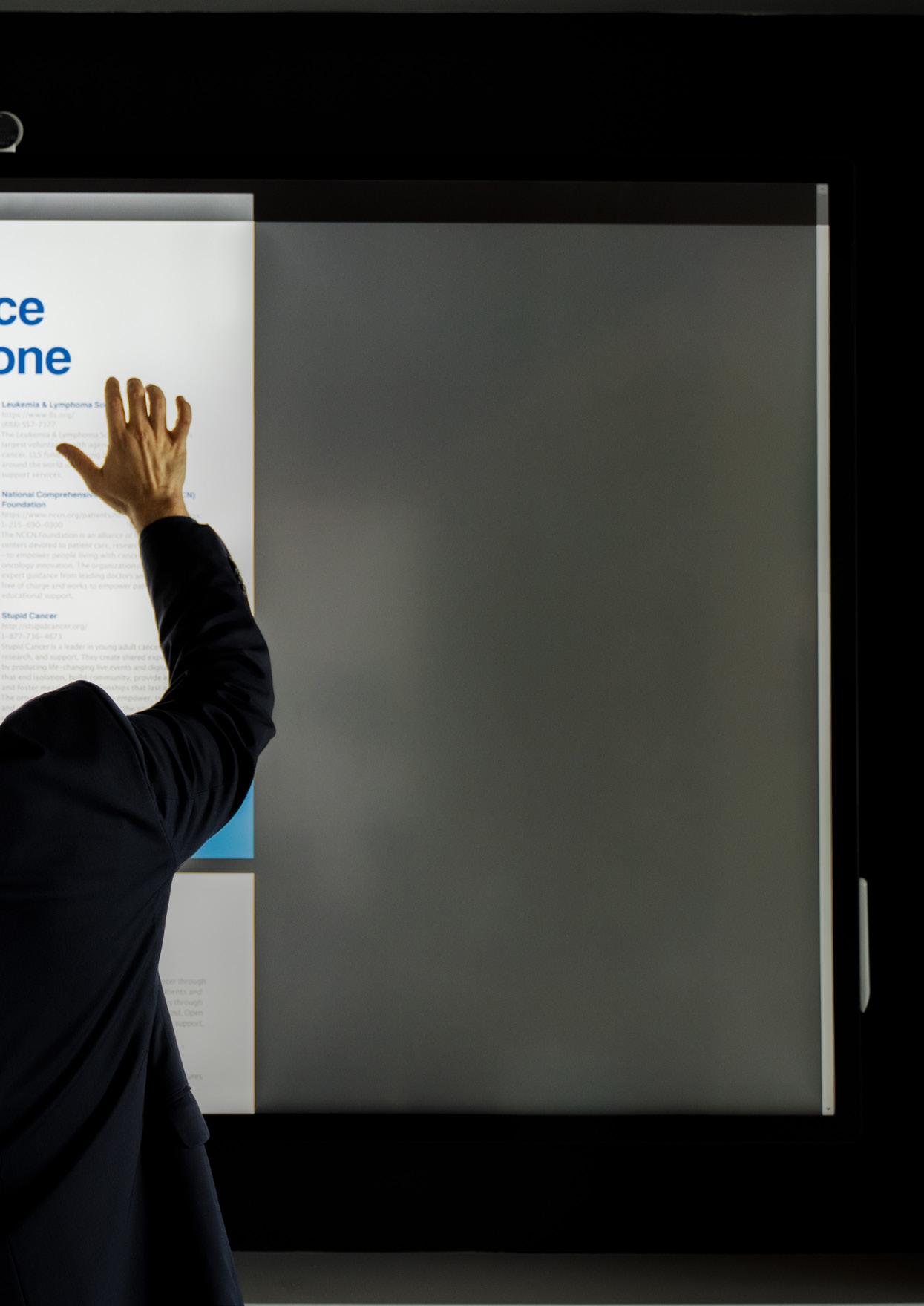
Mark Yunger is the Head of IT at Servier Pharmaceuticals. His role encompasses all aspects of technology for the company, including the application portfolio for various functions, infrastructure, data and analytics, as well as cybersecurity and digital therapeutics.
“I started off in technology doing statistical programming in graduate school for my Master's programme research and then later on for my PhD. From academia, I went into the software industry in the high-tech space and worked in software development and internationalisation.” It was during the dot. com meltdown in the early 2000s when Yunger found his way from high-tech into biotech. “By way of IT managed services at Millennium Pharmaceuticals, I eventually moved into the industry and have been in the biotech space ever since - I really love it!”
For Yunger, there are two key components that have kept him in the life sciences.
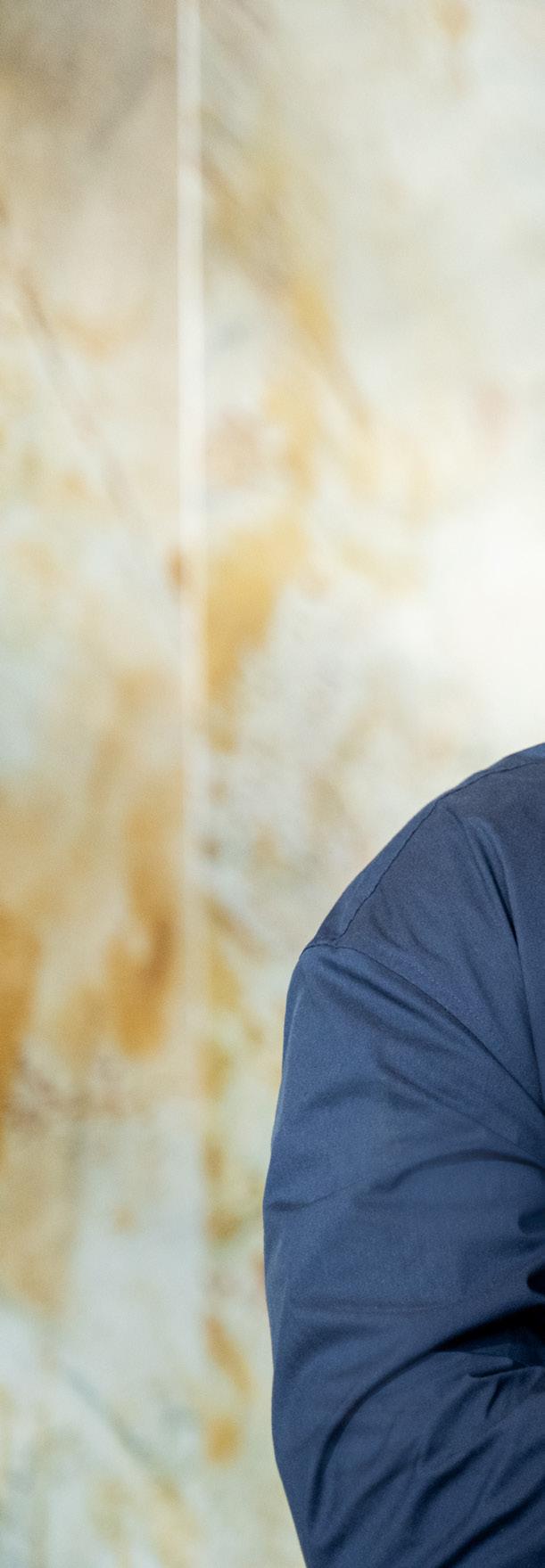
“When waking up in the morning, knowing that you are, even in a small way, making a contribution to curing cancer and saving lives through life-saving products, that's a very motivating reason to get out of bed in the morning and it's a very fulfilling endeavour.”
When Yunger was in the high-tech services industry, he had the opportunity to travel around to a variety of different companies and industries, from financial
Servier Pharmaceuticals on digital transformation, unsung healthcare heroes, patients supporting patients and the essential ingredient to a good partnership

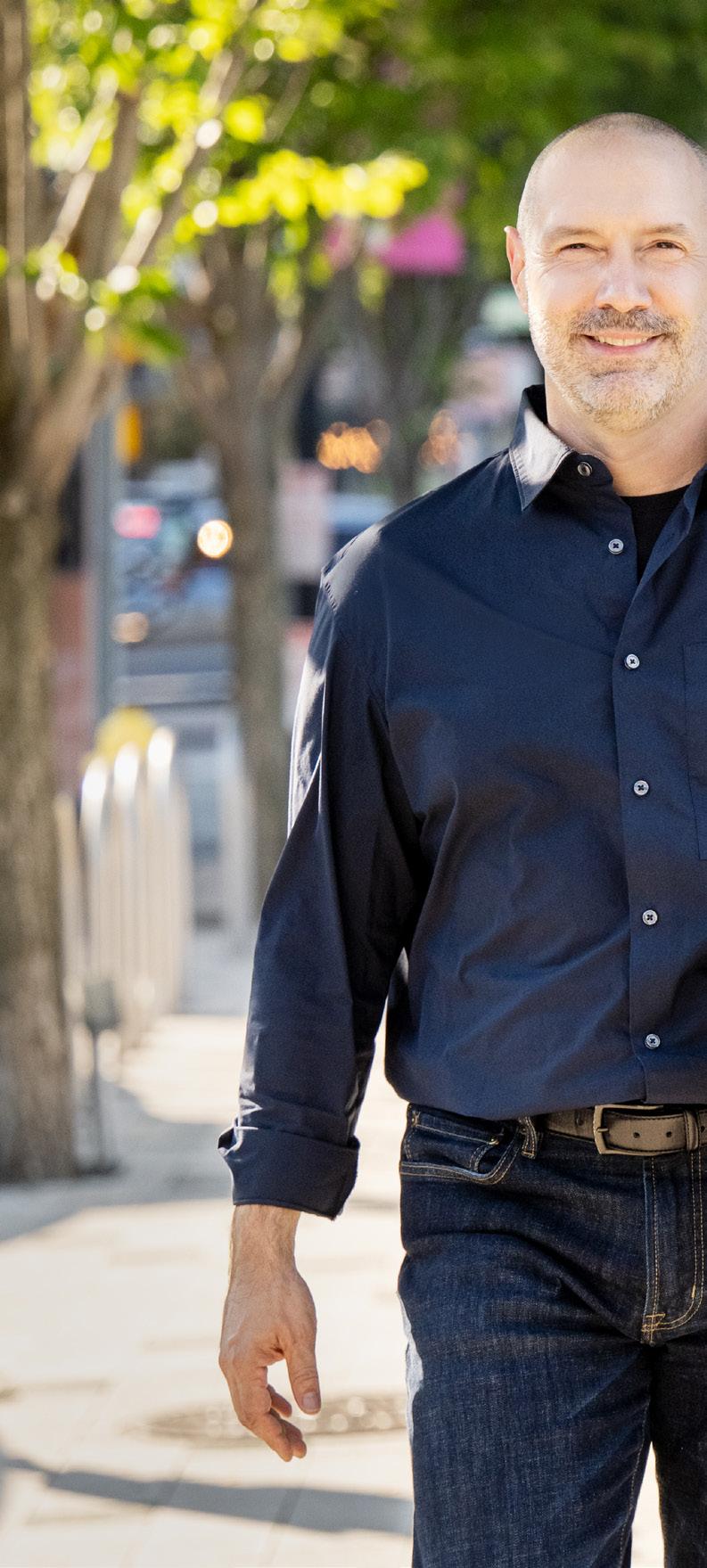
INDUSTRY: PHARMACEUTICALS
Mark Yunger is the Head of Information Technology at Servier Pharmaceuticals. Working closely with R&D, Manufacturing, Commercial, and Corporate functions, he is responsible for leveraging information technology to accelerate therapies through the pipeline in pursuit to improve patients' lives. He is also responsible for guiding the development and partnering of the company’s digital therapeutics portfolio.
With over 20 years of technology leadership experience within the biotech and high-tech industries, Mark is a proven leader in building world class technology organisations. Prior to Servier Pharmaceuticals, Mark held a variety of roles of increasing responsibility, most recently as the Head of IT for Seres Therapeutics where he led the building of foundational capabilities to advance microbiome-based products to cure infectious diseases including C. difficile and Ulcerative colitis. Prior to Seres Therapeutics, Mark was the Vice President of Infrastructure and Operations at Biogen where he led a team of technologists that maintained Biogen’s applications from Research & Development, to Pharmaceutical Operations & Technology, to Commercial as well as empowered the acceleration of Biogen's business through designing and building leading-edge cloud services and high performance computing.
services to leisure and hospitality, to manufacturing. “Through that journey, I came across a number of biotech businesses and was struck by the differences in corporate culture across industries. I felt most at home in biotech.” Yunger found the vibe, interactions and culture to be something with which he was well aligned.
Yet post-COVID-19, he learned a lot more about the healthcare sector from an individual perspective, as well as from within the healthcare industry, and within the Servier Pharmaceutical company.
“Moderna, J&J, and Pfizer played key roles from a COVID-19 vaccine perspective, but just as important were the frontline workers, particularly frontline healthcare workers. They are the unsung heroes that deserve a lot of credit, a lot of support and our gratitude for everything that they have gone through,” said Yunger.
Yunger sees that technology has played a supporting role in this, particularly with
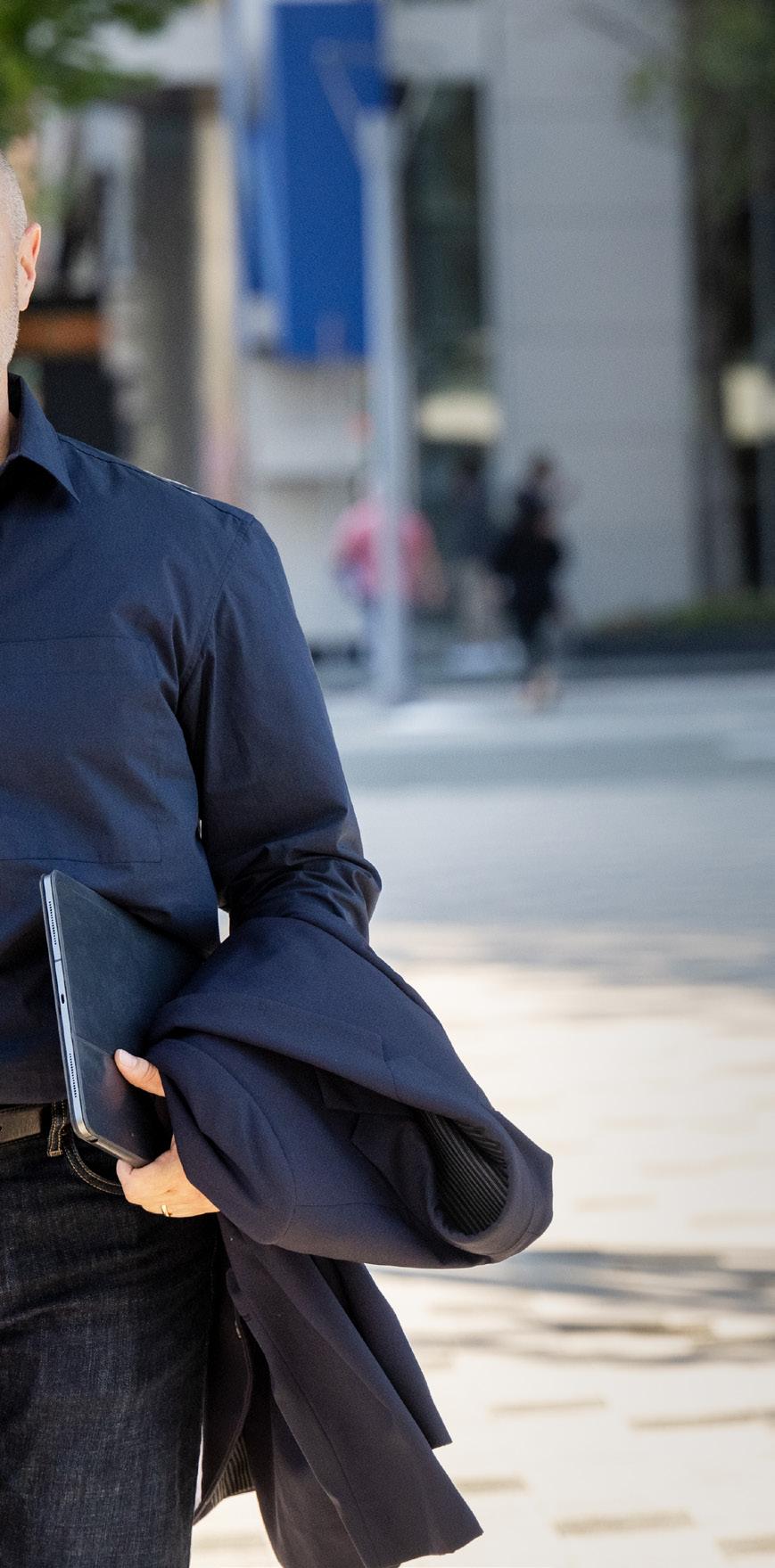

telemedicine and being able to allow patients to get access to care in ways pre-COVID-19, the healthcare industry was less amenable to. “I think that was a good silver lining from an industry perspective, out of an otherwise very difficult time.”
From a company perspective for Servier Pharmaceuticals, it was an accelerator for their digital transformation strategy. Although the company was making progress in a methodical way, the pandemic forced the healthcare industry to accelerate that roadmap and accomplish what Yunger thinks they probably would have done in a couple of years.

“We had to get it done in a couple of months, because the organisation had to continue being productive and having people sit at home, not being able to do
their jobs was not an option,” said Yunger. “It was an ‘all hands on deck’ moment, not just for Servier Pharmaceuticals, but really, for all companies. I was very grateful and impressed with my colleagues and my team being able to cross that gap in a very short period of time.”
From an individual perspective, Yunger was moved by the impact a lack of socialisation had, especially on his family. “Just talking to colleagues and talking to friends and family, it was a very isolating time, particularly for teenagers. I have three kids, all three of whom were in middle school and in high school during the pandemic. It was very difficult for them.” Although video calls made an imperfect replacement for that socialisation, Yunger laments the impact of the isolation.
The transformation journey at Servier Pharmaceuticals has been one of rapid scalability. Yunger has seen the company grow exponentially since its founding in 2018, leading the transformation of the U.S. oncology field.

“We have the fortunate advantage of not having a lot of legacy infrastructure or technical debt, we were really born in the cloud and we're able to scale and expand rapidly, as we were adding new colleagues and new services.”
The company keeps its data in the cloud allowing for speed, agility and scalability, something Yunger sees as a positive as it frees up employees from physical constraints.
“Although you're always able to automate on-premise infrastructure, you eventually hit physical constraints. Having your data in the cloud really releases you from a lot of these constraints and they just don't exist for most workloads in the cloud.”
Servier Pharmaceuticals leverages their cloud capabilities to accelerate meeting the needs of their patients. An example of this

can be seen in their patient engagement portal to help patients navigate their patient journey, a project Yunger is very excited about. “Our patient engagement portal is a platform through which we provide digital capabilities to support our patients,” Yunger explains. “On the patient facing side, there are tools that are tailored to a patient's particular needs. Once you register, we can provide tailored content to your areas of interest. If you are a caregiver, or parent of a patient, once you register, we’ll provide all the relevant content, tools and information to meet your needs.”
“We've been very fortunate to have the opportunity to meet with our patients and hear their stories. We've found these stories of perseverance and making it to the other side of treatment really inspiring,” said Yunger. “We are very fortunate to be able to bring our patients life changing treatments. For a diagnosis like acute lymphoblastic leukaemia (ALL), it used to be a death sentence for kids. Although fighting through it today is a very hard journey, the good news is that you can now make it to the other side.”
Servier Pharmaceuticals' goal of sharing these patients’ stories is to be able to bring
“TALKING TO COLLEAGUES AND TALKING TO FRIENDS AND FAMILY,COVID-19 WAS A VERY ISOLATINGTIME”
them to other patients who are earlier in their journey. So when you've just been diagnosed or you're in the middle of treatment and things look dark, patients will be able to see what it looks like on the other side of treatment and that they can get through it.
Servier Pharmaceuticals uses technology transformation to drive patient and employee strategy. “I think that’s another silver lining from COVID-19, trying to make positive outcomes from a bad situation,” says Yunger.
Empowering partnerships and a future outlook
Servier Pharmaceuticals has long-standing partnerships with Markley Group and

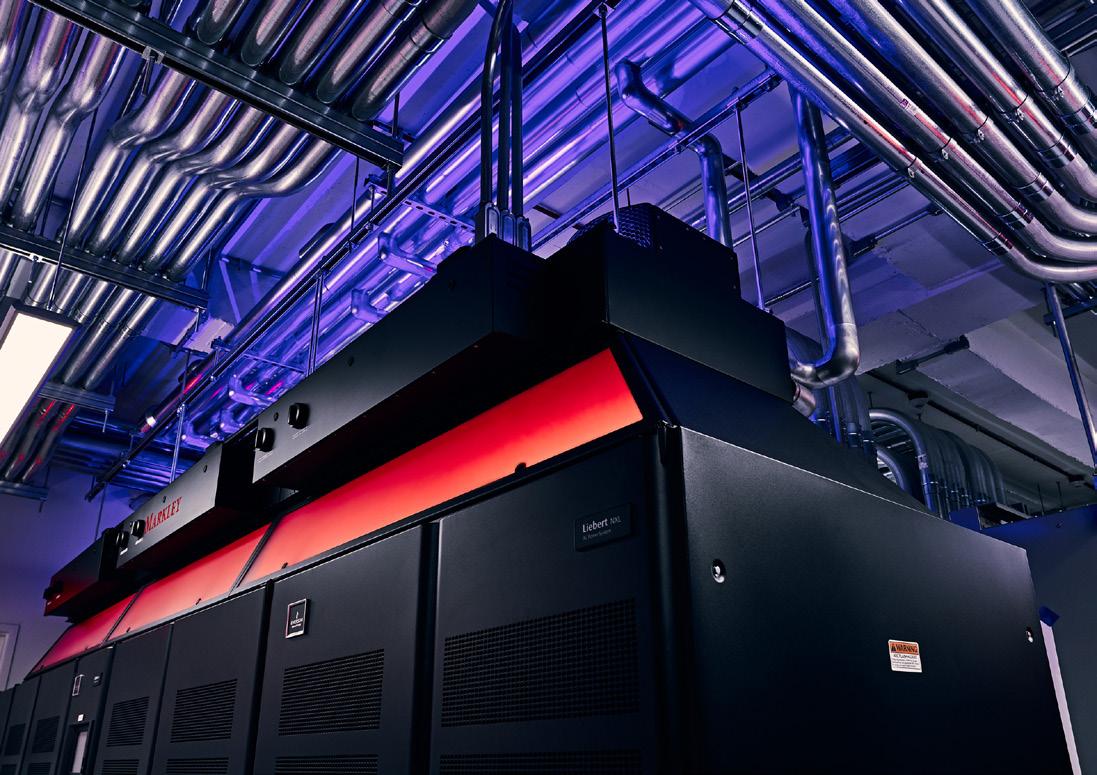
TEKsystems. “My relationships with both of them have transcended the companies that I've been with,” says Yunger. “They're really great partners and as to what is essential to a good partnership, I really think both Markley and TEKsystems understand the answer to that question. Great partnerships are based on relationships person to person relationships. They consistently demonstrate in the delivery of their services that they care about you as a professional and your professional success.”
Markley Group is an infrastructure hosting service provider, which provides critical infrastructure services to companies. According to Yunger, they provide world class services and infrastructure capabilities for all layers of traditional infrastructure. TEKsystems is an IT service and talent provider.
For the next 12 months, he sees the company further strengthening and expanding its oncology presence in the U.S. as Servier Pharmaceuticals continues to
build out a robust portfolio of potentially life-changing treatments for patients.
“The next 12 months is really ushering in a new chapter of innovation for the patients we serve. We have a lot of early stage research that's exciting. We’re building out our capabilities in early stage research which will be very important for us from both a scientific perspective, as well as a technology perspective. Accelerating the early stage discovery of new drugs will be a very big area for us.”
Servier Pharmaceuticals has grown rapidly over the last four years, but the company plans to continue to grow rapidly, both organically and inorganically. “Continued rapid growth for the next 12 months is part of the plan and technology will need to continue to scale and grow with our organisation.”
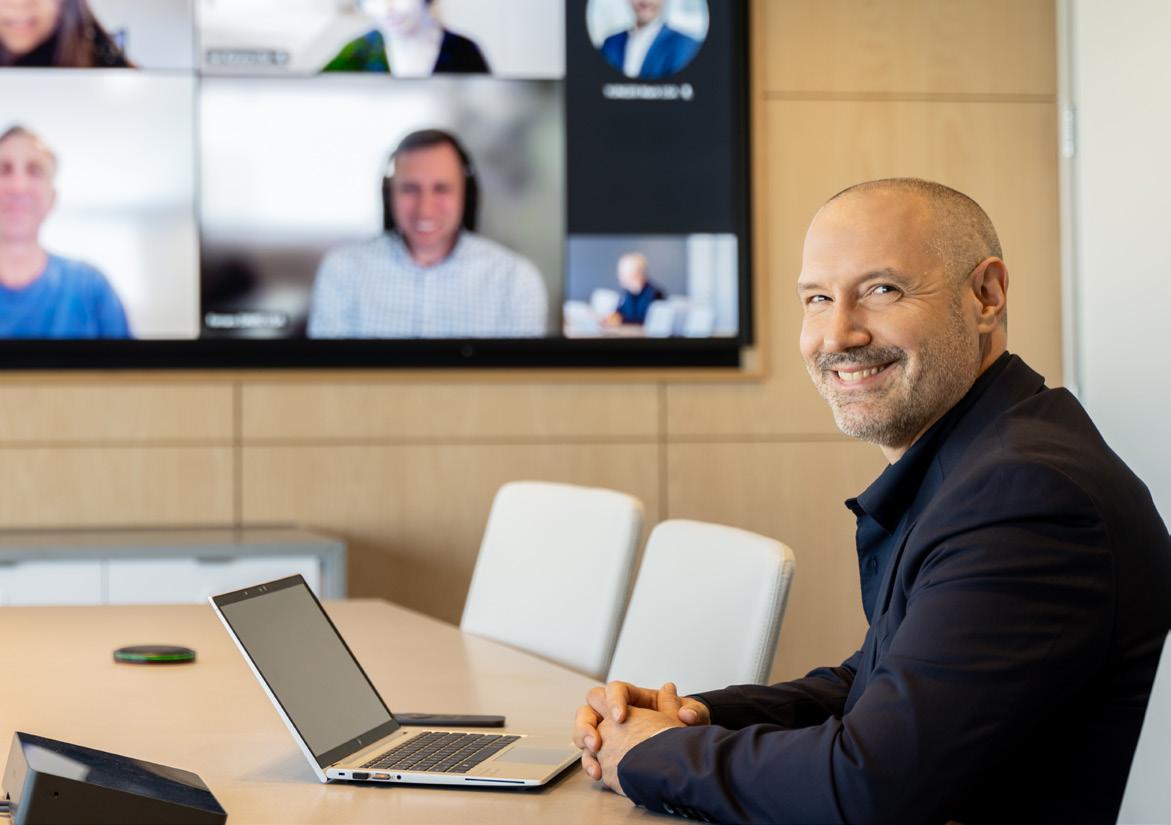
 WRITTEN BY: İLKHAN ÖZSEVIM
PRODUCED BY: TOM VENTURO
WRITTEN BY: İLKHAN ÖZSEVIM
PRODUCED BY: TOM VENTURO
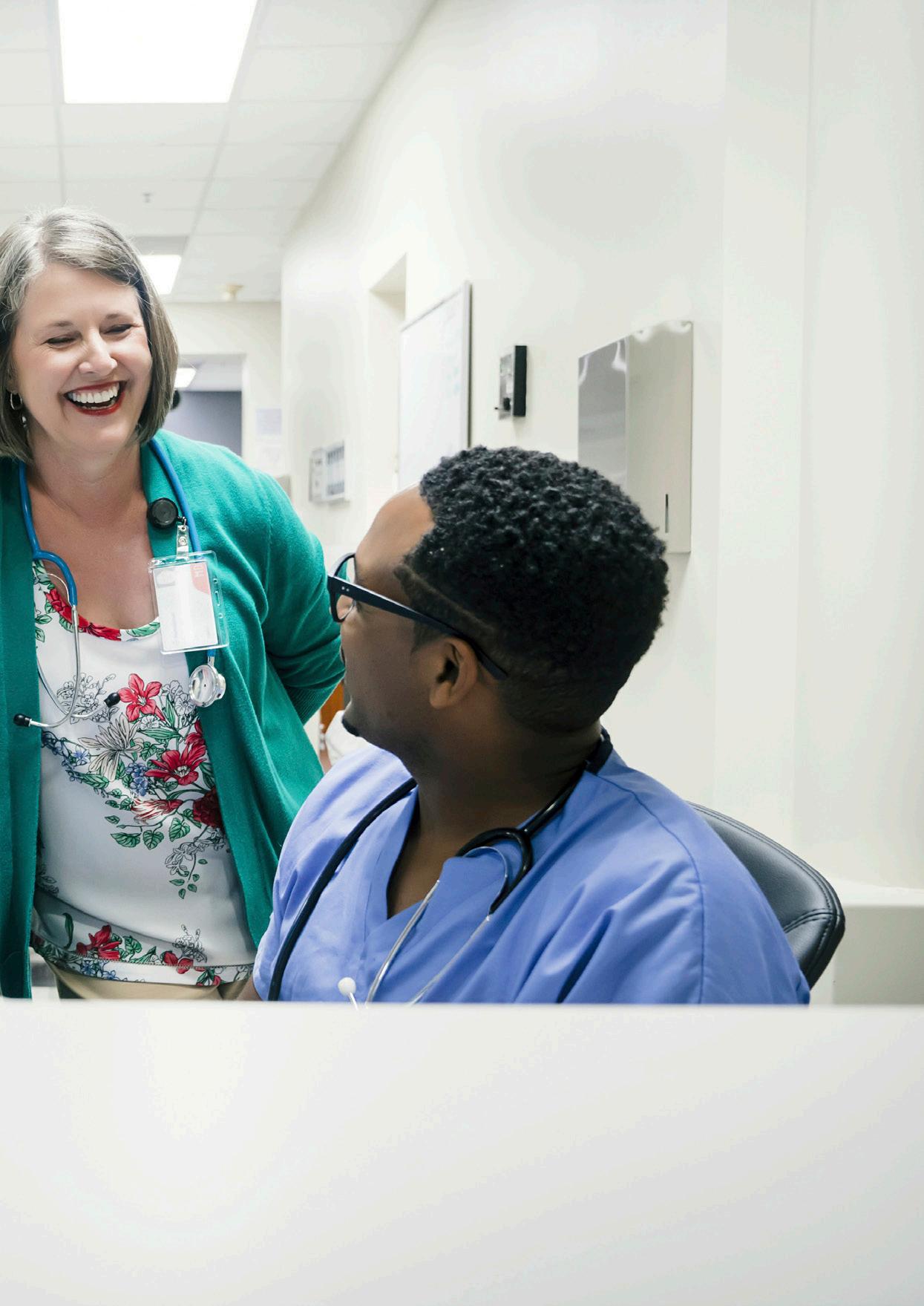

Providence is a 165-year-old healthcare company and takes enormous pride in the fact that they were founded by women.

Over the decades, they have grown immensely, combining the ministries of ‘Providence' and 'St. Joseph', while expanding through the acquisition of other health systems, which has allowed them to be the US$25bn health system that they are today – and one of the largest health systems in the US.
As a whole and as individuals, each member of the team works to serve their communities in Alaska, Montana, Oregon, Washington California, Texas and New Mexico. Providence’s mission is to serve all, but especially the poor and the vulnerable, through their vision of 'Health for a Better World’.
“We primarily serve communities across seven states here on the west coast of the US, with 52 total hospitals and ministries, over 1000 clinics and 120,000 caregivers that serve those communities,” says B.J. Moore, CIO & EVP of Real-Estate Strategy Operations at Providence.
Moore has a professional career spanning 30 years, 27 of which were spent at Microsoft with roles in everything from finance and operations to IT. His last role at Microsoft was as the VP of engineering, responsible for the company’s global commerce and compliance. After 27 years, ready to do
B.J. Moore, CIO & EVP of Real-Estate Strategy Operations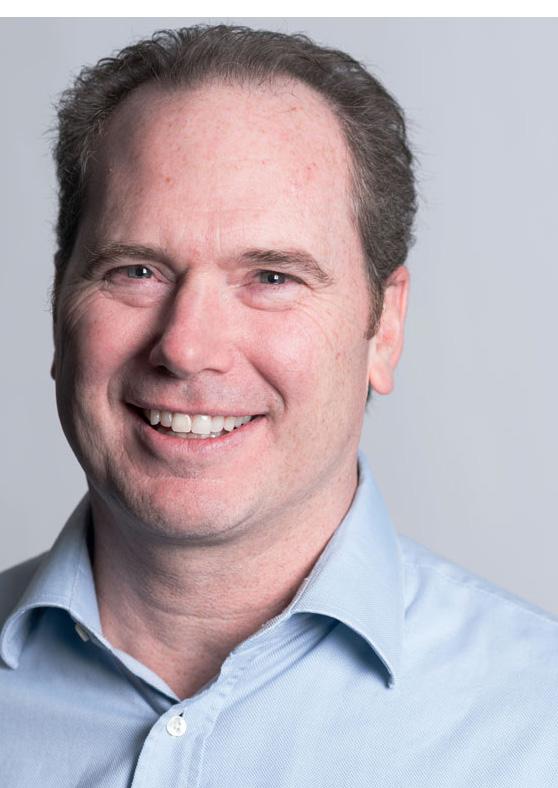
something different and just as healthcare saw the rising need for digital transformation, Moore joined Providence as their Chief Information Officer (CIO). Since joining three years ago, he's also taken on their real-estate strategy and operations.

Moore’s role at Providence is twofold. As CIO, he owns the digital systems – everything from the networking infrastructure in their hospitals and ministries to all the systems they use for shared services such as payroll and financial systems, and the clinical systems that are used by their caregivers and patients –essentially covering most of the technology that's required to run, secure and modernise a health system. His other role is in realestate strategy and operations, where his team is responsible for all the hospitals and clinics, as well as the buildings, maintenance and support of those buildings, including the cleaning of the hospital rooms.

“We primarily serve communities across seven states here on the west coast of the US, with 52 total hospitals and ministries, over 1000 clinics, and 120,000 caregivers that serve those communities”
B.J. MOORE CIO & EVP OF REAL-ESTATE STRATEGY OPERATIONS, PROVIDENCE

INDUSTRY: HEALTHCARE

Providence is a national, notfor-profit Catholic health system comprising a diverse family of organisations and driven by a belief that health is a human right. With 52 hospitals, over 1,000 clinics, senior services, supportive housing, and many other health and educational services, the health system and its partners employ nearly 120,000 caregivers serving communities across seven states – Alaska, California, Montana, New Mexico, Oregon, Texas, and Washington.
“One thing I'm very proud of,” says Moore, “is that we received the very first known COVID patient in the United States, in January 20th 2020; and not only did we receive the first known patient (who was successfully treated), but we have served our communities very well throughout the entire pandemic. Our impact is huge.”
When Moore joined Providence, he visited hospitals and ministries, and met with their administrative staff and caregivers. It became clear to him that healthcare was significantly behind other industries. “My estimate was 15-to-20 years behind,” says Moore. “And out of that learning tour came our three strategic pillars of 'simplify', 'modernise' and 'innovate'.”
Moore likes to think of these pillars in terms of Maslow's hierarchy of needs: at the bottom of the hierarchy sits 'simplify',

Nobody went to medical school so they could spend their days entering data into an EHR. They went to medical school to embark on a rewarding career, helping people improve their health and their lives.
ACI technology ensures the primary focus of each visit is the patient and their story, not notetaking or documentation. That strengthens the patientphysician relationship and increases patient satisfaction, engagement, and retention. It brings providers back to what attracted them to medicine in the first place. And it removes the heart-sinking feeling of getting to the end of clinic time and seeing hours of documentation tasks ahead.
For example, since implementing Nuance’s ACI solution, the Dragon Ambient eXperience (DAX), healthcare organizations have seen patient satisfaction rates rise to 83%, with most saying their visits have felt more personal and that their physician has been more focused on them. Physicians spend less time looking at computer screens, documenting care, and working after hours. With Nuance DAX, they can focus on delivering higher-quality care to more patients—without burning out.
The most exciting thing about ambient clinical intelligence is that improving patient-physician encounters is just the beginning. Research is already well underway into using ACI to spot indicators of depression, anxiety, and social determinants of health during patient-physician conversations.
The potential applications for ACI are almost limitless, but one thing is certain: this technology will change the experience of care for physicians and patients, and help both groups lead happier, healthier lives.

Learn more about how AI-driven ambient clinical intelligence helps improve care delivery and outcomes.
which means simplifying the operating environment. At the time, for example, Providence had over 4,000 disparate computer applications, which hindered their ability to create a great patient and caregiver experience.
So the 'simplify' strategy looks at how Providence reduces that redundancy by transferring information on to a standardised set of platforms, while having just a few vital applications and processes to serve caregivers and patients.
'Modernise' sits in towards the middle of Maslow's hierarchy and concerns how to leverage modern technology and engineering practices to increase agility. This includes Providence’s decision to move from on-premise computing to the cloud, while
implementing the use of collaborative tools like Microsoft Office and Teams, and the use of advanced delivery methods like Agile.
At the very top of the hierarchy occupying its capstone is 'innovate', which concerns the use of advanced computing like machine learning and artificial intelligence to push forward patient care and improve caregiver productivity.
Moore says: "It’s really hard to innovate at scale, and to sustain such innovation, if you have counterproductive complexities such as an environment with 4,000 applications, and significant 'technological debt', and that's why we first simplify the environment, then modernise the way that we use and deliver technology, which provides us with the foundation to innovate."


As Providence was the first health system to have received the first known COVID patient in the US, they have been under the intense strain of the pandemic for longer than any other US health system. Consequently, their caregivers – who had been on the frontline from the very beginning – were labouring under the long hours and days with no relief in sight.
As Providence caregivers were delivering COVID care to their communities there was, as we all know, a lot of non-COVID related care that was deferred. Finally, as COVID began to wane, these deferred patients started to stream into the system, which led to unprecedented caregiver burnout.
"Just like other healthcare systems in the country, we have seen a very high attrition rate and are now really short-staffed, which then reamplifies the level of caregiver burnout." The demand for care is higher than ever, but the staffing levels are lower than they were before COVID. "So what we are having to ask of our caregivers is unparalleled.”
The Solution: Alleviation and Empowerment through Technology, easing the burden for frontline workers With Providence's mission to serve all, especially the poor and vulnerable, the current state of affairs means that they're struggling to meet community needs. Within this seemingly despondent situation,
“Our impact is HUGE”

“One thing I'm very proud of is that we received the very first known COVID patient in the United States, on January 20th 2020, and not only did we receive the first known patient (who was successfully treated), but we served our communities very well throughout the entire pandemic”
B.J. MOORE CIO & EVP OF REAL-ESTATE STRATEGY OPERATIONS, PROVIDENCE
however, the use of technology has had a positive impact by alleviating the level of employee burnout through tools like Microsoft Teams, allowing Providence to adapt to the remote work environment where possible, and technologies like ambient artificial intelligence, to reduce the amount of administrative work for frontline caregivers.
Providence has built very strong partnerships with technology leaders such as Microsoft and Nuance, and through them, has access to vital technology with impressive consequences for their healthcare outcomes.

"Nuance has always been a trusted partner of ours," says Moore. Providence has used Nuance's tools, such as Dragon Medical One, for a long time - a speech recognition
tool, which allows clinicians to dictate their notes using only their voice. "But what we're really partnering with them on is ambient clinical intelligence (DAX - Dragon Ambient eXperience)," he says. DAX allows a caregiver in a clinical setting to speak naturally with a patient while it automatically documents the encounter and annotates it into the health record for the caregiver's edification.
Moore says: "This technology really allows for that natural interaction between a caregiver and a patient, and all that administrative work of adding information to the health record is done automatically, in the background."
What's more, this ambient tech is able to transform everyday language into professional medical terminology, where, for example, it may detect the words 'heart flutter' and automatically translate it into 'cardiac arrhythmia', or 'fast heartbeat' into 'tachycardia'.
There are several subsequent benefits to this technology. Firstly, it demonstrably increases productivity. But a more powerful effect is, that it allows for that natural interaction of the caregiver and patient, which is recognised in medical literature as having a significant positive impact on patient outcomes. "This allows the caregiver to practise their craft, which is, fundamentally, patient care and delivery," says Moore. "Our estimate is that a caregiver spends 40% to 60% of their time doing administrative work, so anything that we can do to relieve that burden is huge."
Early this year, Nuance was acquired by Microsoft. Providence already had a strategic partnership with Microsoft, thus this acquisition really allows for Providence,
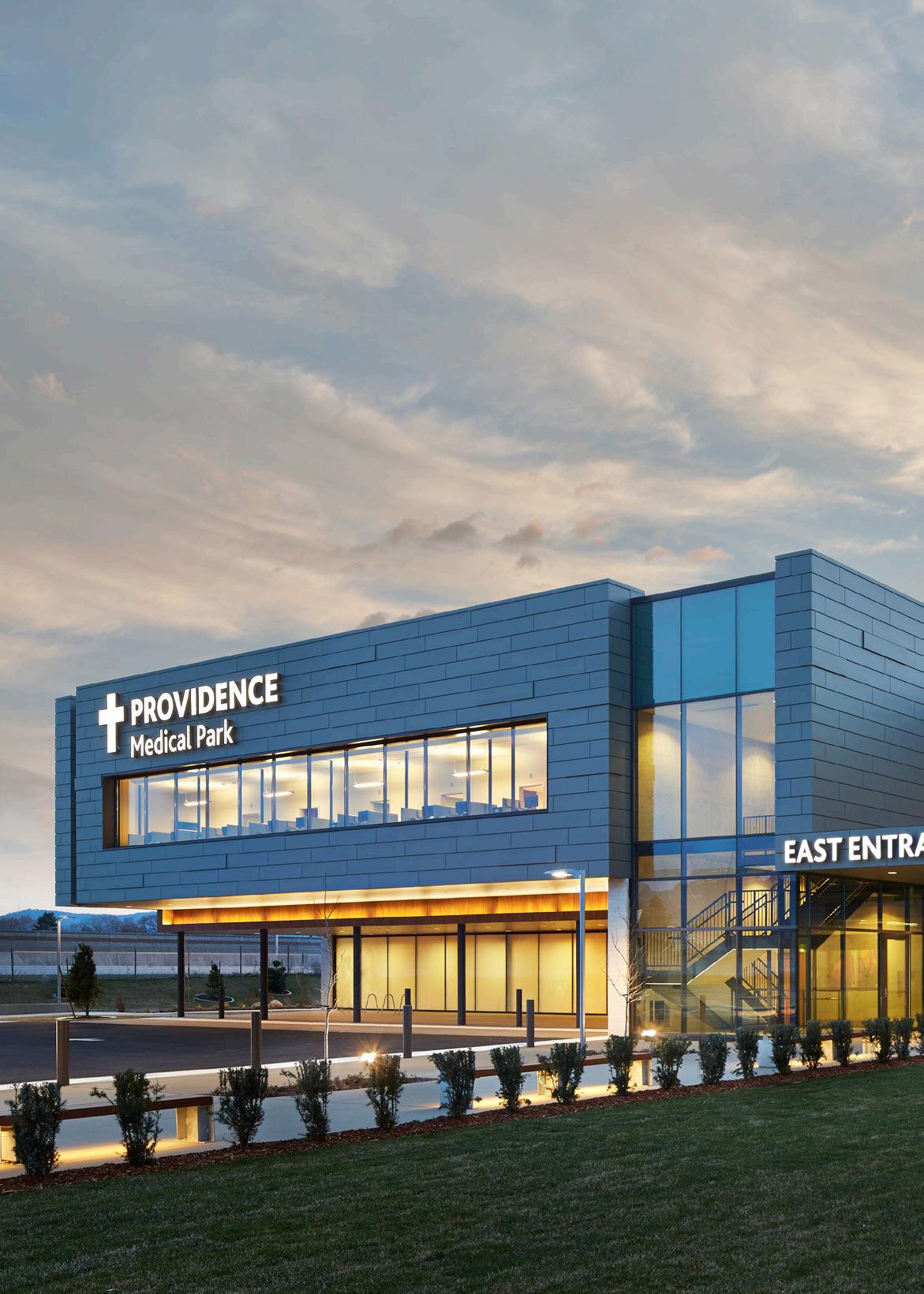
Microsoft and Nuance to effectively have a strategic collaboration.
Providence is set to complete their simplification and modernisation journey by December 2022. They completed their move to a single electronic health record in March and, as of July, have moved to Oracle cloud, which is their new ERP system. Moore says: “Indeed, we’re under a lot of costpressure here in the US, and so the question is, ‘how do we provide those same services for less?’ We’ll focus on the efficiency of our own IT operations, and then the engineering work that we do is really going to be focused on caregiver attraction, retention and productivity.”
Providence is a shining example of the convergence occurring with tech and healthcare and should serve as an example for healthcare systems all over the globe, as to their ever-growing and inevitable interdependence.
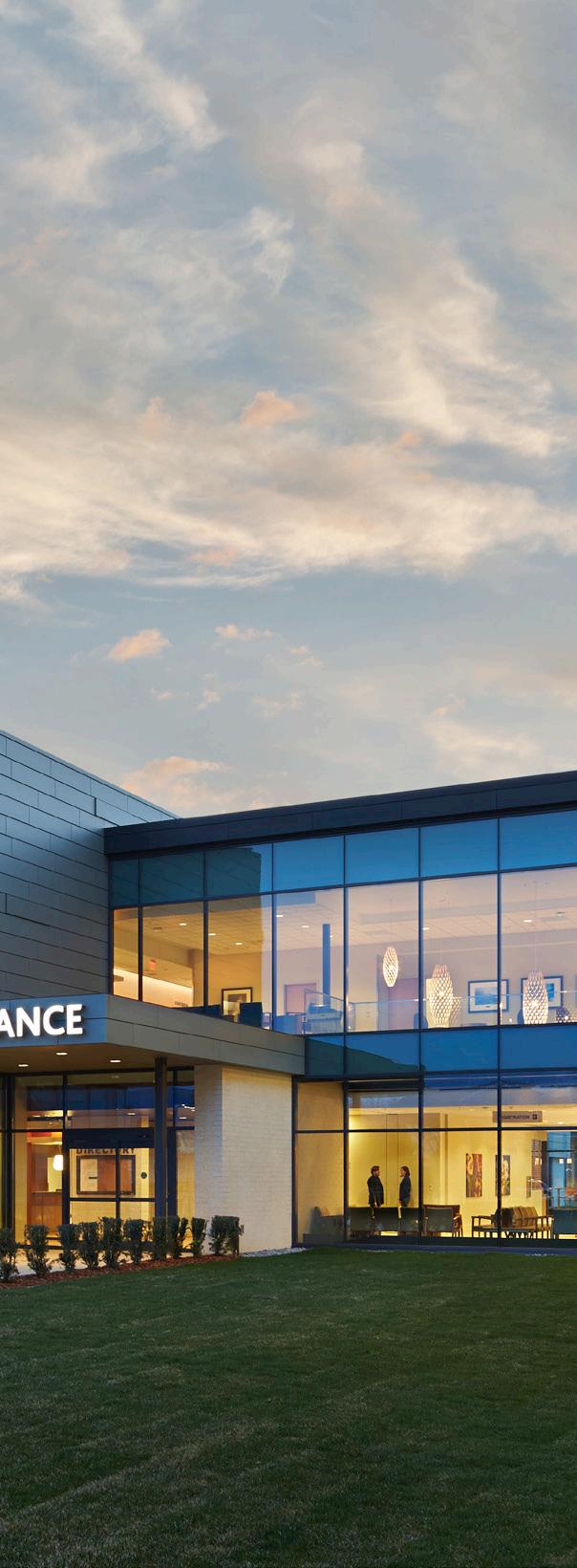
“You can see that it’s really hard to innovate if you have counterproductive complexities such as an environment with 4,000 applications, and that's why we first simplify the environment before modernising the way that we use and deliver technology”
B.J. MOORE
 BY: GEORGIA WILSON
LEWIS VAUGHAN
BY: GEORGIA WILSON
LEWIS VAUGHAN
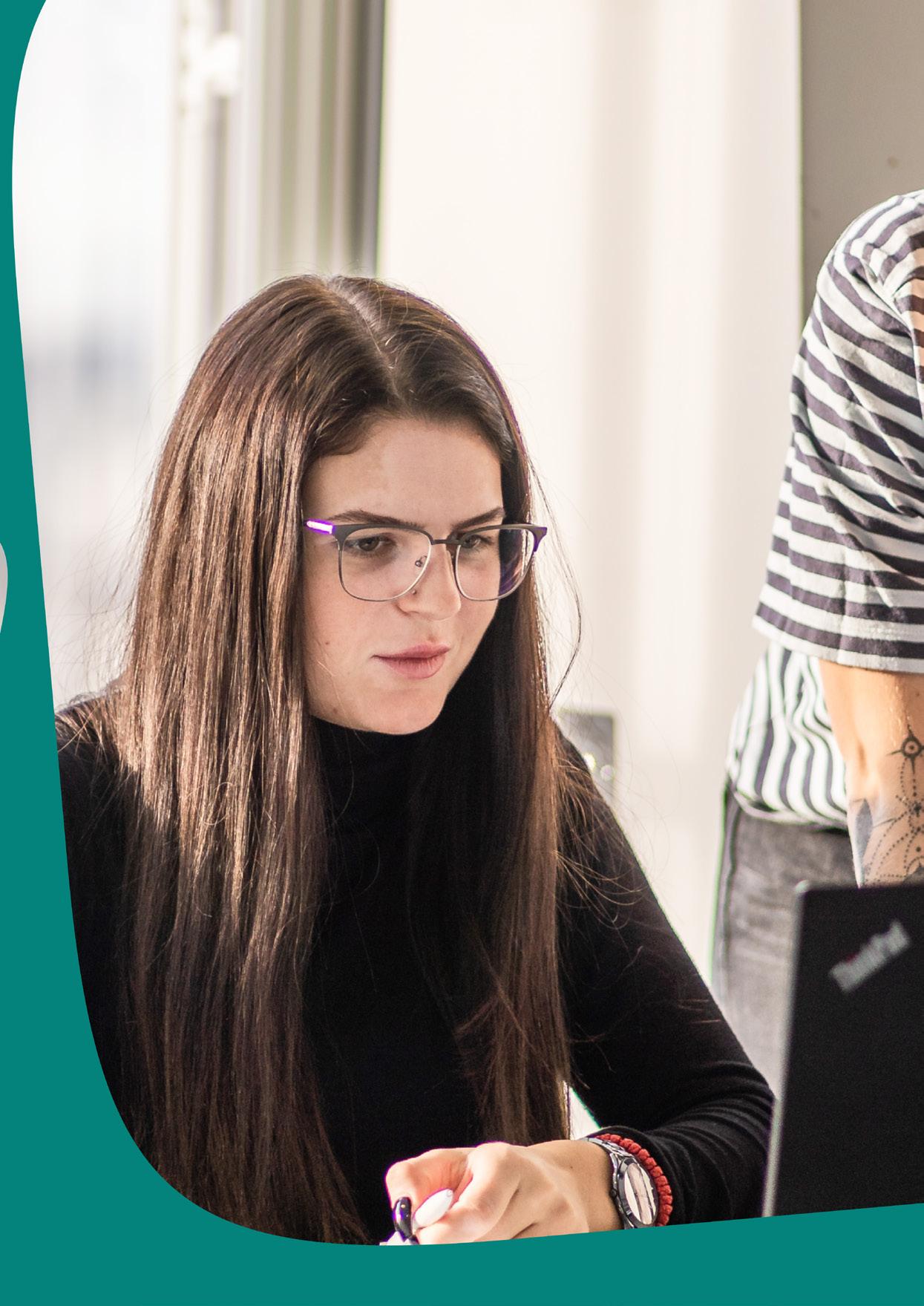
Founded over 15 years ago, Jellyfish is one of Google’s closest partners. The organisation offers creative marketing performance solutions for the platform world to help brands navigate, connect and harness the platforms that drive their growth through technology, media, creativity and data expertise.
“Over the last three years, the range of services and products we provide has grown massively,” says Benjamin Pipat, Jellyfish’s CSO of Technology Solutions. “By increasing our spectrum of expertise, we’ve been able to provide our clients with more services and bring them to new platforms they may never have even considered before.”

One such example is Jellyfish’s recent expansion with Google. Having bolstered its social media expertise via M&A, Jellyfish took over Google UK’s social presence– to massive success.
“Being able to expand and improve our clients’ digital performance is what M&A is all about for us,” notes Pipat.
This expansion has also led to stronger relationships with major players like Meta, Amazon and Salesforce, in areas such as Retail Media, Analytics and CRM.
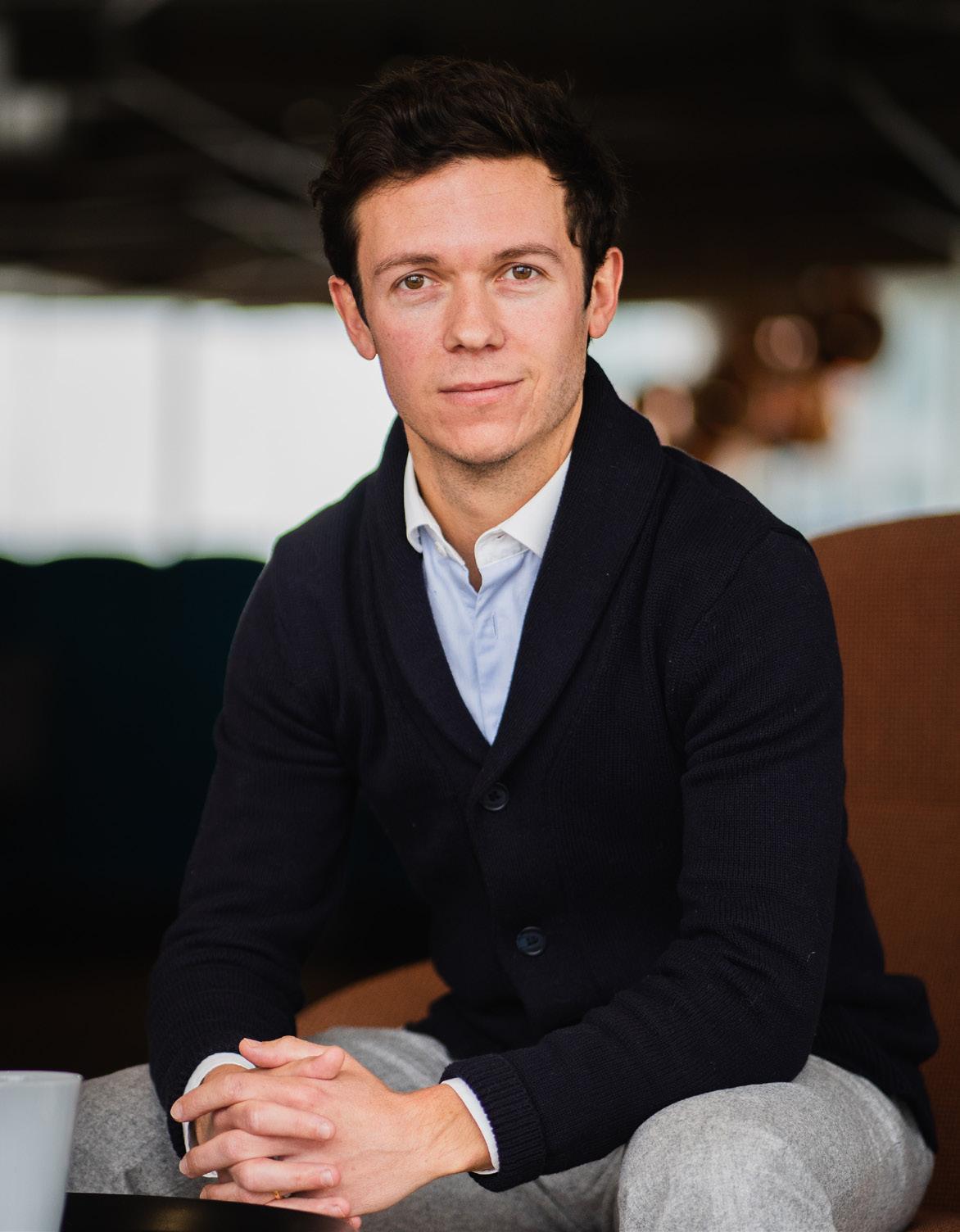 Example of an image caption
Example of an image caption
As the Chief Solutions Officer of Technology Solutions at Jellyfish, Pipat leads a team of over a hundred engineers: “Our mission is to develop proprietary technology to enhance our talent’s ability to do what they do, better. People are our biggest asset, and we believe we can augment their potential with J+, our suite of technologies
across Creative, Media, Data and Commerce. These cover analytics and workflow softwares, as well as bidding, monitoring and reporting solutions.”
Since 2019, Jellyfish has tripled in size, and such large growth drives change within an organisation; “In the past 2 years, we’ve worked with all teams globally to put technology at the core of everything we do at Jellyfish. We have an understanding of the value it can bring at different levels of the business. Having this mission at our core helps the organisation as a whole to conduct its operations better and faster,” says Pipat.
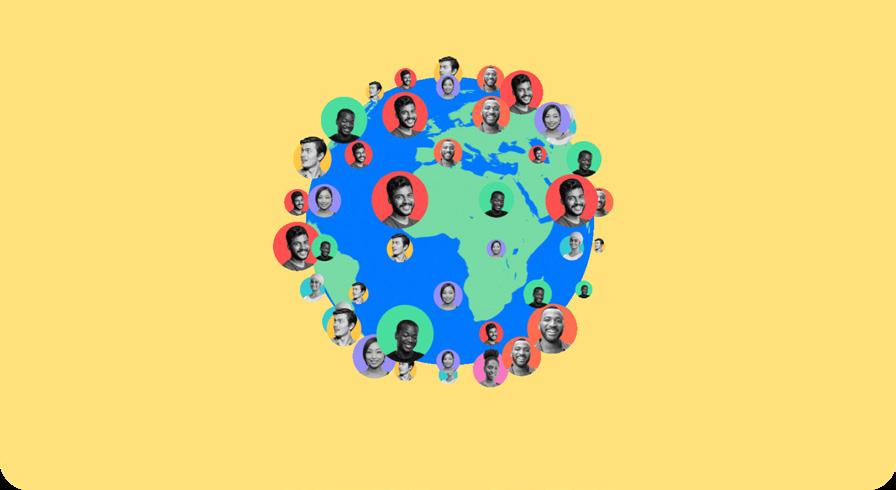
Driving a global proprietary technology strategy
In 2020, Jellyfish had its biggest year in merger and acquisition (M&A) activity, integrating with a dozen new companies.
Pipat explains: “Most of these organisations were startups with strong proprietary technology and talented teams
“ We’ve worked with all teams globally to put technology at the core of everything we do at Jellyfish”
giving them an edge, which is why they were a great fit for Jellyfish.”
But with such fast growth comes challenges. “When these companies joined the group, we ended up with a whole crew of engineers and product teams working on dozens of different technologies, with different tech stacks, methodologies and business models. We decided to create the Technology Solutions capability to globally align the Why, What and How of proprietary tech built at Jellyfish,” says Pipat.
“Our first step was to define our strategy, both in the short-term and in the future. We did so by defining our core principles, providing a guiding compass for all technology decisions.”
1. Impact - Only building technology that will enhance outcomes
2. Enterprise-level - Only building technology that is enterprise-level to serve all teams and clients globally
3. Pragmatism - Instead of competing with the likes of Google or Intercom, Jellyfish partners with them, working hand-in-hand to develop technology on top or across platforms
4. Passion - Being proud of the technology they build.
TITLE: CHIEF SOLUTIONS OFFICER OF TECHNOLOGY SOLUTIONS INDUSTRY: TECHNOLOGY LOCATION: PARIS, FRANCE
With a degree in mechanics and computer science, Benjamin Pipat’s career in the technology industry began as a management consultant. Having a passion for wine and witnessing everyone’s challenge to choose the right bottle, Pipat left the sector to start a mobile-first wine business with its own recommendation engine. “This is where I learned code and found my way in the industry,” he says.
Since then, Pipat has held different engineering roles, founding other companies along the way before joining Jellyfish in 2020 as Chief Solutions Officer for Technology Solutions when his startup Seelk was acquired.
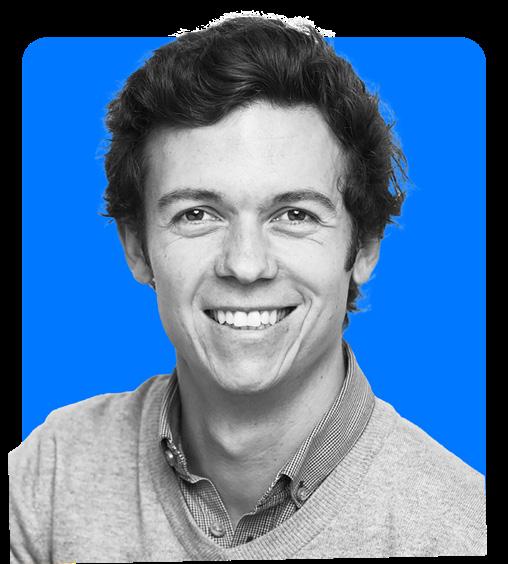
The future of work isn’t either/or—it’s both. Flexibility is the new must-have, not just a perk.
of workers want want flexibility in where they work
Remote and hybrid employees are more happy, productive and engaged than full-time office employees.
of workers want flexible hours
Sound impossible? With Slack
your digital HQ, you can make it happen.
Building a unified tech brand
“Another challenge we faced was confusion from both internal and client teams on this long list of technologies that were now part of our roster,” says Pipat.
To drive further alignment and consistency, Jellyfish’s Brand Strategy, Marketing and Creative teams have joined forces to build and deploy a new branding for its many tech solutions.
“The outcome is our J+ brand, which positions our tech products as additive to our ecosystem. It’s a big plus for us and a big plus for our clients, as well as a clear link to our value of ‘positivity’,” says Pipat. “This new branding and unified set of materials have been instrumental in enabling our Growth and Client teams to put technology at the centre of our narrative”.
J+ technologies are divided across 4 suites (J+Creative, J+Media, J+Data and J+Commerce), with strong ties to matching capabilities, and are now natively integrated into Jellyfish’s products.
BENJAMIN PIPAT CHIEF SOLUTIONS OFFICER OF TECHNOLOGY SOLUTIONS, JELLYFISH
“ The outcome is our J+ brand, which positions our tech products as additive to our ecosystem”
When it comes to M&A activity, integrating and aligning the joining businesses into a single uniform operation is a significant challenge for many.

“In my experience, organisations tend to underestimate the chaos that's often created by change, as well as the resistance they’re likely to meet. Trying to align everyone on everything doesn’t make sense.”
Ever the engineer, Pipat continues: “Like in mechanics, resistance generates heat, and heat is basically entropy. But if you apply the right amount of oil at the right place, you reduce friction and increase efficiency.”
The biggest challenge is to maintain engineering velocity and business relevance as the organisation grows.
“We approached this by ensuring our teams have both focus and accountability. Led by former technology founders, we adjusted the Spotify squad model, adding a duo of Tech and Product Leads to each squad. As a pair, they work hand-in-hand with the rest of the business and are accountable for the delivery and for the quality of the technology they build and deploy.”
“The other pillar we focus on is enabling our engineering teams to deliver enterprise-level software better and faster. One great example is our implementation of Gitlab CI across all squads, which enables our teams to put the core concepts of Continuous Delivery in action.”
Pipat explains that one of the toughest challenges has always been related to people. “Transitioning from being an engineer in a technology startup to being a part of a group of over 2,200 operating in 20 markets is difficult. The squad set up helped us preserve the passion for technology and agility within our teams, and like everything we do across Jellyfish, we do all we can to give our talent a platform to perform.”
BENJAMIN PIPAT CHIEF SOLUTIONS OFFICER OF TECHNOLOGY SOLUTIONS, JELLYFISH“We wouldn’t be where we are without our partners; that is something that we are very aware of”
“We have always had a partner-centric approach,” explains Pipat. Having partnered with Google for over a decade, Jellyfish works with them all over the globe, with an expertise that runs so deep that Jellyfish routinely trains teams of Google employees on Google’s own products.
But the partnership isn’t just oneway. “We work hand-in-hand with Google’s product teams to ensure that the technology we’re building is complementary to their roadmaps.”

They’ve been working in a similar way with another of their big partners, Meta, having spent the last six months developing technology that monitors and optimises social commerce.
“We wouldn’t be where we are without our partners; that is something that we are very aware of,” Pipat states frankly. “We have a team that is specifically in charge of partnerships and we build our technology with a strong awareness of where these platforms are going. Working alongside our partners in this way helps to drive a competitive edge for our organisation in the future.”
Similar to large tech companies, Jellyfish has built its own team of Customer Success Managers (CSMs) who are in charge of ensuring the activation, adoption and impact of their J+ suite of technologies.

“Whether it’s for internal use or client-facing, our CSM teams are critical to the success of our technology offering. This global team of consultants are in charge of onboarding, training, implementation activation and support across both our proprietary and partner tech,” says Pipat.

The next 12 to 18 months for Jellyfish Jellyfish’s J+ suite of technologies currently covers media automation and monitoring, Commerce and SEO analytics, creative workflows, dataprep and dataviz, as well as a score of other tools.
Pipat adds: “Over the next 12 to 18 months, we will continue to enhance our set of technologies to make our teams do what they do better and faster. In parallel, we are bringing these technologies under a unified platform and building more bridges between these technologies and their datasets.”
When it comes to agencies, Pipat highlights that an organisation having strong technology is becoming a requirement rather than just a competitive advantage in pitches. “This is something we have been experiencing in our discussions for the past few years. Today, if you are unable to show you have strong proprietary technology and data-centric methodologies, then you are out of the game. This is where digital partners like us have a competitive edge,” says Pipat.
“At Jellyfish, we have managed to deploy a set of technologies across our entire scope. As such, the industry is bound to give brands more ways to connect with people beyond advertising, such as leveraging elements like the creator economy. Currently, we have 10,000 freelancers working for Jellyfish around the world, helping us localise and distribute content globally.”



 WRITTEN BY: CATHERINE GRAY
PRODUCED BY: JAMES BERRY
WRITTEN BY: CATHERINE GRAY
PRODUCED BY: JAMES BERRY

When Manish Mangal joined Tech Mahindra three and a half years ago, he was invigorated by the prospect of strapping in to join the digital services company as it propelled its mission to become a catalyst in the transformation of the telecommunications industry.
As a technology-driven company, Tech Mahindra wants to lend a helping hand to both telecommunications service providers and enterprises as they transform their network infrastructure to make their businesses run better and improve customer service.
Responsible for running the company, Mangal is the Global Business Head for 5G and Network Services at Tech Mahindra and spends his days looking to create solutions customers would receive the most benefits from.
“Tech Mahindra is an exciting company, and one of the reasons I came here was Tech Mahindra’s family-like culture. While it's a large company with over 158,000 employees, everyone still works like a family. The management team, the colleagues that I have – they all have excellent relationships and work towards the common interest of putting our customers first, then the shareholders and the employees together,” explains Mangal.

“When we talk about Tech Mahindra as a company, our objective is driven by the desire to become that trusted partner and provider for telecoms and enterprise customers by bringing growth tactics to life.”
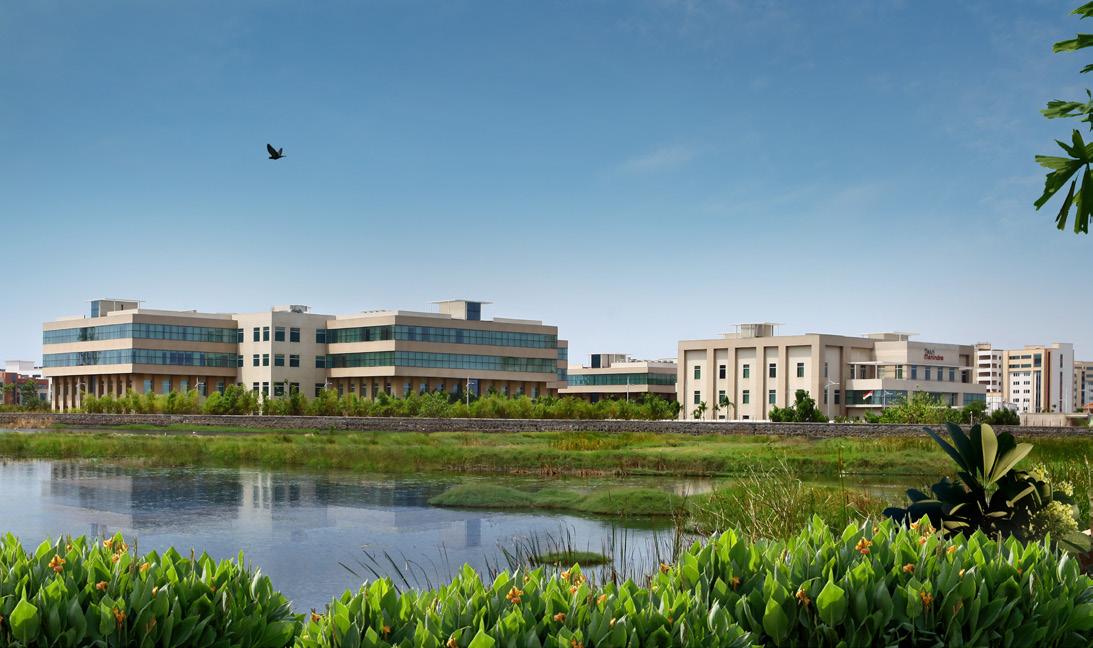
Driving forward the future of 5G Now, Mangal and the team are sharply focused on the future of 5G, driven by the number of solutions this technology can enable. “5G is one of those very transformative technology changes happening in the industry,” he notes.
“People often debate whether 5G is another G. We have gone through 2G, 3G and 4G; is this 5G just another generation of technology that gives you something more? More bandwidth, better latency, more capacity? Is it really about that, or is it something that is fundamentally changing? I believe that 5G is that inflexion point in our industry that when we look back ten years
“When we talk about Tech Mahindra as a company, our objective effectively is fundamentally driven to become that trusted partner and provider for the telecom and the enterprise customers in bringing growth tactics to life”
GLOBAL HEAD OF BUSINESS, 5G AND NETWORK SERVICES, TECH MAHINDRA
from now, we'll be able to point out and say that 5G made everything happen,” he continues.
5G is set to transform the way people live and work, and Tech Mahindra is determined to be an integral part of the transition, having created key focuses for its agenda to ensure that as it catalyses the shift to 5G, it will continually meet the needs of its customers.
“Now, 5G is becoming about the overall experience for consumers; it is an experience platform and isn’t a connectivity platform anymore. 5G enables an entirely new generation of capabilities that can be envisioned by how the customers will use it. Several brand-new experiences can be delivered with 5G, and this mirrors a change in a society that has become much more social,” says Mangal.
Another key focus for Tech Mahindra is sustainability, particularly as the telecommunications industry has a significant impact on the environment – it is estimated that the industry alone contributes to 1% of all global power consumption, something that Tech Mahindra wants to help reduce.
TITLE: GLOBAL HEAD OF BUSINESS, 5G AND NETWORK SERVICES
INDUSTRY: IT SERVICES
LOCATION: TEXAS, USA
Year founded
Number of employees
Manish Mangal is an accomplished telecom industry veteran with 20 years of professional experience. He has held various leadership roles in Fortune 100 companies leading technology initiatives from incubation to operationalisation that transformed businesses and increased enterprise value. Mangal is an expert in leading large and global teams, developing end-to-end technology solutions, and creating/ managing strategic partnerships that directly improve enterprise value.
He is skilled in analysing industry trends, assessing threats & opportunities and developing factbased actionable plans targeted toward business owners and CEOs to increase enterprise value and fulfil the company's business missions.
Mangal is an inventor of 60 patents issued by the US patent office.
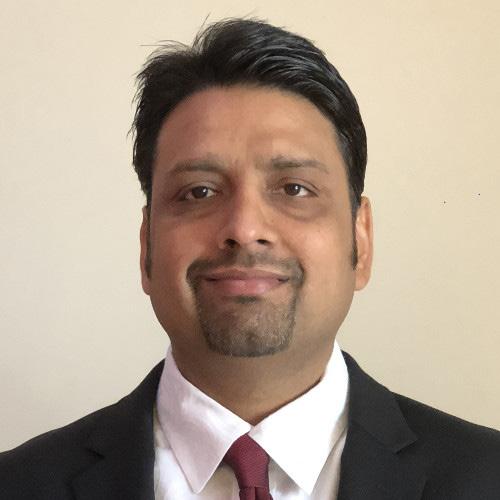
“The amount of energy consumption industry has with maintaining and operating all these networks is immense. So, for the first time, 5G has brought in a fundamental underpinning to say that the future of the networks we want to design needs to consume less and support the sustainability agenda for the Earth. It needs to enable the better climate behaviour we want to establish. And it needs to focus on that as a centre, rather than everything else. So, I think that's another fascinating part of 5G, driving a sustainable agenda,” Mangal comments.
Finally, with the introduction of 5G, Tech Mahindra is keen to eradicate any issues with connectivity to provide an ‘invisible connection’. “The idea of connectivity becoming invisible is the mission that I would love to carry on as part of my responsibility in this industry, such that it just becomes so pervasive, so ubiquitous that nobody has to think anything about making it work.”

As the largest independent integrator for the telecommunications industry, Tech Mahindra has a laser-sharp focus on outcomes for the customer, as it doesn’t have its agenda in terms of selling a specific technology or solution as it creates a network of the future.
“Customers can trust us to act on their behalf at all times,” says Mangal.
“There is a chasm between the legacy and the future telecommunication service provider – to bridge, grow and fix.


“I believe that 5G is the inflexion point in our industry that, when we look back ten years from now, we'll be able to point and say that 5G was the one that made everything happen”
MANISH MANGAL GLOBAL HEAD OF BUSINESS, 5G AND NETWORK SERVICES, TECH MAHINDRA
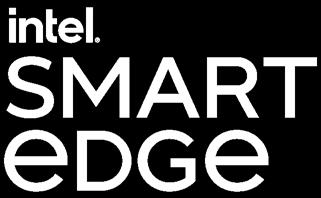


In partnership with Tech Mahindra, Intel is driving the future of edge technologies with its Intel Smart Edge Platform: an edge-native distributed computing platform that enables developers and organisations to deploy and manage container-based workloads with cloud-like ease and security at the edge. Responsible for overseeing this platform is Renu Navale, Vice President & General Manager of Edge Platforms Division at Intel Corporation.
“Tech Mahindra is a valuable member of the Intel ecosystem,” she notes, “offering a robust private network solution powered by Intel Smart Edge. Tech Mahindra truly plays the role of an end-to-end system integrator—from deployment and configuration to management and monitoring of the Smart Edge Private Network solution.”
As Intel sees it, the future of the edge is defined by the relentless march towards software-defined infrastructure and business automation. Smart Edge provides an open framework for integrating and managing network, media, AI and IoT workloads. This open approach abstracts hardware
complexities and helps companies focus on building innovative edge services for enterprise, telcos, and other industries.
“The buildout of the edge is being driven by societal shifts—like supply chain bottlenecks, increased security needs, the new normal of hybrid work. It’s also being driven by the cost and latency of backhauling data to the cloud, as well as regulations about what can be stored in the cloud,” says Navale.
Intel collaborates closely with Tech Mahindra in the edge space as it develops silicon and edge solutions to drive new revenues for the industry.
“Tech Mahindra and Intel are working to develop pre-integrated and verified solutions for faster market adoption. Our approach for 5G transformation includes a Rapid Rollout framework, orchestration and TechM’s intelligent Assurance platforms,” explains Navale.
Navale also shares how Intel is supporting Tech Mahindra throughout its 5G telecommunications’ transformation: “We’re also providing artificial intelligence and machine learningpowered Intelligent Network, Security Ops and VerticalSpecific solutions, productised and ready for orientation into customer environments.

As a transformation player, my focus for us as the network of the future is to help create capability solutions that create those transformation journeys for the customer, bridging that chasm and that gap,” he adds.
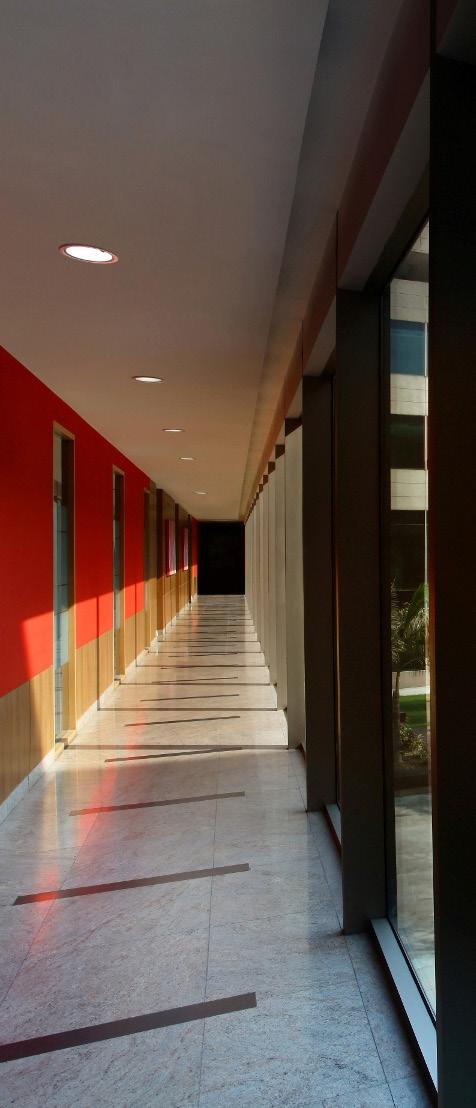
Containing many different technical components, the company’s ‘network of the future’ vision contains three building blocks to ensure that technology, vision, and execution are all aligned. Mangal adds: “Building block number one is the pure infrastructure. We see a tremendous transformation, particularly because now hyperscalers are taking a lot more active interest and investment in that category. So, there's a whole layer of how the infrastructure will evolve.”
“The second building block of the network of the future is about the functions of the network itself – whether it's a 5G radio network, 5G core network, security platform or a variety of other components. The functions of the network will drastically evolve to become a pure software cloud with native functions so that anybody can innovate around that. A huge transformation is coming to open that space.”
“
The idea of connectivity becoming invisible is the mission that I would love to carry on as part of my responsibility in this industry; such that it just becomes so pervasive, so ubiquitous that nobody has to think anything about making it work”
He continues: “The third building block for the network of the future is around managing and operating the network. The network learns itself; it's closed-loop automation. So, it decides, it learns itself, it post-corrects itself, and it just keeps refining and refining and refining – to the point that the network’s operations are selfmanaged, self-sustained and self-driven.”
To ensure the automation element of the network runs well, Tech Mahindra built a platform called AINOF: an AI-enabled platform that brings together different tools to simplify and automate operations.

Driving forward Tech Mahindra’s vision with Intel Mangal understands the importance of strategic partnerships in delivering the best-in-class service and solutions to customers. Armed with this understanding, the executive has cultivated and nurtured strong partnerships with companies offering top-quality solutions, enabling Tech Mahindra to become a catalyst in the transformation of the telecommunications industry.
A key partner in this journey is Intel – a partnership Mangal describes as “a match made in heaven”.
“Both of us operate in different business layers, but, fundamentally, we are similar. Intel is an amazing, phenomenal technology company. They are the bedrock of all computing technology. Our partnership with Intel started very early to figure out how the technologies they are building can be released into the operator's networks so that the customers can use it. Our partnership stems from a technology collaboration to the realisation of the technology, into the transformation journeys for the customer,” he says.
“We also work closely with them in bringing a software-based cloud-native network to life with the operators. That's the second area of
our partnership that we have with Intel. Our approach is: together, we go to the customer and help create these transformation journeys – our partnership has been doing extremely well. I believe we’ll be able to drive significant collective impact in the future,” adds Mangal. The most significant opportunity of this partnership comes from the mutual growth the pair can generate together. Collaborating closely in the edge space, Mangal explains: “Intel is inventing chip sets design solutions that make these edge solutions real to drive a lot of new revenues for the industry.”
With Intel, Mangal is confident that Tech Mahindra will be able to speed up the adoption of 5G as it improves its clients’
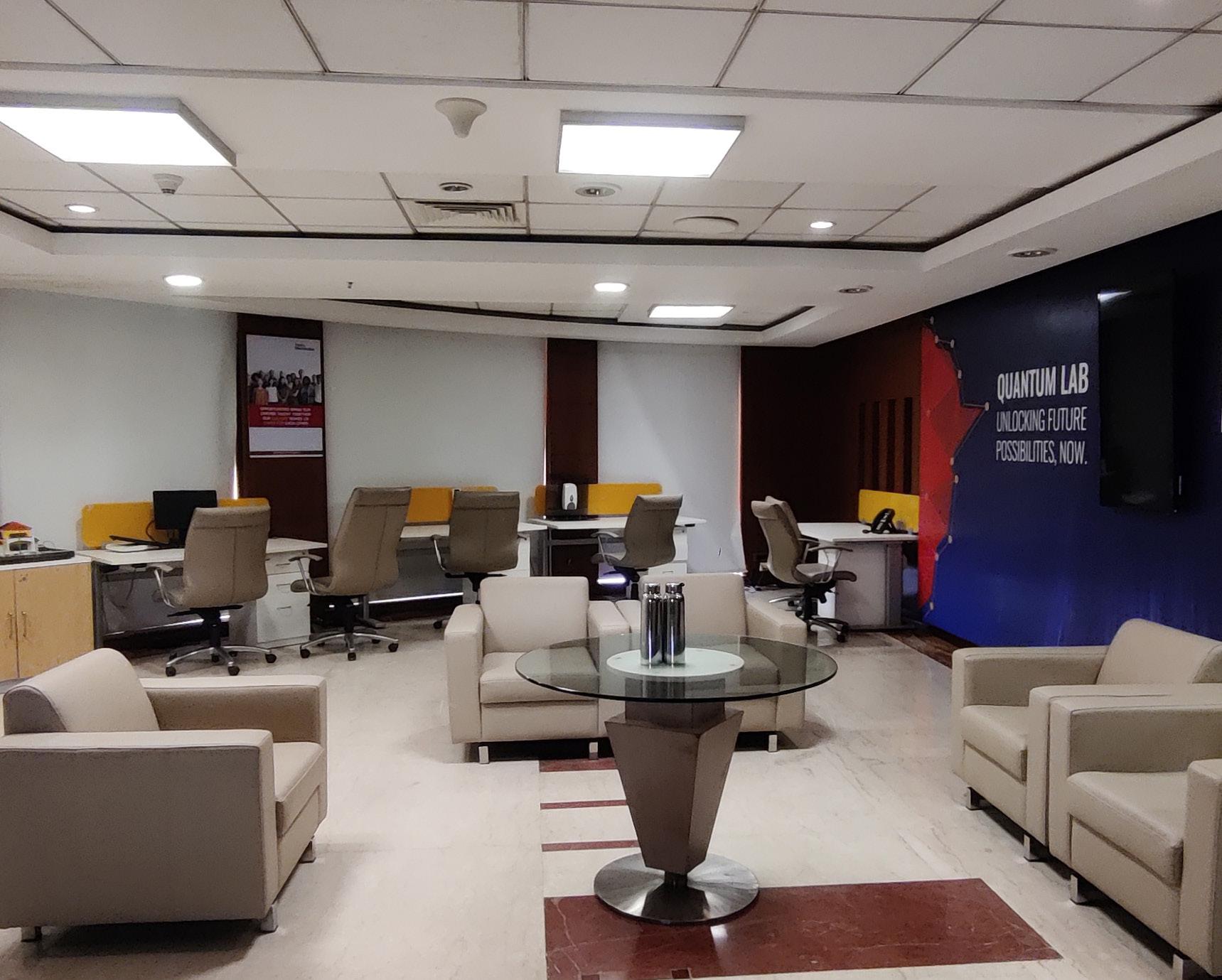
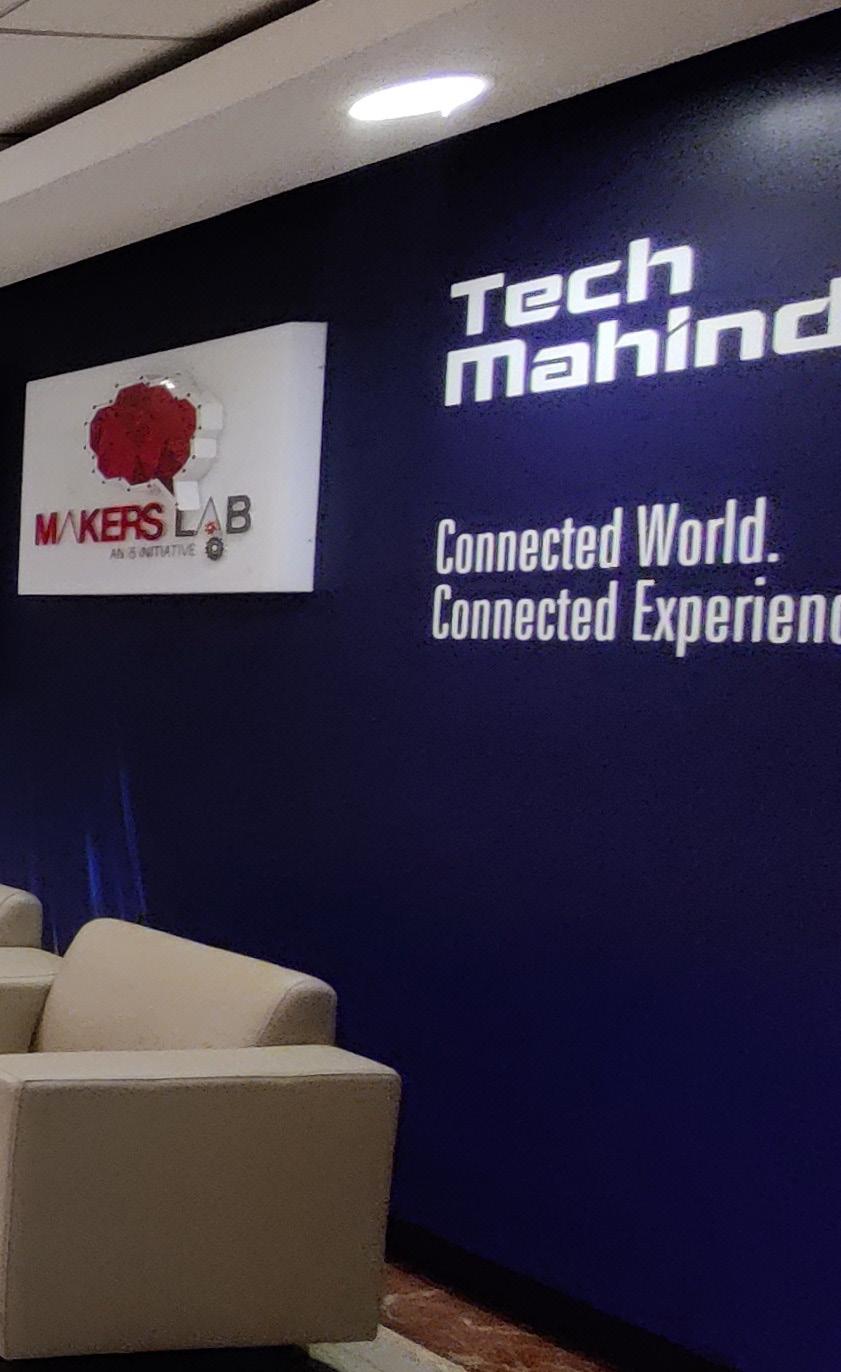
networks: “Our mission is to be the trusted transformation partner for the industry. For us, that involves continuous evolution as a company and as a network services’ business to build more and more capability in advanced technology areas.”
“We are investing heavily in technology capabilities; we are investing heavily in the organisation and the structure and the people that become the trusted transformation partners for our customers.”
He concludes: “As I look at the next 12 to 18 months, I'm looking at exciting times for us. One of my mentors said that if you are a young engineer, this probably is the best time to be in the industry – it has suddenly become fashionable and fascinating. For me, the next 12 to 18 months in Tech Mahindra looks like a continuation of the journey that we have already taken on – to become the partner for telecoms and enterprises in the journey of creating the network of the future for themselves.”
“We are investing heavily in technology capabilities; we are investing heavily in the organisation, the structure and the people that become the trusted transformation partners for our customers”
 PRODUCED BY: BEN MALTBY
PRODUCED BY: BEN MALTBY


he birth and stratospheric rise of streaming services have completely transformed the way that we watch. Over less than a decade, our viewing habits have evolved: from TV channels and Friday-nightDVD-rentals, to an endless array of choices (personalised to your individual tastes) being made available with just a few clicks.
Not only has this change revolutionised the way we access and interact with media, but it has also extended to adverts and our viewing habits, enacting a complete cultural shift in the way the world watches.
In short, few sectors have experienced such a rapid digital transformation as that of TV and broadcasting. In fact, Blockbuster –a video and DVD rental company that went bust in 2014 – famously had the opportunity to buy Netflix for just US$50mn in 2000 (an absolute steal considering the streaming service’s valuation these days). At the time, Blockbuster essentially laughed the offer down, doubting that the streaming service had anything to offer the market.
Now, movie and video streaming represent one of the largest and fastest growing global sectors, with a number of pioneering providers continuously evolving these services. Such industry figures are connecting viewers across the world with more choices, more autonomy and more flexibility.

, the former CTO of OSN, reveals his future predictions for media broadcasting and OSN’s approach to meeting our everchanging entertainment needs
Year

To find out more about this dynamic industry, we spoke to Peter Riz, the former CTO of OSN. We discussed his predictions for the media streaming industry, the launch of OSN’s new streaming service, the company’s future plans, and the digital transformation – and consequent cultural shift – that we can expect to see over the next few years.
Digital transformation, and the move to expand from satellite-based services
OSN is the leading entertainment company for premium content across the Middle East and North Africa (MENA), with the rights to broadcast in 22 countries across the region. The modern-media giant is the exclusive partner to the largest tv studios across the

world – across both its box and streaming services. Its partnerships with studio majors include HBO, NBC Universal, Fox, Paramount, MGM, Disney, and Sony, no less.
Peter Riz, a recent OSN addition, boasts over 20 years of experience in the prestigious TV and media industry, having overseen rapid change during his tenure. Originally from Budapest, Riz moved to Dubai and joined OSN just over three years ago.
“OSN was originally a traditional, satellite-based pay TV service. The mission was to provide high quality entertainment to the MENA region. At that time, internet connectivity wasn’t that developed, so the best and easiest way to achieve this was to use satellite distribution. That was OSN’s original business, and it was very successful in the region.”
Then, over the last few years, as the tendency and trends turned to digital distribution, OSN followed suit and also shifted focus to the streaming experience, instead.
INDUSTRY: MEDIA & ENTERTAINMENT
LOCATION: DUBAI, UAE
Peter Riz has over 20 years of premium Pay Television and OTT experience within the Middle East and Europe, with a focus in Digital Transformation.
During his carrier Riz has different positions in content operation, project management, technical operation, product development and engineering roles. In the last 10 years, Riz assumed various technical leadership and strategic responsibilities specifically focusing on the development and operations of over-the-top/ streaming media products.
Riz previously held the role of Chief Technology Officer at OSN, where he led both the broadcasting and streaming technology strategy and execution. Riz also spent over 12 years with HBO Europe where he was the Senior Vice President – Technology. Under his leadership at HBO he was responsible for all aspects of Product Design, Development, Delivery and Operation of the HBO Europe OTT platform branded as HBO GO.
“We all need to keep being open-minded, learn new things and, to an extent, forget some of the old practices, because they just are not followed anymore in the digital world”
When Riz joined the company, OSN’s mission was to build a new digital streaming platform that the company owned, which meant they could be sure it would provide an experience matching that of Netflix and other big companies in the streaming domain.
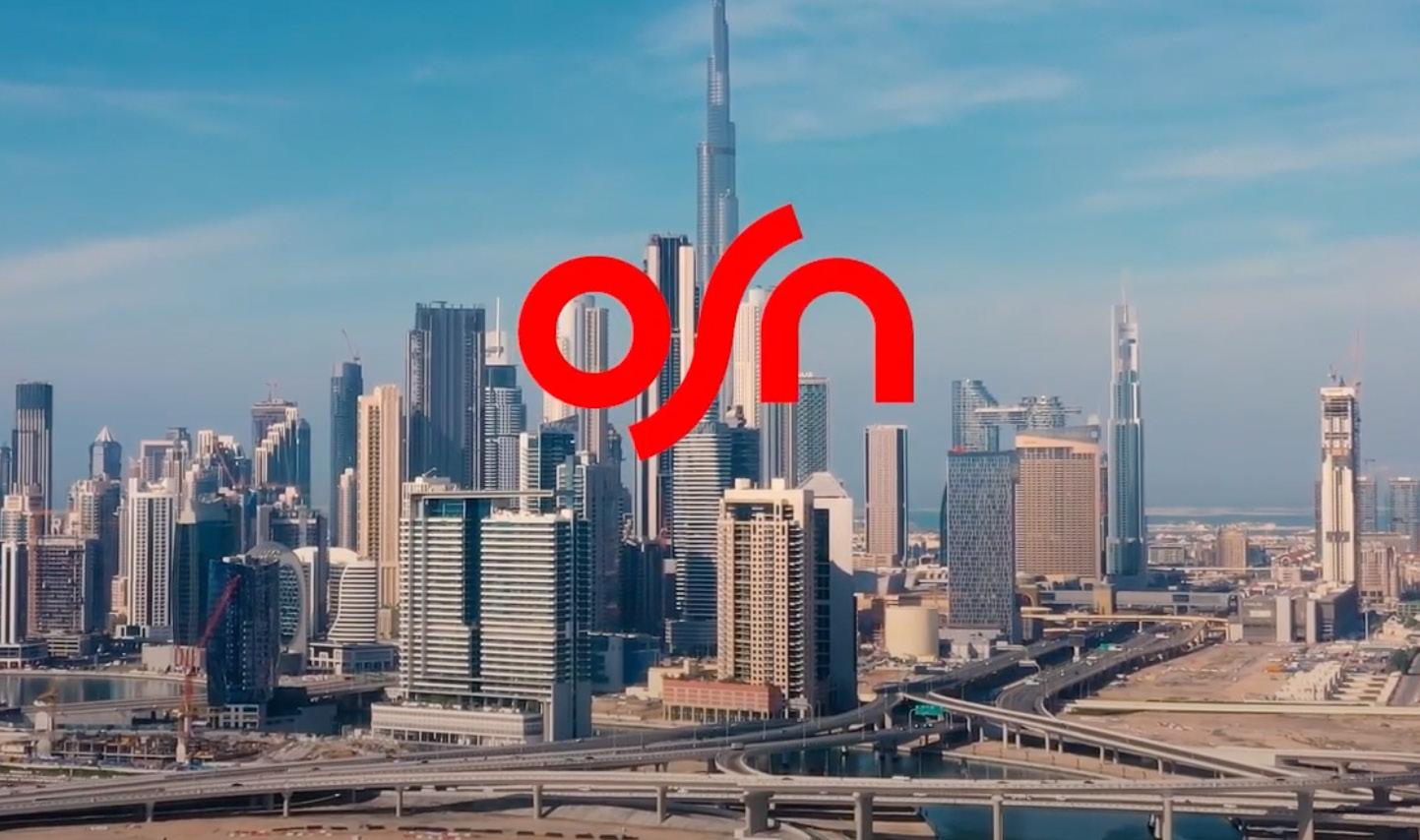
“Today, OSN runs these two things parallel – they are building the user experience, the commercial and the technical synergies between the satellite world and the streaming world. And that's really what the mission here is: to find all these synergies and provide the user experience in both domains.”

PETER RIZ FORMER CTO, OSN
OSN’s predictions for the future of media broadcasting
“One of the best pieces of advice I ever received was to stop speculating, ask more questions and listen to the answers”
OSN’s digital infrastructure changes, and a shift towards hybrid approaches
According to Riz, a wave of new mobile and data technologies has brought about a change in the way that companies perceive physical infrastructure components.
OSN is the region’s leading entertainment business, with the rights to broadcast in 22 countries across MENA.
“Traditionally, the broadcast industry is about equipment, devices and on-prem data centres – BIG data centres. Five or ten years ago, a CTO would have had an equally good knowledge of all the software, all the hardware and all the necessary infrastructure,
including how to build and operate the data centre,” commented Riz.
Today, most of the trends have moved towards “using and utilising the cloud” and, from a hardware point of view, “most of the added value is somehow connected to the software development”.
Riz explains how, in the past, a broadcast company tried to own everything and build (or at least integrate) all the physical components together on their own. Now, though, “the balance between the components that you buy and that you build has changed”.
The Girl on the Train


This means that, rather than broadcasters trying to build everything for their end-to-end streaming platforms themselves, a hybrid architecture approach is becoming the norm, instead.

As the market and the available components expand, the goal now becomes understanding “how to build all these cloud based services together, in a way that will really provide the competitive advantage for your company and give you the opportunity to customise the user experience based on your needs.”
OSN still runs some of its infrastructure operation in an on-prem environment,
“Sometimes, as a CTO, I say that I need to run two different organisations – one is responsible for the legacy technology and the other is responsible for the new technology.”
PETER RIZ FORMER CTO, OSNVanquish

delivering a modular hybrid platform that separates different functions in the platform using the microservice-based architecture and adopting a hybrid approach to component construction.
“How I see it, that's really the trend in the entire industry,” says Riz.
“Since broadcasters no longer try to cover end-to-end technical responsibilities on their own, there is much more flexibility, meaning they can build these types of hybrid systems. Now, it is down to companies to maintain well-managed, balanced buy-andbuild strategies.”
The launch of OSN+, and bridging the gap between old and new By deploying these technological advancements and infrastructure changes, OSN has been able to develop its offerings to include a brand new streaming service.
Currently, this launch is the main area of growth for OSN, spearheading the company’s digital journey and changing the way that they broadcast.
But, in such a period of transformation within the industry, a key priority becomes maintaining the old (and still successful) service, while consistently making new additions that the market demands.
“OSN is also working out how to build a bridge between the legacy broadcast world and the new streaming world,” Riz explains.
“Sometimes, as a CTO, I say that I need to run two different organisations. One is responsible for the legacy technology, and the other is responsible for the new technology.”
According to Riz, OSN’s vision is that, in the near future, its viewers will be able to have the complete TV experience – without needing any additional satellite capability.
“OSN has a plan to release a new hybrid set top box to the market very soon, which,
 The
The
from a technical point of view, is connected to the new streaming ecosystem and carry only some base services from the satellite world.”
“Again, the goal is to utilise the same components and achieve an organic transformation between the current state, this hybrid state and the final state, which is the internet-connected sector box.”
What’s next for OSN, and what can we expect for the future of the media streaming market?
Looking to the future, partnerships remain one of the most critical factors in OSN’s growth strategy.
“The role and the added value of the strong local brands is, I think, hugely important,” Riz comments.
“A brand like OSN can really talk to the local customers and can create the right
mix of contents, as well as guide and help to discover the content in a way that is appealing to the market. I really believe that, based on the recent trends and changes in the industry, its long-term partners rediscover this value.”
In order to provide the best possible user experience, OSN is working hard to build and strengthen its partnerships.
“In this industry, we always say that the whole industry is about three things: the exclusivity, because you want to create revenue quickly that you can then reinvest into the next content; the partnerships, because they help us to maximise the content monetisation capability of the industry; and how we manage and utilise the long-tail content.”
When asked what OSN's broadcasting services will look like in five years’ time, Riz
Halo

laughs and says: “This is one of the questions that keeps us up during the night!”
“If you follow the industry and the trends in the industry, all the changes and all the directions being taken are changing very, very quickly.”
One such emerging trend that Riz comments on is the return to a more conventional TV-style viewing – even amongst streaming services.
“In the last few months in the industry, we’re rediscovering how television can be television again. For example, Netflix is talking about advertisements and creating a more channel-like experience; Roku has
a lot of initiative to turn the television back to television.”
“You see more and more partnerships, as if the industry has just again realised that the strong local brands like OSN can add really good value and help – even the big brands – to monetise their content.”
“All these business trends really dictate how OSN uses the technology, how they broadcast and how they do the distribution. So, one of my main roles was to keep everything flexible, secure the basics, and be ready to integrate with the outside world in a different way than before.”
“We always say that the whole industry is about three things: exclusivity, the partnerships, and how we manage and utilise the longtail content”
 WRITTEN BY: ALEX TUCK
WRITTEN BY: ALEX TUCK
 PRODUCED BY: LEWIS VAUGHAN
PRODUCED BY: LEWIS VAUGHAN

By connecting communities in the US south-east to the world, they are enabling massive economic growth
DC BLOX provides secure, reliable Tier III data centres and robust connectivity to businesses in growing markets, with a particular focus on the south-east of the United States.
Passionate about driving progress in communities where the foundational infrastructure for the digital economy is limited, CEO Jeff Uphues says that it has been a “really exciting journey” since they were founded eight years ago.
“The whole premise behind us was to serve local mid-size markets that didn't have the critical infrastructure, like some of the bigger cities like LA or New York had done. We've always been in the south-east and around the Atlanta market.”
Systematically putting in data centre after data centre throughout the south-east required purchasing more landed markets and then integrating them all together within a private, dark fibre or high-bandwidth connectivity solution.
This fabric of interconnected data centres is designed to “serve locally and connect globally on behalf of our customers”, adds Uphues, and the approach “brings the market to major new levels of connectivity”.
DC BLOX took a ‘bottoms up’ approach in first looking at the markets, size, and growth, as Uphues explained.
“When you take the landscape around the south-east United States, you've got some real growing cities here. You've got Charlotte, Atlanta, Nashville; other markets like Greenville and Charleston in South Carolina,
JEFF UPHUES CEO, DC BLOX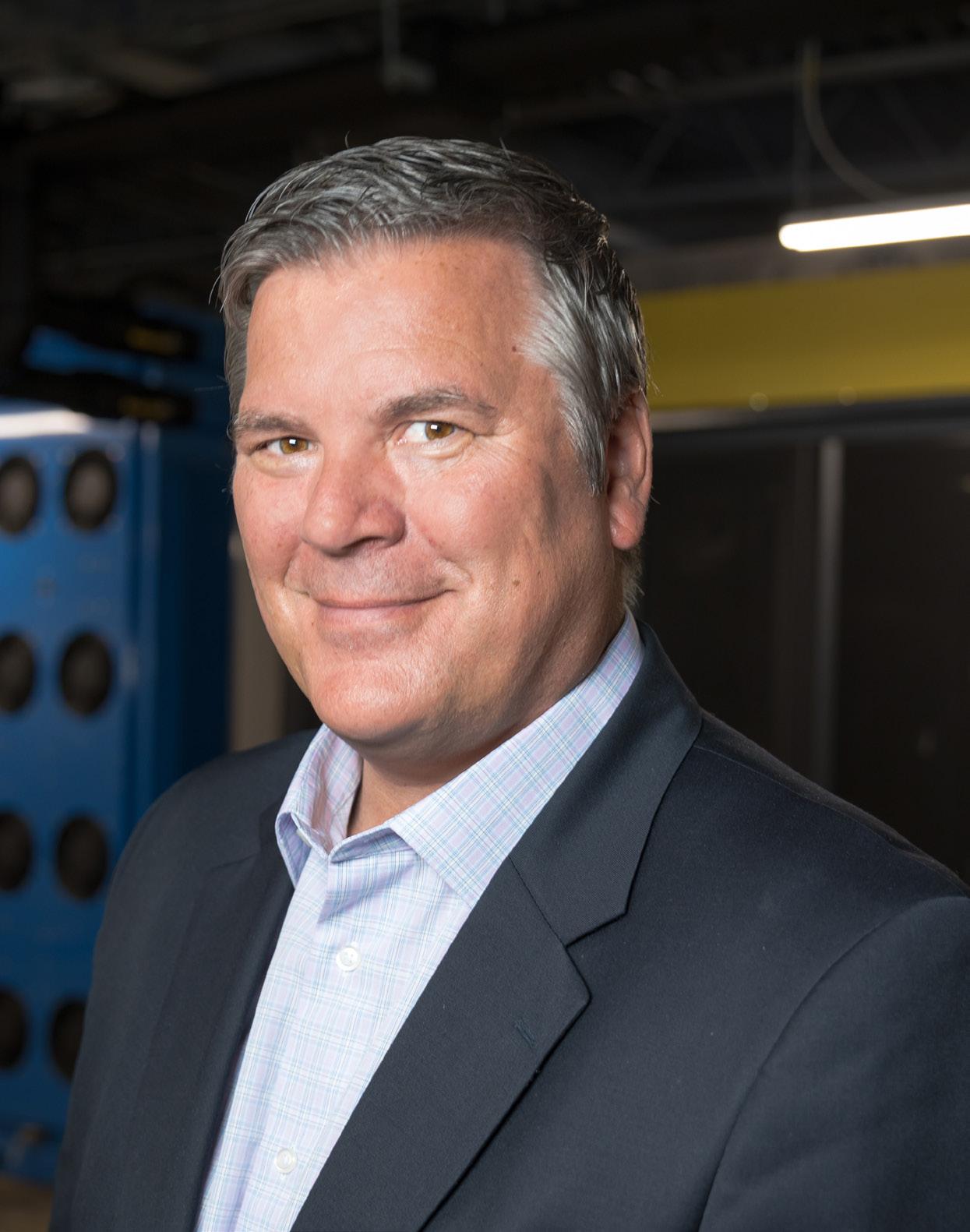

and Birmingham and Huntsville in Alabama. Not to mention many cities throughout Florida. The south-east is a fast-growing environment and there are great economic incentives for businesses to move here. You don't have these harsh cold winters either, so it's ideal for infrastructure,” said Uphues.
Uphues is proud of the services DC BLOX provides, as they understand that businesses are facing increasing challenges that have a profound impact on their ability to compete and grow in their markets. Infrastructure is considered vital to the way businesses operate and deliver services and must connect customers to infrastructure in their markets and across the globe. With the pandemic accelerating digital transformation – mass migrations to the cloud, increased mobility and big data –increased agility is required.
With the urgent need for new physical and network infrastructure, DC BLOX works with businesses as well as with state and local governments to build that infrastructure, and to develop the workforce and culture to grow their tech economies.
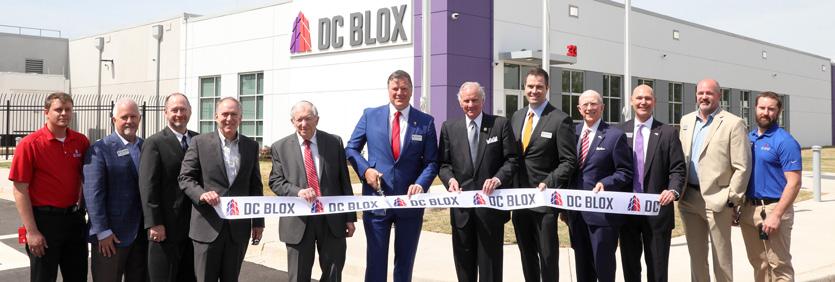
Myrtle Beach Cable Landing Station –a hurricane-proof gateway to the world In a hyperscale landscape dominated by the major cloud companies in terms of internet transit and capacity, the industry has seen a shift from the telco internet – birthed from the likes of AT&T and Verizon – to the next generation of cloud services. As these cloud services needed to be distributed further outside of core markets, the cloud internet emerged.
One of the ways the cloud internet expands is internationally through subsea connections. DC BLOX were able to win the Myrtle Beach project with a large hyperscaler, one of a number of initiatives that DC BLOX are involved in alongside hyperscalers.
“Of all the cable landing stations on the eastern seaboard of the United States, Myrtle Beach was directly halfway between New York and Miami, and it's a centralised place that had many core benefits: there's not a lot of barrier islands to go around; the shelf of the subsea floor is a little shallower in areas before it drops off into deep water; it is close to the burgeoning data centre and communications hub of the south-east US, and, aside from hurricane-proofing the building – which is common in Miami – it has a great climate”.









GENIUS Modular Data Centers are purpose-built, compact, economical, energy-efficient and quick to deploy with an impressive speed to market of five to eight months. GENIUS delivers the flexibility of a stick-built data center for edge or colocation providers while enhancing cloud computing operations, reducing carbon footprints and lowering CapEX costs.
more >
As part of the philosophy of serving locally and connecting globally, Uphues explained that DC BLOX took the added step of building a dark fibre ‘backbone’ extending directly from Myrtle Beach, running by Charleston and Augusta, all the way into Atlanta and landing in Lithia Springs, “where there's a lot of hyperscale data centres being built”.
“We've done this by building a multi-duct conduit and dark fibre system that allows us to connect our cable landing station all the way through to core hyperscale data centres and key points of exchange along the way, like Digital Realty and Telex in downtown Atlanta, or some of the hyperscale data centres that are out in Lithia Springs.”
Uphues describes it as “the expressway from the ocean floor all the way into Atlanta. DC BLOX presses the ‘easy’ button for our customers, not only having data centres
along the way, but now owning this dark fibre that allows us to create a unique capacity for providing connectivity”.
“We have this single purpose to serve locally and connect globally on behalf of our customers. Though we have customers with locations in Germany or AsiaPac, we never truly lived our purpose and vision until we won the Myrtle Beach project,” said Uphues.
South-east as an Edge location DC BLOX continues to expand, currently running five core data centres with the CLS and a seventh recently announced and many more to come – all to a modular infrastructure that’s right-sized for the market acting as connectivity exchanges that serve those markets.
“Just like you have core exchanges within larger markets, we've just extended those into the edge markets we serve.

Then, through this dark fibre, we are interconnecting all our sites together so all along the route, you have what we'll call ‘gateways’ functioning as access points for content to be deployed.”

Uphues continued: “They become connection points for rural cooperatives and cities to connect into that provides the capacity and Internet transit services needed to connect their local broadband networks from their communities to the world. So, in essence, our ability to empower the edge is also helping to bridge the digital divide in our region. It's an exciting time and we've got a lot ahead of us.”
With predictions suggesting there’ll be a need to double the size of network capacity in the next five-to-eight years, Uphues reflected on the core infrastructure that is needed. He asked: “How many conduit systems are available in the ground, where they can pull more cables or pull more fibre from, and how many fibres are available in the existing conduit systems?”
As part of the services that they focus on at DC BLOX, the first is the core infrastructure of data centres; the second is the interconnectivity between those data centres, as well as the interconnectivity between cloud companies and major connectivity exchanges; and, thirdly, high capacity data storage for customers that don't want to put data into the cloud, either because the data sets are too large and distant,there are latency issues, or interactiveness with the cloud is cost prohibitive.
These large storage arrays contain videos and images, genomic research and healthcare data, and lots of other data sets that are kept local in one of the markets, with network connectivity available between data centres to distribute and protect data where it is needed.
In partnership with global hyperscale partners, DC BLOX is redefining the hyperscale Cable Landing Station with its new facility in Myrtle Beach, South Carolina, which is set to open in the second quarter of 2023. The CLS will be located in the International Technology & Aerospace Park (ITAP).
Download ebrief for Myrtle Beach CLS
To conclude, Uphues suggested that many people in the data centre business today have come out of the real-estate business and are still just real-estate focused. While he acknowledges that they founded the industry, this was primarily just to erect a building filled with computers containing storage and power.
“The DC BLOX team is made of technology industry veterans. We have always taken the approach that this is, at the end of the day, a technology service that you're buying; whether you're renting a cabinet of equipment in a building, you’re moving data to a public cloud provider, or you are backing up your mission critical data
TITLE: CEO
Jeff Uphues leads DC BLOX where he is responsible for setting and leading the company’s strategy, vision and execution in designing, building, and operating a fabric of interconnected, highly secure, Tier III-rated data centres across the US southeast.
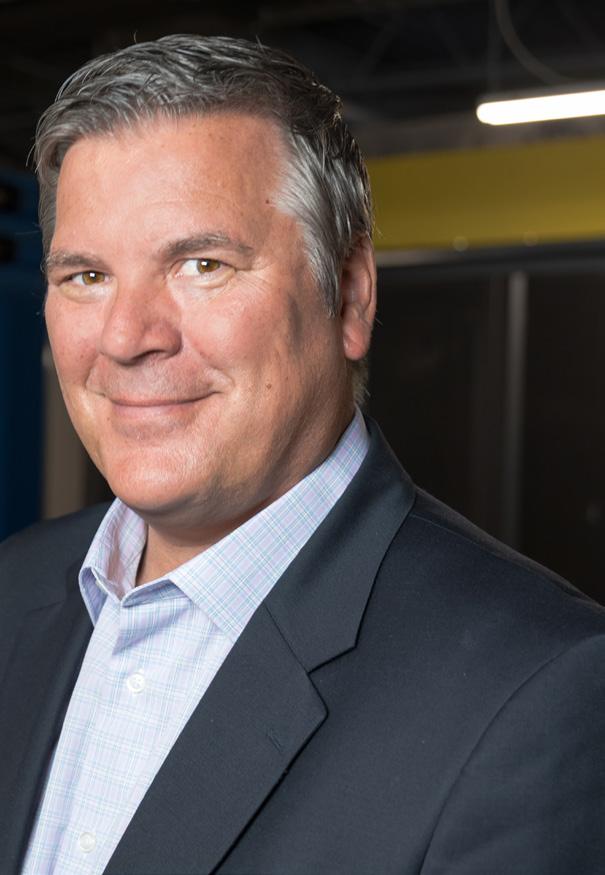
Jeff is a 30-year veteran in the information technology industry having held C-suite leadership roles for Liquid Web, Cbeyond, Bandwidth, ACSI Network Technologies, MCI and WilTel.
Jeff is a graduate of the Harvard Business School, Rice University’s Jones School of Business Executive Education programme in Finance and Accounting and completed his undergraduate studies at the University of Texas at Arlington.
JEFF UPHUES
DC BLOX
‘EASY’
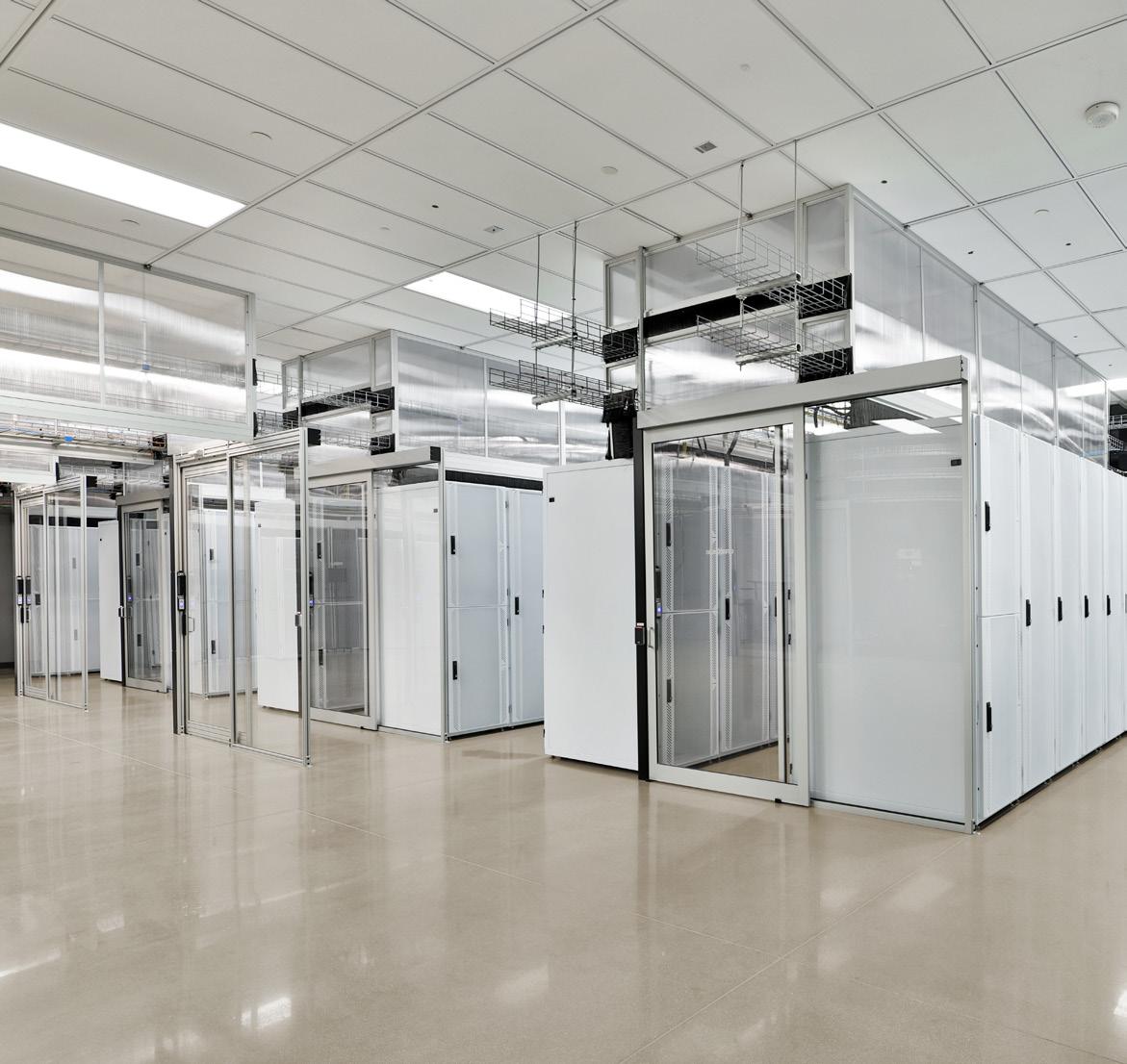
DC BLOX TEAM IS MADE OF TECHNOLOGY INDUSTRY VETERANS”
off-site . We are no longer selling services to facilities managers or CFOs, we’re selling into CIOs and CTOs. You’ve got to understand strategic IT – it’s not just a realestate business anymore.” DC BLOX engages in the markets and contributes to them, too, minding local social and environmental concerns, to ensure the business maintains a higher purpose.
“In every market that we go into, we attempt to use local contractors. When you build a data centre, there's lots of different contractors you use. We try to take a percentage of our entire construction cost and say, ‘who are the disadvantaged and minority-owned businesses here that can help provide us services?’. We want to help the community and help them grow their business.
“Every market that we have is passionled by the executives and the people that we put there. So we hire local people with a connection to the community,” said Uphues.
There are many wide-ranging causes that DC BLOX supports, including women's shelters, food banks, and tech infrastructure – in the form of giving away thousands of computers through partner organisations and volunteering to help where needed.
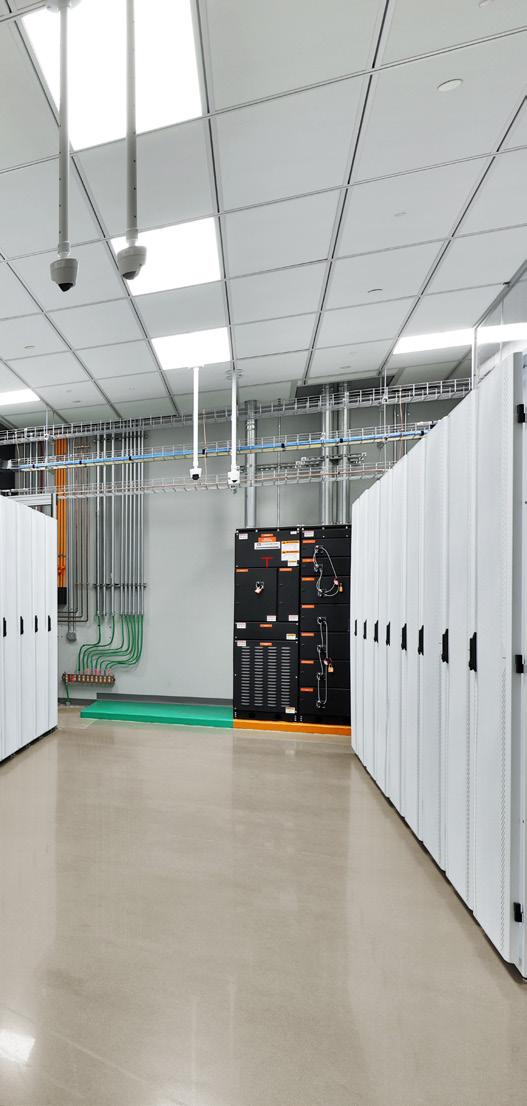
“A laptop means the world to somebody when they have connectivity to explore it. This group then provides training classes to them, partnering with school systems. Our values are foundational to how we serve our markets and have a real impact on our culture.”
According to Uphues, the pandemic has taught us all that there's a lot to be said about having personal connections to the people with whom you work.
“It's taught us how to be more interconnected and stay that way. The growth of the cloud internet is happening everywhere. The remaking of the interstate and the additional capacity that is available is helping us to stay connected to each other locally and globally”.
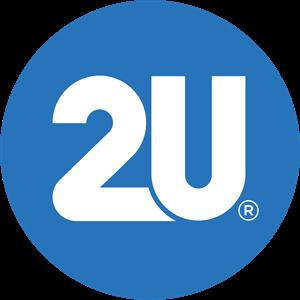
 WRITTEN BY: İLKHAN ÖZSEVIM
PRODUCED BY: TOM VENTURO
WRITTEN BY: İLKHAN ÖZSEVIM
PRODUCED BY: TOM VENTURO
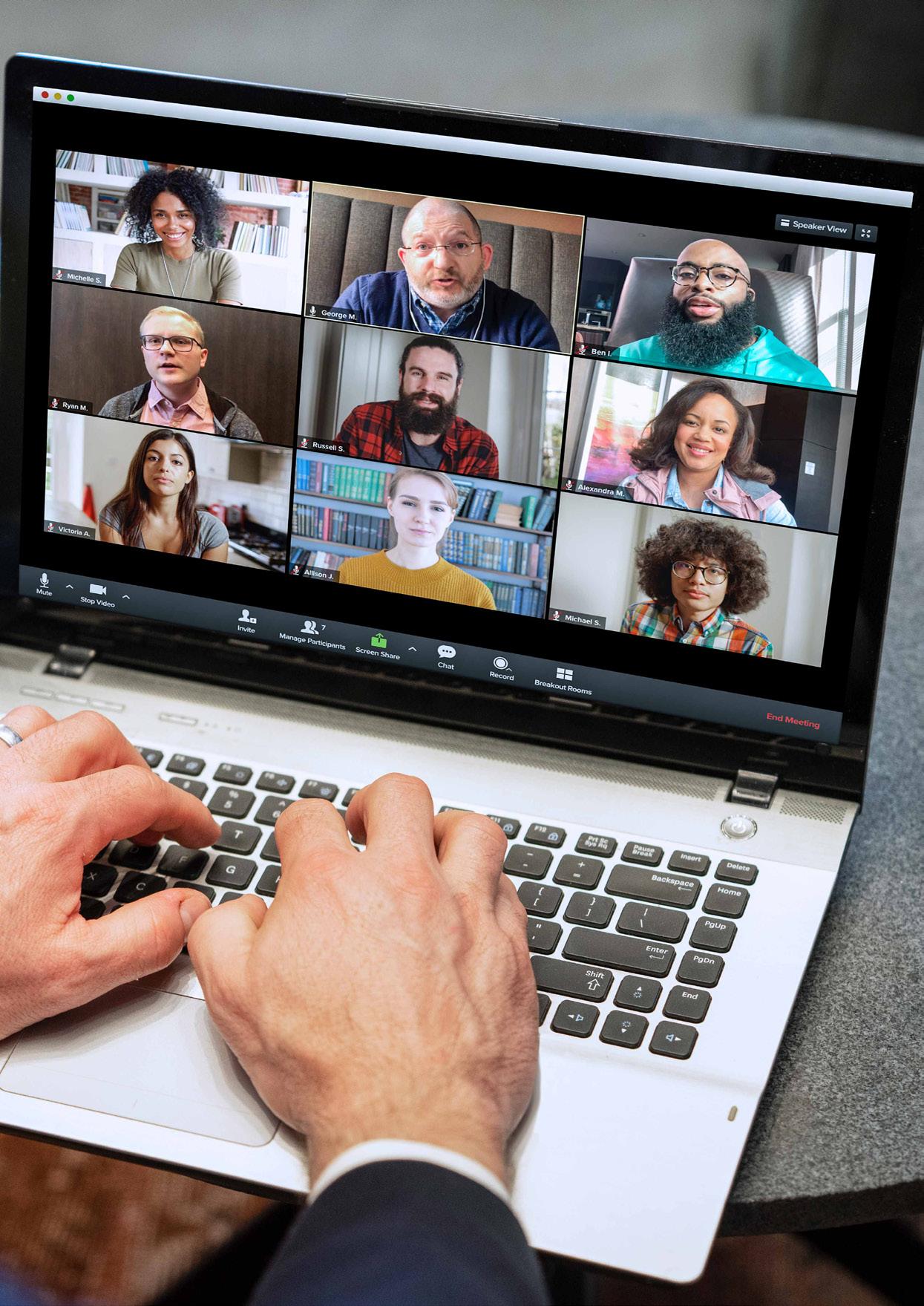
The face of education is changing. With an evermore interconnected world, the times of having to attend educational establishments in their physical locations no longer applies. Educational Technology (EdTech), in the form of educational delivery platforms, is transforming this landscape – there may even come a day when education journeys are taken entirely online as part of global culture.
This landscape has its challenges of course, but it also brings with it major opportunities to overcome some of the restrictions that traditional educational systems have not been successful eliminating.
In terms of the challenges, the most pressing is probably that which concerns data. 2U is the parent company of global online learning platform edX which provides over 45 million learners with access to over 4000 digital education offerings from more than 230 colleges, universities and corporations. Each one of those learners, and the educators that constitute that learning relationship, has data that pertains to them. That’s a lot of data.
Naturally, the security and the trust in the service is central to the educational dynamic and to 2U’s success – which is invariably tied to the outcomes of its users. In other words, the quality of education is now inseparable from the quality of the technology, which

2U is the parent company of global online learning platform edX which provides over 45M learners with access to over 4000 digital education offerings in partnership with more than 230 colleges, universities, and corporations.
Andres Andreu, Chief Information Security Officer at 2U, a leading EdTech player, explains why security is critical to the present & future of education
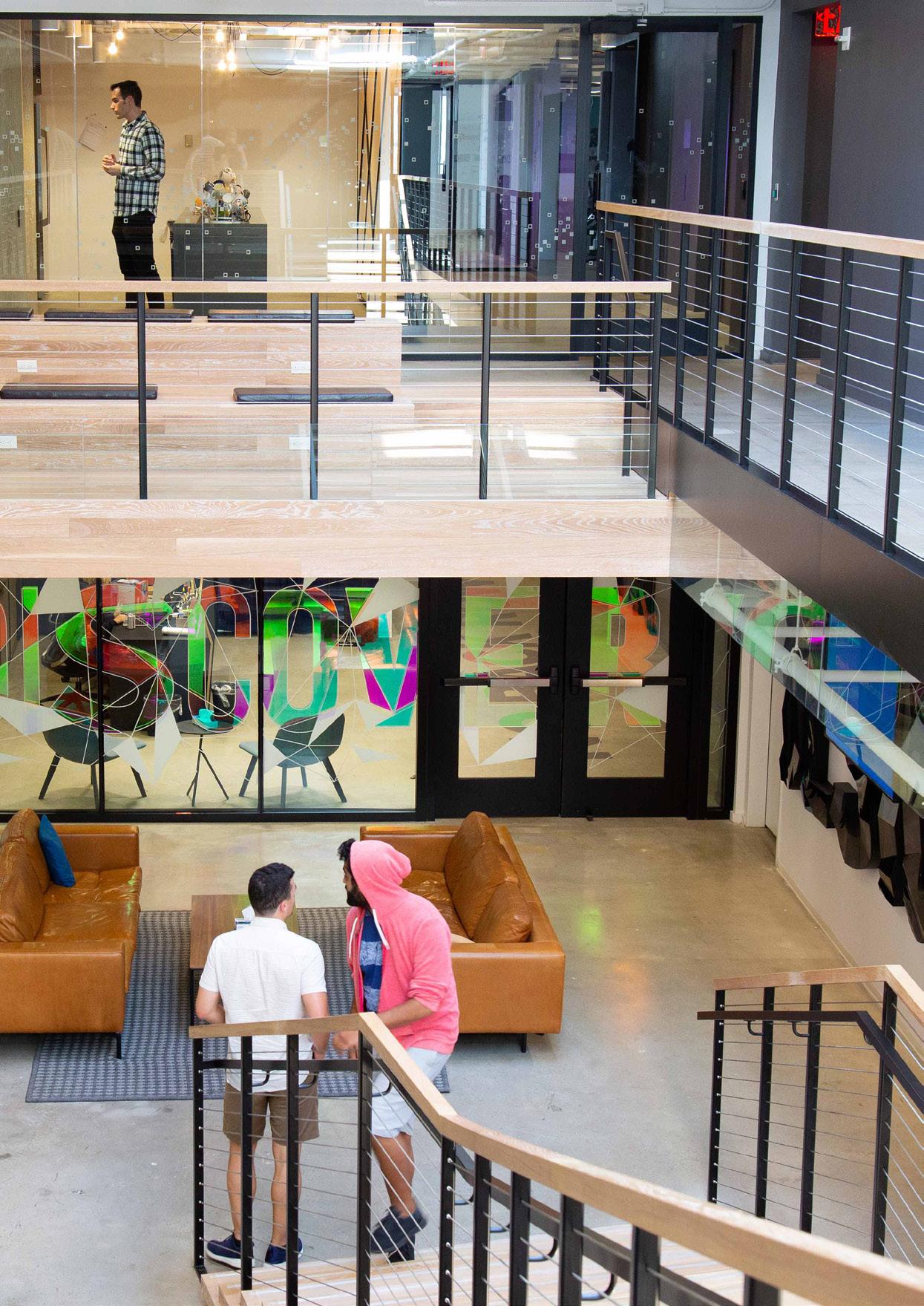
implies, amongst other things, the security of the systems that deliver that education. Homeschooling has a new face, and if home is where the heart is, then school is wherever learners want it to be.
Andres Andreu is the Chief Information Security Officer at 2U. His role entails overseeing everything to do with security, ensuring those educational potentialities are maximised by minimising the risk involved when such systems are online. “I'm responsible for the internal side of the house – or what is traditionally called IT security,” he says, “and I'm also responsible for everything having to do with the customer-facing side of the house, which is where we engage with our partners, instructors and students – a larger ecosystem than the internal side. I also oversee SRE (Site Reliability Engineering) or DevOps and DevSecOps as well.”
As CISO, there could hardly be someone better fitted for the job at 2U. Andreu has a long and fruitful professional history, steeped in the expertise that such a position requires.
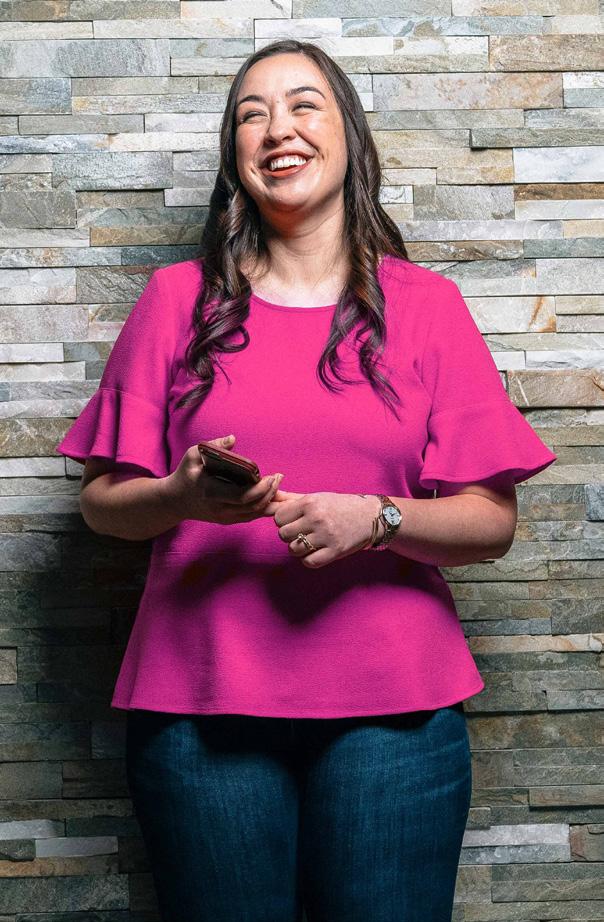
His career began in the early nineties, in a federal law enforcement agency in the US. At the time, Andreu was actually pursuing a career in law enforcement in the field, and “through an interesting series of events”, ended up on the tech-side, building what's called 'Title Three' technologies or ‘lawful intercept’, wire-tap technologies. “I really never looked back from there and fell in place with tech,” he says.
Andreu began his tech career as a software engineer and also did some hardware engineering at that time. “When I left the government, I basically ended up at a large international advertising agency and took over the entire global applications operation, which included everything on the application security side as well – and, in those days, APPSEC was in its infancy.
“Yes, a user does have an identity, but from an IAM perspective, a machine also has an identity – even certain elements of software have identities”
LOCATION: RALEIGH-DURHAM-CHAPEL HILL AREA, NORTH CAROLINA
Andres Andreu, CISSP-ISSAP is the Chief Information Security Officer (CISO) at 2U, Inc. and a Boardroom Certified Qualified Technology Expert (QTE). Andres is an industry veteran and recognised industry leader. He was chosen as one of the Top 10 CISOs for 2022 by C-Level Focus. He was also chosen as CISO/ Leader of the week by the Cyber Startup Observatory in February 2019 and Computerworld, where he was voted one of the Top 100 IT Leaders for 2009. Andres is the sole author of “Professional Pen Testing Web Applications” as well as numerous magazine articles and an Internationally granted patent.

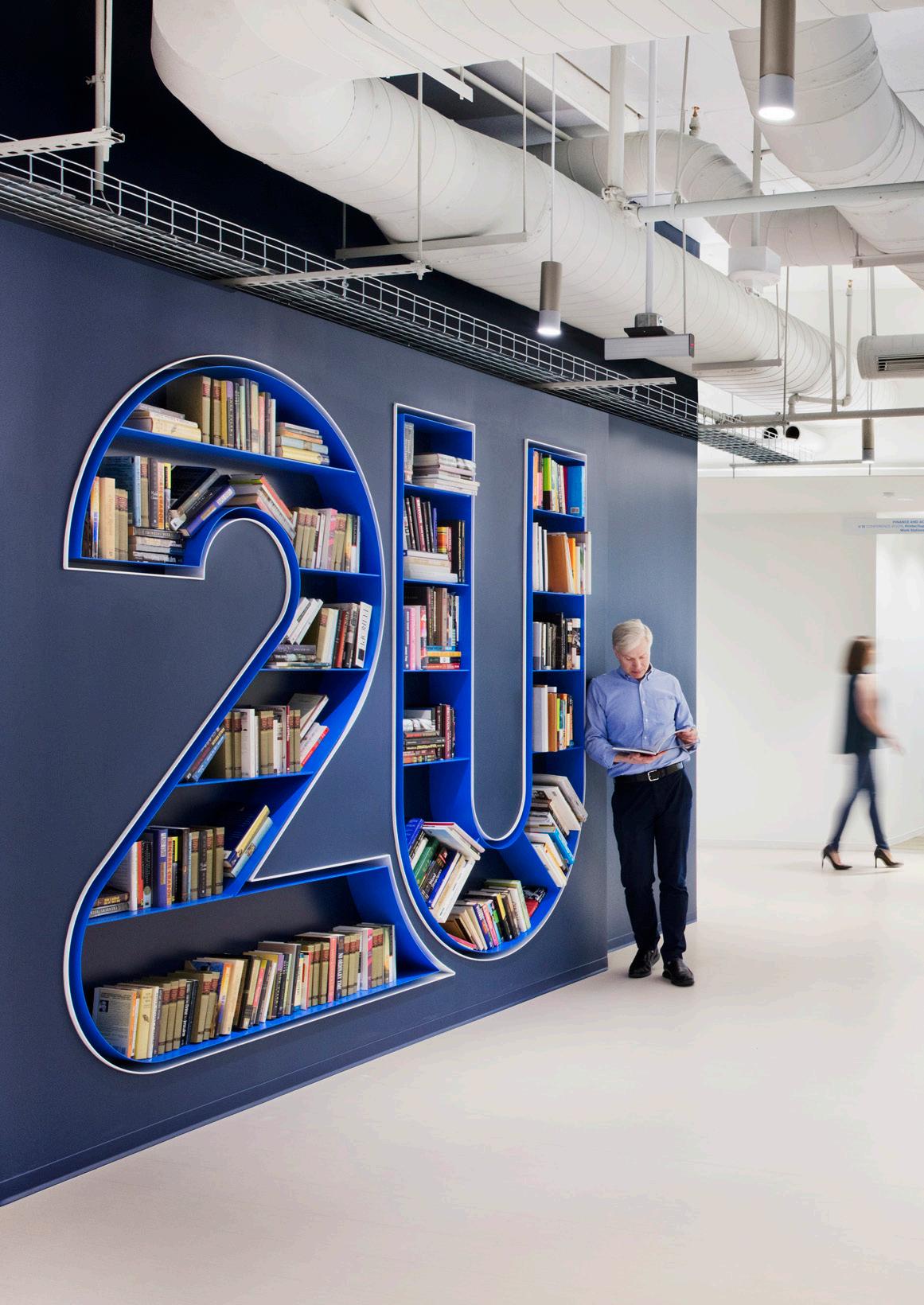
“On my own, I started doing a lot of pen testing (penetration testing or ethical hacking) and built my own business, and this was before the big players were involved in pen testing. I also wrote a book on pen testing in 2006 and that started my public speaking path. After that, I began consulting for a number of governments around the world and ended up with an interesting contract at the United Nations, oriented around the technology side of human trafficking and counter terrorism work.”
From this, Andreu co-invented three cybersecurity products as employee number three of Bayshore Networks. “We started in 2012 and built the company and the products up to exit in Jan of 2021,” he says, “where an Israeli company bought out all the intellectual property and the engineering team.”

Andreu was then asked to join 2U to spearhead their security programme. Learning and security have clearly always been a motif throughout his impressive career.
As an EdTech company, 2U is presently at an interesting migration point, where they’re making a very hard push to move from a product company to a platform company – and there's a sizeable difference between the two. “From a tech-perspective, we feel that an effective platform is the future of the company. That shift will really streamline and facilitate our partners' ability to engage with us.”
Since 2U’s customer-facing solutions were born in the cloud, Andreu sees cloud and application security as “very tightly coupled”.
“This is really the protection of our users, their data, their experience - from what's known as a 'layer seven' perspective. A lot
“From an infrastructure perspective, 2U is actually in a really good state because we have a lot of infrastructure as code deployment builds, so have many security guardrails built into those CI/CD pipelines”





























“GuidePoint Security have proven themselves to be not only very knowledgeable in the spaces where we've used them, but extremely trustworthy. And to me, that's a great combination”
ANDRES ANDREU CHIEF INFORMATION SECURITY OFFICER, 2U
of traditional security focuses more on networking devices and networking nuances. Layer seven, or application security is a totally different animal, because you're dealing with elements at a data level – not at a network level. So to me, application security is the cornerstone of my entire programme here. We've put a lot of work into it, but it really encompasses movements on both sides of the equation.”
This means that Andreu and his team have to address security at the core. “In other words, we need to make sure that our software engineers are coding with certain models in their minds, which are protective mechanisms at a code-level,” says Andreu. “And then we have the other side, which is where we add elements like web application firewalls and content inspection at the actual delivery points – right on ingress and egress.
“And so to me, I see application security as an entire ecosystem within itself. Data security is really paramount to us because
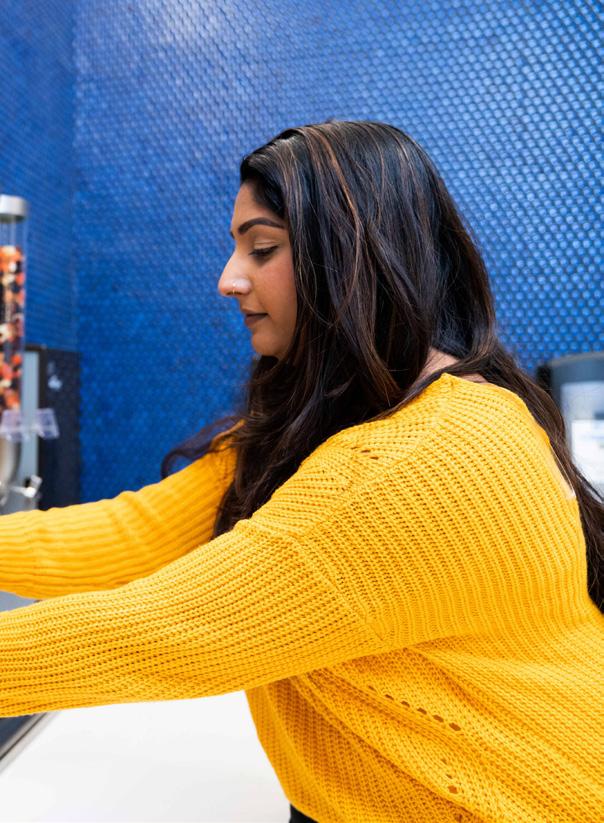
our objective is always to provide the safest possible environment for our learners – and our users and our instructors trust us with their data – so protecting data at rest is one extremely critical dynamic.” So there is data at rest, and then there is data in transit, and these all fall within Andreu’s remit as CISO.
“Now, there are some obvious challenges with the space given that we can’t control what a student has on their machine”, says Andreu, “and I can’t control how they operate from their personal machine. So, given these challenging environments, there are multiple protective elements we have put in place in order to maintain the safest possible learning environment for our customers.”
Since Andreu joined 2U, they’ve built an enterprise risk management committee, the responsibility of which is to understand the identified areas of risk that 2U brings to the table. The committee then makes decisions in terms of priorities in addressing those risks, implementing mitigating controls within certain areas and calculating how much budget they're going to put into those decisions.
“That committee is really at the heart of our risk management,” he says. “As a company, from a compliance perspective, we are mandated by a number of partnerships to have several assessments and compliance requirements. So, for instance, we are required to have SOC-2 (type-two) within certain business units, we pursue the UK cyber essentials certification, we also are required to have PCI-compliance, all the way to externally validated compliance and so on. From a compliance perspective then, we're pretty broad in terms of the requirements that we have to meet.”
THE NEXT 12 TO 18 MONTHS AT 2U
2U will be wholly focused on the platform, including everything from an engineering perspective, from the DevOps, DevSecOps perspective and in securing that platform.
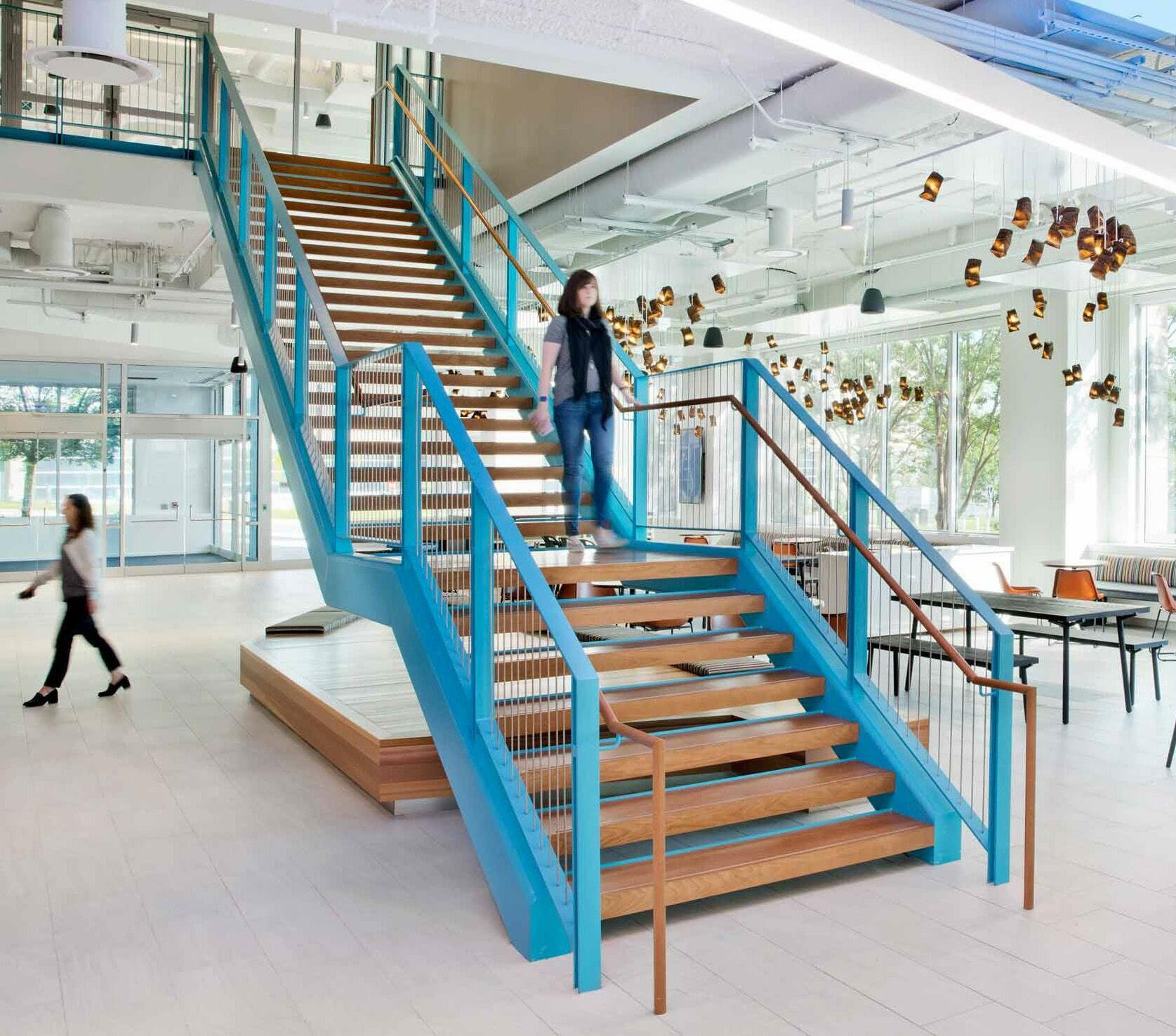
“In my mission statement for the cybersecurity team,” says Andreu, “it is 100% evident that our focus is on providing the safest possible platform for our students to learn and for our instructors to engage, so everything's focused on the platform.”
“Perhaps a gross oversimplification, but in any security system, to be able to understand the landscape, we obviously have to be able to discern those things that are connected to the ecosystem, and Identity Access Management (IAM) is really a framework in terms of the end-to-end management of digital identities.” Andreu pauses before continuing, “and I'm going to be very clear here, because I'm very opinionated on this subject.” We’re all-ears.
“Every organisation defines identity differently. However, having done a lot of work with identities, to me an identity is
really not just a user. Yes, a user does have an identity, but from an IAM perspective, a machine also has an identity – and even certain elements of software have identities.” This is an interesting approach.

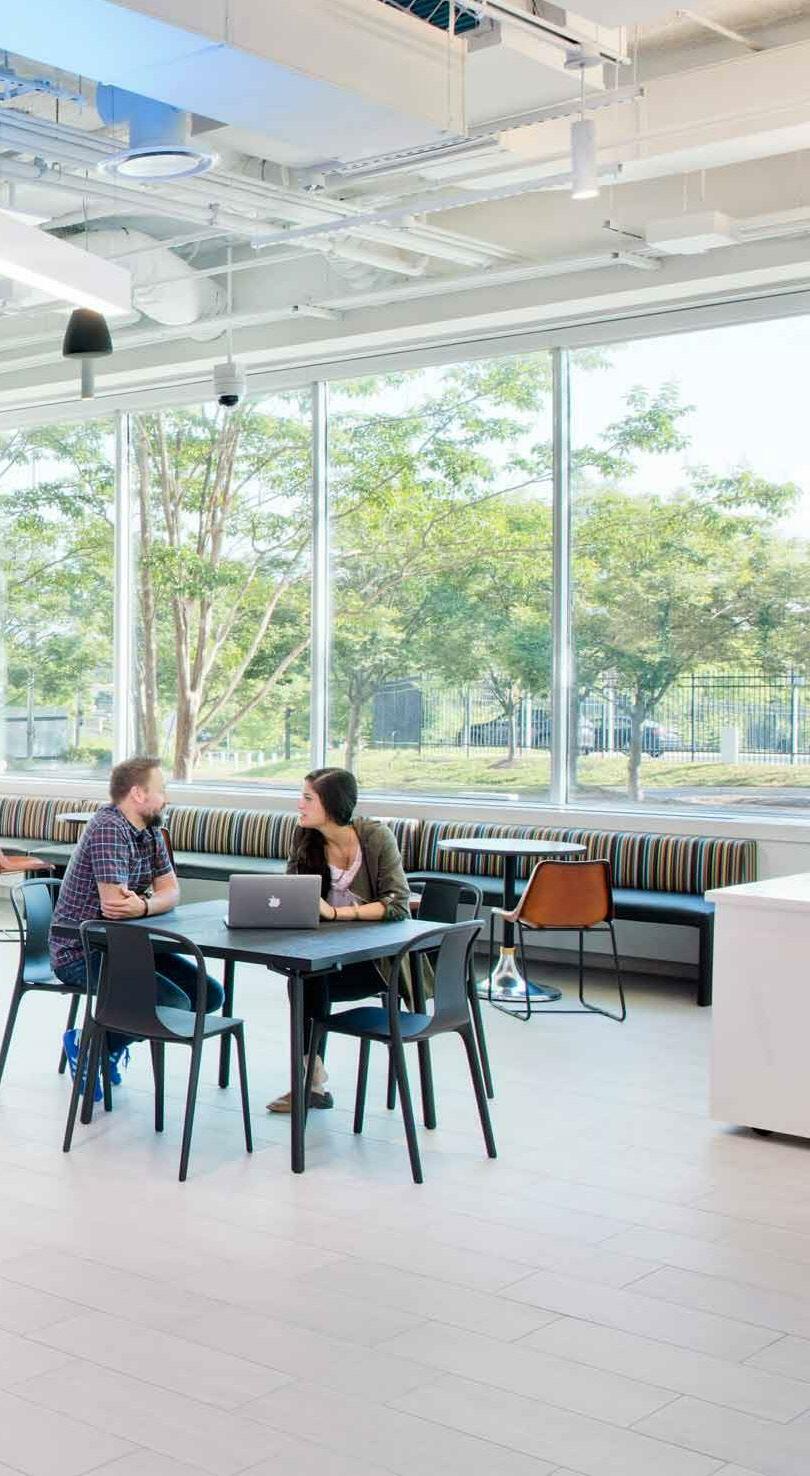
“This,” he says, “is all very important if you start thinking in terms of implementing future zero-trust environments, because identities are obviously at the heart of zerotrust, and so we're pushing into that space rigorously. From a user-identity perspective, I can tell you that we're already on the journey to go passwordless and that's an important part of the access aspect of the IAM framework.”
Andreu expresses that he never loses sight of the idea of software elements as having identities, “because,” he says, “if you think about machine-to-machine communications at an API level, there's no human involvement at all in that process, and so it really needs to be thought of in that way.”
I begin to wonder whether a completely secure network is even possible, especially in the face of greater interconnectivity and the data explosion that’s taking place on such an unprecedented scale. So I asked him, and his answer was rather stringent, but honest.
“I think network security is just nonexistent at this point, and anybody that thinks their networks are secure is, in my opinion, delusional. Think about it. Our perimeters have disappeared, just as the traditional network has in fact, also disappeared. Our networks now are extended into cloud environments and deep into people's homes. So you put in controls to try to limit the attack surface within your network, but honestly, you really have to just come to terms with the fact that the network is no longer the locus where you can protect things. At 2U, we are successful at our network security, but I also understand that the network is not really a good choke-point to try to implement security effectively.
2U has a meaningful partnership with Guidepoint Security that has allowed them to achieve much of their vision. Andreu says that he considers Guidepoint Security as a trusted partner, which is notable as such a notion does not come easy with him.
“Guidepoint have proven themselves to be not only very knowledgeable in the spaces where we've used them, but extremely trustworthy. And to me, that's a great combination. It's a combination that basically becomes an extension of my team. My team is small, but our scope of responsibility is broad. And so I see Guidepoint as a trusted extension of my team, and it's been an invaluable relationship.”

ANDRES ANDREU CHIEF INFORMATION SECURITY OFFICER, 2U
“It’s going to be something that slowly remoulds the entire educational environment through technology and AI in the EdTech space”
“If you take the layer seven example for instance: you could have all the network security in place that you want and an application that gets deployed, but it's chock-full of holes. Unless you have something looking at layer seven data natively – at a granular level – your network security controls are totally useless. From an infrastructure perspective, then, 2U is actually in a really good state because we have a lot of infrastructure as code deployment builds and so have many security guardrails built into those CI/CD (continuous integration/ continuous delivery) pipelines. It helps us to automate the entire process of securing the deployment of infrastructure.”
The Future of Education Andreu predicts that we're going to see a lot of intelligence built into the ecosystems of the EdTech industry. “For instance, in the same way that there's adaptive testing, like where you might get two or three questions, and then the difficulty increases accordingly – there's going to be, I predict, an ‘adaptive learning’. Imagine 40 students in a coding
class, all 40 are going to have varying levels of background and experience – so half the class is going to be bored half the time, while the other class is going to be challenged. That’s the traditional model of education.

“But imagine an adaptive environment where a baseline gets set when the class begins. Then the difficulty of the challenges that get presented to students are dynamically adapted based on their performance, on their level of knowledge and ability. I think that's really powerful, and it’s going to be something that slowly remoulds the entire educational environment through technology and AI in the EdTech space.”
2U's mantra is ‘no back row’, because, typically, the back row in a classroom misses out. “They're the ones that are not focused and are not getting the same level of attention from the professor,” says Andreu. “Our objective is to remove that back row and to make this accessible to anybody who's willing to take on the challenge of these classes.”


 PRODUCED BY: TOM VENTURO
PRODUCED BY: TOM VENTURO
In recent months, business leaders have been crediting the coronavirus pandemic as the catalyst of mass digitisation. Schools were closed for prolonged periods of time, making winter shutdowns seem like nothing but mere blips in this wider disruption to education. If it wasn’t for digital technology, learning would have fallen even shorter than expected, as students were given access to technology that enabled them to work from home under the watchful eyes of their parents.

Technology was, and still is, one of the key enablers of education and, as COVID-19 provoked years’ worth of digital transformation in such a short period of time, technology will continue to play its role in ensuring that students are educated properly, dynamically and safely.
Yet, with new technology comes added risk. Cybersecurity is another core aspect of digitisation so, although there are increased attack vectors, there are increasingly more sophisticated ways of countering these and adapting such programmes to meet the needs of users.
This is particularly true for Green Bay Area Public Schools (GBAPS), which has been on a journey to transform the way it operates, squeezing every last ounce of education into its students’ lives while making learning easier and more fun in the process.
Amy Sterckx, Executive Director of Technology and Information at GBAPS, tells the story of the organisation’s equity commitment and digital transformation
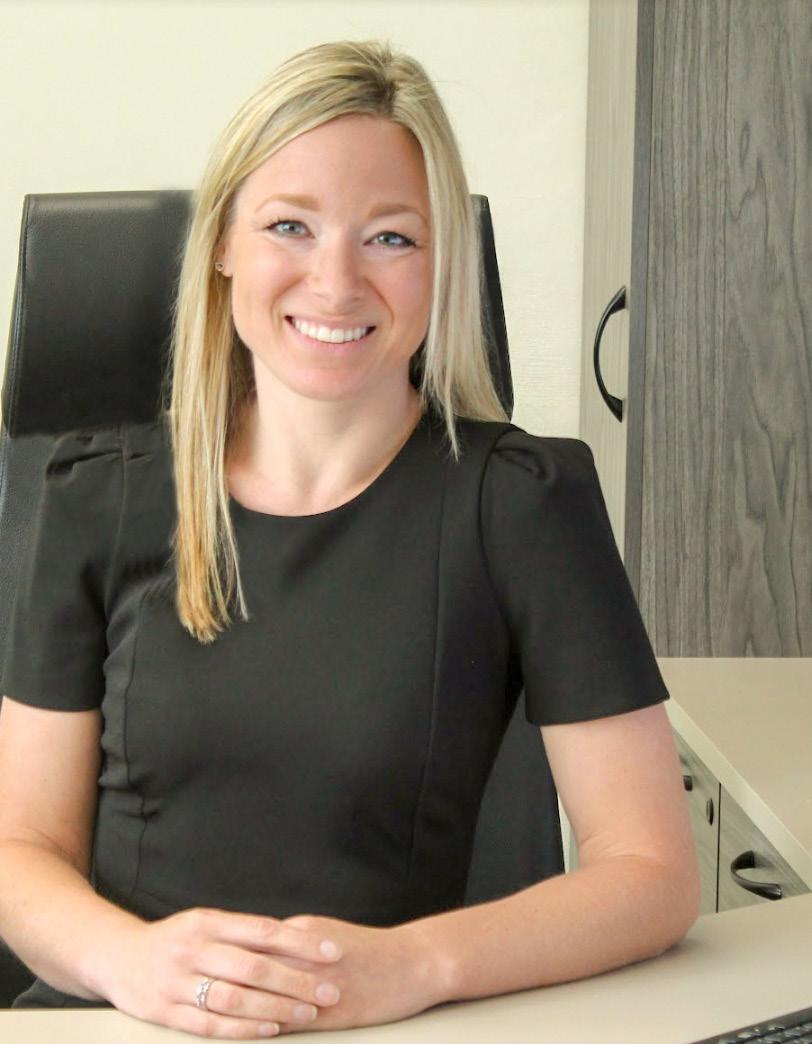
Overseeing these projects is Amy Sterckx, Executive Director of Technology and Information, who was born and raised in the area in which she now works. She began her career as a classroom teacher and now works for the organisation that has managed education across the city for more than 150 years, overseeing the technology integration across 42 schools for more than 19,000 students.
Adopting the necessary hardware and software solutions is a key part of enabling success, but Sterckx believes it goes beyond that as the commitment of the organisation to security becomes a critical part of school operations.
“Although hardware and software are large components of our work, technology truly encompasses more than devices and software systems. Here in Green Bay, we have a large focus on the security of our

student information that flows through our software systems,” Sterckx explains.
“Our students have so much of their information that is now naturally placed in the digital world, whether it's our student information system, online textbooks that we use, or third-party resources that are used in our classrooms.”
The repeated consideration for student safety has shaped the way the organisation uses technology and, through such efforts, the organisation has obtained over 100 student data privacy agreements to benefit the schools under its watch, but also those throughout the state of Wisconsin.
The group also offers training in collaboration with the county’s law enforcement to educate all people, internally and externally, on data security and how to protect their information as well as that of the children in the city. Such education is an important step in allowing children to have access to the powerful tools that enhance their learning.
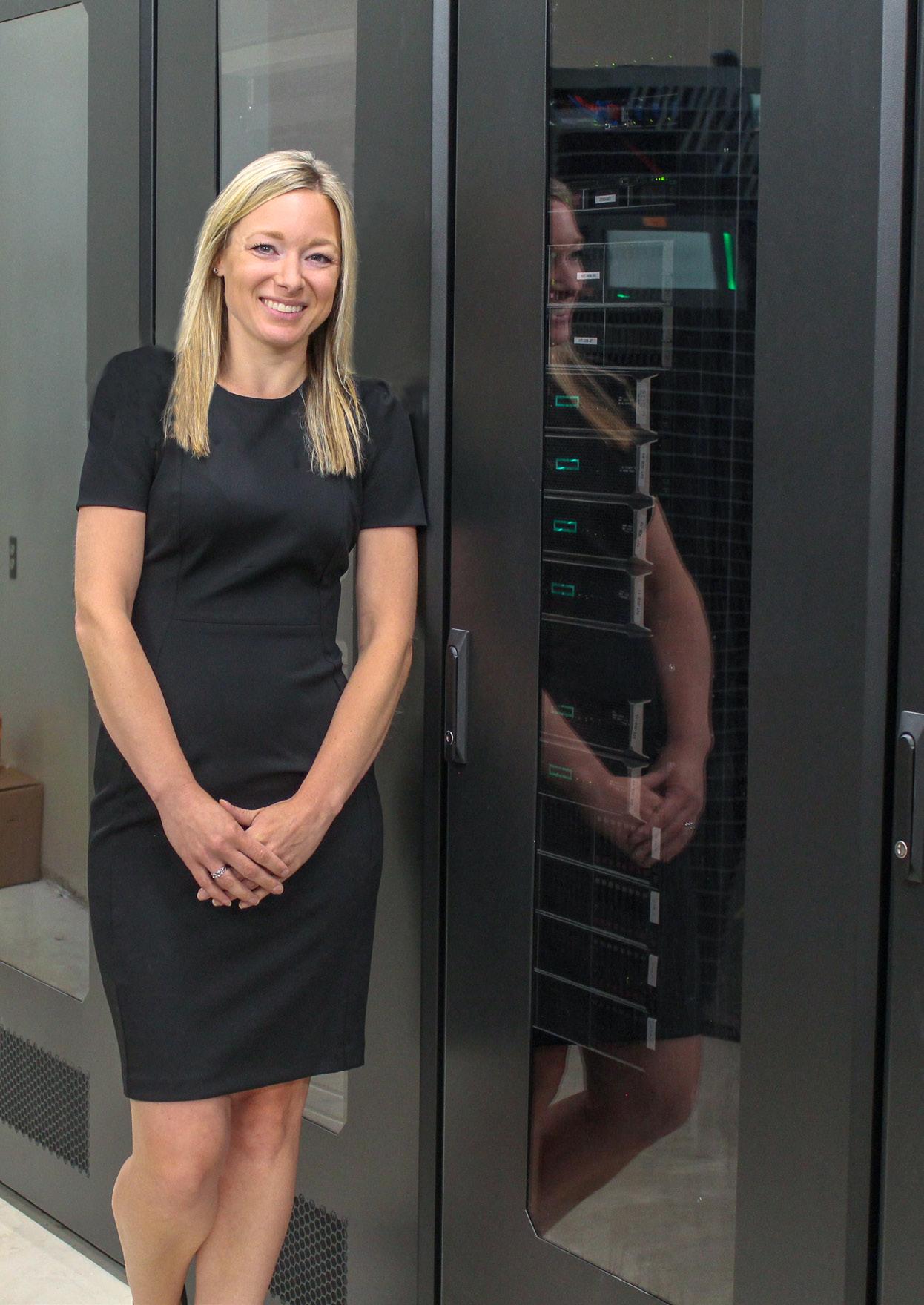
INDUSTRY: EDUCATION
As the Green Bay Public School District’s Executive Director of Technology and Information, Amy serves a crucial role as the liaison between the District’s operational teams and educational teams. Experienced in both large and small school districts, Amy enjoys working alongside individuals and teams to implement initiatives of innovation for school improvement. A former classroom teacher, Amy currently holds a Master's of Arts in Educational Technology from Marian University. She earned her Certified Education Technology Leader (CETL) National Certificate, International Society for Technology in Education (ISTE) Certificate, and most recently was nominated for the large corporate CIO ORBIE award.
“I believe COVID-19 has opened our eyes up to opportunities that we may not have seen”
GBAPS prides itself on implementing the latest technological changes that impact the educational symptom as a whole, particularly as human resources has become an issue for many schools. Students and parents also gain peace of mind knowing that GBAPS is working tirelessly to secure student information.

“I think about it in a way that, just as we protect our students in the physical world— we make sure we know who we're sending them home with and that our doors are locked—we strive to do the same in our digital world,” Sterckx says.
This also plays into the organisation’s ethos of equity. The ability to provide
Avoid low battery disruptions without running power strips and extension cables across classrooms or modifying infrastructure.

The Adapt4 USB-C Charging Station with Active Charge Upgrade makes at-the-desk charging a reality!
Request a Demo
Get in touch

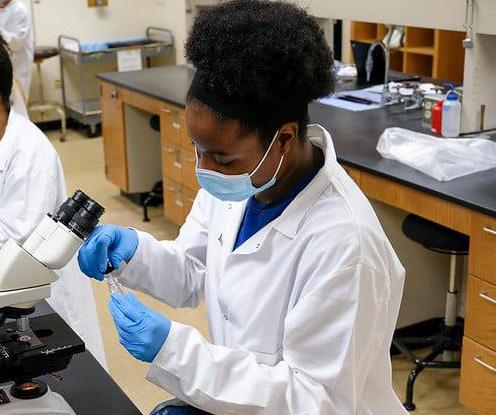 AMY STERCKX EXECUTIVE DIRECTOR OF TECHNOLOGY AND INFORMATION, GBAPS
AMY STERCKX EXECUTIVE DIRECTOR OF TECHNOLOGY AND INFORMATION, GBAPS
equity for its students is what is expected from parents; the ability to support its staff to achieve great things is not so much of an expectation, but it is second to none. Securing a bright future for students begins with the interview process and works its way into the classroom environment to support both students and teachers.

“We recently hired staff members to make equity the main focus of their job role. Specifically, the person that I'm thinking about here is responsible for planning,
organising, coordinating, and implementing equity initiatives throughout the district. To expand on the work that takes place in the district, they also serve as a liaison between our district, local universities, community agencies, and, really, our community at large,” says Sterckx.
“We're very proud to say that this person was named one of the most influential Black leaders in Wisconsin, which really shows our support for equity throughout our district, whether it’s a diverse background, special education or resource access from our department, such as access to the internet and devices.”
Equity was ingrained into the organisation early in its existence and it therefore strives for this across all facets of education. The continuous commitment to equity allows the organisation to further its social reach and support the development of students from overseas—some may not even know
English—as well as families in the city, by also offering them learning opportunities.
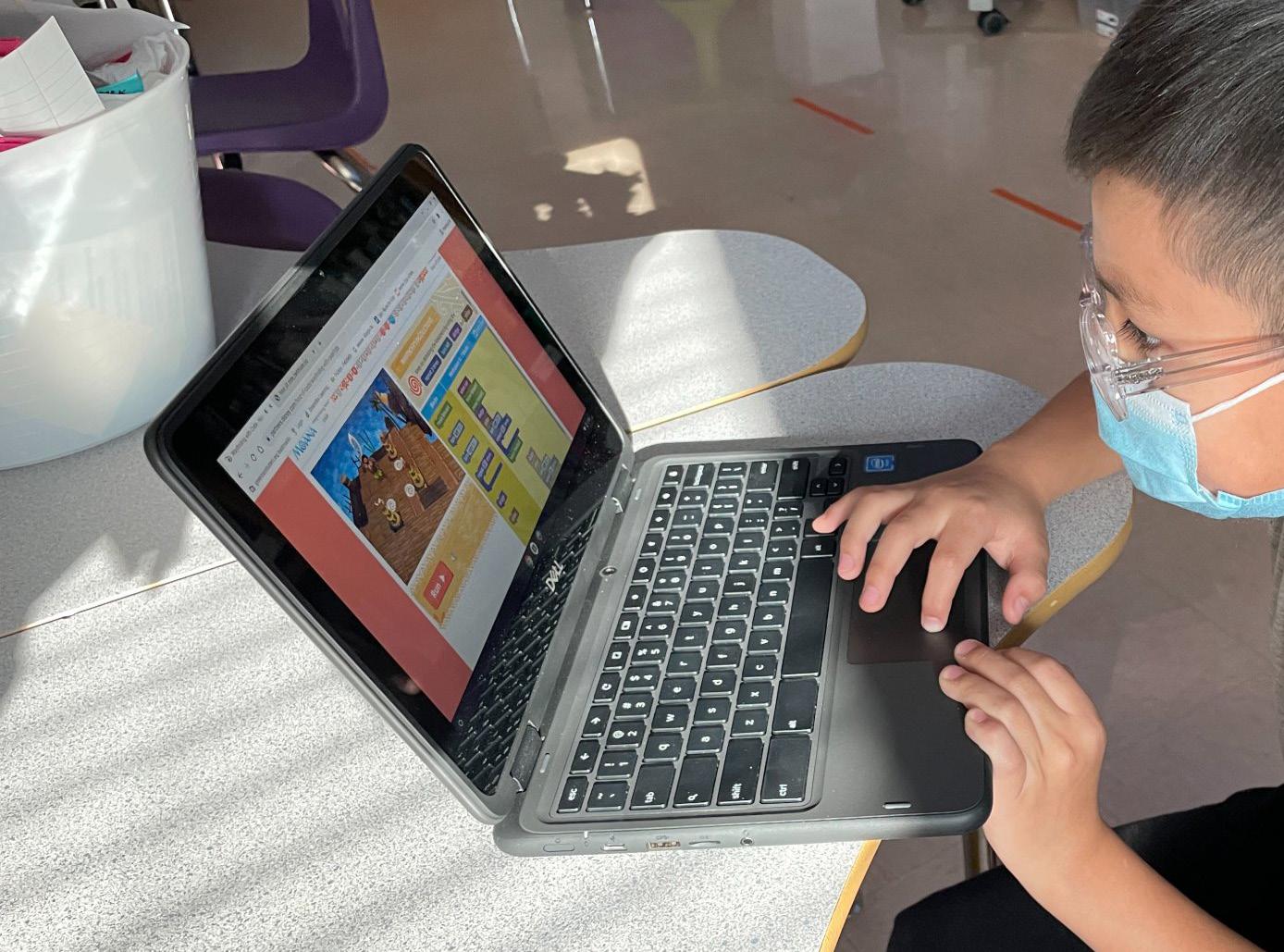
“Green Bay attracts so many families and offers families throughout the community many different learning opportunities,” says Sterckx.
“Whether a parent is looking for opportunities to focus on learning based in STEM or bilingual education, our IB programme, project-based learning, or learning centred around the arts, automotive learning, culinary, manufacturing, the list of opportunities just goes on. Parents find that we have opportunities here in GBAPS for every child.”

AMY STERCKX
DIRECTOR OF TECHNOLOGY AND INFORMATION, GBAPS
“Now, our Board of Education has invested in roughly 20,000 Chromebooks to support a one-toone student device ratio”
Much of the technological development that has taken place across GBAPS is adoption. New, personal computers are provided to pre-kindergarten through 12th-grade students and all certified staff members. Cost savings is a key benefit of digital adoption experienced across schools.
By working with JAR Systems, GBAPS has enabled more computer access across schools and streamlined the way that students use technology throughout their daily lives. JAR is one of the company’s partners for IT equipment provisions and has
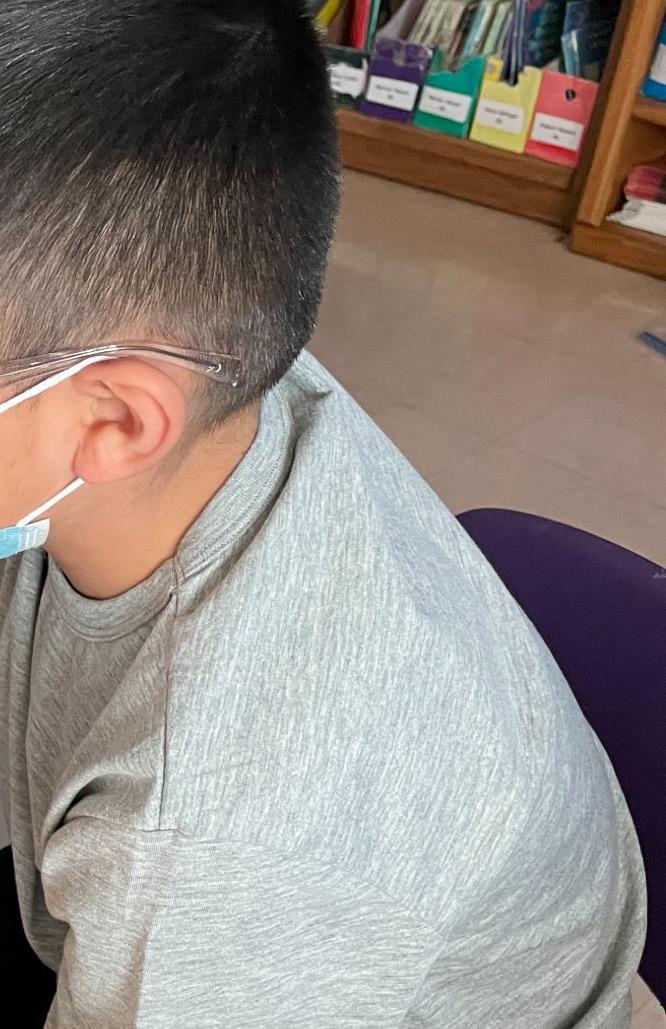
been instrumental in taking schools through transformation over many years of partnership.
Years back, the company worked with GBAPS to provide access to laptops across district classrooms via a cart model. Using these dedicated carts, students had access to laptops directly in their classroom rather than having to leave the classroom to go to a computer lab. This solution is the earliest option to be sourced by GBAPS, but now schools’ use of laptops has increased: students are able to take the devices home to continue work outside of school hours.
“In our current state, the Board of Education has invested in roughly 20,000 Chromebooks to support a one-to-one student device ratio,” says Sterckx.
“These devices were in need of a modernised charging station. The charging carts were great when we had them, but they were large. They took up a lot of space in the room and required the charging cord to remain in the cart.”
As a result of this new charging station, students can now leverage the ability to work at home, taking their personal computer to and from school while not having to worry about a charging cord. JAR was a major cog in this project as it provided the solutions while also solving some of the mobility issues, preempting that some students would return to school needing to charge their laptops.
“Prior to the solution that JAR helped us put in place, if a student came back to school with an uncharged computer or the battery was low, they would have to leave the classroom, walk down to the library, swap devices or get a charging cord, and come back to the classroom. JAR offered us a solution that allowed us to have battery packs in all of our classrooms where
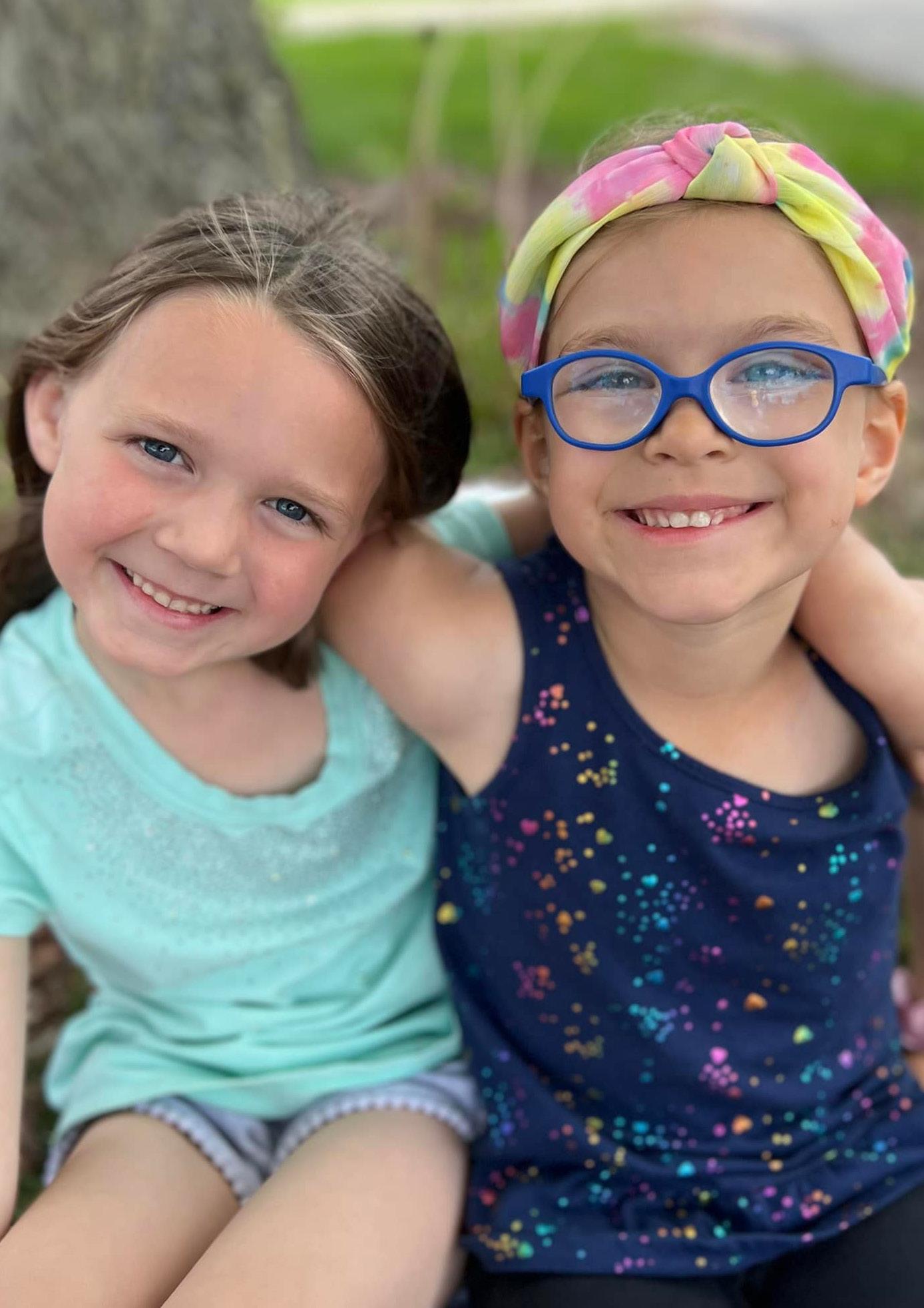
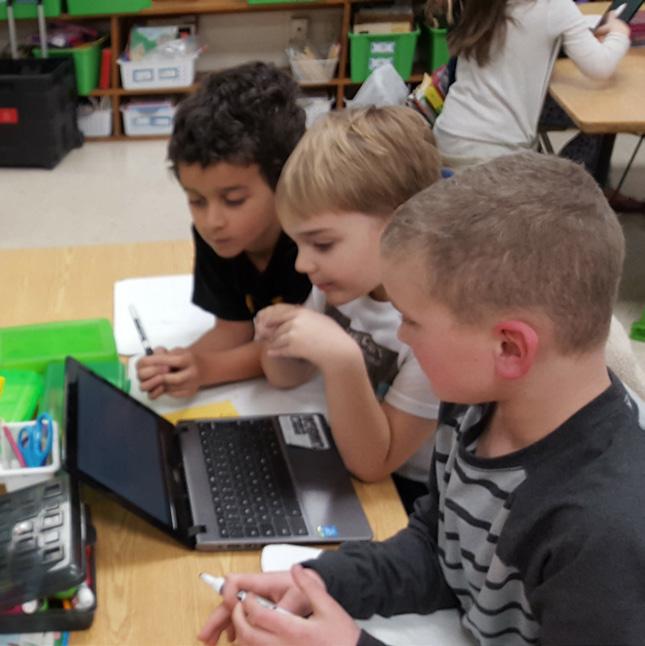
students can take the charged battery pack, plug it into their computer and continue working at their desk,” Sterckx says.
It may not seem like a huge difference to many, but the difference that this modernised charging system has had on learning and accessibility is invaluable.
This solution, although it may seem like a simple fix in the modern technology landscape, has revolutionised the way that students work and has saved students important study time they would otherwise lose moving around school.
Sterckx preaches the fact that more intuitive and compact digital solutions create a better learning experience.
“At our elementary levels, charging carts were replaced with charging stations that have dramatically reduced their footprint. They are a lot smaller and have created more space for different learning activities throughout the classroom.”
As GBAPS looks to the future for both its students and the wider state, technology will be embedded further into school practices and open more doors for learning and adapting to the digital landscape. Sterckx states that the organisation strives for more
of a routine, making sure that devices are up to date and all equipment is in use and functioning as it should be at regular intervals.
“I believe COVID-19 has opened our eyes up to opportunities that we may not have seen three or four years ago,” says Sterckx as she talks more about the future of the Green Bay area, which is full of opportunities that were unforeseen prior to digital transformation. New and emerging technologies will soon become embedded into the schools’ daily practices and openness to available solutions could future-proof education.
“I think we're going to continue to see an expansion of the use of virtual reality and augmented reality to explore learning topics that maybe, traditionally, couldn't have been experienced within the four walls of the classroom,” says Sterckx.
“We’re really taking this as an opportunity to put our students at the centre of learning with our teachers as guides on the side to meet the needs and the desires of the students in their classroom.”
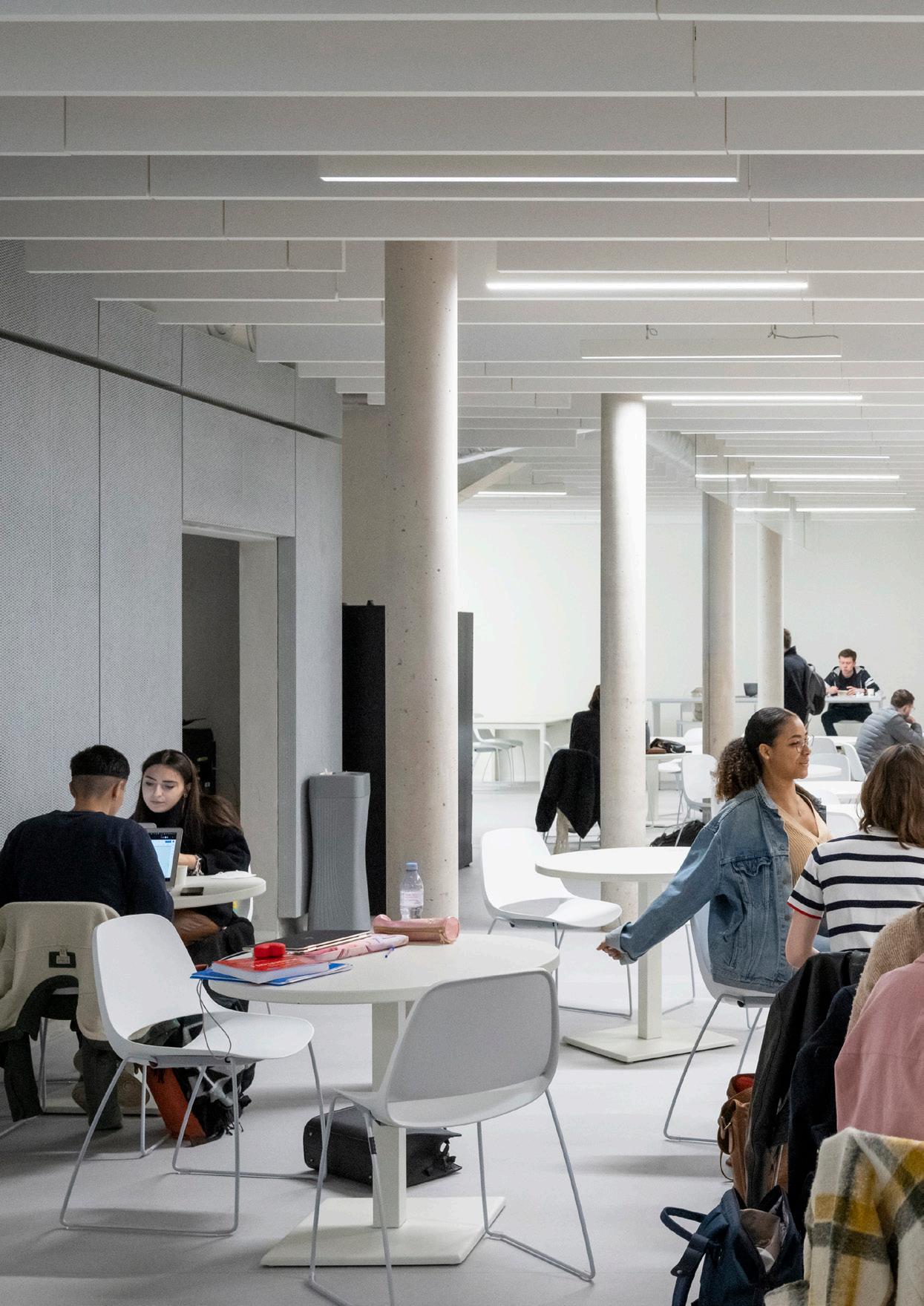
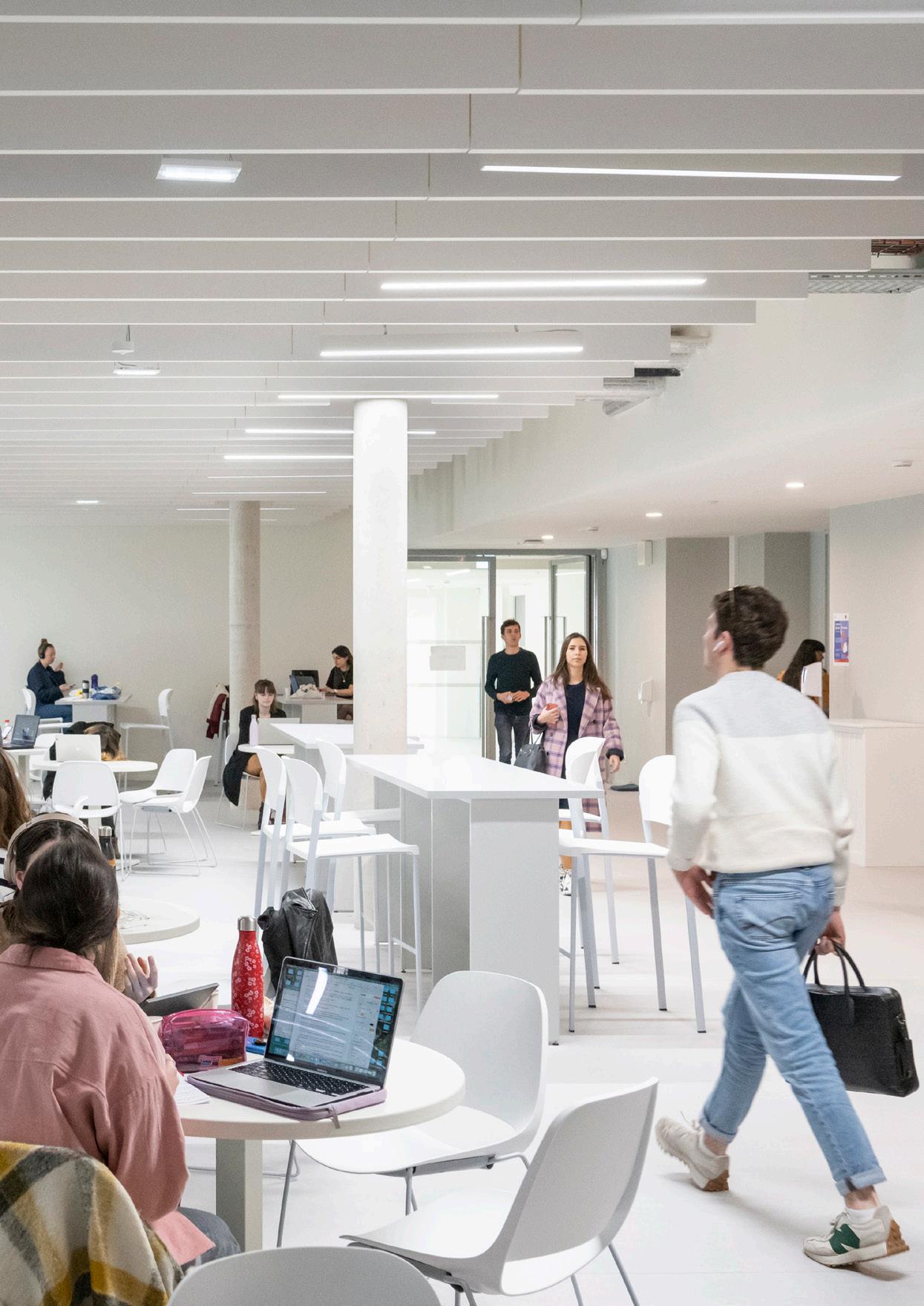 PRODUCED BY: BEN MALTBY
PRODUCED BY: BEN MALTBY
On Wednesday 11 May 2022, Ukrainian President Volodymyr Zelensky conversed for more than an hour with several hundred students, including many from Sciences Po University. Across France, dozens of auditoriums were opened and tens of thousands of people were able to follow, in person or online, this unprecedented exchange.
“Today is the seventy-seventh day of the large-scale war against Russia, which began in the seventy-seventh year after the end of the largest war in Europe,” began President Zelensky, live from Kyiv. Rather than a prepared speech, he wished to ask questions to the students “to have a real dialogue”.
This level of discourse, plugged into the major and pressing political issues of the planet, is standard practice for Sciences Po, a world-class research university based in Paris. Its reputation has been – and continues to be – built on an international dimension since its formation in 1872, with 150 nationalities represented and 49% of students coming from outside France.
Sciences Po gets its name from ‘political science’ and is part of the social sciences, itself emerging from the term that was formerly used to refer to the field of sociology, the original "science of society", established in the 19th century.


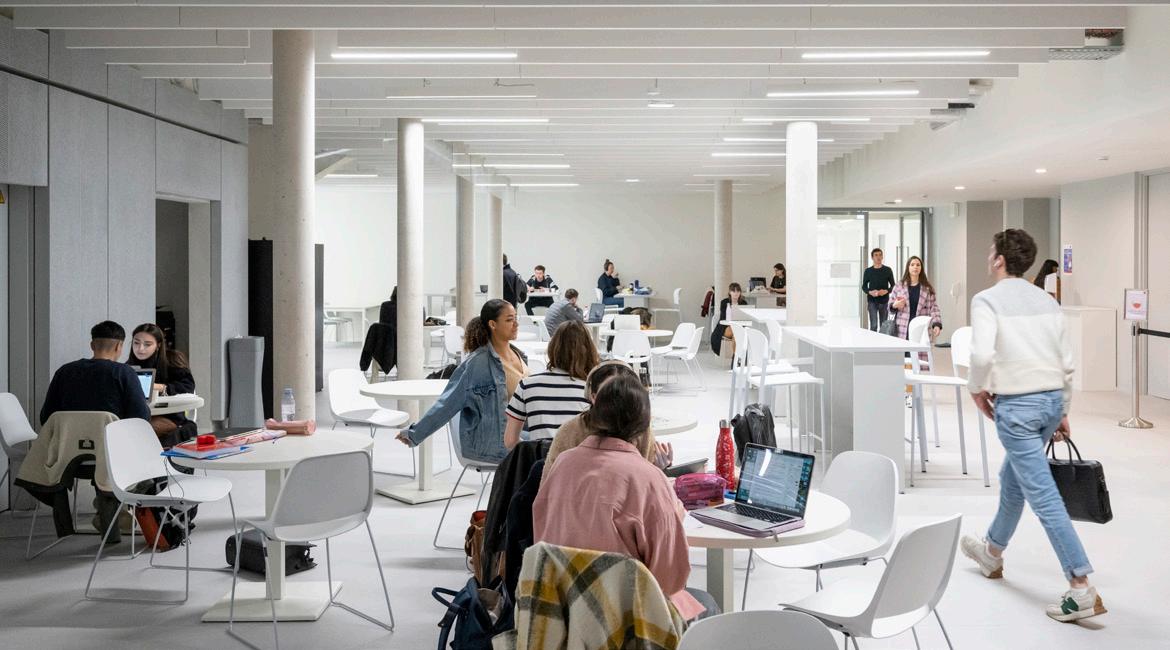 JEAN-PIERRE BERTHET CHIEF DIGITAL OFFICER, SCIENCES PO
JEAN-PIERRE BERTHET CHIEF DIGITAL OFFICER, SCIENCES PO
Students from 480 global partner universities can study at one of Sciences Po's seven campuses as part of an exchange programme, with students fully integrated into the wider student body.
Jean-Pierre Berthet is Chief Digital Officer for the Institute for Skills and Innovation of Sciences Po and his responsibility is to deliver the best teaching and learning
experience for students and teachers. Originally from an engineering background, Jean-Pierre Berthet joined the institute five years ago following his role as counsellor for pedagogy and technology in the Ministry of Higher Education.
Working in tandem with Jean-Pierre Berthet is Stéphane Auzanneau , Chief Information and Digital Officer and Executive Commitee member. Stéphane Auzanneau is also responsible for driving the digital campus of CIVICA, the European University of Social Sciences, uniting eight leading European higher education institutions. A Director since 2007, he has led the adoption of a digital campus for the entire school. Working closely with Berthet, he implements global digital services and has worked at Sciences Po for nearly 23 years. Prior to this, he was Sciences Po's Dean of Students & Registrar.

TITLE: CHIEF DIGITAL OFFICER
INDUSTRY: EDUCATION MANAGEMENT
LOCATION: PARIS
Jean-Pierre Berthet is Chief Digital officer in the Institute for Skills and Innovation of Sciences Po. He was counsellor in digital pedagogy for the French Ministry for Higher Education and co-founder of the Learning Lab Network's aims to imagine the future of learning spaces.
Between 2012 and 2018, he was Chief Digital Officer at Ecole Centrale de Lyon and Director of the LearningLab founded with EMLyon Business School. Before 2012, he was CIO and Associate Professor at Ecole Centrale de Lyon, after having worked in distance learning for vocational training.
He is member of the Expert Advisory Board for the Horizon reports published by Educause.
To provide the best teaching and learning experience, Sciences Po values pedagogy, technology, and spaces. Innovation through technology is vital to pedagogy and how to change the way people teach and learn. In terms of digital transformation, this also includes the enhancement of physical spaces on campus as well as virtual spaces when using digital services.
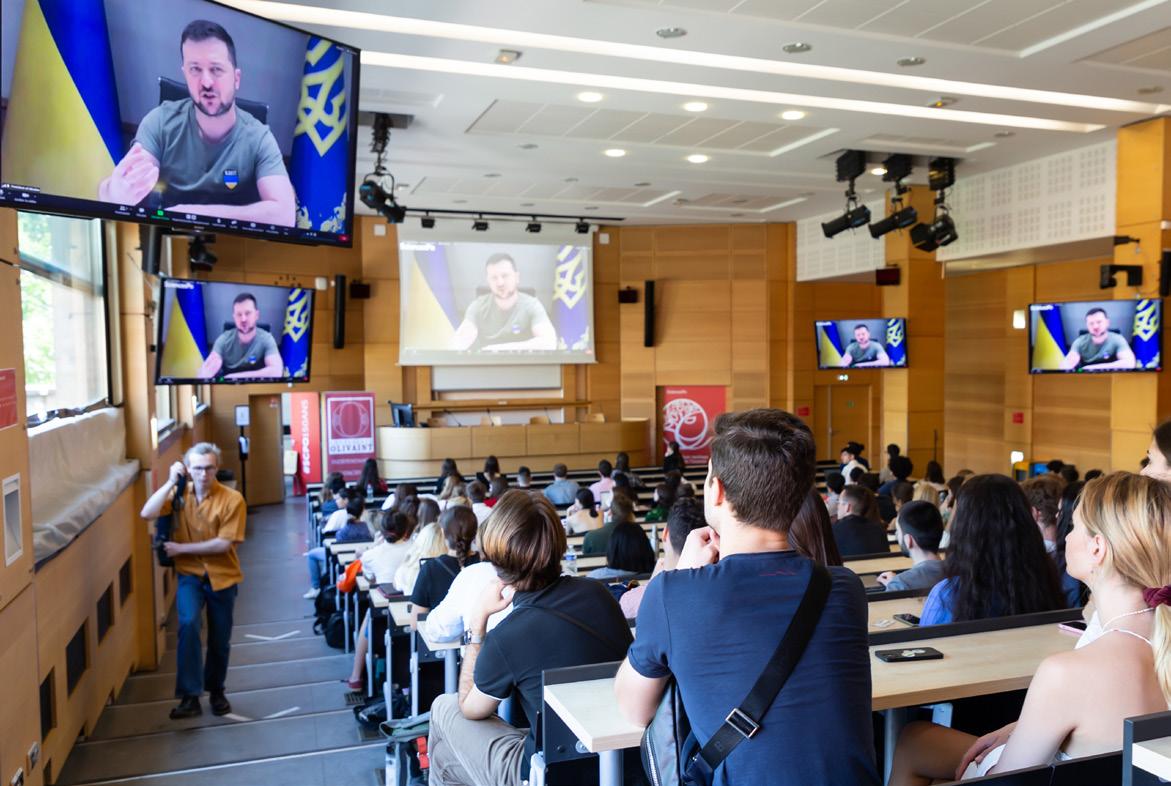
“When we implemented the very first digital services, the aim was to make them as simple and efficient as possible, at the highest quality and level of support we can offer,” says Auzanneau.
This is particularly crucial with so many international students, where it is critical to have simple tools that are very user-friendly.
Auzanneau adds that their strategy is “making technology invisible” to seamlessly integrate digital services into the ecosystem in sync with the “general habits people are used to”.
“The interaction between digital spaces and physical spaces is really key when we welcome our student faculty or onboard in our campuses. It must correspond with what we promote from a digital point of view, because users will switch very quickly from one side to the other.”
In addition to this synchronisation of pedagogy and technology, Berthet adds that the other game they must play is like chess, where they must “see the future coming”.
To ensure they are able to innovate with the best technology, research and development
is needed to check the latest software and hardware, and to improve the flow of information within the ecosystem: “We need to evaluate these different points and make proof of concepts with teachers,” adds Berthet.
Citing the pandemic with the COVID crisis, Berthet states that Sciences Po was “able to put all of [its] courses online in one week”, but that “was just because myself, Stéphane and our teams were preparing this ecosystem for more than a year”.
The other mission is to share experience not just between the people inside SCPO, but also outside with other universities all around the world.
“For instance, we've got an international workshop in mid-June, where we have invited colleagues from the United States, Singapore,
England, Switzerland and more so we can share our experience and hear about the challenges of others,” says Berthet.
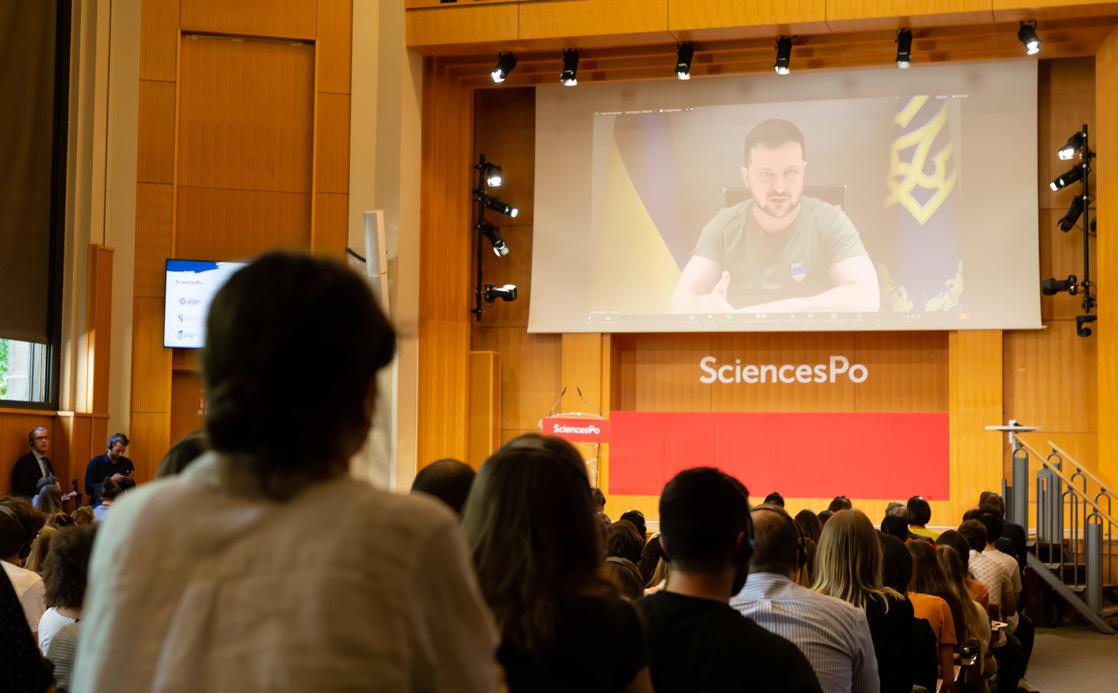
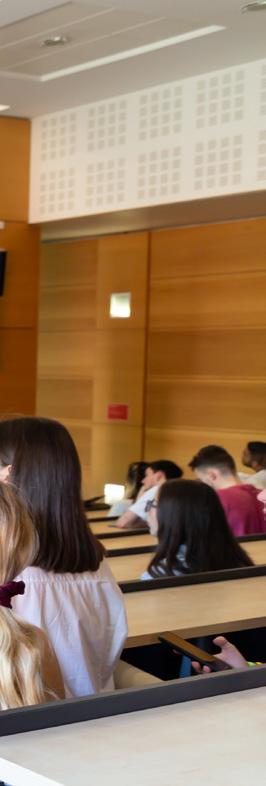
Crucial to the successful adoption and continuous growth of digital services in the SCPO technology programme is the implementation of dialogical platforms –which must be strong and reliable – and to retrieve information from the faculty, structuring it in a way that can be integrated efficiently.
“We are quite advanced in the services for students and also services around our library, but we need to make the origins of data coming from faculty more smooth and organised, in order to integrate them in our platforms.
60 minutes with Volodymyr Zelensky - live from Kyiv
At UbiCast, we have developed Nudgis, a private platform made for teachers to create interactive and impactful content in video format. Students engage with course material thanks to social learning features and information learned is easier to retain. Using our time-based annotations, teachers enrich the videos with quizzes, polls and other attachments while students are able to review what they have learned at their pace, whenever they want, wherever they are, on any device.
Since 2018, Sciences Po Paris has been using Nudgis to offer both lectures replays and short educational videos as well as Zoom sessions recordings to its 15,000 students.
Teachers have rapidly adopted Nudgis thanks to its deep integration with Sciences Po’s LMS. They can create, edit and enrich their interactive videos directly from the same e-learning platform.
Students interact with their peers and teachers to improve their understanding. They are able to learn on their own schedule and spend quality time reviewing the videos to better prepare for exams.
The Nudgis video platform is a vital tool for any university looking to make a greater impact on learners: it’s smart, easy and the best way to engage with Gen Z!

"UbiCast’ solutions are perfect for teachers looking to start in content creation: they are easy to use and do not require any particular skill"
Jean-Pierre Berthet Chief Digital Officer at Sciences Po Paris
“That’s why we co-design activities with our colleagues around the faculty, not only in the courses we offer services to students, but we have also to take into account the human resources services and the financial services, which are not always designed for a higher institution,” says Auzanneau.
Berthet adds that SCPO “works with large companies like Google, Panasonic, Promethean, Ellucian and Zoom, as well as specialised Edtechs like Ubicast, Wooclap, Whaller and Appscho and with open source components”.
“For instance, our learning management system is open source. We work with the
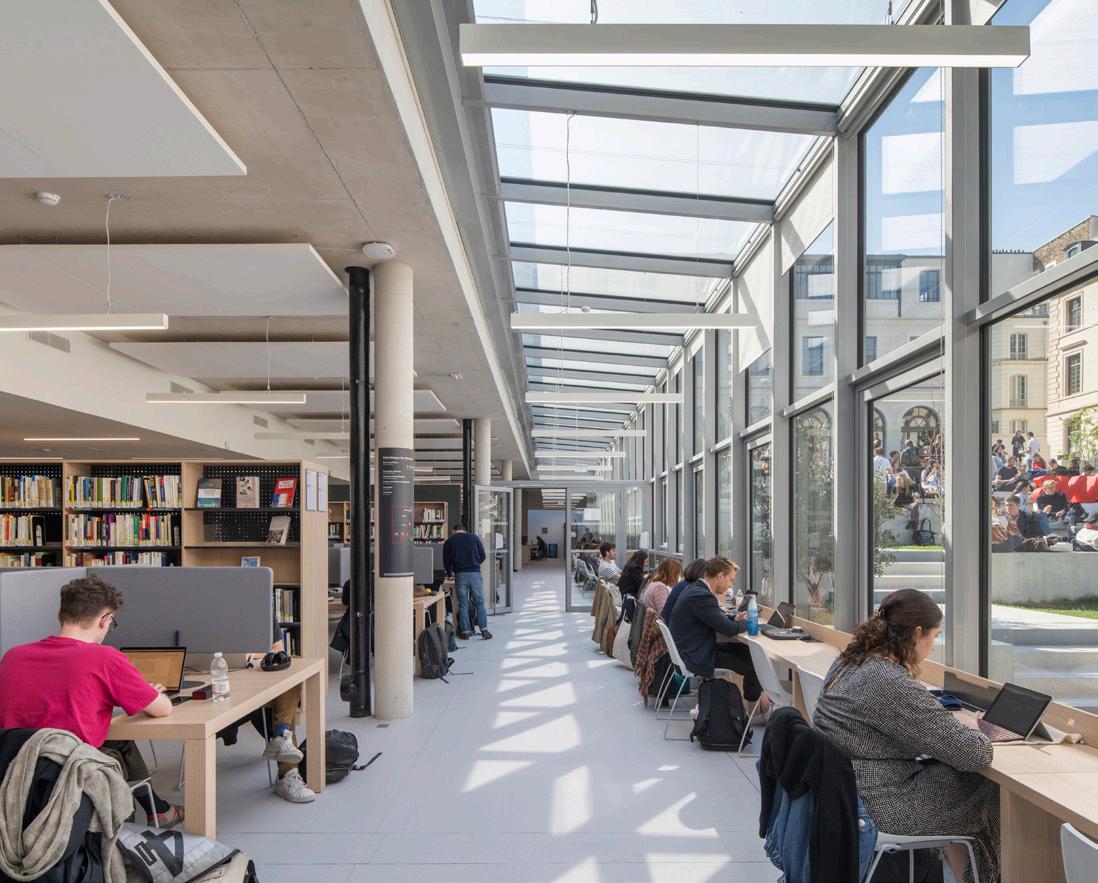
likes of Ubicast too, utilising their specialised video solutions for education directly inside our LMS. It’s very important to have a good mix between all these different partners,” he explains.
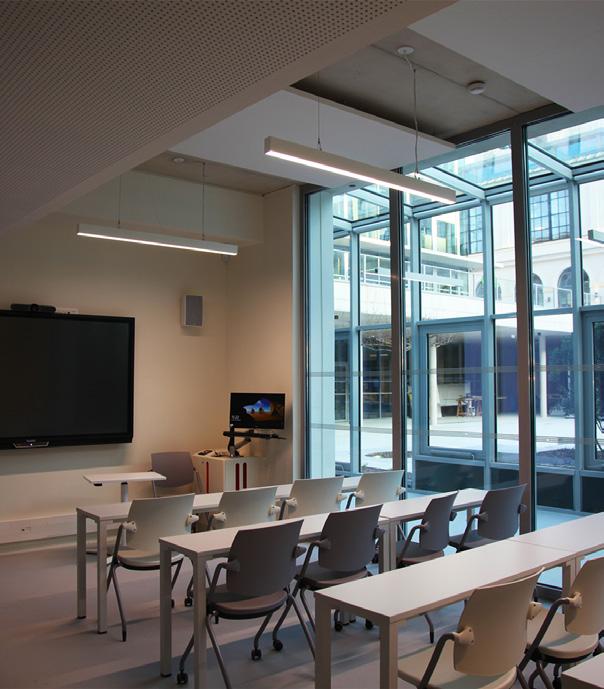
In a community that still cherishes physical books, there is an ongoing transition between digital textbooks, interactive video, and collaboration inside books, such as the capacity of students to annotate themselves and share the annotations with other students, and the capacity as well for teachers to assign activities to students in parts of the book.
“We enhance the experience of the learner, so they’re not just watching video, but interacting with it. And, with digital textbooks, technology gives students the ability to print certain sections or articles quickly and easily,” says Berthet.
It’s also a question of devices the students use and adjusting the reading experience to tablets rather than desktop, for instance.
Auzanneau adds: “We offer a printing service that the students and faculty still use very widely. Before the pandemic, we were printing about 10 million pages of A4. And now halfway through the year, we are at 5 million. So it's still very important.”
“We need a combination between going digital and having the possibility to use paper


Campus 2022 rethinks all of Sciences Po’s sites in Paris, ascribing different educational functions depending on the students' education pathway. The campus is streamlined over four sites around the historic building, situated at 27 Rue Saint-Guillaume and 1, Saint-Thomas.

Saint-Germain North
The buildings at 28, rue des SaintsPères, 13, rue de l’Université and 1, Saint-Thomas will be home to the graduate schools, research, the incubator and new learning spaces and formats in general.
Saint-Germain South
The buildings at 27, rue SaintGuillaume, 56, rue des Saints-Pères,
30, rue Saint-Guillaume and 9, rue de la Chaise will accommodate the Undergraduate College, executive education and Sciences Po’s iconic lecture theatres.
CHIEF INFORMATION AND DIGITAL OFFICER, SCIENCES PO
and write things, because the way of thinking and the way the brain works depends very much on this very pragmatic and practical interaction one has with staff, academic papers, textbooks and surfaces in the digital and virtual spaces. So I think it's still very difficult to say in which direction it'll go in future, because even amongst very young students, digital natives, they may still use books.”
Berthet adds another example, citing having “3, 4, 5 digital books on the screen at the same time is different to using five textbooks at once. It's also a question of the moment you’re using them”.
Physical spaces enriched by digital experiences To celebrate their 150th anniversary , Sciences Po enlisted a top architect to design a new campus in the centre of Paris.
“We can gather all our research departments in the same place, whereas

TITLE: CHIEF INFORMATION AND DIGITAL OFFICER
INDUSTRY: EDUCATION MANAGEMENT
LOCATION: PARIS
Stéphane Auzanneau has been Chief Information & Digital Officer for Sciences Po since September 2007. From July 2003 to August 2007, he was Registrar & Dean of students. From 2000 to 2003, as digital campus manager, he implemented the new Student Information System Banner (from Ellucian): it allowed Sciences Po to put in place the new European Higher education scheme (see Bologna Process and European Credit Transfer System), being first in 2000, and in Europe, to adopt this new system of education. Before 2000, he was Director of the International Undergraduate Program of Sciences Po. He was lecturer in Economics from 2000 to 2016 and also member of the AERES’s experts’ team in 2014 on digital questions (the French Evaluation Agency for Research and Higher Education, that became in 2014 the High Council for Evaluation of Research and Higher Education - HCERES).
before that, we had more than 20 locations in Paris and it was difficult for them to meet to work together, but also to live together. Now, researchers, teachers, students, and staff can live and work together,” says Berthet.
In the Sciences Po classroom, there are digital opportunities to work with different kinds of tools such as big interactive displays and to write things on the walls.
“The new campus is very special. It is one of the most attractive campuses in Western Europe and combines history and technology. We try to provide the best equipment such as a TV studio and a radio studio for our school of journalism, a video recording studio, an innovation

building, a research library and more. And all standardised across the different installations so technology functions across lecture rooms,” says Berthet.
Based on a living lab created four years ago, the ecosystem is fine-tuned and based on a charter to ensure everything is run sustainably.
“To have double degrees with many universities all over the world is very important. We also have a fantastic network in terms of alumni – over 90,000 of them. Some of them are Presidents or former Presidents, ministers of different states, or they're also working in prestigious organisations as well,” says Berthet.
Social sciences offer many different career paths for when students embark on post-graduate life. These include academia, but also public sectors, private sectors, and international roles, such as working in European institutions.

“We have a very good career support team for students,” says Berthet.
“We have nine job fairs every year and plenty of preparation workshops, numbering around 200. Then more than 10,000 internships. We also have seven specialised schools with strong relations with institutions and companies.
Auzanneau adds that “big French or international banks” are frequent destinations, as well as the French administration or
European institutions, NGOs, journalistic roles and, as part of the European Union, workforces around Europe, who take on students after their studies.
A truly international University
Berthet is keen to mention that the university is committed to removing barriers to higher education, explaining: “Access to university is really in the DNA of SCPO, and it started 20 years ago with one of our former directors, Richard Descoings. We have a specific programme, the Equal Opportunity Programme, and we're working with 166 high schools over France and overseas, helping the students with their preparation for higher education and to come to SCPO.
The objective is to have 200 partners in high schools to cover all the French territory.
“It’s very interesting to work with these students. They're really amazing. We are spending around €11 million each year for diversity, scholarship and financial aid to students; 35% of them don't pay any student fees. We also have specific programmes for student refugees, such as those coming from Ukraine at the moment.
Berthet adds that it is important to prepare “future managers that are representative of as many societies as possible”. Why? Because “talent is everywhere, and our job is to help find them and to help them to transfer into higher education”.
Auzanneau concludes: “I say to all prospective students: if you have the talent and you have the will, we will do everything possible to support you. Our system is adapted to the income of families throughout Europe.”
It is a very selective process however, with standards high. Technology aids their search for the best talent, with admission interviews held not only in Paris, but also in several cities across Europe and the Americas as well.
“We put all these admission interviews online, and it represented 4,500 in two months.
“It worked perfectly for students who are all over the world to have the possibility to interview with two different examiners from their home or their high school, for instance. We can remove the stress of going to a specific place, via a plane or train or hotel, and then to a specific building for that. The interviews are more comfortable for them,” says Berthet.
In terms of social inclusiveness, Auzanneau says: “I'm very proud of this new system we implemented last year, because it is an example of digital services increasing student confidence in order not to self-censor themselves.”
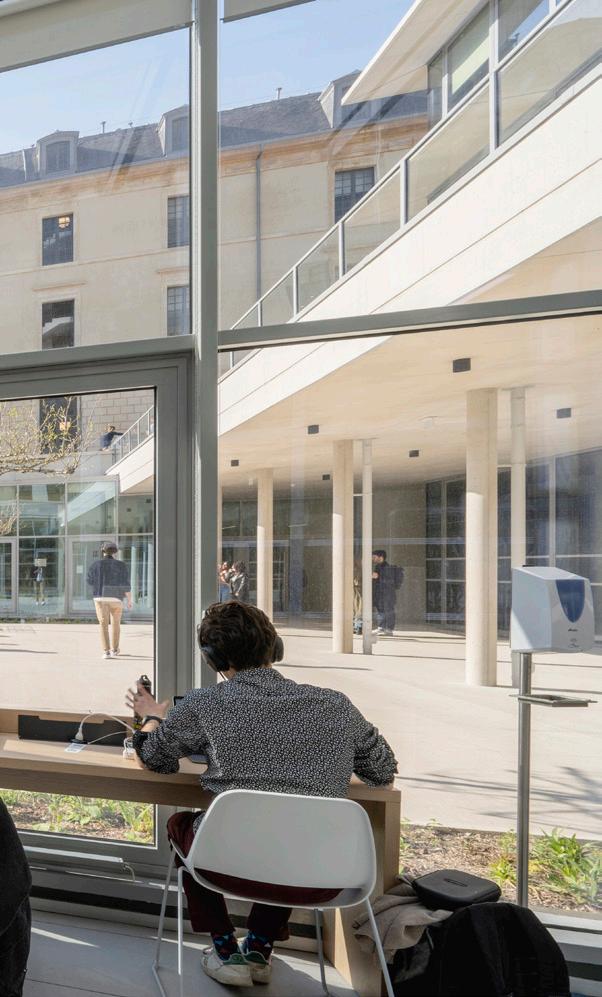
According to Berthet, “it's very simple for examiners to use it”. “Our digital services are simple and easy to use, helping people all over the world, without any problem. This is what we mean by making technology invisible.”
“What is our next challenge? To combine digital and sustainability transformations, not only inside our courses to prepare our students for these crucial challenges, but also at the heart of our daily practices.”
